FEATURING 258 Industry-First Reviews of Fiction, Nonfiction, Children’s, and YA Books



FEATURING 258 Industry-First Reviews of Fiction, Nonfiction, Children’s, and YA Books


The Best 100 Fiction and Best 100 Nonfiction Books of the Year + Our Full Nov. 15 Issue




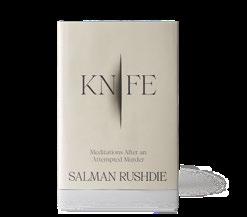
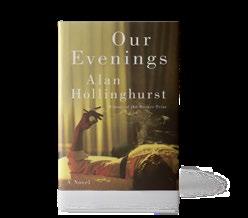
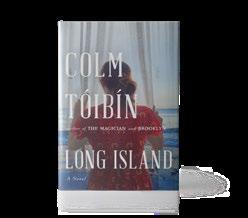
FROM THE EDITOR’S DESK
IN THIS WORLD, to paraphrase Benjamin Franklin, nothing is certain except death and taxes… and the advent of best books lists as the year draws to a close. These days everybody’s got one—be they celebrities, politicians, or social media influencers—and said lists are shared and discussed endlessly on Instagram, TikTok, YouTube, and X. Having been in the book review business for nine decades, we at Kirkus Reviews are sort of OG when it comes to year-end list-making. And, as befits a magazine that reviews nearly 10,000 titles annually, we say: Go big or go home. We stretch the celebration out over six weeks across three issues featuring some 600 titles,
spotlighting major bestsellers and award-winners as well as hidden gems and rarities. Our best books lists have something for everyone, quite literally.
We kick off the party in this issue, dedicated to the best fiction and nonfiction of 2024 (see pp. 5 and 53, respectively). Editors Laurie Muchnick and John McMurtrie combed through the year’s reviews and conferred with our reviewers to come up with the titles that are truly the literary crème de la crème. And because we wanted to know more about some of our favorite titles, we emailed the authors to ask what inspired them and solicit their own favorite books of the year. Look for interviews with Christina Hwang Dudley (Pride and Preston Lin),
Frequently Asked Questions: www.kirkusreviews.com/about/faq
Fully Booked Podcast: www.kirkusreviews.com/podcast/
Advertising Opportunities: www.kirkusreviews.com/book-marketing
Submission Guidelines: www.kirkusreviews.com/about/publisher-submission-guidelines
Subscriptions: www.kirkusreviews.com/magazine/subscription
Newsletters: www.kirkusreviews.com
For customer service or subscription questions, please call 1-800-316-9361
Joseph Earl Thomas (God Bless You, Otis Spunkmeyer), Chris Whitaker ( All the Colors of the Dark), Lucy Sante (I Heard Her Call My Name), Hanif Abdurraqib (There’s Always This Year), and Rebecca Nagle (By the Fire We Carry) in the pages that follow.
That’s just the opening act. In the Dec. 1 issue, we’ll unveil our lists of the best children’s and teen books, comprising 100 picture books, 100 middlegrade books, and 100 YA books. Look, too, for interviews with some of the authors and illustrators who created those works, including Lesléa Newman, Ruth Chan, and Hafsah Faizal, among others. Also in the Dec. 1 issue, we bring back our holiday gift guide, a special supplement featuring books you’ll want to give to everybody on your list this season. Included here are cookbooks, art and photo books, and other categories Kirkus doesn’t ordinarily review.
Finally, we’ll close out the coverage with our list of the
100 best indie books in the Dec. 15 issue. Here’s where we highlight the top self-published and independently released works in all genres that Kirkus Indie reviewed over the past 12 months. We’ll also hear from some of the authors and learn how they made their literary dreams a reality. In the same issue, our editors and contributors will call out their favorite audiobooks and book-toscreen adaptations, we’ll recap the most memorable book news of 2024, and we’ll remember the authors we lost this year.
Sure, it’s fun to scroll through BookTok videos, but you won’t find the depth of coverage you’ll find here. After all, we’ve been reviewing books for 91 years now, and as we close this year out, we’re already looking ahead to our 92nd year. It’s time to start reading.




Co-Chairman
HERBERT SIMON
Publisher & CEO
MEG LABORDE KUEHN mkuehn@kirkus.com
Chief Marketing Officer
SARAH KALINA skalina@kirkus.com
Publisher Advertising & Promotions
RACHEL WEASE rwease@kirkus.com
Indie Advertising & Promotions
AMY BAIRD abaird@kirkus.com
Author Consultant
RY PICKARD rpickard@kirkus.com
Lead Designer KY NOVAK knovak@kirkus.com
Magazine Compositor
NIKKI RICHARDSON nrichardson@kirkus.com
Kirkus Editorial Senior Production Editor
ROBIN O’DELL rodell@kirkus.com
Kirkus Editorial Senior Production Editor
MARINNA CASTILLEJA mcastilleja@kirkus.com
Kirkus Editorial Production Editor
ASHLEY LITTLE alittle@kirkus.com
Copy Editors
ELIZABETH J. ASBORNO
LORENA CAMPES
NANCY MANDEL
MICHAEL SANDLIN
BILL SIEVER
Contributing Writers
GREGORY MCNAMEE
MICHAEL SCHAUB
Co-Chairman
MARC WINKELMAN
Editor-in-Chief TOM BEER tbeer@kirkus.com
President of Kirkus Indie
CHAYA SCHECHNER cschechner@kirkus.com
Fiction Editor
LAURIE MUCHNICK lmuchnick@kirkus.com
Nonfiction Editor JOHN McMURTRIE jmcmurtrie@kirkus.com
Young Readers’ Editor
LAURA SIMEON lsimeon@kirkus.com
Young Readers’ Editor
MAHNAZ DAR mdar@kirkus.com
Editor at Large
MEGAN LABRISE mlabrise@kirkus.com
Senior Indie Editor DAVID RAPP drapp@kirkus.com
Indie Editor
ARTHUR SMITH asmith@kirkus.com
Editorial Assistant
NINA PALATTELLA npalattella@kirkus.com
Indie Editorial Assistant
DAN NOLAN dnolan@kirkus.com
Indie Editorial Assistant SASHA CARNEY scarney@kirkus.com
Mysteries Editor
THOMAS LEITCH

Nada Abdelrahim, Colleen Abel, Mahasin Aleem, Autumn Allen, Stephanie Anderson, Kent Armstrong, Mark Athitakis, Colette Bancroft, Audrey Barbakoff, Robert Beauregard, Thomas Beheler, Ty Billman, Elizabeth Bird, Rhea Borja, Melissa Brinn, Jessica Hoptay Brown, Kevin Canfield, Charles Cassady, Ann Childs, Amanda Chuong, Anastasia M. Collins, Rachael Conrad, Adeisa Cooper, Jeannie Coutant, Kim Dare, Maya Davis, Sara Davis, Michael Deagler, Cathy DeCampli, Dave DeChristopher, Elise DeGuiseppi, Amanda Diehl, Steve Donoghue, Jacob Edwards, Gina Elbert, Lisa Elliott, Ilana Bensussen Epstein, Joshua Farrington, Eiyana Favers, Rodney Fierce, Katie Flanagan, Richard Ford, Amy Seto Forrester, Mia Franz, Jenna Friebel, Jackie Friedland, Roberto Friedman, Nivair H. Gabriel, Laurel Gardner, Jean Gazis, Fiona Giles, Carol Goldman, Danielle Galván Gomez, Christine Gross-Loh, Tobi Haberstroh, Geoff Hamilton, Sean Hammer, Peter Heck, Zoe Holland, Katrina Niidas Holm, Kathleen T. Isaacs, Kristen Jacobson, Wesley Jacques, Danielle Jones, Betsy Judkins, Jayashree Kamblé, Maya Kassutto, Ivan Kenneally, Colleen King, Stephanie Klose, Lyneea Kmail, Maggie Knapp, Andrea Kreidler, Megan Dowd Lambert, Carly Lane, Christopher Lassen, Tom Lavoie, Donald Liebenson, Maureen Liebenson, Elsbeth Lindner, Coeur de Lion, Sarah Lohmann, Barbara London, Patricia Lothrop, Georgia Lowe, Leanne Ly, Joan Malewitz, Collin Marchiando, Gabriela Martins, Matthew May, J. Alejandro Mazariegos, Carol Memmott, J. Elizabeth Mills, Tara Mokhtari, Sabrina Montenigro, Rebecca Moore, Andrea Moran, Rhett Morgan, Jennifer Nabers, Christopher Navratil, Liza Nelson, Mike Newirth, Therese Purcell Nielsen, Mike Oppenheim, Emilia Packard, Derek Parker, Deb Paulson, John Edward Peters, Jim Piechota, Christofer Pierson, William E. Pike, Margaret Quamme, Judy Quinn, Kristy Raffensberger, Kristen Rasmussen, Matt Rauscher, Darryn Reams, Amy Reiter, Lizzie Rogers, Lloyd Sachs, Bob Sanchez, Caitlin Savage, E.F. Schraeder, Leah Silvieus, Linda Simon, Julia Sirmons, Margot E. Spangenberg, Mo Springer, Allison Staley, Mathangi Subramanian, Jennifer Sweeney, Deborah Taylor, Desiree Thomas, Lenora Todaro, Francesca Vultaggio, Erica Weidner, Audrey Weinbrecht, Sam Wilcox, Angela Wiley, Kerry Winfrey, Marion Winik, Bean Yogi, Jean-Louise Zancanella


AWARD-WINNING PR FOR AUTHORS & PUBLISHERS MEDIA
TRADITIONAL AND ONLINE
CONTENT, INFLUENCER CAMPAIGNS & ADS
IN-PERSON AND HYBRID LIVESTREAMS
TRAILERS AND AUTHOR VIDEOS
DEVELOPMENT AND MANAGEMENT
“WILDBOUND TOOK THE NATIONAL BOOK CRITICS CIRCLE AWARDS TEAM FROM VIRTUAL PRODUCTION NEWBIES TO A SUPERB VIRTUAL AWARDS EVENT. WE'LL ALWAYS BE GRATEFUL TO OUR WILDBOUND ANGELS.”
JANE CIABATTARI, PRESIDENT OF NATIONAL BOOK CRITICS CIRCLE
“HOW CAN YOU CUT THROUGH THE NOISE OF THE CULTURE AND GET ATTENTION FOR DESERVING WORK? HIRE WILDBOUND, FOR STARTERS. THEY’VE GOT A LOT OF ARROWS IN THEIR QUIVER AND THEIR AIM IS TRUE.”
STEVE WASSERMAN, PUBLISHER OF HEYDAY
“WORKING WITH WILDBOUND IS A DREAM! THEY’VE TAKEN OUR BOOK FESTIVAL TO NEW HEIGHTS THROUGH EXTENSIVE PRESS COVERAGE AND LEADING EDGE
SOCIAL MEDIA STRATEGIES, NOT TO MENTION SNAZZY VIDEO PRODUCTION.”
CHERILYN PARSONS, FOUNDER OF BAY AREA BOOK FESTIVAL

Kirkus presents the outstanding fiction of the year, featuring books from across the genres and around the world. There’s romance at the summer Olympics, a family saga ranging from Long Island to Hollywood, and the story of time-travelers in almost-contemporary London. There are books set in Miami, a Philadelphia hospital, and on Mexico’s Great Plain. Lots of bad things seem to happen in upstate New York. Whatever kind of books you favor, there’s something here for you.





Akbar, Kaveh | Knopf (352 pp.)
$28.00 | Jan. 23, 2024 | 9780593537619
Imperfect, yes, but intense, original, and smart.
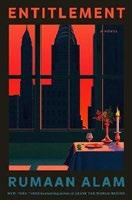
Azzam, Fadi | Trans. by Ghada Alatrash Interlink (320 pp.) | $18.00 paper
March 19, 2024 | 9781623711153
A landmark work of contemporary Arabic literature, at once allusive and defiant.
Bardugo, Leigh | Flatiron Books (400 pp.)
$26.99 | April 9, 2024 | 9781250884251
Lush, gorgeous, precise language and propulsive plotting sweep readers into a story as intelligent as it is atmospheric.
Beams, Clare | Doubleday (304 pp.)
$28.00 | April 9, 2024 | 9780385548182
Like an overgrown garden—untamable, lush, and wild in ways lovely and terrifying.



Bradley, Kaliane | Avid Reader Press (352 pp.) | $28.00
May 7, 2024 | 9781668045145
This rip-roaring romp pivots between past and present and posits the future-altering power of love, hope, and forgiveness.
Alam, Rumaan | Riverhead (288 pp.)
$30.00 | Sept. 17, 2024 | 9780593718469
Cements Alam’s status as a talented truth-teller willing to tackle tough issues with grace, generosity, and sensitivity.
Bacigalupi, Paolo | Knopf (576 pp.)
$30.00 | July 9, 2024 | 9780593535059
Sharp enough to draw blood.
Barker, Pat | Doubleday (288 pp.)
$29.00 | Dec. 3, 2024 | 9780385549110
More brilliant work from one of world literature’s greatest writers.
Bertino, Marie-Helene | Farrar, Straus and Giroux (336 pp.) | $28.00
Jan. 16, 2024 | 9780374109288
A heartbreaking book that staggers with both truth and beauty.

Brennan, Sarah Rees | Orbit (432 pp.) | $19.99 paper
July 30, 2024 | 9780316568715
Absolutely wonderful.

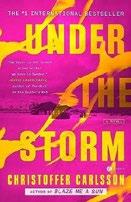



Brodesser-Akner, Taffy | Random House (464 pp.) | $30.00
July 9, 2024 | 9780593133491
A great American Jewish novel whose brew of hilarity, heartbreak, and smarts recalls the best of Philip Roth. A triumph.
Carlsson, Christoffer | Trans. by Rachel Willson-Broyles | Hogarth (416 pp.) | $19.00 paper | Feb. 27, 2024 | 9780593449387
A brilliantly woven, unsettling crime novel.
Clayborn, Kate | Kensington (384 pp.) | $16.95 paper
March 26, 2024 | 9781496737311
A moving odyssey of family, selfdiscovery, and love.
Corey, James S.A. | Orbit (432 pp.)
$27.00 | Aug. 6, 2024 | 9780316525572
The beginning of what could be Corey’s most epic—and enter taining—series yet. Simply mind-blowing.
Crucet, Jennine Capó | Simon & Schuster (304 pp.) | $27.99
March 5, 2024 | 9781668023327
Unclassifiable and unforgettable.

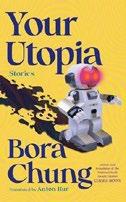



Bryant, Elise | Berkley (368 pp.) | $18.99 paper | July 9, 2024 | 9780593640784
A smart, funny novel that’s certain to make a splash.
Chung, Bora | Trans. by Anton Hur Algonquin (256 pp.) | $18.99 paper
Jan. 30, 2024 | 9781643756219
The imagined worlds here may not be utopian—but the reading experience is.
Condie, Ally | Grand Central Publishing (320 pp.) | $14.99
June 4, 2024 | 9781538757604
A gorgeous murder mystery that explores what it means to be human—the pain and the love.
Cotman, Elwin | Scribner (320 pp.) | $17.00 paper
April 16, 2024 | 9781668018859
Sharp, poignant, funny, and, above all, filled with the joy of invention—a must-read.
Crummey, Michael | Doubleday (336 pp.)
$29.00 | Feb. 6, 2024 | 9780385550321
An enthralling masterpiece.




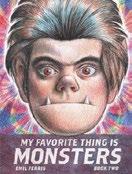
Cunningham, Vinson | Hogarth (272 pp.)
$27.00 | March 12, 2024 | 9780593448236
A top-shelf intellectual bildungsroman.
De la Rosa, Liana | Berkley (352 pp.) | $18.99 paper
June 4, 2024 | 9780593440902
A satisfying sequel in a great historical romance series.
Eddings, Mazey | St. Martin’s Griffin (400 pp.) | $17.99 paper
April 16, 2024 | 9781250847089
Opposites attract in this sweet Sapphic romance.
Erdrich, Louise | Harper/ HarperCollins (384 pp.) | $32.00 Oct. 1, 2024 | 9780063277052
In this tender and capacious story, love and tragedy mingle along the river and into the world.
Ferris, Emil | Fantagraphics Books (412 pp.) | $44.99 paper
May 28, 2024 | 9781683969273
Heartfelt horror and spectacular cartooning.





Davies, Carys | Scribner (208 pp.)
$24.00 | April 2, 2024 | 9781668030660
A deft and graceful yarn about language, love, and rebellion against the inhumane forces of history.
Dudley, Christina Hwang | Third State Books (320 pp.) | $17.95 paper
March 19, 2024 | 9798890130044
A contemporary spin on Jane Austen that combines the charm of the original with a new perspective.
Eisenberg, Emma Copley Hogarth (352 pp.) | $29.00
May 28, 2024 | 9780593242230
Emotionally rich and quietly thought-provoking, this is simply a stunning fiction debut.
Everett, Percival | Doubleday (320 pp.)
$28.00 | March 19, 2024 | 9780385550369
One of the noblest characters in American literature gets a novel worthy of him.
Geni, Abby | Counterpoint (304 pp.)
$27.00 | May 7, 2024 | 9781640096264
Destabilizing and beautiful. A rich experience.
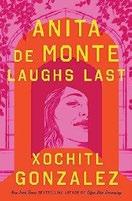
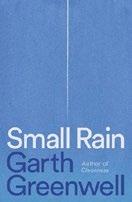



Gonzalez, Xochitl | Flatiron
Books (352 pp.) | $28.99
March 5, 2024 | 9781250786210
An uncompromising message, delivered via a gripping story with two engaging heroines.
Greenwell, Garth | Farrar, Straus and Giroux (320 pp.) | $28.00 Sept. 3, 2024 | 9780374279547
Greenwell—such a finely tuned, generous writer—transforms a savage illness into a meditation on a vital life.
Hill, Edwin | Kensington (320 pp.)
$28.00 | Jan. 23, 2024 | 9781496742407
A devilishly clever delight.

Gråbøl, Fine | Trans. by Martin Aitken Archipelago (148 pp.) | $18.00 paper April 16, 2024 | 9781953861849
A welcome corrective to romanticized notions of mental illness, written with compassion and authenticity.


Horowitz, Anthony | Harper/ HarperCollins (384 pp.) | $27.00 April 16, 2024 | 9780063305649
Gloriously artificial, improbable, and ingenious. Fans of both versions of Horowitz will rejoice.
Kelley, William Melvin | Vintage (256 pp.)
$17.00 paper | Oct. 22, 2024 | 9780593469934
There’s cleverness and craft in abundance here. Also, wisdom and even warmth.


Grossman, Lev | Viking (688 pp.)
$35.00 | July 16, 2024 | 9780735224049
Astoundingly, a fresh take on an extremely well-trodden legend.
Hollinghurst, Alan | Random House (496 pp.) | $30.00 Oct. 8, 2024 | 9780593243060
Hollinghurst continues to amaze and delight, hitting both the most delicate grace notes and portentous chords perfectly.
July, Miranda | Riverhead (336 pp.)
$29.00 | May 14, 2024 | 9780593190265
This tender, strange treatise on getting out from the “prefab structures” of a conventional life is quintessentially July.
Khong, Rachel | Knopf (416 pp.)
$29.00 | April 30, 2024 | 9780593537251
Bold, thoughtful, and delicate at once, addressing life’s biggest questions through artfully crafted scenes and characters.





Khorram, Adib | Forever (368 pp.)
$28.00 | Aug. 27, 2024 | 9781538739525
A sensuous and immensely satisfying queer love story.

Kitasei, Yume | Flatiron Books (320 pp.)
$28.99 | June 11, 2024 | 9781250875372
Wondrous, new, and altogether alien.

Kunzru, Hari | Knopf (272 pp.) | $28.00 May 14, 2024 | 9780593801376
A dark, smart, provocative tale of the perils of art making.

Lange, Richard | Mulholland Books/ Little, Brown (272 pp.) | $29.00 June 25, 2024 | 9780316568470
The latest novel by a first-rate storyteller refusing to be pigeonholed.
Locke, Attica | Mulholland Books/ Little, Brown (320 pp.) | $29.00
Sept. 3, 2024 | 9780316494618
Series: Darren Mathews, 3
We’ve missed Attica Locke’s deft and wise way with the crime novel. We want more.
King, Stephen | Scribner (512 pp.)
$30.00 | May 21, 2024 | 9781668037713
The disturbing stories in King’s latest collection will seep into your psyche and haunt you.
Krasznahorkai, László | Trans. by Ottilie Mulzet | New Directions (512 pp.) | $18.95 paper | Sept. 3, 2024 | 9780811231534
Brilliant, like all of Krasznahorkai’s books—and just as challenging, though well worth the effort required.
Kushner, Rachel | Scribner (416 pp.)
$29.99 | Sept. 3, 2024 | 9781982116521
A deft, brainy take on the espionage novel.
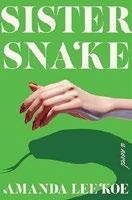

Lee Koe, Amanda | Ecco/ HarperCollins (272 pp.) | $28.00 Dec. 3, 2024 | 9780063355064
Slithers gleefully around hot-button issues such as gender politics and racism without a whiff of didacticism.
Long, Julie Anne | Avon/HarperCollins (368 pp.) | $9.99 paper | Oct. 22, 2024 9780063281172 | Series: Palace of Rogues
A keeper, fusing the beauties of historical romance with present-day ideas of individual happiness.





Lyons, Jenn | Tor (448 pp.) | $29.99
July 9, 2024 | 9781250342003
A soaringly good read.
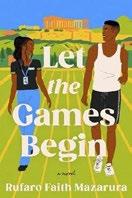
McFarlane, Fiona | Farrar, Straus and Giroux (272 pp.) | $27.00 Aug. 13, 2024 | 9780374606268
Addictively engaging, profoundly serious fiction from an underappreciated master.
Michaels, Anne | Knopf (240 pp.)
$27.00 | Jan. 30, 2024 | 9780593536865
A gorgeous meditation on whether the ghost in the machine is actually in our hearts.


Murakami, Haruki | Trans. by Philip Gabriel | Knopf (432 pp.) | $35.00 Nov. 19, 2024 | 9780593801970
Astonishing, puzzling, and hallucinatory as only Murakami can be, and one of his most satisfying tales.
Obioma, Chigozie | Hogarth (384 pp.)
$29.00 | June 4, 2024 | 9780593596975
A top-tier war novel, inventive and cleareyed about the consequences of violence.


Mazarura, Rufaro Faith | Flatiron Books (352 pp.) | $19.99 paper
July 9, 2024 | 9781250354532
A debut deserving of a gold medal.
Messud, Claire | Norton (448 pp.)
$29.99 | May 14, 2024 | 9780393635041
Brilliant and heart-wrenching; Messud is one of contemporary literature’s best.
Moore, Liz | Riverhead (496 pp.)
$30.00 | July 2, 2024 | 9780593418918
”Don’t go into the woods” takes on unsettling new meaning in Moore’s blend of domestic drama and crime novel.
Newman, Catherine | Harper/ HarperCollins (240 pp.) | $26.99 June 18, 2024 | 9780063345164
A moving, hilarious reminder that parenthood, just like life, means constant change.
Ogawa, Yoko | Trans. by Stephen Snyder | Pantheon (288 pp.) | $28.00 Aug. 13, 2024 | 9780593316085
A charming yet guileless exploration of childhood’s ephemeral pleasures and reflexive poignancy.



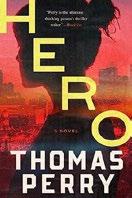

Oliver, Diane | Grove (272 pp.) | $27.00 Feb. 13, 2024 | 9780802161314
With a crystalline clarity and finely attuned ear, Oliver depicts her subjects with elegance and profound understanding.
Orange, Tommy | Knopf (336 pp.)
$29.00 | Feb. 27, 2024 | 9780593318256
A searing study of the consequences of a genocide.
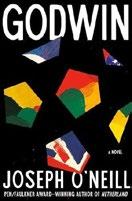

Pechaček, Jared | Tordotcom (384 pp.)
$28.99 | July 16, 2024 | 9781250884831
A curious, but curiously charming, allegory of a world in crisis.

Perry, Thomas | Mysterious Press (336 pp.)
$27.95 | Jan. 16, 2024 | 9781613164778
A cat-and-mouse tale done to a turn by a veteran who doesn’t waste a word or a tear.

Powers, Richard | Norton (400 pp.)
$29.99 | Sept. 24, 2024 | 9781324086031
An engaging, eloquent message for this fragile planet.

O’Neill, Joseph | Pantheon (288 pp.)
$28.00 | June 4, 2024 | 9780593701324
Another exceptional entry in the O’Neill corpus.
Oyebanji, Adam | Severn House (224 pp.)
$29.99 | Nov. 5, 2024 | 9781448312450
Not to be missed.
Peckham, Scarlett | Avon/Harper Collins (368 pp.) | $9.99 paper
June 25, 2024 | 9780062935656
Series: Society of Sirens, 3
A scorching and compelling historical romance.
Porter, Regina | Hogarth (352 pp.)
$29.00 | Aug. 6, 2024 | 9780593241868
This restless, intentionally unsettling novel establishes Porter as a distinctive, confident literary voice.
Reilly, Rebecca K. | Avid Reader Press (352 pp.) | $28.00
Feb. 6, 2024 | 9781668028049
Say hello to your new favorite fictional family.



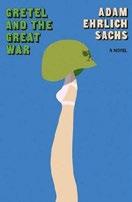

Robinson, Roxana | Norton (344 pp.)
$28.99 | Feb. 13, 2024 | 9781324065388
Elegantly structured and written, shimmering with feeling and truth. A triumph.
Rosenfeld, Adèle | Trans. by Jeffrey Zuckerman | Graywolf (192 pp.)
$17.00 paper | Aug. 6, 2024 | 9781644452967
An utterly original take on selfperception and perception.
Ruiz, Sarah Grunder | Berkley (368 pp.) | $17.00 paper
Jan. 2, 2024 | 978-0-593-54906-3
Compassionate and completely charming.
Sachs, Adam Ehrlich | Farrar, Straus and Giroux (224 pp.) | $18.00 paper
June 11, 2024 | 9780374614249
Playful, charming, and brilliant—a profundity made of toylike whimsies.
Sax, Sam | McSweeney’s (285 pp.)
$24.00 | Aug. 6, 2024 | 9781952119996
A poetic depiction of pain, queerness, Jewishness, and what it is to live.
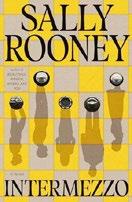




Rooney, Sally | Farrar, Straus and Giroux (464 pp.) | $29.00
Sept. 24, 2024 | 9780374602635
Though not perfect, a clear leap forward for Rooney; her grandmaster status remains intact.
Ruffin, Maurice Carlos | One World/ Random House (304 pp.) | $28.00 Feb. 27, 2024 | 9780593729397
Black women as agents—literally— of their own liberation. Who wouldn’t be inspired?
Rulfo, Juan | Trans. by Douglas J. Weatherford | Univ. of Texas (192 pp.) | $21.95 paper
Sept. 3, 2024 | 9781477329962
Spectral stories shot through with violence and sorrow, and beautiful for all that.
Sanchez, Santiago Jose | Riverhead (336 pp.)
$29.00 | June 25, 2024 | 9780593542187
Heart-wrenching in its realism, this novel captures the recklessness of young lust and the enduring pain of familial love.
Sebastian, Cat | Avon/HarperCollins (400 pp.) | $18.99 paper
May 7, 2024 | 9780063272804
Another stunning queer historical romance from a writer at the top of her game.




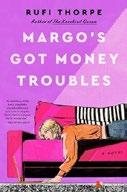
Senna, Danzy | Riverhead (288 pp.)
$29.00 | Sept. 3, 2024 | 9780593544372
That’s entertainment.

Spufford, Francis | Scribner (464 pp.)
$28.00 | Feb. 6, 2024 | 9781668025451
A richly entertaining take on the crime story, and a country that might’ve been.
Sullivan, J. Courtney | Knopf (384 pp.)
$29.00 | July 2, 2024 | 9780593319154
Sullivan artfully and astutely engages with difficult topics in this absorbing, affecting novel.


Tchaikovsky, Adrian | Orbit (416 pp.) | $19.99 paper | Sept. 17, 2024 | 9780316578974
A savagely satirical take on the consequences of repressive doctrine and the power of collective action.
Thorpe, Rufi | Morrow/HarperCollins (304 pp.) $28.00 | June 11, 2024 9780063356580
Terrific characters, rich worldbuilding, deep thoughts about fiction and morality, a love story, and a happy ending.
Shattuck, Ben | Viking (320 pp.)
$30.00 | July 9, 2024 | 9780593490389
Intricately structured, powerfully emotional, beautifully written: This is as good as short fiction gets.
Stevens, Jessi Jezewska | And Other Stories (304 pp.) | $19.95 paper
March 5, 2024 | 9781913505844
Erudite, eloquent, and bittersweet— these stories are like chewing on the orange rind for a last bitter taste of the drink.
Sweeney, Melanie | Putnam (368 pp.)
$18.99 paper | July 9, 2024 | 9780593716090
A heartwarming contemporary romance that will keep readers hooked until the last page.

Thomas, Joseph Earl | Grand Central Publishing (240 pp.) | $28.00
June 18, 2024 | 9781538740989
Just stunning.
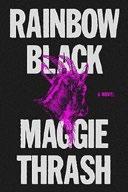
Thrash, Maggie | Harper Perennial/ HarperCollins (416 pp.) | $18.99 paper
March 19, 2024 | 9780063286870
Thrash turns trauma, injustice, and hideous bad fortune into a story about resilience, reinvention, and love.




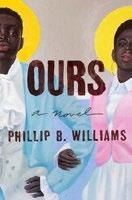
Tóibín, Colm | Scribner (304 pp.) | $28.00 May 7, 2024 | 9781476785110
A moving portrait of rueful middle age and the failure to connect.

Tulathimutte, Tony | Morrow/ HarperCollins (272 pp.) | $28.00 Sept. 17, 2024 | 9780063337879
An inventive and shameless story collection for the chronically online.

van der Wouden, Yael | Avid Reader Press (272 pp.) | $28.00 May 28, 2024 | 9781668034347
A brilliant debut, as multifaceted as a gem.
Whitaker, Chris | Crown (608 pp.)
$27.00 | June 25, 2024 | 9780593798874
A grim theme with a compelling and complex plot.


Williams, Phillip B. | Viking (592 pp.)
$32.00 | Feb. 20, 2024 | 9780593654828
A multilayered, enrapturing chronicle of freedom that interrogates the nature of freedom itself.
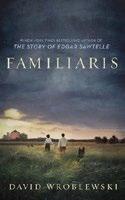
Tokarczuk, Olga | Trans. by Antonia Lloyd-Jones | Riverhead (320 pp.)
$30.00 | Sept. 24, 2024 | 9780593712948
A crucial addition to Tokarczuk’s oeuvre.
van den Berg, Laura | Farrar, Straus and Giroux (224 pp.) | $27.00 July 9, 2024 | 9780374612207
If speculative autofiction wasn’t a thing, it is now; van den Berg is a pioneer.
Wexler, Django | Orbit (528 pp.) | $19.99 paper | May 21, 2024 | 9780316392204
Tremendous fun.
Williams, Joy | Tin House (240 pp.)
$22.95 | July 2, 2024 | 9781959030591
Elegantly poetic—and often archly funny—meditations on death by a superb writer.
Wroblewski, David | Blackstone (992 pp.)
$34.99 | June 11, 2024 | 9798212194297
For all the eons it may take to read it, this colossus of a book will own you.


The author of Pride and Preston Lin answers our questions.
IN THE DELIGHTFUL Pride and Preston Lin, Christina Hwang Dudley takes Jane Austen’s story and moves it to a Chinese restaurant in contemporary California. Does it work? Our starred review says that “in a world with so many Pride and Prejudice adaptations, a new one has to be truly special to stand out, and this one is.” Dudley answered questions via email.
dozens of reference books, and if the Wi-Fi goes out I’m dead, because how else can I figure out the closest hackney-coach stand to the Old Bailey? In contrast, writing Pride and Preston Lin was a more flowing process. Which is not to say I prefer one over the other, but I welcomed the change of pace.
What inspired you during the writing of the book? What were you reading, listening to, watching?


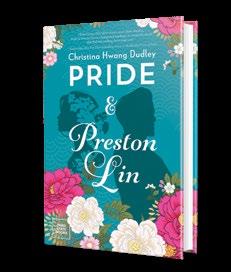
What was the original idea that started you working on the book?
Growing up Chinese American in the San Francisco Bay Area, the hierarchies I knew were based on which college you went to, what you studied, and what sort of job these things would land you. Preston Lin is basically a Chinese mom’s dream: Stanford Ph.D. student on a scientific career path, star athlete, from a “successful” family, speaks Chinese. If he’s the Darcy in this story, my Lizzy—Lissie—also had to rank “lower” in every category, her only weapons being wit and charm.
This is your first contemporary romance—was it very different than writing your previous Regency series? Writing traditional Regency romances is like trying to build the Eiffel Tower by watching YouTube videos. Almost every single thing has to be looked up or double-checked, lest you fall into errors, anachronisms, or—the Third Horseman of the Apocalypse for Regency readers—Americanisms! Which means I write my historicals while chained to the online Oxford English Dictionary and
It would be more accurate to ask what didn’t inspire me because this book is such a kitchen sink of my life! Austen’s story frame is a given, but so much of Lissie’s world intersects with mine. I sent her to my high school; I gave her my lame Chinese skills; the family restaurant is one I went to a lot growing up. I even once got in a car crash outside of it because I ran a red light while thinking of their steamed char siu bao. And then there’s the Stanford world of my grad school days and the competitive youth swimming universe I inhabited for years while my kids swam. Even the “Netherfield Ball” scene draws on my own experience taking English country dance lessons!
Where and when did you write the book? Describe the scene, the time of day, the necessary accoutrements. I do all my writing in my dining room, beginning before breakfast when the house is quiet. Across from me hang framed engravings of Italy in the 19th century and out the window I can gaze absently into the overgrown backyard. Since the gate fell down years ago in a windstorm, deer sometimes wander in, and the occasional chickadee flits
Pride and Preston Lin Dudley, Christina Hwang Third State Books | 320 pp. | $17.95 paper March 19, 2024 | 9798890130044
through the rhododendrons. Really the only serpents in my little writing paradise are my phone, with its lurking social media, or my son coming downstairs, throwing open the refrigerator and sighing, “Why is there never anything to eat?”
What book or books published in 2024 were among your favorites?
I really loved Hampton Sides’ The Wide, Wide Sea because I’m a Royal Navy/ Captain Cook/Polynesian history nut. Same goes for the Civil War and Erik Larson’s The Demon of Unrest. For fiction, I read the fifth installment in Anthony Horowitz’s delightful Hawthorne & Horowitz series, Close to Death. I don’t actually care about the mystery in mystery stories, I just like the characters, and Horowitz’s hilarious insertion of himself as the Watson to Hawthorne’s Sherlock is comedy genius.
Interview by Laurie Muchnick
The author of God Bless You, Otis Spunkmeyer answers our questions.
IN GOD BLESS YOU, OTIS SPUNKMEYER, debut novelist Joseph Earl Thomas turns a keen eye to the “day-in day-out grinding” of Philadelphia residents as narrated by a Black Army vet, Ph.D. student, and emergency department tech also named Joseph Thomas. The novel, which a Kirkus critic called “just stunning,” is one of our best books of the year. Author Thomas answered questions via email.
What was the original idea/ character/scene that started you working on the book?
I was thinking about institutions first: the prison, the hospital, and the military (though never forget the school), and how they traffic in similar modes of subjection for people who are permanently outside the sphere of proper literary concern; folks who can’t be used to demonstrate good politics in public, or whose stories or deaths can’t be shared on the internet for clear social advancement. I’m asking what kinds of thinking are possible if we sit with them—which is really an us, given my own background—and take them seriously on their own terms without infantilization or lead-up to valorization. Then there’s the reinvention of Holmesburg Prison, which looms large in the other Philadelphia. The father figure emerges from my ongoing concern with finding ways to live with rather than punish people for our own safety or satisfaction, even when they do horrible things. This is tied in with our failure to think about how relations to power work and change depending on position, and
are not permanent based on identity, career, or wrongdoing.

The North Philly setting is alive in the novel, made livelier still by the narrator’s frequent anecdotes about its landmarks and residents. Why was it important that the book take place there? There’s lots of love, and lots of barriers to that love, in North Philly and in the world, which define the major tensions in the book. In some ways, I’m a theory head, but in order to take big ideas seriously, you also have to take people and their contradictions seriously. Building an imaginary architecture of a place you know well is a good way to start; it’s also just as funny as it is sad to play out. As we overlook these contradictions in real time toward a kind of annotated progress, I like to think about what and who is, by necessity, getting left behind. For that, I need as intimate a canvas as possible. Generalities won’t do.
Where and when did you write the book? Describe the scene, the time of day, the sounds, the necessary accoutrements or talismans.
For much of the first and second drafts, I, the real Joseph, was still working as an emergency department tech and Ph.D. student in English, so I was standing up at the nurse’s station like the narrator does, Twizzlers behind the screen and cranberry ginger ale by the keyboard— all day, every day, between patients— usually on 7 a.m.–7 p.m. shifts when I didn’t have class and did have childcare, or otherwise 7 a.m.–3 p.m., and sometimes overnights. Covid-19, to say


Thomas, Joseph Earl
Grand Central Publishing | 240 pp. $28.00 | June 18, 2024 | 9781538740989
the least, did not help, and so there ended up being a seed of it at the beginning of the novel, looming over the narrator and [staying until] the end.
What was most challenging about writing this book? And what was most rewarding about writing it?
I’m interested in questioning narrative and critique as forms, rather than purely telling a good story or making a good argument directly about the things we already know to be true. This turned out to be the most rewarding, though, transforming that into a voice and a style that I can be proud of beyond a particular moment or topic.
What books published in 2024 were among your favorites?
Mariana Enríquez’s A Sunny Place for Shady People [translated by Megan McDowell]; Ours by Phillip B. Williams, and Butter by Asako Yuzuki [translated by Polly Barton].
Interview by Nina Palattella
The author of All the Colors of the Dark answers our questions.
READERS FEEL PASSIONATELY about All the Colors of the Dark, an immersive literary thriller that clocks in at more than 600 pages. One especially passionate reader—Today co-host Jenna Bush Hager—said she “may never have loved a book as much,” selecting it for her Read With Jenna book club in June. Our editors, meanwhile, have chosen it as one of the best fiction books of 2024, and we emailed author Chris Whitaker with some questions about his breakthrough.
kind of power over me—a mix of shame and embarrassment and a feeling of being different. I won’t say those feelings are gone, but they’re definitely lessening the more I talk about it and the more I talk about Patch and his journey.

What was the character or scene that initially started you working on the book?
I started with the idea of two abducted teenagers who fall in love in the pitch-black basement they’re being held in, having never seen each other. The boy escapes and can’t find his way back to the girl. So I had a kind of mystery, but also the makings of a love story, and then I began writing and it turned into so much more.
You’ve spoken publicly about traumatic experiences in your own childhood that informed your writing of the boy, Patch. Is going there painful for you as a writer? Therapeutic?
It actually wasn’t until two years in that I made the link between Patch and my own childhood. I wondered why I was struggling to tell his story, particularly writing some of the traumatic scenes, until I realized how closely they mirrored events from my own life. It was always this big unspoken thing from my childhood that, although I buried it deep, was always there looming, holding a
What inspired you during the writing of the book? What were you reading, listening to, watching? I was working in a public library when I started writing this story. I studied maps from the 1970s, travel guides, and history books. I listened to people read transcripts, which helped me pick up on speech patterns. I studied everything from painting to ballet, piano to beekeeping, fishing to mining. I learned to use a microfiche machine as Patch uses one during his search. This kind of research should help explain to my editor why I missed my deadline by two years.
Where and when did you write the book? Describe the scene, the time of day, the necessary accoutrements or talismans.
I wrote at night, alone in the garden cabin I built during lockdown. It was such a strange time because there was this terrible thing going on [in] the world, and everything looked and felt different, but each night I’d close the blinds and escape back to 1975, spending thousands of hours telling the story of a pirate and a beekeeper. My daughter was born, and I was also doing online events to promote my last book, and because of the time difference I was up all night. I have memories of my daughter asleep in my arms at 3 a.m. as I typed with one hand. I can’t decide if she


All the Colors of the Dark Whitaker, Chris Crown | 608 pp. | $30.00 June 25, 2024 | 9780593798874
was a talisman or a hindrance. Let’s go with the latter in case she comes for future royalties.
What book or books published in 2024 were among your favorites? The Women by Kristin Hannah was beautifully done, and has rightfully taken over the world. Jodi Picoult is such a gifted storyteller and I devoured By Any Other Name. Day One by Abigail Dean is stunning. Here One Moment by Liane Moriarty left me thinking about it for weeks after. I have a copy of James by Percival Everett that I’ve been saving as a treat for when I finish touring. I know it’s going to be phenomenal.
Interview by Tom Beer

THE BEAUTY OF Kirkus’ best books issue is that we include fiction of every kind. Within the 100 titles celebrated here, you’ll find the best mysteries and thrillers, the best romance, the best science fiction and fantasy, the best books in translation, the best short stories and family sagas and historical novels. Here are a few I found particularly memorable.
Martyr! by Kaveh Akbar (Knopf, Jan. 23) is one of those books that takes a big swing. Cyrus Shams is a 30ish Iranian American trying to make his life matter; he’s working on a project called The Book of Martyrs, traveling from Indiana to New York to meet a terminally ill artist who’s spending her final days in conversation with visitors to the Brooklyn Museum. “The novel is talky, ambitious,

allusive, deeply meditative.… It succeeds so well on its own terms that even the novel’s occasional flaws…don’t mar the experience in any significant way,” according to our review.
The Familiar by Leigh Bardugo (Flatiron, April 9): In this historical fantasy, Bardugo introduces Luzia Cotado, a crypto-Jew in 16th-century Madrid who casts spells to help in her work as a scullion maid: She makes burned bread edible and repairs shattered goblets. When her talents come to the attention of powerful people, she’s thrust into a magical contest with life-and-death repercussions. Our starred review says “lush, gorgeous, precise language and propulsive plotting sweep readers into a story as intelligent as it is atmospheric.”


Isabel and the Rogue by Liana De la Rosa (Berkley, June 4): In this strikingly contemporary Victorian romance, Isabel Luna is stuck in London spying for her homeland, Mexico, in its fight against the French invasion. Captain Sirius Dawson secretly works for the Home Office. When they meet in a room neither is supposed to be in, sparks fly. Our starred review says the book “has a rich combination of suspense and complex character development.”
All Fours by Miranda July (Riverhead, May 14): For a while, it seemed like everyone was reading this book—at least everyone in my demographic. A woman sets off on a road trip from LA to NYC for work but winds up checking into a motel only miles from where she left her family and tries

to figure out the rest of her life. “This tender, strange treatise on getting out from the ‘prefab structures’ of a conventional life is quintessentially July,” according to our review.
This Strange Eventful History by Claire Messud (Norton, May 14): Messud’s masterful novel is based on her own family’s story; it begins with a French Algerian couple uprooted by WWII and follows their children and grandchildren across decades and continents. Our starred review calls it “brilliant and heart-wrenching; Messud is one of contemporary literature’s best.”
God Bless You, Otis Spunkmeyer by Joseph Earl Thomas (Grand Central, June 18): This gripping stream-of-consciousness debut is narrated by Joseph Thomas, an Army veteran working as an ER technician at a Philadelphia hospital. At the end of a long shift, he’s waiting for a friend to bring him an Otis Spunkmeyer muffin and thinking about his life.

“This is an astonishingly accomplished novel, often funny, often tragic.…Just stunning,” says our starred review. (Read an interview with Thomas on p. 18.)
Laurie Muchnick is the fiction editor.
A 16th-century noblewoman is stranded on a desert island. How will she survive—and thrive?
In an author’s note following her gripping new novel, Goodman explains that the story originated when, in a children’s book about Jacques Cartier, she encountered an aside about one of the explorer’s acquaintances: “In 1542, a nobleman named JeanFrançois Roberval sailed separately with colonists to meet with Cartier in what is now called Canada,” she recalls learning. “Roberval brought along his young ward, Marguerite de la Rocque, who annoyed him by having an affair aboard ship. Roberval marooned Marguerite and her lover on an island in the Gulf of Saint Lawrence where she managed to survive for
more than two years while fighting off polar bears.”
Fascinated by this tidbit, Goodman set out to write her version of Marguerite’s story, based on historical accounts. In it, we meet Marguerite, wealthy and landed but orphaned by age 3, alone in the world but for her pious, loving, and loyal nurse, Damienne. As Marguerite grows, her rarely present guardian, Roberval, incrementally cashes in her property and future for his own benefit. Eventually, the cruel man sets sail to claim new territory for the King and takes along terrified Marguerite and Damienne, presumably intending to claim Marguerite for himself. Aboard ship, Marguerite falls in love with Roberval’s secretary, infuriating Roberval and sealing their

| Jan. 21, 2025 | 9780593730089
fate. The author charts Marguerite’s journey from nobly born naïf, to steely survivor, to patron of the poor. Setting Marguerite’s story of love and loss against snippets from Anne of France’s Lessons for My Daughter —advice from the daughter of Louis XI on how to be modest and chaste circa 1517— Goodman underscores the cultural headwinds against
which her heroine struggles to achieve autonomy and self-actualization. Goodman writes with fluid beauty, deep empathy, and an emotional undertow that pulls you in and holds you from the first page to the last. Goodman’s sweeping page turner is at once historical and modern, intimate and epic, personal and powerful.
Airey, Catherine | Mariner Books (480 pp.)
$30.00 | Jan. 14, 2025 | 9780063380134
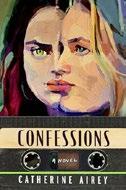
Love, loss, and the search for fulfillment shape three generations of women in an Irish family. Airey’s debut— a long, looping, switchback tale of secrets, shifting relationships, early pregnancies, and lost family regained—spans some 50 years, from the 1970s to 2023, many of them spent in Burtonport, County Donegal, and others in Manhattan. The story opens with 16-year-old Cora Brady in New York in 2001, seven years after her mother’s suicide. Her father, an employee at the World Trade Center, will be one of those lost on 9/11. Rebellious, sensitive, and now alone, Cora is surprised to learn she has a legal guardian, Roísín Dooley, her mother Máire’s sister, who lives in Ireland. Now, the narrative swings overseas and back in time, to the Irish farm where Máire and Roísín grew up. Máire has artistic gifts, and Roísín’s talent is writing. A Black boy, Michael Brady, becomes Máire’s lover, and he and Roísín arrange for Máire’s appointment as artist-in-residence at a big house occupied by the Atlantis Primal Therapy Commune, known locally as the Screamers. (Máire and Roísín will eventually be involved in a video game called Scream School, based on this location, scenes from which are spliced throughout the narrative.) When Máire moves to New York to study art, a checkered story ensues. Airey delivers her narrative by switching among the principal characters’ perspectives, not always chronologically. Roísín’s section embraces her own love affair with Michael and then her move to the Screamers’ house, now owned by an abortionist. Then comes a section devoted to Lyca Brady, Cora’s daughter, and next a focus on Michael, who visits Máire in New York. Later, Cora and Lyca will arrive there too, completing the tale’s rather-too-neat circularity. As
family sagas go, Airey’s first work is notable for its breadth, but its consistently downbeat mood lends a chill, and the structure will challenge some readers.
Intelligent, intricate, but joyless storytelling.
Allegri, Adriana | St. Martin’s (336 pp.)
$29.00 | Nov. 12, 2024 | 9781250326522

A woman uncovers her mother’s past in an understudied chapter of World War II history. After her 86-year-old mother falls off a step stool in her closet, Katrine finds a hidden box with a swastika on the lid—a symbol of hate that turns out to contain the remnants of her mother’s love story. In a single day, her mother, Allina, shares the story of her childhood in Germany and journey to America, a story she’d never told Katrine before, changing the course of their relationship. Allina grew up in Badensburg, raised by her aunt and uncle and betrothed to her childhood sweetheart. Badensburg is an idyllic 150-person village, defined by lake views and strudel until the fall of 1938. That’s when Allina wakes to gunfire one day and flees Badensburg, carrying little but the forged papers that conceal her half-Jewish identity. The next day, she finds herself at a building that’s part of Heinrich Himmler’s eugenics program, Lebensborn—a “baby factory” devoted to providing children to “pure” German families. The inhabitants are told that “every mother of good blood is a sacred asset of our existence,” especially considering how many lives were lost during the war. Allina has never been good at concealing her thoughts, no matter how heretical, so SS officer Karl von Strassberg needs only a glimpse of her face to know she isn’t like the other German women in the program. Karl recruits Allina for a secret project to rescue the Lebensborn children, at great
personal risk. As Germany’s power grows, Allina and Karl reveal themselves to one another, their alliance gaining momentum alongside its inevitable historical context. Allegri raises questions about duty, morality, circumstance, and sacrifice. Embodying those dilemmas are Allina, the resilient woman who refuses to become a victim, and Karl, the villain with a heart of gold. Although these old tropes do ring familiar, Allegri imbues her characters with a depth of feeling that’s alive and entirely its own.
A bright emergency flare of a story sent up from history’s darkness.
Andrews, Brian & Jeffrey Wilson Putnam (432 pp.) | $32.00 Dec. 3, 2024 | 9780593717974

Chinese president Li Jian Jun plans a sneak attack on Taiwan, and it’s up to the Jack Ryan administration to stop him without going to war.
President Li announces a naval exercise, but his real plan is Operation Sea Serpent, the lightning reunification of Taiwan. His minister of defense, Admiral Qin Hâiyû, thinks the idea is crazy because a great number of people would die, but he can’t say so. Li is not a man to be challenged, and he’s already had one of his ministers executed. But Qin wants to stop the war before it begins. Perhaps he can get word to the Americans so they can cut off the mad scheme, and he’s troubled by whether his actions will make him a traitor or a patriot. A Western asset nicknamed the Spider helps facilitate his dangerous disappearance as he attempts to leave China, and authorities in Beijing don’t know if he’s been kidnapped or has defected. Meanwhile, the Ryan administration wants to get him safely extracted from mainland China. President Ryan orders that an American naval vessel will transit through the
A holiday in the Hamptons turns into an engrossing tale of murder.
Strait of Taiwan, which the People’s Republic has blockaded. Will there be a bloody showdown that triggers a major war? So much can go wrong, and there are series regulars like John Clark and Ding Chavez at the tip of the spear. And there’s also Katie Ryan, a lieutenant commander with the Office of Naval Intelligence who’s deployed to Taiwan because she’s “one hell of an intelligence analyst” who “thinks outside the box.” She’s a “rising star” who refuses to trade on her relationship with her father, President Ryan. There’s not much violence, although there’s enough to call it a military thriller. One brave American is fading fast from a round to his chest, but he has time to smile about that “hot” Katie Ryan. (Yes, yes, we all like the Ryans.) The novel’s big question is not which nation wins, but whether they fight. Bravery and clear thinking will have to come from both sides. By the way, Jack Junior isn’t in this one—it’s Katie’s time to shine.
Plenty of excitement for Clancy fans.
The Note
Burke, Alafair | Knopf (304 pp.)
$29.00 | Jan. 7, 2025 | 9780593537084
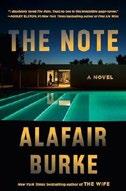
A holiday in the Hamptons for three friends turns into an engrossing tale of murder. Typically, the worst aftereffects of a girls’ weekend are nasty hangovers and swollen credit cards. But in this gripping thriller, much darker things happen. When May Hanover—a Chinese American assistant
district attorney turned law professor in New York—agrees to spend a long weekend with two old friends in East Hampton, it’s a welcome reunion, and for May, a break from prepping for the next semester while planning her wedding to fiance Josh. The trio first met about 15 years ago at an arts camp, and May has stayed in touch with Lauren Berry, an accomplished Black classical musician. But until recently, she hadn’t heard from Kelsey Ellis, the golden-blond daughter of a rich man, since Kelsey married a rising star chef who was subsequently murdered—a death that many online true-crime aficionados attribute to her. That’s not the only scandal in the trio’s baggage: Lauren’s longtime relationship with a married oilman got her fired from a plum job when it was exposed. And the usually rational May was the subject of a humiliating viral video of her threaten ing to call the police after a confrontation with a Black man on the subway. But this weekend is about leaving those troubles, and their long tail on the internet, behind. When the women drive to Sag Harbor to barhop, another car steals the parking space they were waiting for, and, among themselves, they make fun of the attractive couple in it. But Kelsey goes a little further, tucking a note on a cocktail napkin under the windshield wiper: “He’s cheating. He always does.” It seems like a prank, but then a tourist is reported missing who looks like the handsome driver. Questions are raised and tempers flare among the friends; in the midst of it, Kelsey’s stepbrother Nate arrives. He’s cool and charming—and May’s ex-boyfriend. As the police start asking questions, May’s compulsion to investigate kicks in, although she’s digging into her own past, along with those of the friends she thought she
knew. Burke builds an intricate structure of secrets layered within secrets, revealed for maximum suspense.
The complex friendship among three flawed but engaging characters anchors this satisfying psychological thriller.
Calhoun, Ada | Viking (288 pp.)
$30.00 | Feb. 25, 2025 | 9780593832028
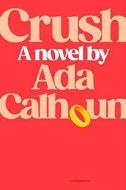
A happily married wife and mother discovers the crazy joy of a new love. Calhoun’s debut novel, following the wonderful memoir Also a Poet (2022), is chock-full of great lines, both hers and quotations from other writers. At the beginning of the extramarital emotional affair that is the subject of the novel, she observes, “Crushes had always made me feel powerful. This was the opposite. I was lit up, but I wasn’t in control. None of my old tricks worked anymore. I was rich in a defunct currency. A trillion zloty and I couldn’t buy a stick of gum.” While the whole situation begins when her husband, Paul, suggests that they incorporate some flexibility into their marriage, the unnamed narrator’s interest in David, “a handsome friend from college,” quickly outstrips any planned limits and becomes completely consuming. After six weeks of email correspondence comprising 182,000 words in total, they meet on Zoom with cataclysmic results: “We stared at each other. I thought I might die; the cause of death would be a desire to tousle his hair.” Readers of Also a Poet will notice that the narrator’s cranky, ailing, self-centered father seems an autobiographical element, and will appreciate the satisfying resolution of the relationship offered here. The novel bogs down a bit once the crush has peaked; it gets less funny and creeps toward annoyingly rhapsodic. “Since David and I had started talking, I’d had more new experiences than at any time since babyhood, when I was learning to walk
and talk and eat solid food. Loving him had been my liberation. Everything had blown up and everything seemed deliriously possible.” But of those possibilities, the one that occurs is exactly what you would expect. Oh, well. That’s delirium for you. Anything Ada Calhoun wants to write is well worth reading.
Clark, Eliza | Harper Perennial/ HarperCollins (240 pp.) | $17.99 paper Nov. 12, 2024 | 9780063393264
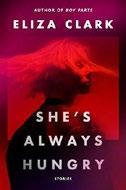
In a new collection of short stories, Clark shows off a growing mastery of the absurd, the bizarre, and body horror. In “Build a Body Like Mine,” a nameless narrator grows a cult following on the internet after admitting she uses parasites—tapeworms—to help her lose weight and stay in shape. In “Hollow Bones,” a young woman recovers on a space station after an incident she can’t remember which left her with a strange, glowing injury. “The Shadow Over Little Chitaly,” perhaps the collection’s standout, is told through increasingly bizarre reviews of an Italian-Chinese-Australian fusion restaurant that keeps bungling takeout orders and might or might not be of this world. The tongue-in-cheek narrative structure and the reviewers’ surreal interactions with the restaurant create a story that’s laugh-out-loud funny while maintaining a sense of unease. Unfortunately, while many of the stories are successfully built on strange and engaging concepts, others have a tendency to end abruptly and without the skin-crawling payout that readers expect from a writer dabbling in body horror, visiting distant planets, and awakening eldritch creatures. When they’re not uncanny or causing a general sense of discomfort, the stories can feel more like vignettes than finished products, blurry snapshots of modern
Clark shows a growing mastery of the absurd, the bizarre, and body horror.
SHE’S ALWAYS HUNGRY
life and explorations of humanity that are over as quickly as they’ve begun. The result is a tantalizing and sometimes uncomfortable book—especially for more squeamish readers—that could have provided more for those wanting an exploration of the base human needs, especially hunger, in its literal and metaphorical senses.
An unsettling collection of stories that solidifies Clark as a writer to watch in the world of horror.
Durham, Elyse | Mariner Books (400 pp.) $30.00 | Feb. 18, 2025 | 9780063393615

Twin Soviet ballerinas, born and orphaned on a single day in 1941, wreak havoc on each other’s lives.
It’s often said that love and hate are not opposites but closely related states, divided only by the proverbial thin line. Durham’s debut explores that idea through an operatic melodrama of a plot, boldly layered over a scaffolding of historical fact. In the opening scene, with the Siege of Leningrad in the offing, a 19-year-old dancer with no partner and no family goes through the throes of labor in a drab communal apartment. An hour later, a friend named Katusha arrives to find two infants wailing between the feet of a corpse. She grabs the girls, names them Maya and Natasha, and jumps on the last train to Tashkent to wait out the war. Fast forward 17 years: The girls are about to graduate from the feeder academy for the prestigious Kirov ballet when big news arrives. The Kirov
plans to bring on a few new dancers ahead of an upcoming European tour, but to (hopefully) prevent defection, only one member of a family can join. Everyone knows it will be Natasha, the more gifted and popular sister—and no one can possibly imagine what’s ahead in this novel’s tornado of a plot.
Durham provides an author’s note confirming the truth of the historical detail underlying the drama. Exchange visits of Russian and American ballet companies were indeed underway when the Cuban missile crisis broke; nearly all the details and characters involved here in the filming of the epic Soviet version of War and Peace come from life.
Durham’s storytelling bravado is buttressed by impressive proclamations: “Only three things can be depended on in this world: that hemlines will rise and fall, that regimes will come and go, and that people will never change. This is why the Russians went on doing many of the same things under Brezhnev that they had under Khrushchev, which they’d also done under Stalin, which were the same things people everywhere have always done, no matter who exploited them: getting toothaches and falling in love, scolding their children and singing in taverns...writing terrible poetry and believing, even though they knew better, that some sort of brilliant fate awaited them.”
Totalitarianism really can bring out the worst in people, suggests this eye-catching debut.

For another ballet novel, visit Kirkus online.
Fagan, Kate | Atria (304 pp.) | $27.99
Jan. 7, 2025 | 9781668076217
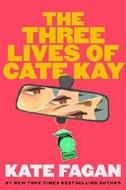
W hen a young woman writes a trilogy of bestselling books under a pen name, everyone wants to know her identity, but she has reasons for keeping herself hidden.
The reclusive author Cate Kay is legally named Cass Ford, but she was born Anne Marie Callahan—and to her best childhood friend, she was always known as Annie. Growing up in upstate New York, Annie and Amanda did everything together. They especially loved to act, and they shared big dreams of running off to Los Angeles. Although Annie’s love for Amanda wasn’t entirely platonic, their attachment ran deep enough to survive their mismatched feelings. What their relationship was less able to survive was an unexpected accident. Annie ended up leaving town alone and creating a new life for herself. Dismayed by her cowardice in leaving Amanda behind, she takes on a new identity as Cass Ford and falls into a relationship with Sidney, a woman who seeks to isolate and control her. When Cass writes a runaway hit, Sidney—who’s one of the few people privy to her real identity— doesn’t want to share that information, or any other part of Cass, with the world. As Cass navigates her new success, she begins to wonder whether she ever really knew who she was and what she should do now that she has the power to choose. The story is presented as Cate Kay’s memoir and sprinkled with her own footnotes, but it also offers brief chapters from the first-person viewpoints of many other characters, implying that Cass has reached out to them for their perspectives. Through this documentary-like setup, author Fagan is able to round out the picture of Annie/Cass/Cate and the way she’s coped with various traumas. Though the characters are
multidimensional and compelling, some of their actions are a bit hard to believe, like the way Annie abandoned her best friend in a moment of need and later accepted tragic news without any sort of verification. Similarly, there are times where the narrative is weighed down with irrelevant details. Even so, Fagan explores many complex topics with grace, ranging from toxic friendships to uncomfortable professional successes and undeserved second chances.
A smart and enticing fictional memoir.
Feeney, Alice | Flatiron Books (320 pp.)
$28.99 | Jan. 14, 2025 | 9781250337788
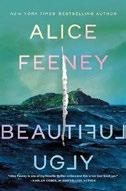
Following the mysterious disappearance of his wife, a struggling London novelist journeys to a remote Scottish island to try to get his mojo back—but all, of course, is not what it seems.
Grady Green hits the pinnacle of his publishing career on the same night that his life goes off the rails—first his book lands on the New York Times bestseller list, and then his wife, Abby, goes missing on her way home. A year later, Grady is a mere shadow of his former self: out of money and out of ideas. So, when his agent, Abby’s godmother, suggests that he spend some time on the Isle of Amberly, in a log cabin left to her by one of her writers, it seems as good a plan as any. With free housing for himself and his dog and a beautiful, distraction-free environment, maybe he can finally complete the next novel. But from the very beginning, Grady’s experiences with Amberly seem weird, if not downright ominous: As a visitor, he’s not allowed to bring his car onto the island; the local businesses are only open for a few hours at a time; and there are no birds. At all. Not to mention the skeletal hand he finds buried under the floorboards of the cabin, the creepy harmonica music in the woods, and the
occasional sighting of a woman in a red coat who’s a dead ringer for Abby. As Grady falls deeper and deeper into insomnia and alcoholism, he begins to realize his being on the island is no accident—and that should make him very afraid. Through occasional chapters from before Abby’s disappearance, told from her point of view, we learn that Grady is not necessarily a reliable narrator, and the book’s slow unfolding of dread, mystery, and then truth is both creative and well-paced. Every chapter heading is an oxymoron, like the title, reminding us of the contradictions at the heart of every story.
“Nasty little fellows…always get their comeuppance,” a movie character once said. Deeply satisfying.
Feito, Virginia | Liveright/Norton (208 pp.) $24.99 | Feb. 4, 2025 | 9781631498633

A twisted, bloodthirsty governess celebrates Christmas with her new employers. Set in a stylized Victorian England, Feito’s very different follow-up to the eerie, sophisticated Mrs. March (2021) is not for the faint of heart. It begins with the image of a manor, captioned: “In three months everyone in this house will be dead.” Indeed they will, in scenes of gore, dismemberment, and gleeful murderous abandon, observed with wry detachment by the titular psycho herself. To wit: “I spit out the blood and see, as so often happens when one slits an infant’s carotid artery, the baby is dead.” Then, a new paragraph: “I have not thought this through.” Thinking it through seems unlikely to have made much of a difference, though, as she packs the corpse up for mailing to a Benedictine nunnery in Lancashire with a note:
“Sorry, here’s another one.” This misanthropic, sociopathic, compulsively wisecracking character, Winifred Notty of Hopefernon,
claims upon her arrival at Ensor House to have hopes of keeping what she calls her “Darkness” in check.
“Observing my clean, respectable image in the glass I open my mouth wide in an attempt to catch a glimpse of the Darkness within me, to spy it peeking out of me, slick and muscular and toothed, like a lamprey swallowed whole.” But the awful Pounds family—pervy father, pathetic mother, drippy Drusilla, and her stupid little brother Andrew—along with the annoying household staff and a gaggle of repellent Christmas Day guests make restraint impossible. Miss Notty has a secret to reveal—and havoc to wreak.
Where ironic horror and horrific irony meet, this unbridled madhouse of a novel dazzles like a bloody jewel.
Freeman, Brian | Putnam (384 pp.)
$30.00 | Jan. 14, 2025 | 9780593716489
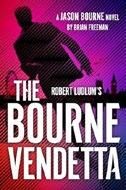
Jason Bourne enters a deadly race to find a laptop. The throughline in the Bourne series is that someone is always out to get him. Maybe they want him dead. Maybe they want him in bed. And, once, he took a bullet to the head, which is the whole premise. The “nowhere man” remembers nothing of his past identity, and he works for a shadowy agency called Treadstone, the new head of which is a woman named Shadow. The elusive prize everyone seeks is a hacked database commonly referred to as the
Files. The Files are filled with secret dirt about powerful people, every blackmailer’s fondest dream. Whoever controls this data could either destroy the deep state or protect it indefinitely. Everybody wants the information: the “FBI, CIA, NSA, DOJ. Plus most of our enemies overseas.” One such enemy is Cody, a Russian thug operating in Estonia. The files are on a laptop, and it doesn’t seem to occur to anybody that there could be copies in other places, but that doesn’t get in the way of a good story. Shadow wants the laptop, but so does the rogue ex-Treadstone agent Johanna. Two things the women have in common: They hate each other, and they have both enjoyed bedtime with Jason. Sex between Bourne and Johanna was “like two scorpions trying to mate.” That’s quite good, apparently, if you can get the visual out of your mind. And if you’re thinking that Jason doesn’t have enough women in his life, the Canadian journalist Abbey Laurent returns. Series fans will remember that she left him in The Bourne Sacrifice (2022) because he was too dangerous to be around. Now, she’s writing a book about a fatal fire, and she’s drawn back into his life. All three women are strong characters, but there’s also an Estonian damsel in distress named Tati, who is Cody’s prisoner. “‘Jason,’ she murmured aloud, her voice cracking, her soul praying. ‘Where are you?’” Her faith in him is complete, and completely warranted. Cody knows that Bourne has “a weakness for women in trouble.” The action starts early with the explosion of a limousine and a vivid description of what happens to its occupants, and from there the pace doesn’t flag. Classic Jason Bourne, loaded with action, sex, and excitement.
This is classic Jason Bourne, loaded with action, sex, and excitement.
ROBERT LUDLAM’S THE BOURNE VENDETTA
Gaylin, Alison | Morrow/Harper Collins (336 pp.) | $30.00 Jan. 28, 2025 | 9780063275188
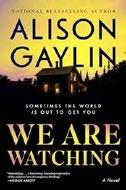
A QAnon-like conspiracy cult targets an unwitting family. Hudson Valley booksellers Meg and Justin Russo are driving their 18-year-old daughter, Lily, to Ithaca College for freshman orientation when a carload of skinheads pulls up alongside them and starts taking pictures. The Russos try to change lanes, but their vehicle skids, spins, and rolls, killing Justin. When Meg returns to work, somebody posts a three-month-old video on the store’s Facebook page in which Justin glares from behind the cash register as the female videographer sings, “We are waaaatching. We are armed. We will triiiiumph. You’ll pay for her sins.” Meg then discovers the same woman is currently in the store’s kids’ section, unshelving books and pounding on walls to locate a “secret chamber.” As Meg evicts her, the woman yells, “One down, three to go.” Meg’s reclusive father, retired semi-famous musician Nathan Lerner, insists the Russos’ accident was sabotage—a claim Meg writes off to drugs and dementia. Then Lily hears a rumor that sends her down a disturbing internet rabbit hole. Posters on an anonymous 4chan-esque website maintain Nathan is a Satanist who sold his and his family’s souls for a hit single. Further, they assert that a small-press fantasy novel Meg wrote as a teen “both predicted and caused the end of the world.” To stop the rapidly approaching apocalypse, Nathan, Meg, and Lily “must either repent—or die violently on film at the hands of the true believers.” This tense, horrortinged domestic thriller unfolds via a swiftly cycling third-person-present narrative, the protagonists’ mounting fear and paranoia so palpable as to be contagious. Gaylin writes perceptively about grief, guilt, and the complexities
of parent-child relationships, while also spotlighting the dangers of misinformation and the allure of conspiracy theories in times of chaos. Timely, terrifying, and all too plausible.
Kirkus Star
Harris, Elizabeth | Morrow/ HarperCollins (304 pp.) | $28.99 Jan. 7, 2025 | 9780063353237

Running for Congress as a Republican, a gay man complicates life for his family.
As New York Times reporter Harris’ debut novel opens, Ethan Keller has “something terrible” to tell his husband, Gabe. He wants to run for the soon-to-be vacant seat of the Congressional district just south of the home the couple shares with their 5-year-old daughter in New Jersey. Gabe is a 10th grade history teacher and a staunch Democrat; though he realizes this is not going to be any fun, he has no idea how intense things will become. Ethan’s sister, Kate, who’s a reporter at the Herald Ledger and also Gabe’s best friend, has a mixed reaction. “I’ve always thought he should run for office,” she tells Gabe, “but some of the stuff he believes now, I just can’t understand it.” And there’s a personal complication for her as well—she has to report the potential conflict to her boss at the paper, and then “stay ten thousand miles away from this race at all times.” Meanwhile, Kate, divorced from her wife, has a sticky situation all her own—her college girlfriend, Nicole, now married to a man and the stay-at-home mother of two, has reappeared in her life. Harris develops the internal and external challenges facing these two bougie gay couples with a sure hand, and does an equally impressive job on the political landscape of Ethan’s campaign, which is complicated by a
Running for Congress as a Republican, a gay man complicates his family’s life.
HOW
big mistake in his past which he has not yet revealed to voters. Tension builds toward Election Day until something’s gotta give—and it does.
A lively, of-the-moment political and domestic drama.
Beena | Crown (480 pp.) $29.00 | Jan. 28, 2025 | 9780593798461

Is it a curse or a blessing to live though the proverbial “interesting times?” Upon meeting Mahatma Gandhi a guest in his family’s home— for the first time at the age of 10, Shiv Advani tells the legendary Indian statesman that he wishes to be just like him when he gets older. Gandhi encourages him, but reminds him it will require both hard work and the relinquishment of all desire. Shiv believes, naively, he can follow the path set out for him, but the lures of personal contentment and satisfaction tempt him all the way through Kamlani’s examination of the tumultuous years before India’s independence from British rule. Sent to study law in London as an 18-year-old at Gandhi’s behest, Shiv has a goal of becoming proficient in British law and returning to India to advance the independence movement through non-violent means. Over his years of legal education, training, and early practice in England, Shiv becomes more aware of the costs of self-denial and of the nuances—sometimes cruel—of British culture. Shiv’s growing awareness of his own sexuality and his place
within a culture which often treats him with disdain takes place against the backdrop of slow-moving political and cultural transformations in both Britain and India and the advancing threat of World War II. Inspired by her uncle’s experiences, Kamlani’s story of one man’s odyssey of discovery contains extensive historical context. Replete with lyrical imagery of rivers, the saga confronts issues of racism, class disparities, parenthood, and sexual acceptance. A tour de force moment of period-appropriate cultural dissection occurs when Shiv’s British lover attempts to provide a crash course in how to be “one of us.”
Kamlani’s ambitious debut packs an important dose of relevant history into a very human story.
Kenitz, Daniel | Scribner (320 pp.) | $17.99 paper | Jan. 7, 2025 | 9781668063873

W hen the married hosts of a homerenovation show struggle with infertility, it threatens to destroy their lives both on and off camera. From the outside, Dawn and Wyatt Decker—hosts of The Perfect Home, the “crown jewel in the Home & Lawn TV lineup”—have a life that seems as flawless as the “after” footage of the houses they remodel. However, their picture-perfect appearance hides their growing insecurities around their marriage and struggles with infertility: Wyatt feels like the “meatless burger” version of a real man, while Dawn—who
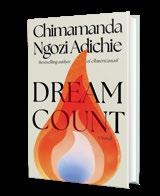
The Americanah author’s Dream Count will be published by Knopf next March.
A new novel by Chimamanda Ngozi Adichie is coming next year.
Alfred A. Knopf will publish Adichie’s Dream Count in the spring, the press announced in a news release. It will be the author’s first novel in more than a decade.
Adichie made her fiction debut in 2003 with Purple Hibiscus, which was a finalist for the
Women’s Prize for Fiction. She followed that up three years later with Half of a Yellow Sun, which won the Women’s Prize.
In 2013, she published Americanah, which became a bestseller and won the National Book Critics Circle Award. Her other works include a short story collection, The Thing Around Your Neck, the nonfiction books We Should All Be Feminists and Notes on Grief, and the children’s book Mama’s Sleeping Scarf, illustrated by Joelle Avelino.
Dream Count follows four women navigating the Covid-19 pandemic and their relationships. “A trenchant reflection on the choices we make and those made for us, on daughters and mothers, on our interconnected world, Dream Count confirms Adichie’s status as one of the most exciting and dynamic writers on the literary landscape,” Knopf says.
Adichie announced her novel on Instagram, writing, “I am deeply excited about this book. I am so proud to have finished it. I cannot wait for my wonderful fans to read it.”

Dream Count is slated for publication on March 4, 2025.
—MICHAEL SCHAUB

For reviews of Chimamanda Nzogi Adichie’s books, visit Kirkus online.




Victor Luckerson and Jimmy Carter also won the social justice literary prizes.
Irish novelist Paul Lynch is one of the winners of this year’s Dayton Literary Peace Prize, given annually to “writers whose work demonstrates the power of the written word to foster peace, social justice, and global understanding.”
Lynch took home the fiction prize for Prophet Song, about a woman in a dystopian Ireland whose unionist husband is detained by secret police. In a starred review, a Kirkus critic called it “captivating, frightening, and a singular achievement.” The novel won the Booker Prize and was a finalist for the Kirkus Prize.
The Postcard, written by Anne Berest and translated by Tina Kover, was named the runner-up in the fiction category.
Luckerson won the nonfiction award for

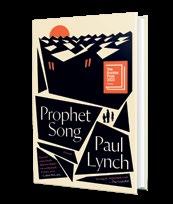
Built From the Fire: The Epic Story of Tulsa’s Greenwood District, America’s Black Wall Street. The nonfiction runner-up was Tania Branigan’s Red Memory: The Afterlives of China’s Cultural Revolution. Former President Jimmy Carter, a prolific author and Pulitzer Prize finalist for An Hour Before Daylight: Memories of a Rural Boyhood, was awarded the Ambassador Richard C. Holbrooke Distinguished Achievement Award.
The Dayton Literary Peace Prize was established in 2006. Previous fiction winners include Chang-rae Lee for The Surrendered, Geraldine Brooks for Horse, and Viet Thanh Nguyen for The Sympathizer —M.S.

never really wanted fame anyway— worries that she’s not quite the match for her dashing husband. Amid their struggle to have a child, Dawn finds a mysterious package that arrives for Wyatt from Germany; containing experimental fertility drugs, it promises to make their dreams come true while also harboring a sinister threat. This discovery is not the last. Author Kenitz peels away the layers of the Deckers’ seemingly perfect life, revealing a series of dark realities that fuel betrayal, desperation, and possibly murder—challenging the loyalties of the people closest to Dawn and Wyatt while also resurfacing unlikely allies from the distant past. Like many thrillers in the wake of Gillian Flynn’s Gone Girl , the novel alternates between Dawn and Wyatt’s perspectives, probing the power dynamics of gender and family and the illusions of the American dream. Dawn’s interior life and motivations are more developed than Wyatt’s, leaving the narrative tension lacking in places; astute readers will be able to guess the ending midway through the book. While the pages fly by, the novel lacks the psychological depth and narrative ingenuity that would lift it from good to great. An imperfect yet entertaining debut from a promising writer.
Konen, Leah | Putnam (352 pp.)
$30.00 | Jan. 14, 2025 | 9780593715895

When a woman takes a caretaking job at a remote motel, she begins to wonder if she’s losing her mind. Sound familiar?
This take on The Shining —which is referenced on Page 3—opens as Kerry arrives at the empty, snow-covered Twilite Motel, in a sparsely populated area of upstate New York. She’s chosen to spend a month in this isolated location so she can write more and drink less. When
SAVE ME, STRANGER
she arrives, however, she doesn’t find the property in the state she expected. One room shows evidence of a recent party and someone—the prior caretaker or a forgotten guest?—possibly still in residence. As she tries to find the potential squatter, she’s horrified to discover a dead body buried in the snow. Due to the recent storm, power is out, and Kerry’s on her own with her dreadful discovery. As she trudges through the snow looking for help, she meets the owners of neighboring properties, each of whom seems more suspicious than the last. She also learns that the previous month’s caretaker was none other than her estranged best friend, Siobhan. Meanwhile, evidence keeps disappearing from the motel, making new acquaintances—and Kerry herself— doubt her sanity. As she tries to figure out what nefarious events occurred before she arrived, she grows increasingly concerned that she might be her own worst enemy. The book is told from Kerry’s perspective, with chapters narrated by Siobhan woven throughout. Full of creepiness and tenable red herrings, the story is solidly engaging, with the author offering just enough breadcrumbs to hint at the truth without giving anything away too soon. Both narrators are presented as potentially unreliable, and their voices can be hard to tell apart; also, drunkenness is overused as a device. Still, the setting of the secluded motel is evocative and entirely eerie, and the story is sufficiently dire to keep readers engaged. As the characters try to make sense of their situation while also tackling weighty issues like addiction and self-doubt, things eventually become clear.
A fast-paced thriller that plays up the disorientating nature of isolated locations.
Krouse, Erika | Flatiron Books (224 pp.)
$26.99 | Jan. 21, 2025 | 9781250240330
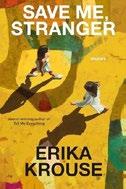
A dozen bracing stories with far-flung settings are united around themes of escape and rescue. Krouse’s second story collection is thick with restlessness, both across the book and within each story. “The Pole of Cold” is narrated by a young woman who’s mayor of a dismally frigid Siberian town and tempted to escape to New York with a visitor. In “North of Dodge,” a woman finds refuge from her white-supremacist uncle and guardian in a majority-Black neighborhood in Omaha. A young woman becomes alert to her father’s infidelities in “When in Bangkok,” and another heads to an Idaho hotel in a desperate escape from her abusive marriage in “Fear Me as You Fear God.” None of these pieces simplistically slot into women-in-trouble tales, though— “Fear Me” incorporates elements of ghost stories and sensitively works in the narrator’s growing ambivalence and paranoia. And the narrators aren’t always women: “Eat My Moose” is told by a man recalling his work secretively performing assisted suicides in Alaska, and “The Standing Man” is narrated by a worker in a Tokyo ramen shop who feels an unusual kinship with an American working in the city. Though Krouse’s stories are emotionally sensitive and precise, they don’t foreground style much, coolly and crisply delivering details and imagery. Just as impressively, she can use this straightforward approach persuasively when her conceits
are relatively contrived: In the title story, a mother and daughter hunt for a woman named by a dying teenage criminal, the instrument in “The Piano” is defaced in absurd fashion, and “I Feel Like I Could Stand With You…” turns on a potted exchange over racist goods in a consignment shop. Even those stories thrive, because Krouse is gifted at capturing her characters’ dueling frustrations, needs, and fears. A smart set of globetrotting, emotionally gripping stories.
Lamont, Tom | Knopf (304 pp.)
$28.00 | Jan. 14, 2025 | 9780593803240
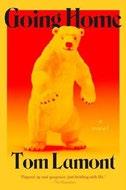
In the suburbs of London, two young men and one much older man end up caring for a toddler— or trying to. This debut novel from journalist Lamont begins with an unusual, original premise. Téodor Erskine is home from London for the weekend to visit his ailing father, Vic, and spend a little quality time in the pub with childhood friends. As he has in the past, he calls Lia Woods, his dear friend and longtime crush, with an offer to babysit her 2-and-a-half-year-old son, Joel, hoping it will lead to a more adult get-together afterwards. This time it leads to something else entirely, and Téo becomes the interim caretaker for the child, whose paternity is unknown. Well, unknown to Téo, anyway—his friend Ben Mossam and even his poor old dad know the truth. There is so much to love about this book, foremost the poignantly, sometimes painfully detailed portrait of 30-something guys learning to take care of a child with no woman in sight. Joel himself—his way of speaking, his tantrums, his predilections, his memory—is one of the most vivid fictional children since Jack in Room. The whole lot of them are Jewish, not very religious but strongly identified, as typified by the
wild boozer and all-night poker player Ben, who always wears a yarmulke. Their synagogue has a new rabbi, a woman named Sibyl Challis, who is also the best rabbi character in recent memory, both in her idea of embracing “gut Jews, Jews who would not be recognised as Jewish anywhere else, Jews by deed and affinity, those who only felt an inexplicable conviction they belonged,” and in her unexpected, intense crush on one of the other characters. But unfortunately, she fails to stop Vic from a betrayal with harsh results.
A great premise, a great story, but most of all, great characters.
Le Corre, Hervé | Trans. by Howard Curtis Europa Editions (304 pp.) | $17.00 paper Dec. 31, 2024 | 9781609459765

After serving five years in prison for carrying his older brother Fabien’s drugs, 26-year-old Frenchman Franck quickly finds himself in compromising situations with Fabien’s girlfriend, Jessica, and her drug-dealing family.
Franck had planned to move on with his life after reuniting with Fabien, who walked away from the drug bust thanks to his sibling’s silence. But Fabien is away in Spain on “business” and may never come back. In his absence, Franck can’t resist tumbling into an intense affair with Jessica, a femme fatale who runs hot and ice cold. “Unpredictable, unfathomable, poisonous,” she is just as erratic with her daughter, Rachel, an oddly nonresponsive 8-year-old. Franck has barely settled into a trailer outside Jessica’s parents’ faded house in southwestern France when her creepy father presses him into running drug errands, arming him with a gun. No macho dude, Franck is prone to weeping when his bones are being crushed by bad guys. Lost without his brother, he spins through streams of consciousness in which he wonders “if he still [exists].”
But after Jessica is raped and left half-naked in an alley, he finds a more formidable side of himself. Though the book is rooted in classic noir (think Jim Thompson), its focus is increasingly on the mistreatment of children—by Jessica, her grotesque parents, and Franck’s neglectful parents. The long-term damage from which Rachel will suffer can only be imagined: “It was likely she’d already experienced too much for her age.” Le Corre has a tendency to repeat the same basic scenes, but he sustains a coiled intensity in exposing a life in which innocence is nowhere to be found.
As nasty as it gets, this French noir sets itself apart with its beating heart.
Lipstein, Andrew | Farrar, Straus and Giroux (352 pp.) | $28.00 Jan. 21, 2025 | 9780374613358

A former NPR personality and his Danish wife have their lives upended by a summer in Copenhagen. Reuben is canceled. Dismissed unceremoniously from his job on public radio after having been caught in flagrante delicto with his wife during a work Zoom, he’s now a stay-at-home dad in Brooklyn. (“Reuben had become a victim as only a man could, refusing himself everything until his dignity had been returned, intact.”) His wife, Cecilie, has a stellar career of her own as a New York Times reporter, but when she finally has a chance to take maternity leave, she can’t wait to pack up Reuben and their baby, Arne, and head to her mother’s home near Copenhagen. Upon being reunited with her group of friends—all journalists—Cecilie learns that one, her former boyfriend Jonas, has been diagnosed with a serious neurological disorder. It becomes her mission to convince him to undergo a potentially life-saving, but risky, treatment.
jumps into the past in order to embrace her future.
Meanwhile, Reuben falls under the powerful sway of another, the charismatic Mikkel. Reuben becomes obsessed with the notion that Mikkel represents the opposite of everything ailing the American man: “authentic,” unapologetic, decisive. When Mikkel takes Reuben under his wing, it will have surprisingly far-reaching consequences. With his third novel, Lipstein has created a kind of trilogy of young New York men in ethically dubious circumstances, mostly of their own making. (This time, though, the novel contains a dual point-of-view from both Reuben and Cecilie, broadening the palette.) One of Lipstein’s gifts is his slipperiness—just as the reader feels a character’s foibles are being mocked or even pitied, the target shapeshifts, the moral questions twisting and dissolving. If this all sounds like abstract philosophical fun, don’t worry: Lipstein knows his way around a plot. An interrogation of the nature of truth, virtue, and reality, cloaked as a page-turning novel of escalating crises.
Kirkus Star
Our Winter Monster
Mahoney, Dennis | Hell’s Hundred (304 pp.)
$26.95 | Jan. 28, 2025 | 9781641296335

A couple grapples with monstrosity in this tense horror novel. Holly and Brian need a break. The couple have had a rough year, recovering from a horrible incident that left them both with severe post-traumatic stress; Holly has
coped by throwing herself into her work, while Brian has developed debilitating anxiety: “They’re too far apart and always drifting further. He doesn’t understand how she keeps getting stronger, and she doesn’t understand why he keeps getting weaker.” They decide to take an “emergency vacation” to the village of Pinebuck, New York, where they plan to drink, eat, and relax in a B&B. Unfortunately, a blizzard hits the town, and the couple’s car crashes en route after having been followed by “a giant, white shape that doesn’t blow apart and almost looks solid.” It turns out to be a snow monster that leaves a trail of destruction wherever it goes, which of course draws the attention of the town’s beleaguered sheriff, Kendra Book; she suspects that Holly and Brian are actually behind the carnage—and in a way, she’s right. “One: there’s a monster,” Holly explains to Brian. “Two: we’re the monster. It’s you, and then it’s me, and after me it goes to you again.” It’s an off-kilter premise, but Mahoney pulls it off beautifully, with legitimately terrifying action scenes and a creeping sense of horror threaded through the book. But where he shines brightest is in his depiction—sensitive and accurate—of post-traumatic stress and anxiety: “Happiness was dangerous,” he writes of Brian. “He had to keep his guard up. He watched for threats and problems and began to see them everywhere. But much of what he did to minimize trouble had the opposite effect and made things worse.” There are two monsters in the book: one made of snow, the other made of psychological anguish. Mahoney does an excellent job illustrating how terrifying both are. Smart, sensitive, and scary as hell.
Moorman, Jennifer | Harper Muse (336 pp.)
$18.99 paper | Jan. 14, 2025 | 9781400343638

In this magictinged novel, time travel to the Prohibition era gives a grieving woman a way to change her life and save her family.
Following the death of her husband, 35-year-old Josephine Reynolds is wallowing in grief and wishing she could just disappear. Months later, she’s still unable to move forward, until her sister encourages her to buy their ancestral Nashville home. Josephine has big plans for renovating the house, including finding the perfect replacement for the shabby front door. She’s flabbergasted when the door she finds at a local salvage yard turns out to be the house’s original entryway, and, incredibly, it’s a doorway into the past. How is it possible that when Josephine uses the original key, she steps into the Jazz Age? It’s 1927, and Josephine quickly realizes what’s at stake. When she returns to the present, an internet search reveals that her great-grandmother Alma died during a raid on her basement speakeasy that year— and that she had no children at the time of her death. But if that’s what happened, how did Josephine’s grandmother and mother—and Josephine herself—come to be born? Josephine takes on the daunting task of stopping Alma’s death so her family can exist. Meanwhile, in the present, her possessions begin to disappear as if they and she are already being erased from the world. Fans of time travel will love this imaginative, high-stakes novel, as will fans of The Great Gatsby, thanks to the vivid descriptions of the Jazz Age, its parties, music, and dancing, and the way women were fighting for their rights and potential. Part fantasy, part romance, part
coming-of-age story, this sweetly told tale of a woman’s search for her true self is imbued with Moorman’s trademark touch of magic. A delightful heroine jumps into the past in order to embrace her future.
Morrow, Bradford | Atlantic Monthly (288 pp.)
$27.00 | Jan. 14, 2025 | 9780802164155

Violence breaks out among a circle of literary forgers. This final installment of a trilogy that began with The Forgers (2014) opens with prolific forger Henry Slader waking to discover he has been buried alive in a shallow grave. Struggling to remember who he is and how got there, he manages to claw his way to the surface. When the cobwebs have cleared, he resumes his efforts to blackmail his nemesis, convicted forger Will, with incriminating photos of a murder Will committed in the past. This time, Slader deals with Will’s brilliant forger daughter Nicole—even though she was the one who whacked Slader in the head with a shovel and participated in his burial, assuming he was dead. From Nicole, a Mary Shelley specialist with “Banksy bravado,” Slader demands forgeries of letters written by the Frankenstein author. She agrees to his terms but encrypts a message in them for a document expert to discover, indicating they are fakes. Grounded in scholarship, the novel does more with literary references than is usually the case in popular fiction. It’s a novel in constant movement, beginning in upstate New York and concluding with high drama at Shelley’s grave in England. Bad things happen to a lot of people, but for Slader, it’s all worth it: “In heady moments he wondered if his accomplishments [as a forger] weren’t comparable to those of the authors
themselves.” For Nicole, the counterfeit pages “can bring real happiness to someone who believes they own, say, a copy of Sense and Sensibility inscribed by Jane [Austen] to her sister, Cassandra.” Reading the book, of course, would add to the pleasure. An entertaining blend of detective thriller and literary investigation.
Norton, Graham | HarperVia (304 pp.)
$18.99 paper | Jan. 14, 2025 | 9780063436473

In this decadesspanning drama, a lonely octogenarian recalls her extraordinary life and the important role she played in the lives of her friends and family.
In his inimitably charming way, author, comedian, and talk show host Norton tells the tale of Frances “Frankie” Howe, whose story, like the author’s, is rooted in Ireland. As the novel opens, 84-year-old Frankie is sequestered in her London home after having broken an ankle. Damian, a young Irishman, is hired to care for her. The cantankerous Frankie is drawn to Damian, who encourages her to share her life story. Born in Ireland and orphaned at an early age, Frankie was sent to live with an aunt and uncle with conservative ideas about women. In 1950s Ireland, most women were discouraged from following their dreams and, when Frankie turned 18, she was pressured into marrying a clergyman more than twice her age. Frankie’s suffocating life was common for many women of that era, and Norton paints a formidable picture of how culturally imposed
limitations made many women feel betrayed by the world. But Frankie’s life, in Norton’s deft hands, turns colorful, dramatic, and full of light. Serendipity takes her to England, where’s she’s again betrayed by people meant to protect her, and then on to New York City, where fate hands her a romantic respite, a career, and friendships she never anticipated. Norton beautifully evokes settings including the lesbian culture of 1960s London, the art world in 1970s and ‘80s New York, and the heartbreaking emergence of the AIDS epidemic. As in his four earlier novels, Norton ably captures the lives of ordinary people struggling to find their way in an often harsh world.
This feel-good story of an unlikely friendship soothes and surprises with its tenderness.
Sligar, Sara | MCD/Farrar, Straus and Giroux (400 pp.) | $28.00 Jan. 14, 2025 | 9780374282295

T he remaining members of a Kennedy-esque family discover that someone is pulling the strings to destroy their credibility— and maybe even their lives.
Every year when April rolls around, Clara Wieland feels like she’s living on the edge of a knife. After all, an inordinate number of her family members, most recently her own parents, have died in freak accidents during that month, a phenomenon that’s come to be known as the Wieland curse. This year, the month coincides with her older brother Teddy’s run for a
Violence breaks out among a circle of literary forgers.
THE FORGER’S REQUIEM
Senate seat from their home state of Maine. So, when a compromising video of Clara is released on the internet, the timing couldn’t be worse, for Teddy’s campaign or Clara’s fragile mental health. As she hides away to survive the cruel comments of internet trolls, Clara starts having hallucinations of her dead parents. Teddy has little patience for his sister; he’s been caring for her for years, through devastating bouts with an eating disorder and through her grief. But Teddy’s wife, Jess, was Clara’s best friend before they were in-laws, and she’s more apt to listen—so when she, too, is targeted by an internet video that appears to be a deepfake, she believes Clara’s insistence that something else is going on. Maybe it’s the curse; maybe it’s someone with a grudge against the wealthy, powerful Wielands. Either way, Clara and Jess have to look beyond their complicated family/friend relationship to uncover the truth. Clara is a frustrating protagonist at first, since her trauma has led to self-destructive habits that she seems little inclined to face or change, but Sligar renders her with such complexity and compassion that it’s easy to cheer when she begins to figure things out—and when she rejects the convenient trap of the curse narrative, finding power and agency as she learns to trust in her own intelligence. A unique twist on the thriller genre with an appealing side of female empowerment.
Stoltenberg, Hanna | Trans. by Wendy H. Gabrielsen | Biblioasis (160 pp.)
$16.95 paper | Jan. 14, 2025 | 9781771966436

A mother and her estranged adult daughter take an uncomfortable weekend trip from Oslo to London in Norwegian author Stoltenberg’s grimly fascinating debut novel.
Mother Karin is 53, long divorced, and working at a job she
doesn’t care about managing a jewelry store. She spends most of her free time on one-night stands with guys she meets online, and hasn’t seen her daughter or grandchildren, who live nearby, for a couple of months. She spends much of her time gazing in one mirror or another, “registering the slight gap between expectation and reality.” When her daughter, Helene—who’s upset that her husband almost certainly is having an affair—invites her to fly to London for the weekend to go shopping, eat scones, and spend time with Helene’s old college friends, Karin accepts, moved by the fact that her daughter would think of inviting her. But once there, they still fail to bond, and Karin feels like Helene is pushing her away. From Karin’s point of view, “she wants to have a good relationship with Helene, she really does, but it’s as if they can’t agree on what a good relationship means.” From Helene’s point of view, it turns out, their relationship is pretty clear: “I’ve been so worried that I’m just like you,” she tells her mother. The novel alternates between the bleak weekend and the days that precede it, and even more dismal scenes from the years when Karin was attempting to raise Helene, before getting divorced and spending less time with her daughter. Not much happens in the brief, intense novel, but what does is infused with a sense of dread, and observed in microscopic detail from a bemused and calculated remove.
Page after page leaves the reader anxiously waiting for the other shoe to drop.
Kirkus Star
Upadhyay, Samrat | Soho (768 pp.)
$32.00 | Jan. 7, 2025 | 9781641294720
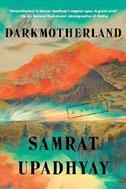
A sprawling, sinuous novel of life and ideas in a funhouse-mirror South Asia. Darkmotherland is a Himalayan nation torn by class, age, religion, and politics. At the beginning of Upadhyay’s story, a horrific earthquake has destroyed much of the country. The Big Two, as it’s called, “made people go insane,” he writes. “A well-respected spice merchant was seen around town drumming dhintang, dhintang, dhintang on his madal all day long, making everyone wish he’d died.” Fortunately, in one of the winding storylines of the book, PM Papa, the autocratic ruler, is there to save the day—or so one political faction insists, even as during the newly declared state of emergency, “all political activities were immediately banned.” In a palatial home called the Asylum—not for refugees, but for rich people’s money—a second storyline emerges, with tenuous interactions between a monied young man and a family with a gently intellectual father and a mother so left-leaning that she’s known as Madam Mao. Kranti, their daughter, marries into the Asylum, there to be bound up in intrigue. Meanwhile, while the street is abuzz with talk of a follow-up earthquake that “would decimate humanity as
A sprawling, sinuous novel of life and ideas in a funhouse-mirror South Asia.
we know it,” a concubine whose gender evolves with each passing day, to the horror of the nation’s increasingly intransigent fundamentalists, gains ever greater political influence. In a novel that might be likened to Pynchon by way of Rushdie, demanding the reader’s close attention, Upadhyay is clearly having a blast playing with names and cultural constructs: One of his players is named General Tso, two disaffected servants are called Cheech and Chong, Allen Ginsberg (“a famous Amrikan homo”) and the Beatles make cameo appearances, and a Grateful Dead leather jacket becomes an object of memory and contemplation.
Dizzyingly complex and dazzlingly written, full of rewards and arch humor for the patient reader.
Walker, Karen Thompson
Random House (304 pp.) | $28.00
Feb. 25, 2025 | 9781984853943
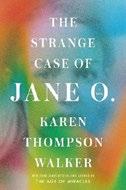
A New York City psychiatrist treats a patient with troubling blackouts and hallucinations, raising a host of tantalizing questions about the nature of psychology, memory, and linear time.
As the title implies, the book is presented largely as a case study, with Dr. Henry Byrd writing about his patient Jane O., a 38-year-old single mother, with measured detachment. Days after their abbreviated first session in the spring of 2018—Jane walked out after only 14 minutes, saying “I think this was a mistake”—she turns up in an emergency room with no memory of the previous 25 hours; she names Dr. Byrd as her doctor. While the hospital soon releases Jane, Dr. Byrd becomes increasingly fascinated by her unusual case. Jane has
hyperthymesia—an excessive, accurate memory for dates, places, and events—but has also recently experienced a frightening hallucination: She saw and even talked with a man she knows died when they were both teenagers. As her therapy with Dr. Byrd progresses, she suffers increasingly worrisome blackouts and hallucinations. While the police suspect she’s a fake, Dr. Byrd’s attempts at diagnosis lead him to fascinating, bizarre-sounding theories. Meanwhile, at Dr. Byrd’s urging, Jane begins writing a journal in the form of letters to her son that she hopes will explain her situation to him in the future. Revealing details she has yet to share with Dr. Byrd, the letters show that she’s a caring mother and a self-aware, if lonely, person—not unlike Dr. Byrd, an equally caring single father facing personal and professional difficulties that medical ethics prevent him from discussing with Jane. The relationships among scientific fact, emotion, and psychology are tangled here. No viewpoint is reliable, but no one is wrong. Just when the truth seems sad but clear, Walker throws in a twist (or two) to turn the narrative on its head in satisfyingly disturbing ways, especially given that Walker’s last novel, The Dreamers (2019)—about an imaginary epidemic—seemed like pure fiction when it was published in pre-Covid times.
A novel that begins quietly becomes an exhilarating and riveting must-read and then read-again.
Warren, Tiffany L. | Morrow/HarperCollins (432 pp.) | $19.99 paper | Jan. 7, 2025 | 9780063322134

A contemporary of Jenny Lind— with a greater vocal range—the real Greenfield became known as the Black Swan and was met with remarkable success, given the landscape of her times. Author Warren follows the trajectory of Greenfield’s life, filling in many gaps in the historical record with well-researched fiction. Eliza has been lucky in many ways: She is educated, financially supported, and free, though two of those things could be taken away at any time. In the wake of the 1850 Fugitive Slave Act, any Black person is at risk of being kidnapped and sold into bondage. From the age of 7, Eliza was raised in Philadelphia by Elizabeth Greenfield, an elderly white Quaker she calls Miss Lizbeth. After Miss Lizbeth dies when Eliza is 26, Eliza’s inheritance is contested by her benefactor’s niece and held up in legal limbo. She’s undaunted, however, and with the support of some wonderful friends, she soon finds patrons, as well as a manager to advance her singing career. Eliza is constantly threatened by racism, precarity, and sometimes violence, and while these stakes are frequently stated, they are not always felt in the book. Eliza’s love interest, Charles Monroe, insists she can and should do more to uplift other Black people, but she thinks she must look after her own success and safety first. This and many other potentially painful themes around privilege, race, and access to power recur, but Eliza is so steadfast in her determination that they don’t have the weight they might. Still, it’s always a pleasure to have a protagonist confident in her own self-worth, and the historical details, especially around the thriving, pre-Civil War communities of free Blacks in the North, are excellent.
Elizabeth Taylor Greenfield is a diva because she has a voice for the ages. She’s unexpected because she’s a Black woman in 1850s America.
A loving tribute to a previously unsung heroine.






Louis Bayard

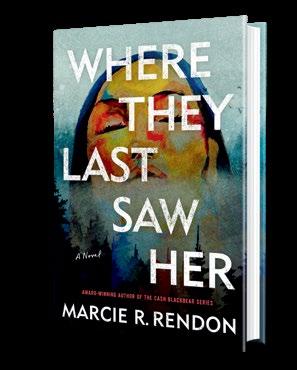
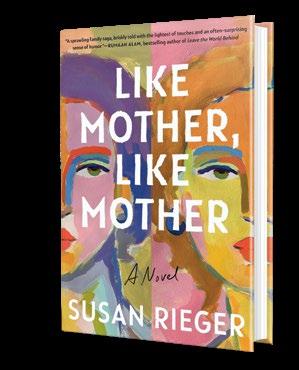
By Marcie R. Rendon

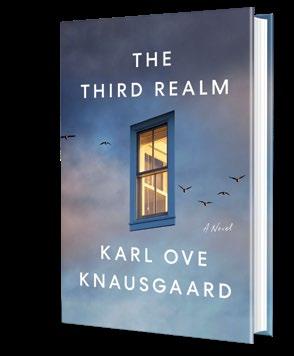
Brannigan, Ellie | Crooked Lane (288 pp.)
$29.99 | Dec. 10, 2024 | 9781639109210

Inheriting an Irish castle plunges an American into a morass of murder.
Rayne McGrath and her newly discovered cousin, Ciara Smith, inherited McGrath Castle from her uncle with a caveat: They must get the estate out of debt within a year, or serious repercussions will ensue. The very different cousins are learning to get along as Rayne, a Los Angeles wedding-gown designer and daughter of a sitcom star, sets about using the castle as a wedding venue. She and Ciara nervously await the arrival of their first guests—one of Rayne’s clients from LA—whose hefty fee will go a long way toward helping them meet their goal, unless something goes wrong. The wedding party includes hotel heiress Tori Montgomery and her parents; her maid of honor, actress Amy Flores; the groom, sexy actor Jake Anderson, and Josh, his brother and best man; Jake’s assistant, Ethan Cruz; and Amy’s, Tiffany Quick. Rayne, who has days of activities planned, soon notices tensions in the air. Tori’s unannounced pregnancy has made her wedding dress too tight, but there’s just enough material to let it out. Then Tiffany falls, jumps, or is pushed to her death from the castle tower—Garda Dominic Williams inclines toward pushed. Members of the wedding party begin to bicker, and Jake is furious when he learns that Tori’s pregnant. Not all the locals want to see the cousins succeed, and some actively work to sabotage them. Clearly, the wedding plans face serious problems, and Rayne must solve a murder or watch her dreams crash to the ground. An atmospheric background and diverse candidates for the killer add up to a fun read.
Clare, Alys | Severn House (256 pp.)
$29.99 | Dec. 3, 2024 | 9781448313006

In 1605, an English physician’s trip to the Far East has unforeseen repercussions.
Dr. Gabriel Taverner, who can’t resist the lure of the sea, sets sail on the merchant ship Luipaard . The trip could make him wealthy, but adventure is what he craves, and he gets that adventure when he finds out that the ship is headed for Japan, which has been visited by hardly any Europeans except the Portuguese. The ever-curious Gabriel is both fascinated and dismayed when he realizes the ship will stay in Japan a year or more. Romeu Silvestre, the Portuguese merchant they’re dealing with in a port town near Nagasaki, was married to the daughter of Aroto Tagauchi, a powerful man who’s whispered to own a magical tiger—perhaps made of gold—whose claws can turn into chrysanthemums. Silvestre’s wife died young, and their adult daughter, Chiyo, is unhappy with her grandfather’s plans for her; she secretly slips into Gabriel’s bed at night with plans of her own. Gabriel spends his days learning about Japan, and is entranced by the beauty of the land. The night before the Europeans finally depart, Natsu, one of Romeu’s servants, brings Gabriel a small wooden crate with urgent instructions to keep it secret and open it on board. The next day, as the ship is about to leave, Natsu delivers another bundle—and then the ship is attacked, and she’s killed. The speedy Luipaard escapes, but is dogged all the way back to England by Japanese ships, and Gabriel realizes why when he opens the packages. Things are also going badly back in England, where the doctor taking Gabriel’s place, who’s widely despised, is found murdered in a ditch. Slipping back into his native land, Gabriel relies on a friend to get safely home, and on
his family and friends to protect him from ruthless opponents. Fans of period intrigue will delight in this highly adventurous tale.
Connally, Celeste | Minotaur (320 pp.)
$28.00 | Nov. 12, 2024 | 9781250867605

A free-spirited noblewoman solves multiple crimes in Regency England.
Lady Petra Forsyth, unmarried daughter of the Earl of Holbrook, lives an enviable life. In her father’s house off Berkeley Square, a small complement of servants keeps her free from prying eyes as she entertains her lover, Duncan Shawcross, illegitimate son of the late Marquess of Langford and grandson of the Duke and Duchess of Hillmorton. Her relationship with Shawcross is pretty much an open secret among London’s elite. It is in fact his grandmother who brings Lady Petra to brunch with Queen Charlotte. But one day the Queen, who seems to entertain her subjects at home quite regularly, has a special request for Petra: She wants her to investigate the sudden death of the matron at the Asylum for Female Orphans, where noblemen of the realm routinely stash daughters born of their irregular liaisons with housemaids. Although she’s preoccupied by the recent revelation that Emerson—Viscount Ingersoll, her late fiance—may have been murdered, Petra can’t deny her majesty’s request. At the orphanage, she finds a tangled skein of deception, stolen inheritances, and murder. As a bonus, she also discovers a plot by a band of subversives to overthrow the monarchy. Although its haute ton setting nods at Bridgerton , Lady Petra’s story owes more to Sex and the City. She and gal pals Lady Caroline and Miss Charlotte Reed carouse to their heart’s delight,
MURDER’S SNARE
unburdened by financial constraints. They do solve those puzzles, but their brand is joie de vivre. A light and lively romp.
Doherty, Paul | Severn House (224 pp.)
$29.99 | Dec. 3, 2024 | 9781448313105

A series of gruesome medieval murders have their roots in England’s war with France. In the mid1300s, Englishmen of power formed Free Companies that went to France to loot, rape, murder, and destroy. Now, they are paying the price for their sins. Members of Via Crucis are being killed in appalling ways, and it falls to Sir John Cranston, Lord High Coroner of London, and his friend Brother Athelstan to solve the crimes. French envoys are in London working toward peace, but one of their demands is turning over members of Via Crucis to face justice in France. Most are protected by the Crown, but someone’s already delivering their heads to be displayed at the Tower. In addition to that series of crimes, someone’s killed Bardolph the Tax Collector in a locked room at the Piebald Tavern, where many of Athelstan’s parishioners congregate. When Cranston and Athelstan go to meet Thibault, John of Gaunt’s Master of Secrets, he shows them the scourged corpse of another member of Via Crucis and introduces them to Sir Oliver Ingham, who explains that the remaining members plan to use their ill-gotten wealth to
build a hospice for lepers. They next visit the Fisher of Men, who was also in France and recently found a treasure in the Thames. As the murders continue, Athelstan realizes that the really grisly ones are mimicking the Stations of the Cross. Two distinct groups seem to be seeking revenge, and with so many suspects it will be quite a task to unravel the series of macabre murders. The often-unpleasant sights, sounds, and smells of London come alive as a harrowing backdrop to a complex mystery.
Kenna, Alex | Crooked Lane (256 pp.)
$31.99 | Nov. 12, 2024 | 9781639109371
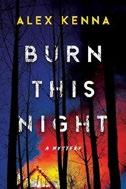
An ex-cop private eye whose ADHD is the least of her problems gets pulled into a cold case that’s anything but.
After learning that she’s not her father’s biological daughter, Kate Myles sends her DNA to a company she hopes will identify the sperm donor, or at least some of his relatives. She gets two leads: Myra Davies, and Jay W., who turns out to be a false flag for Harry Castile, a retired cop consulting with San Bernardino Homicide, whom Kate’s worked with before. Harry submitted some DNA from the person who presumably strangled high school student Lisa Forester 20 years ago, and he wants Kate’s help once more. She’s not eager to work for free on the chance of convicting one of her biological relatives of murder, so Harry offers her a more lucrative side
gig in the same neighborhood: serving as the investigator for attorney Richard Evans, whose client Jacob Coburn has been arrested for setting the Hillside Fire, a blaze that claimed two victims. Since Evans is convinced that Jake—whose life to date has involved one bad decision after another—fully intended to kill his sister, social work student Abby Coburn, the case seems hopeless. But it does give Kate an excuse to poke around in the mystery of Lisa’s death, and Kenna the excuse to spin out a series of flashbacks as intricately layered as those in Kate’s debut, What Meets the Eye (2022). In the process, Kate uncovers some truly unnerving suspects, and both Myra Davies and the father Kate finds play crucial roles in identifying them, though the final unmasking will probably surprise the detective more than her readers. Solid, heartfelt spadework into an alarming range of graves.
Lovesey, Peter | Soho Crime (384 pp.)
$28.95 | Dec. 3, 2024 | 9781641296151
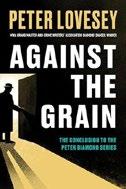
Superintendent Peter Diamond finds himself down on the farm. After a prologue clearly inspired by the climactic chapter of Frank Norris’ epic 1901 novel
The Octopus , Lovesey shows his franchise hero—still resisting the push to retirement—reluctantly accepting the invitation his old deputy Julie Hargreaves has extended to him and his partner, Paloma Kean, to pay an extended visit to the Somerset farm where she lives. Julie, it turns out, didn’t leave the service because she wanted to escape Diamond’s overbearing manner, but because she was going blind from macular degeneration. But she’s still keen-eyed enough to doubt that Claudia Priest was rightfully convicted of manslaughter
for causing the death of art dealer Roger Miller, the former lover who was found dead in a grain silo, where he was searching for the garter Claudia playfully hid. Realizing that Julie invited him specifically to reopen the case, Diamond agrees to do so even though he has no legal standing. Aping by turns Poirot and Columbo, he chats up Claudia’s other lovers, wealth manager Fabio Fortunato and insufferable Bert Dombey, who’d competed to find that fatal prize, which Claudia insists she put into a bull pen and someone else must have moved to the silo where Roger met his end. While Diamond and Paloma are still onsite, Claudia’s released from prison just in time to be accused of killing Diamond’s principal suspect. Along the way, Diamond gets to drive a tractor and deliver a calf, all the time laboring to unmask the real murderer before he’s unmasked himself, as an unauthorized investigator from the Bath CID. Readers lulled by the bucolic byplay will be pleasantly surprised by the identification of a killer they never suspected.
Mark, David | Severn House (240 pp.) $29.99 | Dec. 3, 2024 | 9781448312016
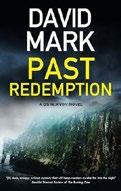
T he threat of a dangerous criminal’s early release puts a Yorkshire police squad on high alert. A prologue illustrates the depravity of crime kingpin Decland Parfitt, a prolific pedophile and alleged murderer.
Thirteen years later, his shrewd lawyer, Cillian Dodds, works skillfully to engineer his early release. Before Mark’s peripatetic procedural returns its laser-like focus to Parfitt, the author introduces a new thread: The desperate attempts of an erratic recovering alcoholic named Joe to reconnect
with his daughter, Bella. Only then does Mark update series fans on the doings of his police team. As he receives updates on Parfitt, DI Aector McAvoy is proudly following his wife Roisin’s appearance at Mabon, a celebration of the autumnal equinox. His mentor and confidant, DCS Trish Pharaoh, is following Parfitt’s foster daughter Ruby, now an adult in a toxic relationship, who’s vigorously denied any wrongdoing by her father. It’s left to DS Ben Neilsen to handle the case of a corpse discovered in the middle of the night, whose potential connections to Parfitt and Joe are explored by the tangled plot. Written with gritty economy, Mark’s longrunning series has built a compelling community of cops and criminals and their families and victims. His decision to give his large cast of regulars full attention is a gift to readers and a rarity in the genre. Their long arcs should delight fans, but may challenge those new to the series— unless of course they feel compelled to catch up on earlier episodes. A satisfyingly nuanced and complex procedural.
McPherson, Catriona | Severn House (240 pp.)
$29.99 | Dec. 3, 2024 | 9781448312849

A transplanted Scot’s approaching nuptials transform her into bridezilla.
Marriage therapist Lexy Campbell lives on a houseboat behind the Last
Ditch Motel in northern California, home to most of her favorite people. Her business has been called Trinity for Life ever since her friend Todd joined in, bringing his expertise in beauty makeovers. The third member of the team is Kathi, part owner of the Last Ditch, a germaphobe who helps people declutter. To add to their portfolio of services, Kathi is also a licensed private detective who runs Trinity Investigations, which, despite the friends’ wild eccentricities, has had some notable success in crime solving. A volunteer group called the Sexton Beetles that maintains the local graveyard hires them to see who’s been causing disturbances there that could be said to resemble performance art: Someone decorated one grave with rainbow flags, streamers, and flowers; left dead snakes on another; and spelled out inappropriate words with pebbles. The police aren’t interested in these hijinks, leaving Lexy and her crew to figure out what all the grave desecrations mean. Meanwhile, Lexy’s been ambivalent about making wedding plans before she and her fiance, Taylor, have a serious talk about money. But that doesn’t prevent her from looking at venues. While she’s entertaining possible locations, she finds Sister Sunshine, a wedding planner who just happens to have a cancellation. Lexy’s friends suffer from her transformation into a bridezilla trying to concoct the perfect wedding alongside her parents, who’ve come over from Scotland to help. When Sister Sunshine is found on the wedding day strangled with a defective string of decorative lights, Lexy has to revert
A transplanted Scot’s approaching nuptials transform her into bridezilla.
SCOTZILLA
BOOKED
from bridezilla to detective and solve the crimes with help from her zany cohort.
The cemetery caper and the murder play second fiddle to the escapades of Lexy and her lovable but bizarre friends.
Nelson, P.J. | Minotaur (336 pp.)
$28.00 | Dec. 10, 2024 | 9781250909954

An actress learns about life, herself, and homicide when she inherits a bookshop. When Madeline Brimley was growing up in Enigma, Georgia, she spent less time with her parents than with her late aunt Rose, once Rose retired from the Broadway stage, moved home, and opened the Old Juniper Bookshop. Now, the house and bookshop feel like a lifeline to Madeline, whose own career as an actor in Atlanta has stalled—until, just after she returns to her aunt’s Victorian mansion for the first time since she inherited it, she spots the backyard gazebo in flames. Capt. Jordon of the fire department says it was arson and seems to suspect Madeline; then Madeline gets a threatening call on her aunt’s landline telling her to clear out. It’s not much of a welcome, but things improve when Rose’s best friend, Dr. Philomena Waldrop of nearby Barnsley College, arrives on the scene. Then, Tandy Fletcher, a Barnsley student who used to help Rose, offers to work in the shop for free because
she enjoys it; soon, after a tiff with her roommate, she asks to stay with Madeline overnight, and cooks a fantastic meal. But the threatening calls keep coming, the shop is set on fire, and Madeline finds Tandy stabbed to death. Furious and upset, Madeline decides to investigate with help from Gloria Coleman, an Episcopal priest who’s had fire troubles of her own. She finds out that Tandy’s roommate is in love with chem major and meth cooker Bo Whitaker, who claims to have been in love with Tandy. In addition, Madeline is suspicious of a property speculator who wants to buy her place and the church to build an outlet mall. Though she keeps changing her mind about who’s guilty, she won’t quit until she ascertains whodunit. Plenty of suspects with varied motives provide a knotty puzzle for a conflicted heroine.
Sears, Michael | Soho Crime (352 pp.) $28.95 | Dec. 3, 2024 | 9781641295451

Ready for a walk on the seamy side of contemporary New York social policy? Sears has your number, and everyone else’s. Life’s not easy for Haidir Khalil. Even though his mother has finally won American citizenship, he’s afraid of getting caught up in an ICE dragnet, losing his job at Manny Singh’s Fruit & Produce, and getting shipped back to Yemen at
14. Nor is life easy for Haidir’s stepfather, Mohammed Al Fazal Mahdi, who owes more than $40,000 to immigration lawyer Howard Spitzer, who has yet to produce any significant development in a case that should be routine. And when you come to think of it, life’s not even easy for Stop the Spike activist McKenzie Zielinski and Ted Molloy, her live-in lawyer, who employ Mahdi as a driver. They share a cramped apartment, spend every waking hour trying to keep greedy developers like Ron Reisner from expanding their empires further at tremendous cost to the locals and their city, are subject to abduction by unsatisfied mob bosses’ henchmen, and struggle to counter the false news stories that are spread about them after Kenzie finds Spitzer dead in his office, and Det. Duran of the NYPD takes a serious interest in her. Ignoring the obvious motives of Bruce Hillyer, Spitzer’s partner— whose wife was having an affair with Spitzer—Duran loses his interest in pinning the murder on Kenzie only when he decides that the figure she glimpsed fleeing Spitzer’s office was actually Haidir. On the way to unmasking an anticlimactic perp, Sears finds dirt on every bite of the Big Apple. Though the protagonists survive more or less intact, there’s bound to be steady work awaiting them next time.
Shannon, John | Unnamed Press (272 pp.)
$28.00 | Feb. 25, 2025 | 9781964008004
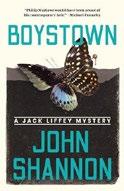
A 21st-century Philip Marlowe blithely soldiers on. Now that wisecracking LA shamus Jack Liffey is down— but not out— after open heart surgery and a stroke, his girlfriend,
Gloria, is on hand to assist in his recuperation. So is his daughter, Maeve, who wants his help in finding her roommate Bunny’s missing brother, Benjy, who was last seen at a gay rights rally. Maeve has yet to identify Bunny as her girlfriend, but it’s not exactly a secret. While Jack’s hobbling to the lunch table, a Ukrainian Jew named Petro Ivanchuk Pogorelets is chasing butterflies in the Eastern Sierras, dangerously close to a small group of hunters led by the arrogant Zeke Tomlin. In an effort to impress his friends, Zeke shoots Petro, who falls but uses his butterfly net as a hiking pole to escape. All this unfolds in the brisk opening chapter of Shannon’s 15th Liffey novel, which jumps round-robin fashion in short cuts between multiple locations. The deft juggling of multiple characters and plotlines, bolstered by a mastery of the sharp one-liner, makes Shannon’s long-running series compulsively readable. Keeping up with every new character and twist is challenging but rewarding. It doesn’t matter that the other members of the hunting party want to distance themselves from Zeke, who’s clearly tangled with the wrong lepidopterist. When Petro teams up with the super-shady Sergei, who lives off the grid, sweet vengeance is on the menu in an homage to Reservoir Dogs . Will Gloria’s vengeance be equally severe when she learns that Jack’s slept with the gritty intellectual Yana?
A lively private eye caper with a delightfully diverse cast.
Shelton, Paige | Minotaur (256 pp.)
$28.00 | Dec. 3, 2024 | 9781250910462
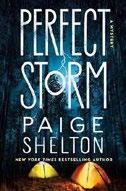
A cat-and-mouse game must end with death in the latest installment of Shelton’s Alaska Wild series. After her kidnapping and
A cat-and-mouse game must end with death in the latest installment of Shelton’s Alaska Wild series.
PERFECT STORM
torture by Travis Walker just over a year ago, Beth Rivers managed to escape and flee to Benedict, Alaska, where she hid until Travis was caught and her story became big news. When Travis escapes during a prison transfer, she decides to stay in the town she’s grown to love and where her friends have a plan to keep her safe, even though her location is no longer a secret. In addition, her long-missing father is back, and her mother, who spent years searching for him, suddenly turns up in Benedict, too. Deciding she needs to lay low for a while, Beth decides that a camping trip with her boyfriend, Tex, would be a good way to get out of town while having a new experience. Heading for a cabin very few know exists, Beth and Tex run into Jin, a woman who lives in nearby Blue Mine, and her horse, who’s carrying a body she says is her husband, Brick, who she thinks was murdered along with several other local residents. They take Jin back to Blue Mine so that Tex can investigate before reporting to Gril, the local lawman. During an overnight stop on the way to Benedict, Jin vanishes in a violent storm along with the horse and the body. Back in town, Beth is enjoying the protection of her friends when Jin turns up again mentioning a newcomer to Blue Mine, a reclusive Benedict resident whose family once owned a mine he wants to reclaim. Searching for her dog, Beth almost drowns in a creek before she’s rescued by a masked man she
thinks is Travis. But why would he of all people save her?
Wild adventures and conflicting stories meld in a breathless page-turner.
Straley, John | Soho Crime (288 pp.)
$28.95 | Nov. 12, 2024 | 9781641296540

A sometime detective’s search for an adopted infant whose mother wants to reclaim him unfolds in ways that are strange even for Straley, who sets a high bar for strange.
Time was when Delphine Stockard served as her husband John’s partner in D & J Investigations, which helped criminal defense attorneys build their cases. But even before John was killed by a drunk driver, they dissolved the partnership, and Delphine, trained as a biologist, went back to her first love: studying the mental processes of large-brain animals. Now, she’s been stricken with pancreatic cancer, and the end is clearly upon her. In the meantime, though, John’s old friend Tom Foster, who still works as a PI, pleads with her to help him locate a 15-month-old whose mother sold him as a newborn to Tyler Dearborn, a self-described rancher who’s rumored to have pimped out endless young women and sold their offspring to finance his dreams of amassing a fortune in gold. Delphine’s not interested in bringing
the repellant Tye to justice; she just wants to recover the three babies she’s told are traveling with him. She has no trouble locating Tye and his associate, the Babysitter, but neither of them will listen to reason, and the dying Delphine brings limited resources to the job of persuading them. This non-whodunit would already be unusual, even if it weren’t repeatedly interrupted by Delphine’s memories of her life before and during her marriage and long passages that provide more information about whales than anything you’ve read since Moby-Dick . The result—with a heroine based, as Straley notes in his closing acknowledgments, on his real-life wife—is, well, strange.
The real star here is the tranquil, hard-won meditations on mortality tucked into every crevice.
Wade, Kevin | Celadon Books (240 pp.) $27.99 | Jan. 28, 2025 | 9781250355102

The premature death of his oldest friend sends a rookie Nassau County, Long Island, police chief down Memory Lane. It’s one bumpy trip.
When the body of John Payson Chambliss, the scion of wealthy blue-blood Pete Chambliss, washes up on the Bayville beach, everyone assumes he was accidentally struck by a boat—everyone but Chief Jeep Mullane, Johnny’s high-school lacrosse teammate, who’s struck by the unexplained scratches on Johnny’s back. As Jeep peels back the layers of mystery surrounding Johnny’s death, screenwriter Wade, best known for the TV series Blue Bloods, interleaves his account of Johnny’s funeral, Jeep’s awkward reunion with Johnny’s ex-wife, and his pursuit of a wellorganized gang’s recent spate of big-ticket car thefts in the area with a measured series of flashbacks to key
JOHNNY CARELESS
incidents spaced a year apart and marching toward the present. Jeep takes the rap for Johnny hitting a deer with the family car. Johnny gets it on with visitor Catalina Soto, and sends her money to raise the son she bears back in Santiago until Pete ends the payments by threatening to cut off Johnny’s trust fund. Jeep, attempting to live up to the model of his father, an NYPD officer whose tireless work at Ground Zero led to his early death, struggles to balance loyalty to his friends, his team, and the law. He takes up with a model who wants to stop her artist lover from adding nude photos of her to his professional portfolio without a release, a fling that ends very badly indeed. A colleague repaying a questionable favor sets Jeep on a promising trail to Johnny’s possible killer.
A haunting debut novel that works through misunderstandings and violence to something that feels like redemption.
Mrs. Morris and the Venomous Valentine
Wilton, Traci | Kensington (368 pp.)
$8.99 paper | Dec. 24, 2024 | 9781496748805

A narcissistic photographer and a bevy of models take over a B&B—with murderous results. Salem, Massachusetts, is home to Charlene Morris’ haunted bed-and-breakfast. Dr. Jack Strathmore, the ghost in residence at the house he used to own, loves and watches over
Charlene. Dane Stallone, a photographer originally from Salem, and 12 international models of both sexes are staying at the B&B while they shoot a Cupid-themed calendar Dane hopes will replenish his bank account. Dane is more than just a hard taskmaster: His work with the models, some of whom are or were in love with him, borders on sadistic. Though there’s no denying Dane’s talent, Charlene wonders what hold he has over the models who put up with his awful treatment. But despite her misgivings, she uses her background in marketing to help him come up with an appealing concept for the calendar. Meanwhile, another guest arrives: Avery Shriver, Charlene’s daughter of the heart, who wants to be a detective like Charlene’s boyfriend, Sam Holden. The models are all on starvation diets, but Dane takes them out for dinner once the shoot is complete. Dane appears to choke on an oyster, then develops symptoms of poisoning and dies. Charlene will need plenty of help from Jack, Sam, Avery, and a few witchy friends to sift through motives and crack the case before more deaths follow.
There are so many motives and suspects that this mystery will keep you guessing.

For more by Traci Wilton, visit Kirkus online.


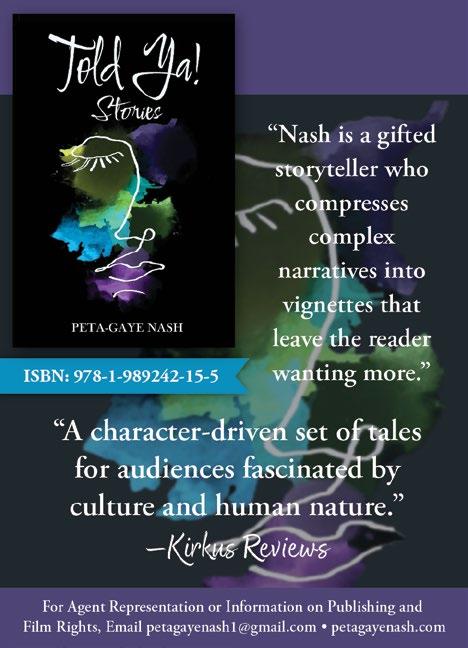
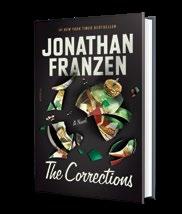
CBS Studios is developing an adaptation of Jonathan Franzen’s award-winning 2001 novel.
Jonathan Franzen’s The Corrections is headed to the small screen, with Meryl
Streep set to star, Variety reports.
Franzen’s novel, published in 2001 by Farrar, Straus and Giroux, follows the couple Alfred and Enid Lambert; Enid wants to have a family Christmas celebration before Alfred’s precarious health declines even more. The couple’s three adult children, meanwhile, face problems of their own.
The novel was a breakout hit for Franzen. It won the National Book Award and was named a finalist for the Pulitzer Prize, National Book Critics Circle Award, and the PEN/Faulkner Award. Oprah Winfrey picked the novel for her book club but rescinded an invitation for Franzen to
appear on her show after he said in an interview that he was conflicted about the book’s selection.
Streep, an Academy Award winner for Kramer vs. Kramer, Sophie’s Choice, and The Iron Lady, will star in the series, which is being developed by CBS Studios. Franzen will write and executive produce.
Franzen’s novel was in the works as a film shortly after it was published, but the project never got off the ground. In 2011, it was

announced that Noah Baumbach would be adapting the novel as a series starring Chris Cooper, Dianne Wiest, Ewan McGregor, and Maggie Gyllenhaal, but HBO, which was developing the series, decided not to pick up the pilot.—M.S.

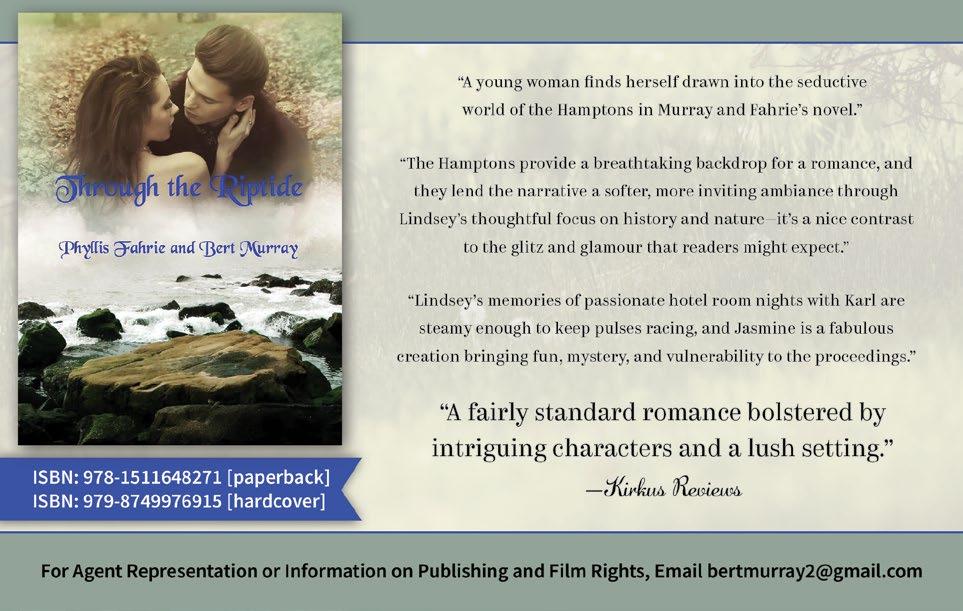



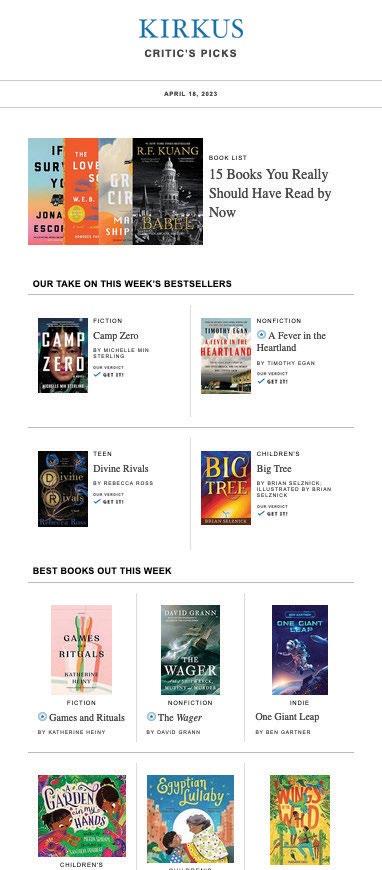




EDITORS’ PICKS:
The Beautiful Game by Yamile Saied Méndez (Little, Brown)
John the Skeleton by Triinu Laan, illus. by Marja-Liisa Plats, trans. by Adam Cullen (Yonder)
Night Magic: Adventures Among Glowworms, Moon Gardens, and Other Marvels of the Dark by Leigh Ann Henion (Algonquin)
A Reason To See You Again by Jami Attenberg (Ecco/ HarperCollins)
THANKS TO OUR SPONSORS:
Rear-View Reflections on Radical Change by Linda Mary Wagner
Do the Next New Thing by Pamela Lamp
Aylen Isle by Aud Supplee
Fully Booked is produced by Cabel Adkins Audio and Megan Labrise.

Rumaan Alam offers a scintillating exploration of ambition in Entitlement
On this episode of Fully Booked Alam joins us to discuss Entitlement (Riverhead, Sept. 17)—a novel that “cements Alam’s status as a talented truth-teller willing to tackle tough issues with grace, generosity, and sensitivity,” Kirkus writes in a starred review.

Alam is the author of Rich and Pretty, That Kind of Mother, and 2020 National Book Award finalist Leave the World Behind, which was made into a major motion picture starring Julia Roberts and Mahershala Ali. His writing has appeared in outlets including the New York Times, New York Magazine, the New Yorker, and the New Republic, where he is a contributing editor. He lives in New York with his family.
Here’s a bit more from our review of Entitlement: “Whereas Alam’s previous book, Leave the World Behind (2020)… focused on cataclysmic external threats, his new novel explores a threat from within: ambition. Or maybe that’s not quite right, because the blinding ambition of Alam’s protagonist, Brooke Orr, a Vassar-educated Black woman raised in New York City by a mission-driven white mother, is shaped by the world in which she finds herself and is propelled by its inequities. After years in an unrewarding teaching job at a Bronx charter school, Brooke, 33, takes a job as a program coordinator at 83-year-old white billionaire Asher Jaffee’s charitable foundation and is embraced as his protégé. But once Brooke has been welcomed into Asher’s place of privilege, she believes she is entitled to all it can provide….As Brooke makes increasingly ill-advised decisions, the tension slowly and compellingly builds toward a dizzying conclusion that feels both surprising and inevitable. Here, as always, Alam’s facility for vividly setting a scene or finding just the right detail or metaphor, his ability to journey inside the


Alam, Rumaan Riverhead | 288 pp. | $30 Sept. 17, 2024 | 9780593718469
minds and emotions of a range of people, and his willingness to unflinchingly and insightfully address issues of race, class, gender, and age are on full display.”
Alam introduces Entitlement by calling it “a book about money,” and explains why that’s “kind of a cheat.” We discuss Brooke and Asher: how they regard themselves at the beginning of the book; how they regard one another; and how their relationship changes. We talk about the setting—pre-pandemic New York—and the subplot involving the Subway Pricker, a criminal who pricks women with a hypodermic needle. We contemplate the consequences of proximity to privilege, whether the novel is a morally neutral form, and why so many forthcoming novels are set in pre-pandemic times.
Then editors Laura Simeon, Mahnaz Dar, John McMurtrie, and Laurie Muchnick share their top picks in books for the week.
Editor-at-large Megan Labrise hosts the Fully Booked podcast.
Allain, Suzanne | Berkley (272 pp.) | $19.00 paper | Dec. 10, 2024 | 9780593549667

A young woman makes the mistake of falling in love with a charming earl while posing as her noble cousin.
When Lady Strickland dies unexpectedly, few people are more relieved than the awful woman’s daughter, Lady Isabelle, and niece-by-marriage, Arabella. Free from her taunts and abuse, both women are ready to take control of their lives. Isabelle wants to spend her days reading, but her great-aunt insists she continue with her coming-out as soon as her year of mourning is over, and Bella talks her into heading for London. Isabelle worries that with her poor health, there’s no way she’ll survive the season, and when she realizes that great-aunt Lucretia is severely nearsighted, she comes up with a plan to have Bella take her place for the season. Bella reluctantly agrees, not having the heart to throw her cousin into another overwhelming situation after her mother’s death. Bella has a sense of wonder and excitement as she makes her debut in society, knowing that her lack of standing would otherwise have prevented her from having these experiences. She barrels headlong into the London ton with unabashed curiosity, often landing in wild, quirky scenarios. The charming Lord Brooke, an eligible earl, is interested in courting Bella, thinking she’s her wealthier and more appropriate cousin. Bella’s struggle with her secret as she falls in love with a man above her station provides the bulk of the tension in the book, which is sweet without being twee. Once the story moves past the initial whiplash of the opening, in which Lady Strickland dies within two sentences and readers have to untangle who’s
related to whom, it blossoms into a lively romance featuring charming banter, a heartwarming bond between the two young women, and various Regency shenanigans. Isabelle and Arabella’s neglectful and abusive upbringing is mentioned, as is Isabelle’s panic disorder, but these are touched upon rather lightly, and the tone very much stays centered in the realm of bubbly and airy. A flirty and cozy romance that’s heavy on laughs and light on angst.
Balogh, Mary | Berkley (368 pp.)
$29.00 | Jan. 7, 2025 | 9780593638415

A late-in-life romance offers a second chance at love to childhood sweethearts. Clarissa Ware, the Dowager Countess of Stratton, has come home to the family estate of Ravenswood to decide what she wants from life as her 50th birthday nears and her children are grown. Matthew Taylor, her childhood friend, had receded to a distant acquaintance for decades, as was dictated by her married state. Also widowed, he is now a social yet solitary carpenter who has made peace with his own losses, including that of a stillborn baby. When Clarissa commissions him to craft a crib for her grandchild, she also asks if they might renew their old tie now that they’re both alone. While their connection is rekindled quickly, the difference in their stations incites gossip in the neighborhood and trepidation in her family. Matthew also has to decide if his detachment—learned through meditation at a monastery in the Himalayas—represents true happiness or a way to avoid the risks of intimacy. Dramatizing complex human emotions within a romance plot is a classic feature of Balogh’s novels. She alternates her older protagonists’
inner monologues with scenes of their time together, memories of past injuries, and social gatherings involving a vast array of characters. The result is a layered, slow-moving story best read in a reflective mood. A Regency romance that is light on sexuality and heavy on sentiment and self-assessment.
Connor, Erin | Forever (352 pp.) | $17.99 paper | Jan. 14, 2025 | 9781538759424

A one-night stand leads to a mutually beneficial agreement between a romance author and a heartthrob actor in this trope-filled rom-com.
When Sawyer Greene and Mason Álvarez-West get stuck in an elevator, Sawyer is not interested in this being the meet-cute beginning of a new romance. Her ex-girlfriend left her believing it was impossible to balance writing and a relationship, and Sawyer is already behind deadline for her next book. A no-strings hookup seems a great idea, though…until she runs into Mason again at an adorable Christmas market. Hopeless romantic Mason’s on-screen turned off-screen romance is over, and he needs to remain single for a while to stay out of the tabloids in anticipation of a big upcoming announcement about his career. Cue what they call “Mission: (un) Romance”—Sawyer and Mason agree to participate in several romantic cliches together so she can inoculate him against them through exposure while also getting inspiration for her next book. The only rules are no more sex and no falling in love—both of which become increasingly difficult to follow. Set during a Chicago winter, this swoony, humorous love story is sure to warm hearts on cold days. Chapter headings that define various romance tropes (“Crash Landing: Falling for
THE STARLIGHT HEIR
them—literally. Bonus points for landing on top of them, faces millimeters apart”) make it clear that debut author Connor is writing with love for voracious romance readers. The pacing meanders as the plot moves forward in sometimes inorganic ways, but the delightful couple remains compelling on their “strangers to friends to lovers to idiots to lovers” journey.
An immensely charming debut.
Howard, Amalie | Avon/ HarperCollins (368 pp.) | $18.99 paper | Jan. 7, 2025 | 9780063355842

A royal invitation turns a talented bladesmith’s life upside down, forcing her to flee with an illegitimate prince.
Suraya Saab’s dealings with royalty usually come in the form of commissions to make weapons imbued with some of the world’s last remaining slivers of magic. Now, however, a glittering envelope arrives with a different request: King Zarek wants her to travel to the capital city of Kaldari to meet the crown prince, along with many other women. In public, the palace has positioned this event as a grand search for Prince Javed’s bride. In reality, the royal family is looking for a woman integral to an ancient prophecy, who’s rumored to hold the power of the stars. There are two distinct parts to this romance, inspired by Persian and Indian mythology. First is the fish-out-of-water depiction of Suraya navigating the
capital and royal court, which her forge and her background as a tradeswoman hardly prepared her for. Joining the throngs of other women competing for Prince Javed’s hand, Suraya finds that it isn’t the crown prince who captures her attention but his illegitimate half brother, Roshan. When the event is interrupted by a rebel militia and Prince Javed tips his hand about his true intentions, Suraya and Roshan plot an escape—and with no one to rely on but each other, something else begins to take root in their unlikely partnership. The romance starts strong, with Suraya questioning whether Roshan is someone she can trust, but fizzles out once they both confess their feelings. Howard also uses some language that feels out of place in her fantastical setting, such as when Suraya talks about “book boyfriends” with her friend Laleh: “Fictional men never disappoint.” Overall, though, a lovely blend of worldbuilding, intrigue, and action keeps the momentum going. An exciting and romantic tale with high stakes and intricately detailed mythology.
Hoyt, Elizabeth | Forever (352 pp.)
$8.99 paper | Dec. 10, 2024 9781538763582 | Series: Greycourt, 3

A seemingly strict nobleman submits to an unusual woman. When they first meet in the Duke of Windemere’s library, Julian and Elspeth are both snooping. Lady Elspeth de Moray is desperate to find a
long-lost book with the potential to save the Wise Women, an ancient secret society to which she’s devoted. For his part, Julian Greycourt is in his uncle’s library hoping to meet a housemaid with something to tell him that he hopes may protect his sisters from the duke’s cruel behavior. When they hear the duke approaching, they flee to the library’s upper level and hide in a corner—with Elspeth crouching between Julian’s legs. It isn’t until shortly afterwards, when the two are properly introduced at the duchess’ tea party, that they realize they should hate each other, since Elspeth’s brother is rumored to have been involved in the mysterious death of Julian’s sister. But it’s too late for that; their close connection in the library leaves both excited to see each other again. This attraction explodes into an affair when it becomes clear that the inexperienced Elspeth isn’t scared off by Julian’s need to be ordered around in the bedroom, but their intimate connection vies with the desperate need they both have to keep their secrets and care for the people they love. As it’s been several years since the earlier titles in the Greycourt series were published—most recently, When a Rogue Meets His Match (2020)—a lot of exposition is needed to illuminate the connections among characters. Unfortunately, this overload of backstory combined with a complicated and uneven plot may leave readers feeling lost, especially if they’re starting with this volume. However, the chemistry between Julian and Elspeth is spicy and intriguing from the first pages, and the tender depiction of his desire to be submissive—and her willingness to learn to dominate him—provide a compelling reason for readers to stick with it.
A promising return from a beloved historical romance author.

Kirkus Star
Long, Ilana | Berkley (368 pp.) | $19.00 paper | Nov. 12, 2024 | 9780593642238

When a recently divorced Seattle woman tries her hand at pickleball, it kicks off a summers’ worth of shenanigans, self-help, and steamy romance. Just six months past her divorce, Meg Bloomberg decides to channel her self-pity in a different, more useful direction: playing pickleball. Actually, her friend Annie Yoon cajoled her into it, but after just a few volleys Meg can’t help but admit that playing pickleball is kind of fun. Meg joins Annie’s Lakeview pickleball league, which boasts a crew of charmingly kooky characters, including a guy known as Reflux Dave, a smack-talking bird-watcher named Jeannie, and the wise, grandfatherly Rooster. But just as Meg’s pickleball love story is beginning, her local court is threatened by environmental do-gooders—and they’re led by not just any earth-friendly consultant, but one specific environmentalist Meg hooked up with a few weeks back. Ethan Fine wants to transform the pickleball court back to its original wetlands state, but that won’t happen if the league has any say in the matter. Meg enters the beginners’ Picklesmash Tournament hoping to use the prize money to save her court, and heads to nearby Bainbridge Island, the birthplace of pickleball, to practice and clear her head of any Ethan Fine distractions. But of course, she runs into the man almost everywhere she goes on the island. She learns that not only is Ethan conspiring to destroy her court, but he’s also competing against her team in the tournament. Can Meg get her groove back and save the Lakeview league while secretly sleeping with the enemy? Long’s sporty romcom is a joyful, slapstick journey about a 30-something woman desperate to reconnect with her true self, full of
insight, friendship, and hijinks. Readers will root for Meg’s victory as she volleys for Ethan’s heart, the Golden Pickledrop, and her happily-ever-after. Long’s debut rom-com is a funny, feel-good adventure you won’t want to miss.
The Muse of Maiden Lane
Matthews, Mimi | Berkley (384 pp.) | $19.00 paper | Nov. 19, 2024 | 9780593639276
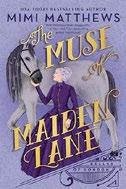
A silver-haired equestrienne and a disabled artist navigate the expectations of Victorian society while falling in love.
Stella Hobhouse is accustomed to standing out for all the wrong reasons, thanks to the gray hair she’s had since she was 16. Now, at 22, she’s beginning to wonder if she’s destined for spinsterhood, since her love of horseback riding and independent nature haven’t exactly made her a desirable marriage candidate. Trapped at a friend’s house party over the holidays, Stella has resigned herself to being a wallflower—until she runs into a handsome stranger in a wheelchair. The thing is, Teddy Hayes isn’t exactly a stranger. Stella met him once before, when their paths crossed at a museum in London, and the charming artist now makes her the same proposition he did then: He’d like to paint her. As far as Teddy is concerned, Stella is not only the most striking subject he’s ever encountered, but the most beautiful woman he’s ever seen. Convincing her to pose is an entirely selfish request, one that Stella initially meets with resistance. As an unmarried woman, it would hardly be appropriate for her to sit for Teddy, especially if it means they’ll be alone. But Teddy isn’t so easily deterred; he’s adopted a new
philosophy of life following the bout of scarlet fever that put him in a wheelchair, and he sees little reason not to pursue what he wants. As Stella navigates her increasing level of interest in Teddy while trying to avoid her clergyman brother’s efforts to marry her off, and Teddy attempts to convince Stella that she’s lovely enough to be his muse, they both realize they could be of use to each other—by way of a marriage of convenience. The fourth chapter in Matthews’ Belles of London series is a charming conclusion, bringing back many fan-favorite characters from previous installments to support the main romance. The stakes may be high when Stella and Teddy are forced to consider marrying each other for mutual benefit, but the angst level isn’t, and their journey to falling in love is as sweet as it is satisfying.
An effortlessly elegant slow-burn romance.
Tai, Tara | Alcove Press (320 pp.) | $18.99 paper | Jan. 7, 2025 | 9781639109937

A woman lands her dream job writing a romance arc for a video game, only to discover that her new boss doesn’t believe in love.
Catherine Li is thrilled to receive
a one-year offer from Heartrender Studios to write the romance arcs for their forthcoming game Compass Hollow. Even more exciting, she’ll be working with Andi Zhang, a creative genius who was the victim of vicious doxxing after gamers discovered they were nonbinary and Asian American. Compass Hollow is Andi’s first game as narrative director since the doxxing; hurt and wary, Andi has resisted their higher-ups’ directive to add love interests to the game. Andi’s primary strategy is to ignore Cat, hoping she’ll go away. Meanwhile, Cat agrees to a
BEAUTIFUL BROKEN LOVE
blind date with a woman named Sally Jenkins. They don’t have much chemistry, but they agree to fake date as a convenience for when both of them need to have a significant other. As time passes, Andi is forced to admit that Cat has some good ideas for improving the game, but their working relationship remains chilly. The two barely appear on the page together, and most of the book is consumed with low-conflict workplace skirmishes and the revelation that Sally is Andi’s ex. Cat and Andi tangle and then ignore each other, a tedious pattern that isn’t resolved until they attend a gaming conference in Las Vegas. When Andi comes face to face with the man behind her doxxing, Cat’s heartfelt defense of Andi finally breaks the ice between them. The romance arc is jammed into the final quarter of the book, sharing the stage with a late-developing corporate espionage plot that is solved by coincidence. A celebration of games and gaming culture with an underdeveloped romance.
Wesley, Jamie | St. Martin’s Griffin (320 pp.)
$18.00 paper | Nov. 19, 2024 | 9781250801876

A football player who owns a cupcake shop unexpectedly goes viral and deals with complicated feelings for his best friend’s sister.
August Hodges may be a football star, but he’s happy to stay behind the scenes when it comes to Sugar Blitz, the cupcake shop he runs with
Donovan Dell and Nicholas Connors, his best friends and fellow football players. But when he’s caught on camera defending cupcakes and women and the appropriateness of football players owning a bakery to some sexist bros, that all changes. Unsurprisingly, women love a football player with a feminist side. Now, he’s known as SugarBae, and he can’t escape the crowds that come into the shop to meet him. With Sugar Blitz opening a new location, August’s partners know they need to capitalize on his 15 minutes of fame, so Donovan wants to hire his little sister, Sloane Dell, to manage their social media. What Donovan doesn’t know is that August and Sloane have a complicated romantic past that led to a broken heart for Sloane; she has no intention of spending her work hours around August, or riding her brother’s coattails, but spearheading a social media campaign for an up-and-coming company could help her get the job of her dreams. She agrees to help out, which means she’s now spending lots of time taking videos of August—and realizing that her feelings for him never really went away. The more time they spend together, the harder it is for them to deny their feelings for each other, but they’ll have to figure out if they’re ready to be vulnerable enough to take a second shot at love. August is a picture-perfect romantic hero—a football player who owns a cupcake shop and is secure in his masculinity. The obstacles in Sloane and August’s way never feel insurmountable, though—there’s a gentrification plot line, in particular, that feels underbaked—and their journey toward a happily-ever-after doesn’t always feel urgent. A sweet romance with a very slow burn.
Kirkus Star
Williams, Shanora | Montlake Romance (384 pp.) | $16.99 paper Dec. 3, 2024 | 9781662518881

A grieving widow is caught off guard by her attraction to an NBA star. Ever since her husband died seven months ago, entrepreneur Davina Klein-Roberts has devoted herself to running her beauty business, hoping to manage her crushing sadness. But when she makes an endorsement deal with Deke Bishop—a cocky and successful basketball player—he shocks her out of her depression. Deke works hard on the court and likes to enjoy the fruits of his stardom off it, but he’s never been with someone who has Davina’s combination of work ethic, beauty, and overall goodness. Even when she warns him that she’s not looking for anything other than friendship, he can’t stop himself from asking for more. Both Davina and Deke have difficult childhood memories—parental neglect, domestic violence, even a sibling’s suicide—so their ability to trust is limited and their road to happily-ever-after far from easy. They start a friends-with-benefits arrangement, but it’s clear that neither will be able to separate their bodies from their hearts. Known for writing domestic thrillers, Williams shows herself to be deft at narrating this challenging path, with fully fleshed-out characters whose anxieties and actions feel true to life. She alternates teary moments, which might evoke Emily Henry, with sizzling sex scenes and charming dates, including a one-on-one game of basketball that proves Davina and Deke have both met their match.
A sports romance that captures the highs and lows of the game of love.


Interactive Content

www.laevnotes.com
Paperback ISBN: 978-1-7343635-3-1
Kindle eBook ISBN: 978-1-7343635-4-8


“Rich personal and cultural history of a young woman in Berlin’s Belle Epoque.”
—Publishers Weekly/ BookLife Reviews

“A tender, personalitycentered biography of golden age Berlin.”
—Kirkus Reviews
“A wonderfully composed portrayal that could be considered narrative Art Nouveau.”
—BookTrib

Behold! Here are the 100 nonfiction titles that captivated us the most in 2024. Biographies, memoirs, histories, and essay collections abound here—everything from books about heroic figures to less noble individuals, from artists to con artists, from the famous to the unsung. What are the origins of the backyard garden, the Black Panther Party, the lithium battery? How will artificial intelligence help us—or hurt us? And, perhaps most pressingly, do salamanders really glow in the dark? All those questions are taken up in the many books that we have selected. Keep reading—you just might find some answers in the following pages.


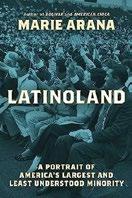

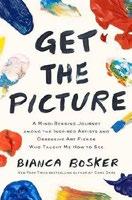
There’s Always This Year: On Basketball and Ascension
Abdurraqib, Hanif | Random House (352 pp.)
$32.00 | March 26, 2024 | 9780593448793
A n innovative memoir encompassing sports, mortality, belonging, and home.
Acocella, Joan | Farrar, Straus and Giroux (368 pp.) | $30.00 Feb. 20, 2024 | 9780374608095
A top notch collection full of information, elegance, and humor.
Latinoland: A Portrait of America’s Largest and Least Understood Minority
Arana, Marie | Simon & Schuster (560 pp.)
$28.99 | Feb. 20, 2024 | 9781982184896
Arana has a fascinating, complex, and personal story to tell, and she narrates it with abundant verve and intelligence.
Everyone Who Is Gone Is Here: The United States, Central America, and the Making of a Crisis
Blitzer, Jonathan | Penguin Press (544 pp.)
$32.00 | Jan. 30, 2024 | 9781984880802
A sobering, well reported history in which no one emerges a winner.


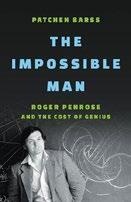

Get the Picture: A MindBending Journey Among the Fanatical Artists and Secretive Art Fiends Who Taught Me How To See
Bosker, Bianca | Viking (384 pp.)
$30.00 | Feb. 6, 2024 | 9780525562207
A delightful book on an inspiring topic.
Roman Year: A Memoir
Aciman, André | Farrar, Straus and Giroux (368 pp.) | $30.00
Oct. 22, 2024 | 9780374613389
An absorbing exploration of the challenges and slivers of beauty that formed life for a refugee in Rome.
of
Alexander, Paul | Knopf (352 pp.)
$32.00 | Feb. 13, 2024 | 9780593315903
An extraordinarily fascinating book.
The Impossible Man: Roger Penrose and the Cost of Genius
Barss, Patchen | Basic Books (352 pp.)
$30.00 | Nov. 12, 2024 | 9781541603660
Superb insights into a flawed genius.
I Will Do Better: A Father’s Memoir of Heartbreak, Parenting, and Love
Bock, Charles | Abrams (208 pp.)
$26.00 | Oct. 1, 2024 | 9781419774423
A uniquely forthright and powerful addition to the literature of fatherhood.

Salvage: Readings From the Wreck
Brand, Dionne | Farrar, Straus and Giroux (224 pp.) | $27.00
Oct. 1, 2024 | 9780374614843
Penetrating cultural criticism.





She-Wolves: The Untold History of Women on Wall Street
Bren, Paulina | Norton (352 pp.)
$29.99 | Sept. 17, 2024 | 9781324035152
Writing with flair and passion, Bren salutes the courage and talent of true groundbreakers.
Byrne, Paula | Harper360 (656 pp.)
$38.99 | Nov. 12, 2024 | 9780008322250
An acutely sensitive portrait.
Chowdhary, Zara | Crown (320 pp.)
$30.00 | July 16, 2024 | 9780593727430
A tight, suspenseful narrative that interweaves one girl’s keen observations of family with India’s problematic history.
Coll, Steve | Penguin Press (576 pp.)
$35.00 | Feb. 27, 2024 | 9780525562269
Required reading for all conscientious citizens.
Cox, Christopher | Simon & Schuster (938 pp.) | $34.99
Nov. 5, 2024 | 9781668010785
Well researched, insightful, and dismaying.



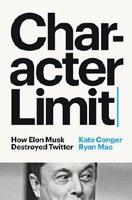

Bucknell, Katherine | Farrar, Straus and Giroux (848 pp.) | $40.00
Aug. 27, 2024 | 9780374119362
An engrossing, rigorously documented study of a 20th century literary trailblazer.
Carr, Cynthia | Farrar, Straus and Giroux (432 pp.) | $30.00 March 19, 2024 | 9781250066350
Carr resurrects a trans icon whose life, artistry, and struggle speak directly to our moment.
Connie: A Memoir
Chung, Connie | Grand Central Publishing (352 pp.) | $32.50
Sept. 17, 2024 | 9781538766989
An irreverent, inspiring chronicle of a great life.
Conger, Kate & Ryan Mac Penguin Press (464 pp.) | $32.00 Sept. 17, 2024 | 9780593656136
Compelling fusion of business history and worrisome social narrative.
Crosley, Sloane | MCD/Farrar, Straus and Giroux (208 pp.) | $27.00 Feb. 27, 2024 | 9780374609849
A marvelously tender memoir on suicide and loss.




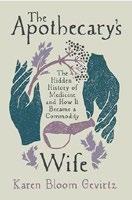
Fierce Desires: A New History of Sex and Sexuality in America
Davis, Rebecca L. | Norton (448 pp.)
$35.00 | Sept. 3, 2024 | 9781631496578
Deeply researched and revealing.
De León, Jason | Viking (400 pp.) | $32.00 March 19, 2024 | 9780593298589
An exemplary ethnography of central importance to any discussion of immigration policy or reform.
Hitler’s People: The Faces of the Third Reich
Evans, Richard J. | Penguin Press (624 pp.)
$35.00 | Aug. 13, 2024 | 9780593296424
A meticulously researched, sobering look at the Nazi era and the people who helped bring its evil intents to fruition.
Figueroa, Jamie | Pantheon (240 pp.)
$29.00 | March 19, 2024 | 9780553387681
A searching and lyrical memoir packed with nuance and depth.



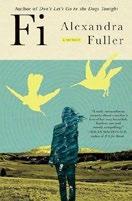
The Apothecary’s Wife: The Hidden History of Medicine and How It Became a Commodity
Gevirtz, Karen Bloom | Univ. of California (340 pp.)
$28.95 | Nov. 12, 2024 | 9780520409910
A lively medical, scientific, and economic history.
Carson McCullers: A Life
Dearborn, Mary V. | Knopf (512 pp.)
$40.00 | Feb. 27, 2024 | 9780525521013
A well researched, sensitive literary biography.
One Nation Under Guns: How Gun Culture Distorts Our History and Threatens Our Democracy
Erdozain, Dominic | Crown (288 pp.)
$28.00 | Jan. 30, 2024 | 9780593594315
A profound demolition of misguided gunrights arguments and a compelling call to action.
To Be a Jew Today: A New Guide to God, Israel, and the Jewish People
Feldman, Noah | Farrar, Straus and Giroux (416 pp.) | $32.00
March 12, 2024 | 9780374298340
An eloquent, accessible, well written reflection on the significance of being a Jew.
Fuller, Alexandra | Grove (272 pp.)
$28.00 | April 9, 2024 | 9780802161048
A true marvel of a memoir, simultaneously beautiful and devastating.

Menachem Mendel Schneerson: Becoming the Messiah
Glinter, Ezra | Yale Univ. (288 pp.)
$28.00 | Oct. 29, 2024 | 9780300222623
Insightful, balanced, and accessible introduction to Chabad and to its modern leader.


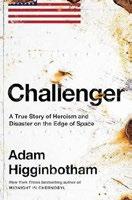


Gordon, Ricky Ian | Farrar, Straus and Giroux (480 pp.) | $30.00
July 23, 2024 | 9780374605728
A superb memoir that reveals the pleasures—but far more, the pains—of the creative life.
Henion, Leigh Ann | Algonquin (336 pp.)
$30.00 | Sept. 24, 2024 | 9781643753362
Henion writes with poetic grace, blending her journey of discovery with the natural wonders in our own backyards.
Higginbotham, Adam | Avid Reader Press (560 pp.) | $32.50
May 14, 2024 | 9781982176617
A deeply researched, fluently written study in miscommunication, hubris, and technological overreach.
Hylton, Antonia | Legacy Lit/ Hachette (368 pp.) | $30.00 Jan. 23, 2024 | 9781538723692
An excellent work of journalism and a strong contribution to the literature of both mental health care and civil rights.
Jackson, Kellie Carter | Seal Press (304 pp.)
$30.00 | June 4, 2024 | 9781541602908
An uncompromising yet accessible rejoinder to conventional wisdom about race and violence in the U.S.



Greenberg, David | Simon & Schuster (704 pp.) | $35.00 | Oct. 8, 2024 9781982142995
An exemplary life, and an exemplary biography that will rekindle readers’ commitment to racial justice.
Hernandez, Tim Z. | Univ. of Arizona (272 pp.)
$30.00 | Sept. 17, 2024 | 9780816553617
Entrancing, reverential, and beautiful.
Hulls, Tessa | MCD/Farrar, Straus and Giroux (400 pp.) | $40.00 March 5, 2024 | 9780374601652
A work that glimmers with insight, acumen, and an unwillingness to settle for simple answers.
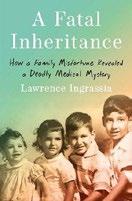

Ingrassia, Lawrence | Henry Holt (320 pp.)
$29.99 | May 14, 2024 | 9781250837226
An impressive, deeply researched contribution to popular studies of epidemiology and oncology.
Jebara, Mohamad | St. Martin’s Essentials (304 pp.) | $30.00
Feb. 27, 2024 | 9781250282361
Appropriately epic and consistently erudite, yet accessible for lay readers.



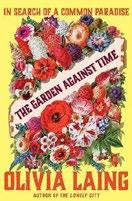

Errand Into the Maze: The Life and Works of Martha Graham
Jowitt, Deborah | Farrar, Straus and Giroux (480 pp.) | $35.00 Jan. 30, 2024 | 9780374280628
Prodigious research informs an insightful biography.
Rent Collectors: Exploitation, Murder, and Redemption in Immigrant LA
Katz, Jesse | Astra House (320 pp.)
$28.00 | July 16, 2024 | 9781662601736
A masterful work of true crime—and, to be sure, true punishment.


Muse of Fire: World War I as Seen Through the Lives of the Soldier Poets
Korda, Michael | Liveright/Norton (352 pp.)
$29.99 | April 16, 2024 | 9781631496882
Poets and war are a winning combination in the hands of a seasoned historian.

The Garden Against Time: In Search of a Common Paradise
Laing, Olivia | Norton (336 pp.) | $27.99 June 25, 2024 | 9780393882001
An intellectually verdant and emotionally rich narrative journey.
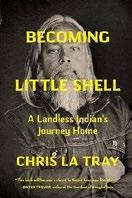
How To Live Free in a Dangerous World: A Decolonial Memoir
Lawson, Shayla | Tiny Reparations (320 pp.)
$28.00 | Feb. 6, 2024 | 9780593472583
A stunning essay collection about travel, mortality, and liberation.
of
Joyce, Patrick | Scribner (400 pp.)
$30.00 | Feb. 20, 2024 | 9781668031087
A first class work combining social history and ethnohistory with an unerring sense for a good story.
Turner,
Kaye, Anthony E. & Gregory P. Downs Farrar, Straus and Giroux (352 pp.)
$30.00 | Aug. 13, 2024 | 9780809024377
A profoundly insightful analysis of a controversial figure and the rebellion he led.
The Museum of Other People: From Colonial Acquisitions to Cosmopolitan Exhibitions
Kuper, Adam | Pantheon (432 pp.)
$35.00 | April 16, 2024 | 9780593700679
A vibrant cultural history.
La Tray, Chris | Milkweed (256 pp.)
$30.00 | Aug. 20, 2024 | 9781571313980
A brilliant contribution to the canon of Native American literature.

Here After: A Memoir
Lin, Amy | Zibby Books (272 pp.)
$19.99 | March 5, 2024 | 9781958506325
A beautifully visceral and emotionally intimate depiction of young widowhood.
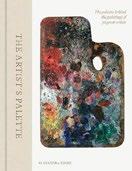
The Artist’s Palette
Loske, Alexandra | Princeton Univ. (256 pp.)
$39.95 | Nov. 5, 2024 | 9780691263960
An appealing study that uncovers important artistic secrets.


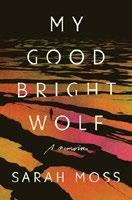

Glad to the Brink of Fear: A Portrait of Ralph Waldo Emerson
Marcus, James | Princeton Univ. (336 pp.)
$29.95 | March 5, 2024 | 9780691254333
A lively, intimate, absorbing account of the sage of Concord.


What We’ve Become: Living and Dying in a Country of Arms
Metzl, Jonathan M. | Norton (304 pp.)
$29.99 | Jan. 30, 2024 | 9781324050254
A powerful, convincing effort to reframe the discussion around gun control and its discontents.
Moss, Sarah | Farrar, Straus and Giroux (320 pp.) | $27.00
Oct. 22, 2024 | 9780374614638
Rich, complex reading.
Love: Essays and Conversations
Nelson, Maggie | Graywolf (336 pp.)
$32.00 | April 2, 2024 | 9781644452813
A revelatory gathering of beloved art and artists presented with distinctive prose.
Undue Burden: Life and Death Decisions in PostRoe America
Luthra, Shefali | Doubleday (368 pp.)
$29.00 | May 21, 2024 | 9780385550086
Vivid portrayals of lives disrupted and freedom denied.
McCann, Colum with Diane Foley Etruscan Press (256 pp.) | $25.99
March 5, 2024 | 9798985882452
A harrowing memoir of grief and love.



Washita Love Child: The Rise of Indigenous Rock Star Jesse Ed Davis
Miller, Douglas K. | Liveright/ Norton (464 pp.) | $32.50 Nov. 12, 2024 | 9781324092094
A vivid, well rounded portrait of an overlooked major talent.
By the Fire We Carry: The Generations-Long Fight for Justice on Native Land
Nagle, Rebecca | Harper/ HarperCollins (352 pp.) | $32.00
Sept. 10, 2024 | 9780063112049
Gripping, infuriating, and illuminating—a valuable corrective to our national ignorance.
We Will Be Jaguars: A Memoir of My People
Nenquimo, Nemonte & Mitch Anderson | Abrams (368 pp.) | $28.00
Sept. 17, 2024 | 9781419763779
An essential memoir of Indigenous resistance to economic subjugation and cultural extinction.
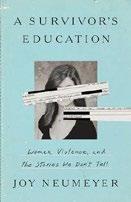
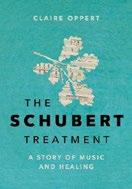



Survivor’s Education: Women, Violence, and the Stories We Don’t Tell
Neumeyer, Joy | PublicAffairs (320 pp.)
$32.00 | Aug. 20, 2024 | 9781541702790
A smart, powerful memoir gives a fresh perspective on what it means to be a survivor.
Oppert, Claire | Trans. by Katia Grubisic | Greystone Books (216 pp.)
$24.95 | Oct. 8, 2024 | 9781778400803
Compassionate, intriguing, often uplifting vignettes delivered in crystalline prose.
Pacino, Al | Penguin Press (400 pp.)
$35.00 | Oct. 15, 2024 | 9780593655115
Fans of Pacino—and students of the actor’s craft—will delight in this gracefully told memoir.
Parker, Morgan | One World/ Random House (224 pp.) | $28.00 March 12, 2024 | 9780525511441
As Parker writes, “Words are ductile, delicate, and loaded like that.” Never more so than in her capable hands.
Pei, Minxin | Harvard Univ. (336 pp.)
$35.00 | Feb. 13, 2024 | 9780674257832
Pei reveals the vast machinery of surveillance and repression in China, fueled by leaders’ fear, distrust, and paranoia



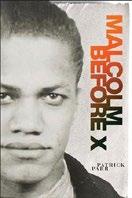

and the Race That Will
Olson, Parmy | St. Martin’s (336 pp.)
$30.00 | Sept. 10, 2024 | 9781250337740
An accessible, insightful exploration of the history and evolving impact of AI technologies.
Oyler, Lauren | HarperOne (272 pp.)
$28.99 | March 19, 2024 | 9780063235359
A challenging and often eye opening nonfiction debut.
Painter, Nell Irvin | Doubleday (464 pp.)
$35.00 | April 23, 2024 | 9780385548908
A vibrant, insightful collection from an indispensable voice.
Parr, Patrick | Univ. of Massachusetts (352 pp.) | $29.95 paper
Nov. 26, 2024 | 9781625348166
A rich portrait of a young revolutionary.
Peri, Camille | Viking (480 pp.)
$35.00 | Aug. 13, 2024 | 9780670786190
A richly detailed chronicle of two eventful lives.
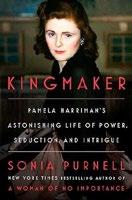
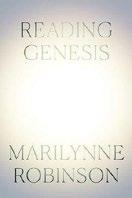



Pamela Harriman’s Astonishing Life of Power, Seduction, and Intrigue
Purnell, Sonia | Viking (448 pp.)
$35.00 | Sept. 17, 2024 | 9780593297803
Meticulous research informs a captivating biography.
Robinson, Marilynne | Farrar, Straus and Giroux (352 pp.) | $27.00 March 12, 2024 | 9780374299408
In this highly learned yet accessible book, Robinson offers believers fresh insight into a well studied text.


Metaracism: How Systemic Racism Devastates Black Lives― And How We Break Free
Rose, Tricia | Basic Books (288 pp.)
$29.00 | March 5, 2024 | 9781541602717
A brilliant guide to a systemic malady that cannot be denied.
Rushdie, Salman | Random House (256 pp.)
$28.00 | April 16, 2024 | 9781039009653
A graceful meditation on life and death that captures Rushdie at his most observant and lyrical.
Heard Her Call My Name: A Memoir of Transition
Sante, Lucy | Penguin Press (240 pp.)
$27.00 | Feb. 13, 2024 | 9780593493762
An absorbing analysis of a long standing search for identity in writing and life.



Every Living Thing: The Great and Deadly Race To Know All Life
Roberts, Jason | Random House (448 pp.)
$35.00 | April 9, 2024 | 9781984855206
A lively, panoramic contribution to the history of science.
I Am on the Hit List: A Journalist’s Murder and the Rise of Autocracy in India
Romig, Rollo | Penguin (400 pp.) | $18.00 paper | Aug. 6, 2024 | 9780143135289
A sharp, captivating, penetrating inquiry that evolves into something more profound than just a true crime book.
The Lies of the Artists: Essays on Italian Art, 1450-1750
Rowland, Ingrid D. | MIT Press (248 pp.) | $34.95 paper
Dec. 17, 2024 | 9780262549097
A novel approach to Renaissance art.
Sacks, Oliver | Knopf (752 pp.) | $40.00 Nov. 5, 2024 | 9780451492913
A lifetime of correspondence adds new dimensions to a brilliant mind’s oeuvre.
War Below: Lithium, Copper, and the Global Battle To Power Our Lives
Scheyder, Ernest | One Signal/Atria (384 pp.)
$30.00 | Jan. 30, 2024 | 9781668011805
Authoritative analysis of a crucial issue and the tough choices ahead, backed by solid research.
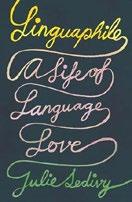
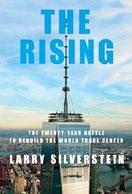



Sedivy, Julie | Farrar, Straus and Giroux (336 pp.) | $29.00
Oct. 15, 2024 | 9780374601836
Sedivy blends a tender memoir with a fascinating study of how language defines the human condition.
Silverstein, Larry | Knopf (368 pp.)
$35.00 | Sept. 10, 2024 | 9780525658962
A compelling personal account of a uniquely American comeback.
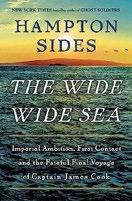

Bone of the Bone: Essays on America by a Daughter of the Working Class
Smarsh, Sarah | Scribner (352 pp.)
$29.99 | Sept. 10, 2024 | 9781668055601
This powerful reckoning with the costs of being poor should be required shortform nonfiction reading.
Romance: John Singer
and the Wertheimers
Strouse, Jean | Farrar, Straus and Giroux (336 pp.) | $30.00 Nov. 19, 2024 | 9780374615673
A deeply informed, acutely sensitive cultural history.
American Civil Wars: A Continental History, 1850-1873
Taylor, Alan | Norton (672 pp.)
$39.99 | May 21, 2024 | 9781324035282
A richly detailed, compulsively readable history of perhaps the most dramatic period in the history of North America.
The Wide Wide Sea: Imperial Ambition, First Contact and the Fateful Final Voyage of Captain James Cook
Sides, Hampton | Doubleday (432 pp.)
$35.00 | April 16, 2024 | 9780385544764
Lusciously detailed and insightful history, masterfully told.
Slotkin, Richard | Belknap/Harvard Univ. (528 pp.)
$39.95 | March 5, 2024 | 9780674292383
A wonderfully clear, cogent account of the stakes involved in American mythology.
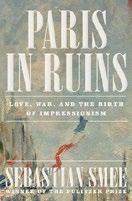


Paris in Ruins: Love, War, and the Birth of Impressionism
Smee, Sebastian | Norton (384 pp.)
$35.00 | Sept. 10, 2024 | 9781324006954
Deft, vibrant cultural history.
America’s
Sullivan, Robert | Farrar, Straus and Giroux (448 pp.) | $32.00 April 23, 2024 | 9780374151164
A riveting reexamination.
Still Life at Eighty: The Next Interesting Thing
Thomas, Abigail | Scribner (240 pp.) | $18.99 paper Nov. 19, 2024 | 9781668054659
Thomas is still smokin’—in both senses of the word!—and her candor is a gift to us all.

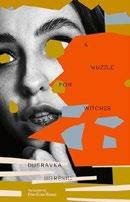



Thompson, Wright | Penguin Press (496 pp.)
$35.00 | Sept. 24, 2024 | 9780593299821
A profoundly affecting, brilliantly narrated story of both an infamous murder and its unexpected consequences.
Ugrešić, Dubravka with Merima Omeragić
Trans. by Ellen Elias-Bursać
Open Letter (120 pp.) | $14.95 paper
Sept. 17, 2024 | 9781960385253
Sage closing remarks from a vital public intellectual.
VanDeMark, Brian | Norton (416 pp.)
$35.00 | Aug. 13, 2024 | 9781324066255
VanDeMark’s top notch book embodies the term must-read.
Wallace, Carvell | MCD/Farrar, Straus and Giroux (272 pp.) | $28.00
May 14, 2024 | 9780374237820
An exquisite, soulful must read.
Witt, Emily | Pantheon (272 pp.)
$27.00 | Sept. 17, 2024 | 9780593317648
Self eviscerating, honest, often painful—a superbly realized chronicle of an ever darkening age.





Trentmann, Frank | Knopf (800 pp.)
$50.00 | Feb. 20, 2024 | 9781524732912
Fascinating insights on how a country of poets, philosophers, and scientists emerged from totalitarianism and genocide.
Valenti, Jessica | Crown (256 pp.)
$25.00 | Oct. 1, 2024 | 9780593800232
A call to action for both inexperienced and seasoned prochoice activists.
Villarreal, Vanessa Angélica
Tiny Reparations (368 pp.) | $29.00
May 14, 2024 | 9780593187142
A wondrous book that will change the way you think about fantasy and magic.
Wills, Clair | Farrar, Straus and Giroux (208 pp.) | $27.00
April 2, 2024 | 9780374611866
Fascinatingly, viscerally haunting.
Wroe, Ann | Thomas Nelson (224 pp.) | $19.99 paper
Oct. 15, 2024 | 9781400347933
A lyrical, radiant memoir.

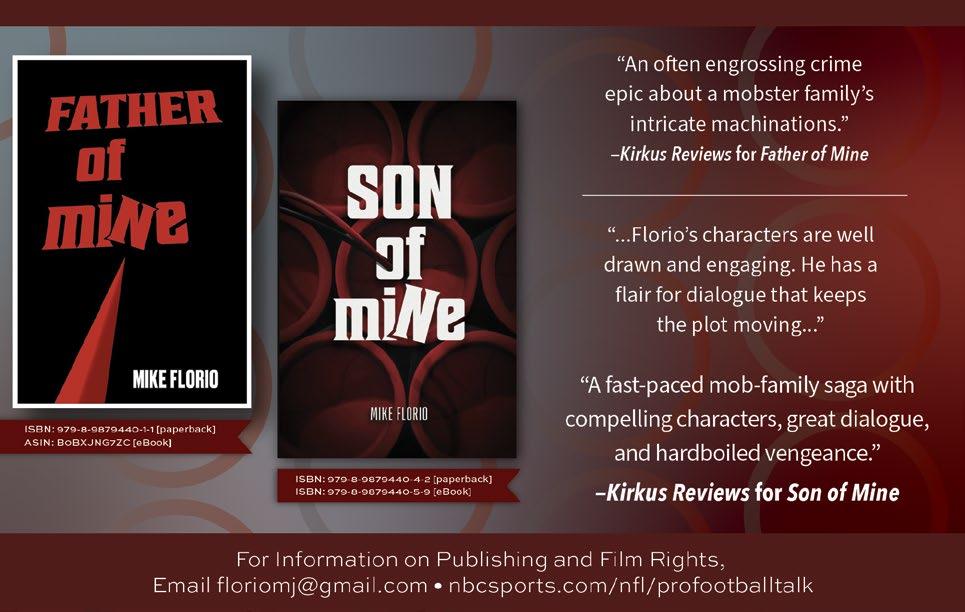
The author of I Heard Her Call My Name answers our questions.
LUCY SANTE MADE her adult life and literary fame in a freewheeling, bohemian Manhattan full of drag festivals, iconic gay clubs, and, as she puts it, “seemingly thousands of wig stores.” A frequent contributor to the New York Review of Books since her time as an assistant to editor Barbara Epstein in 1981, the Belgian American critic has written extensively on the Manhattan underground in books like 1991’s Low Life. Despite the countercultural circles she ran in, Sante repressed her private yearning for gender transition until the early months of 2021. After feeding her old photos into FaceApp’s gender-swapping feature, she found herself writing an email to close friends reintroducing herself as Lucy.
I Heard Her Call My Name: A Memoir of Transition explores Sante’s lifelong repression of her gender identity and the early days of her transition. In the the Kirkus review, our critic called it “an absorbing analysis of a long-standing search for identity in writing and in life.” Sante answered our questions by email.
How did you approach the timeline of the book?
It was an engineering problem. I had two timelines of very different sizes—my first six months of transitioning vis-à-vis the whole panorama of my life. The only way to not have one outshout the other was to interleave them, which, incidentally, is an old trick for building suspense, by having two narratives constantly interrupt each other.

You write that you’d never kept a diary or journal until the “whirlwind” that followed your coming out. Did transition change your relationship to the written word? It didn’t. It’s true that I Heard Her Call My Name was written much faster than anything I’ve previously done, but that’s all. I’ve never kept a diary or a journal because I’m lazy, and because in my teen years my mother would regularly raid my room and read everything she found, looking for sin. As I got older I realized something else: that writing down a memory seals the memory in the text. If it’s kept loose, it links to other memories organically and continues to bring forth forgotten details. If you’re going to commit a memory to print, be prepared to spend it, maybe once and for all.
In 1998, you published The Factory of Facts , a memoir that explored your relationship to Belgium . What was it like to revisit the genre through this new focal point? It was an entirely different experience. Factory was intended to show where I came from, literally and in a deeper sense, so it was in effect a series of small histories that referred back to me but didn’t necessarily involve me. I Heard, on the other hand, was as urgent and as personal as you can get. Factory took six years to write; I Heard took two months.
Where do you do most of your writing?
In my basement office, in a 1920s oak rock-and-swivel office chair at a peeling green Parsons table that


I Heard Her Call My Name: A Memoir of Transition Sante, Lucy Penguin Press | 240 pp. | $27.00 Feb. 13, 2024 | 9780593493762
were given to me separately by friends in 1979—in and at which I’ve written almost everything I’ve published.
What were some of your favorite books published in 2024?
I get to things late, always, and all the more so as I’ve gotten older. I long ago lost the urge to keep up with culture as it happens. So just a few titles, [some of which] I blurbed: Creation Lake by Rachel Kushner, Do Something by Guy Trebay, Love, Joe: The Selected Letters of Joe Brainard, edited by Daniel Kane, and Candy Darling by Cynthia Carr.
Interview by Sasha Fox Carney
The author of There’s Always This Year answers our questions.
“I WENT BACK to Ohio, but my city was gone.” So lamented Chrissie Hynde in the Pretenders’ hit song about her home state. Hanif Abdurraqib’s feelings for the Buckeye State are far more complex. “People I love have marched out of Ohio with an eye towards the coasts, towards the south,” he writes in his latest book, There’s Always This Year: On Basketball and Ascension . Abdurraqib, on the other hand, decided to stay. In his questing and free-form memoir— which made our list of the best nonfiction books of 2024—the MacArthur grant–winning poet and essayist delves into his decision to reestablish roots in his native Columbus. The book also tackles themes of belonging and grief. Divided into four quarters, like a basketball game, the book dips in and out of the author’s affection for local legend LeBron James and the sport of basketball. Abdurraqib answered the questions below by email.
of the book? What were you reading, listening to, watching?

I spent a lot of time watching old, grainy high school basketball clips of players who were superstars in my world. Most of the things I let guide me during the writing of the book were tied to Columbus and Ohio. Reminders of people from my own world who had made it. Became stars in the small container of a place that meant a lot to me. I was grateful to find so much archival footage, which made it easier to reconstruct memories and properly shape them.
Where and when did you write the book? Describe the scene, the time of day, the necessary accoutrements or talismans.


There’s Always This Year: On Basketball and Ascension Abdurraqib, Hanif
What was the original idea that started you working on the book? Originally, I was interested in documenting Ohio in the era of LeBron James’ youth, which was also an era of my youth, particularly because so few of those moments feel real to me. They largely register as dreams. And so I set out to write a book that could decode and demystify a past that I felt I largely floated through. In that process, the book became about time, about letting go, and about holding on.
What inspired you during the writing
I have a small office, with a messy desk, where I write. I’m not particular about time of day or any strict processes. I write when it feels good. I have a couple of crystals on my desk that I like. I don’t know, I’m never really good at this kind of answer, it all looks and feels the same to me, but I will say that I probably do my best writing after a run and after a nice shower. There’s a two-hour window where I think I’m at my best, and then I kind of lose the magic.
What was most challenging about writing this book? And most rewarding?
As always, I think the most challenging thing about writing any book, or doing anything for me, is that my dreams for the work are limitless, but my real, actual abilities have limits. And so, the work inside of the work is attempting to build a bridge that gets me close to what I’ve dreamed. As close as possible. I had long dreamed
Random House | 352 pp. | $32.00 March 26, 2024 | 9780593448793
this book, its shape and structure. I found early on that I was being governed by its structure (the countdown clock, the quarters) and not being governed by attempts to build beautiful language around the structure. I had to fight to find a balance that worked, but once I did, once I unlocked the kind of perfect marriage of structure and language, I felt somewhat strangely invincible, like I could write anything.
What book or books published in 2024 were among your favorites? Modern Poetry by Diane Seuss, What Good Is Heaven by Raye Hendrix, Ten Bridges I’ve Burnt by Brontez Purnell, Deviant by Patrick Grace, Your Dazzling Death by Cass Donish.
Interview by John McMurtrie
The author of By the Fire We Carry answers our questions.
REBECCA NAGLE IS a journalist and citizen of the Cherokee nation who writes frequently about Native issues for the Atlantic, the Washington Post, the Guardian, and other outlets. She brought all her reporting and storytelling skills to bear in her debut book, By the Fire We Carry: The Generations-Long Fight for Justice on Native Land, which tells the story of a Muscogee man on death row in Oklahoma and his legal appeal, a case that had far-reaching implications for tribal sovereignty in the United States. Nagle answered our questions by email.
What do you hope readers take away from By the Fire We Carry?

I wrote this book because I believe the American public needs to understand that the legacy of colonization and genocide is not just a problem for Indigenous peoples but a problem for our democracy. Native American history is often treated like a tragic, distant chapter of the American story, and the legal terrain it created like a siloed backwater of American law, but it is foundational. Our inheritance as American citizens is a democracy that is often wildly antidemocratic—a government that has ruled by both consent and by conquest.


What was the original impetus that started you working on the book?
In the summer of 2017, I was scrolling through Facebook when I saw a post from Muscogee legal scholar Sarah Deer. It was about a court case I had not yet heard of. A man on Oklahoma’s death row was arguing that the state didn’t have jurisdiction to execute him because he was Native and the murder happened on the Muscogee reservation. Oklahoma argued that reservation no longer existed. The case would eventually go all the way to the Supreme Court. After seeing that Facebook post, I became obsessed. I knew whatever the outcome, the case would likely determine the reservation status of my tribe, too. I grew up with stories of how my ancestors sacrificed their lives for the sovereignty and land of Cherokee Nation. What I felt was the possibility that the land they died for would be recognized as Cherokee land for the first time in over a century. It was a visceral sense of justice. I felt it in my blood.
What inspired you during the writing of the book? What were you reading, listening to, watching?
A book I thought about a lot while writing was The Warmth of Other Suns by Isabel Wilkerson. For me, it was a model of how to tell a sweeping history in a storied and personal way. About a year into writing, I read The Plague of Doves by Louise Erdrich. I love how Erdrich braids different narratives together—something I knew I needed to do in my book’s jump between the past and the present.
What was most challenging about writing this book? And most rewarding?
The research was heavy. To understand what our ancestors survived, I read firsthand accounts of racial violence. Since these accounts were often written by the soldiers, bureaucrats, and even criminals who inflicted that violence, the documents were not only traumatic but racist. But just as often the research was soul-filling. To learn the history of a small church or rural community, I collected
By the Fire We Carry: The Generations-Long Fight for Justice on Native Land Nagle, Rebecca Harper/HarperCollins | 352 pp. | $32.00 Sept. 10, 2024 | 9780063112049
photocopies from people’s personal archives. I interviewed a former police officer in my car in a Walmart parking lot. I stood in the places my ancestors stood when they made decisions that changed the course of history.
What book or books published in 2024 were among your favorites?
So far, my favorite books of 2024 are Wandering Stars by Tommy Orange, The Resilience Myth by Soraya Chemaly, and I Was a Teenage Slasher by Stephen Graham Jones. I haven’t read them yet, but I can’t wait to dive into The Mighty Red by Louise Erdrich and The Message by Ta-Nehisi Coates.
Interview by Tom Beer
CONNIE CHUNG. Ralph
Waldo Emerson. Martha Graham. Malcolm X. Elon Musk. These figures would likely make for strange tablemates at a dinner party. And yet they sit well beside each other on Kirkus’ list of the 100 best nonfiction books of 2024.
Chung, the veteran journalist, is on the list for the sprightly and entertaining memoir that bears her name: Connie. Emerson, Graham, and Malcolm are the subjects of three revelatory works: Glad to the Brink of Fear: A Portrait of Ralph Waldo Emerson by James Marcus, Errand Into the Maze: The Life and Works of Martha Graham by Deborah Jowitt, and Malcolm Before X by Patrick Parr. As for Musk, chances are that this is not the kind of attention he craves: Kate Conger and Ryan Mac’s deeply reported book, Character Limit: How Elon

Musk Destroyed Twitter, is a scathing assessment of the billionaire’s takeover of the social media platform.
As the above titles make clear, the list is wide ranging, featuring not just memoirs and biographies but also histories, journalistic investigations, and essay collections. It also includes the six finalists for this year’s Kirkus Prize.
Several of the books address timely themes, confronting such urgent national crises as a woman’s right to choose, immigration, and gun violence. Among these books are Jessica Valenti’s Abortion: Our Bodies, Their Lies, and the Truths We Use To Win , Jonathan Blitzer’s Everyone Who Is Gone Is Here: The United States, Central America, and the Making of a Crisis , and Dominic Erdozain’s One Nation Under Guns: How Gun Culture Distorts Our


History and Threatens
Our Democracy. Other books take on this country’s deep-rooted racial discrimination and inequality. A standout title is Tricia Rose’s fervently argued Metaracism: How Systemic Racism Devastates Black Lives—and How We Break Free. Beyond the weighty subject matter, some books on the list give the reader pure pleasure. There are the fascinating creatures that Leigh Ann Henion lovingly documents in her illuminating book, Night Magic: Adventures Among Glowworms, Moon Gardens, and Other Marvels of the Dark. There are the varied and astonishing works of painters—and the universe of colors they work with—in Alexandra Loske’s inspired study, The Artist’s Palette And there are words themselves: Julie Sedivy shares her infectious passion


JOHN McMURTRIE
for them in her wondrous book, Linguaphile: A Life of Language Love. The satisfaction of simply learning is another power that so many of these books provide. As Abigail Thomas writes in her wise and vivifying memoir, Still Life at Eighty: The Next Interesting Thing, “I am learning something new every day. Granted, it’s the same thing, but I learn it over and over with the same startled awareness. I look out at the lush green expanse behind my house, gazing with pleasure at everything growing, especially my locust, loving the spread of its branches, and at the same moment, or a moment later, I remember this is not really my green yard, and not really my tree. Mine to appreciate, to care for while I live, but I don’t really own anything. What is mine to keep? Secrets, maybe. Nothing else.”
John McMurtrie is the nonfiction editor.


THE POWER OF a color. National Book Award winner Perry offers surprising revelations about the connection between the color blue and Black identity as she explores myth and literature, art and music, folklore and film.
“Blues are our sensibility,” she writes. She begins her wide-ranging history with the production of indigo in the 16th century. Coveted throughout Africa, Asia, and Europe, the dye was so valuable that a block of indigo could be traded for an enslaved person.
Imported from West Africa to America, the planting and processing of indigo became tasks for the enslaved. Although the work was arduous, the color, Perry notes,
“remained a source of pleasure,” and enslaved people used the dye for their own walls, doors, porches, and clothing. The color also became associated with mourning, with blue periwinkles marking the graves of the enslaved and cobalt blue bottles hung from myrtle trees to mark people’s passing. The melancholy sound of “a blued note” infused Black music with a quality “so distinctive that someone who knows nothing about music, formally speaking, can hear it is special.”
Miles Davis’ albums Blue Period and Kind of Blue, Nina Simone’s Little Girl Blue, Roberta Flack’s Blue Lights in the Basement , Duke Ellington’s composition “Crescendo in Blue,”
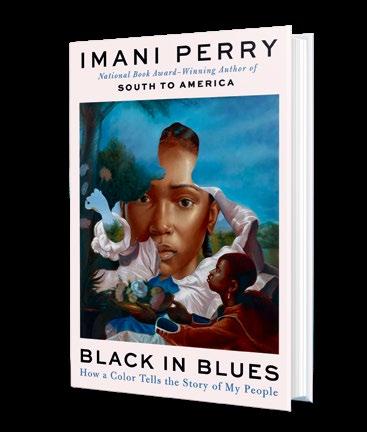
Perry, Imani | Ecco/HarperCollins | 256 pp.
$28.99 | Jan. 28, 2025 | 9780062977397
and Mongo Santamaría’s song “Afro Blue” are among many of Perry’s musical references. Literary references abound as well: Amiri Baraka’s Blues People, Toni Morrison’s The Bluest Eye, and Ntozake Shange’s novel Sassafras, Cypress and Indigo. The “precocious girl-child Indigo,” Perry writes, “was me.” If blue has signaled Black agency—Haitian rebels wore blue uniforms—it also conveys oppression: “The blue uniform is a metonym for the enforcement arm of the state,” Perry notes, and has become shorthand for police power.
An innovative cultural history.
Kirkus Star
Adamson, Glenn | Bloomsbury (400 pp.)
$32.99 | Dec. 3, 2024 | 9781639730230

A history of the future—or better, the many futures that seers and scholars have painted in the past couple of centuries.
“The act of probing into the future need not be predictive to be useful,” writes historian Adamson. Instead, considering what the future might look like can focus attention on the good and bad of the present. Adamson opens with a fascinating, albeit brief, account of weather forecasting, which became more reliable with the advent of the telegraph: as he notes, “a lot of tomorrow’s weather is already here today; it’s just somewhere else, usually a little farther west.” Just so, a string of futurologists of varying stripes, from techno-guru Buckminster Fuller to the fire-and-brimstone evangelist Billy Sunday, turns up here, attempting to gauge the cultural weather to come. Adamson’s narrative is dizzying in its range of reference, taking in the Ghost Dance of the late 19th century and its sad culmination in Wounded Knee; the Afro-futurist jazz of Sun Ra, who inarguably lived at least part time on another planet; the influence of Edward Bellamy’s wooden but nonetheless popular novel Looking Backward and its reverberations in hundreds of other books (including, Adamson suggests, Mark Twain’s Connecticut Yankee in King Arthur’s Court); and the role of futurist predictions in totalitarian movements ranging from Italian fascism to Soviet Bolshevism, to say nothing of the mathematical soullessness of Robert McNamara, which lends credence to Albert Einstein’s maxim, “Anyone who thinks about the future must live in fear and terror.” Futurists remain with us, from the clueless (by Adamson’s measure) Faith Popcorn to the forecasts of singers such as
David Byrne and Laurie Anderson: Looking ahead, after all, is “part of what it is to be human,” and Adamson is refreshingly optimistic on that score. An illuminating look at past and present efforts to gaze into the crystal ball.
Ethic Exhausted America
Baker, Erik | Harvard Univ. (352 pp.)
$35.00 | Jan. 14, 2025 | 9780674293601

T he social impact of entrepreneurialism.
According to Baker, a Harvard lecturer, there has long been tension in the United States between corporate work—stressing systems, hierarchy, and a steady paycheck—and entrepreneurialism, with an emphasis on innovation, risk, and individualism. The valorization of the entrepreneur has moved in cycles, which Baker tracks through the 20th century and into the 21st. There was an acknowledgment that corporations could easily become stagnant and needed an occasional shot of entrepreneurial energy to thrive. One answer, pioneered by sales groups like Amway and Avon, was to minimize the number of employees and instead build an army of contractors. This strategy developed into attempts by corporate leaders to foster an entrepreneurial spirit among employees. It makes sense, but Baker sees clear downsides. “Entrepreneurialism, essentially, adds another set of obligations to the work ethic: creation as well as execution, passion as well as perseverance,” he says. “It’s exhausting.” At the same time, tiers of jobs were farmed out, creating the gig economy. Stability was exchanged for precarious autonomy. This does much to explain the epidemic of burnout and despair, according to Baker, even while the benefits of lower costs and increased productivity flow relentlessly upward. He is able to keep this sprawling narrative on course, although he offers no real solution, aside from
suggesting that “our collective commitment to entrepreneurialism the idea that everyone should strive to be entrepreneurial—isn’t helping.” Nevertheless, this book will be of interest to anyone interested in business culture and social trends. With solid authority, Baker examines the entrepreneurial idea and how it has shaped the nature of the work we do.
Barraclough, Eleanor | Norton (360 pp.) $32.99 | Jan. 7, 2025 | 9781324089230

The world of the Norsemen who made a vivid impression on Europe during the last millennium. British historian and broadcaster Barraclough begins in the swamps of Scandinavia, where its ancient inhabitants lost, discarded, or deliberately disposed of tools, coins, weapons, jewelry, clothing, pottery, and even their fellow humans. Still digging, archeologists have learned that they traded with ancient Rome and traded and fought with ancient Germany. Their rulers and elites were warriors. Because Scandinavia contained little arable land and other sources of wealth, fighting and robbing foreign tribespeople was the ambition of brave young men, and Norsemen took up raiding as soon as they acquired ships. They entered history in the last decade of the eighth century and soon were raiding Ireland, Britain, and France. By the ninth century, raiding progressed into conquest, and Norsemen ruled much of England and Normandy. To the west they settled Iceland and Greenland and touched on North America. Barraclough concentrates on Norse daily life; although the author does not ignore Viking conquests and politics, readers looking for more fireworks have innumerable
authors to choose from. Although not the first account for a popular audience, it’s absorbing. The author has a rich bounty to choose from, Scandinavia having long, freezing winters to preserve artifacts, global warming to expose them, ancient writing systems, and now modern nations with enthusiastic archeologists. Scraps of wood reveal doodles, notes, poems, insults, and prayers; thawing glaciers turn up clothes, furs, tools, toys, food, and plenty of clues to the Vikings’ role in Norse society.
A satisfying plunge into Viking culture.
Bradley, James M. | Oxford Univ. (624 pp.)
$35.00 | Dec. 2, 2024 | 9780190920524

The life of one of America’s first professional politicians and its eighth president. Bradley, co-editor of the Martin Van Buren papers based at Cumberland University and adjunct history instructor at State University of New York at Albany, has written the first comprehensive biography of Van Buren in decades. He brings to life a man who today may only be known as the inspiration for the Seinfeld storyline with the fictionalized street gang the “Van Buren Boys” but who did more than perhaps anyone to professionalize politics and establish the two-party system in the United States. Bradley reveals how the aloof public speaker who could barely be heard in a chamber came to dominate New York state politics and became a main architect of the Democratic Party,
along the way being elected to the U.S. Senate, the vice presidency, and the presidency amid the hurricane of antebellum politics. Bradley’s vivid descriptions of Van Buren’s political contemporaries such as John Quincy Adams, James Monroe, and James Polk add to the book’s appeal. Bradley does well to avoid attaching recency bias to Van Buren’s political machinations and associations that contributed to the lead-up to the Civil War. He also resists the temptation to deify a subject with whom he is very familiar; his literary critiques of the leaden prose of Van Buren’s autobiography and the significance of Van Buren’s book about the history of U.S. political parties reflect the balanced approach of Bradley’s auspicious debut, an enjoyable, scholarly, and valuable biography of an overlooked politician.
A gem for students of U.S. history and politics.
Kirkus Star
The Eurasian Century: Hot Wars, Cold Wars, and the Making of the Modern World Brands, Hal | Norton (336 pp.) | $29.99 Jan. 14, 2025 | 9781324036944

World history since 1900, with an emphasis on geopolitics. Brands, Distinguished Professor at Johns Hopkins School of Advanced International Studies and author of Danger Zone: The Coming Conflict With China , reminds readers that Eurasia, Earth’s largest landmass, remains the world’s strategic center. When the modern age began, its
powerhouse was Western Europe— until the post–World War II recovery of Japan and breathtaking rise of China pulled the economic center of gravity east. The first of Brands’ five long chapters introduces Sir Halford Mackinder (1861-1947), an obscure British civil servant who excelled in explaining geopolitics, a discipline focused on the relationship between land and political power. Mackinder emphasized that maritime nations like his own could pursue positive-sum strategies in trade and cooperation, whereas continental powers existed in cramped, cutthroat conditions where the surest route to safety was to conquer your neighbors. What follows illustrates this unsettling theme. World War I was so searing that no democratic statesman wished to repeat it, but it left many potential troublemakers. The big winner, the United States, acted as though geography guaranteed its security, although it did not. Learning from its mistakes, after 1945 “the United States pursued a generous, positive-sum vision of cooperation” and oversaw 80 years of peace and unrivaled prosperity. Sadly, peace and prosperity aren’t a priority among autocrats. “They want glory, greatness, and empire.…By late 2023, both Eastern Europe and the Middle East were ablaze,” and few doubt the possibility of a Chinese invasion of Taiwan. Today, a return to history’s horrors is all too plausible. Americans need to learn the lessons of the first Eurasian century if they are to survive the second. A fellow at the conservative American Enterprise Institute, Brands delivers a worshipful portrait of President Reagan but approves of liberal democracy as opposed to “would-be authoritarian” Trump, making a convincing case that democracy is in trouble. Thoughtful and disturbing.

Kirkus Star
Brokken, Jan | Trans. by David Doherty
Scribe (432 pp.) | $22.00 paper Jan. 7, 2025 | 9781922585837

A closely observed study of a region often overlooked, but of critical importance in world history. Everywhere he goes in the Baltic, the Dutch novelist and essayist Brokken encounters authority, past and present. Arriving in Latvian waters aboard a battered coastal freighter, he’s confronted by suspicious border guards, one of whom asks, “What’s so special about the Baltic?” When he answers, “Mariners say it’s the most beautiful of all the seas,” they discover that Brokken is a writer and deem him to be “crazy, not dangerous.” In Latvia he finds a brilliant cultural legacy, personified, for one, by the filmmaker Sergei Eisenstein, who credited the Bolshevik Revolution with making him an artist and took up arms against his own father, an anti-Bolshevik engineer who designed some of Riga’s most noteworthy buildings. Riga’s prodigiously accomplished artistic community claims diaspora members in Paul Simon and Bob Dylan, as well as Mikhail Baryshnikov, whose father was a Soviet soldier who, even after Stalin’s death, “continued to hold Stalinist views, which made him doubly hated.” Much of that community was Jewish, destroyed by the Nazis and homegrown anti-Semites during World War II. Similar atrocities occurred in the other present-day republics: Vilnius, Lithuania, once had the largest synagogue in the world, but “ninety-nine of the city’s one hundred shuls were burned to the ground, bombed, smashed to rubble, or… simply demolished.” Small wonder that those who fled Vilnius, including the writer Romain Gary, took care never to mention it. Much of the Baltic’s past is painful, but the future looks hopeful, so long as the republics can remain free of an
BALTIC SOULS
ever-threatening Russia. Indeed, Brokken writes, even young people in the Russian enclave of Kaliningrad are optimistic, hoping that it “would become the Hong Kong of the north…but with greater scope for independence.”
A learned, literate travelogue about a cultural cornucopia.
Callard, Agnes | Norton (416 pp.)
$35.00 | Jan. 14, 2025 | 9781631498466

How to open one’s mind. Philosopher Callard proposes a way of thinking and living that “promises to make people freer and more equal; more courageous; and more romantic” by turning to Socratic method and ethics. Socrates, she asserts, leads us to focus on “untimely questions”: questions that are hard to ask because we think we already know the answer. Those answers are not the result of real probing but rather, according to Socrates, are shaped by the “savage commands” of bodily appetites and kinship that affect what we do, think, and feel. The Socratic method transcends these commands by defining inquiry as social and communal, a conversation between individuals, one of whom is pursuing truth, the other trying to avoid error. It’s a method that entails the “back-and-forth of inquisitive refutation.” In addressing issues such as free speech, egalitarianism, and the fight for social justice, which Callard sees as central to liberal ideology, Socratic ethics offers an alternative to three strains of
thought: Kantian ethics, in which actions are constrained by respect for humanity; utilitarianism, which aims to achieve the greatest good for the greatest number; and virtue ethics, whose basic principle is to act like a virtuous person. Socratic ethics, on the other hand, is an ethics of inquiry. “The way to be good when you don’t know how to be good,” according to Socrates, “is by learning.” Callard addresses several paradoxes that arise from the Socratic method, as well as how Socratizing helps us to think about politics, love, and death. “The inquiry into untimely questions,” Callard asserts, “is the search for a life that doesn’t need to be shielded from reflection, a life you live by understanding it.”
An illuminating, densely argued philosophical analysis.
Chandler, Adam | Pantheon (288 pp.)
$28.00 | Jan. 7, 2025 | 9780593700570
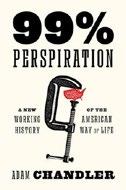
A respected journalist explores the evolution of work and its social meaning. Work has always been a central part of the American character, with the idea that success comes from effort, persistence, and ingenuity. But Chandler, a journalist and an author, argues that much of this is a myth. Climbing the socioeconomic ladder has never been as easy or as common as its advocates claim, and in the past two decades it has become almost impossible. The majority of working Americans are stuck in
low-income jobs, Chandler says, and job security has been replaced by unfair contracts and the gig economy. He covered some of these issues in his 2019 book, Drive-Thru Dreams: A Journey Through the Heart of America’s Fast-Food Kingdom, and it is certainly true that the minimum wage has not kept pace with inflation. As we saw during the pandemic, it made more financial sense for many to collect unemployment benefits and stimulus checks than to look for work. The book can at times make for grim reading, but Chandler argues that social crises have often presaged wide-ranging reforms. He favors a Universal Basic Income, although there does not yet appear to be much support for it. However, his thesis is valid: Work is simply not working— for many, if not most, Americans. Some new thinking is needed. A welcome call for a return to fairness and common sense.
Chatterjee, Tupur | New York Univ. (256 pp.) | $30.00 paper Jan. 7, 2025 | 9781479829644

What caused the recent shift in India’s entertainment cultures. There’s a lot going on in this latest book in New York University Press’ Critical Cultural Communication series by film and media scholar Chatterjee. At its core, it “offers an interdisciplinary conversation between media studies and architecture.” In the past 30 years, the heightened hyperreal architectonics of multiplex cinemas, rather than single screens in Indian malls, radically altered the politics of theatrical space, female consumption, and moviegoing. Chatterjee smartly explores how this moment “played out across media industries, architecture and design, popular cinema, and public culture,”
especially in New Delhi. Media, gender, and architecture are woven together in the creation of this global media city in the “throes of a severe spatial, moral, and emotional crisis.” The author looks first at the prehistory of the multiplex, from the 1960s to the 1980s. In the 1980s, television and VHS tapes emerged as a favorite of the Indian middle classes, creating “heterogenous taste cultures.” Commodity and consumption culture “took over the Indian landscape” via the rise of shopping malls, public safety, and their multiplex spectators—not the only country, of course, where a similar pattern occurred. Chatterjee studies in detail three films that have thematically engaged with gender, especially women, a violent rape culture, liberalization, and space in Delhi: Pink, NH10, and Dev.D. She also discusses the nostalgia surrounding the death of the single screens, which could often turn spectators into joyful “performative fans,” and the conversion of older cinemas into multiplexes, as well as the addition of virtual reality lounges to them. Chatterjee soberly concludes by examining the impact of moviegoing in the midst of India’s right-wing Hindu nationalism, Hindutva, and how it negatively “infiltrates the regulated ‘safe’ microclimates of the mall-multiplex.”
An ambitious work whose dry, academic prose might put off some readers.
Cheek, Lisa | She Writes Press (246 pp.) | $17.99 paper Jan. 14, 2025 | 9781647427283

brands like Urban Outfitters and Staples. But the year she turned 45, her company let her go because she had aged out of a business that worshipped youth just as much as the mainstream film industry. Almost immediately afterward, a filmmaker friend asked her to edit his dream project: a movie version of “Cinderella” shot in China and based on the original Chinese version of the story. Cheek accepted, eager for an adventure that would take her to remote lands near the Tibetan border but terrified of solo editing a feature-length film for the first time in a country where she did not know the language. The project was exhilarating, despite her initial dependence on a translator as well as intrusive memories of a painful childhood, which Cheek deftly interweaves into the main narrative. Missing the beloved terrier that had helped ease her social awkwardness at home, she rescued two dogs, one an abandoned puppy, the other an abused dog she named Cinderella. Both animals helped Cheek bond with others and later became the unexpected agents of her rescue when misunderstandings led to mishaps on the voyage home. By turns funny and moving, this book about a lonely woman who came into her own will appeal to animal lovers and anyone who appreciates the satisfaction of a hard-earned happily-ever-after.
A feel good memoir about embracing risk and finding the courage to love.
Who Served the
Clark, Nicola | Pegasus (400 pp.)
$32.00 | Jan. 7, 2025 | 9781639368099
A former film editor tells the story of how an offer to help re-create a fairy-tale classic transformed her life.
Cheek adored her life as a Hollywood film editor who cut video ads for big name

Women of the queen’s chamber illuminate Tudor England. British historian Clark takes a fresh look at the well-known history of Henry VIII by focusing on women chosen as ladies-in-waiting
to each of Henry’s wives. These women, enmeshed in intrigue, secrets, tensions, religious upheaval, and political machinations, serve as “intimate and underused witnesses to one of the most tumultuous periods of pre-modern history.” The women’s ranks corresponded to social status: “the ‘ladies’, usually peeresses; the ‘gentlewomen’, who might be the wives of knights or gentry; and the ‘chamberers’, the lowest status and most menial position, usually women of gentle but not aristocratic status.” For most of the young women—such as María de Salinas, devoted lady-inwaiting to Catherine of Aragon— their goal was to make a good marriage. For some, it was dealing with the lascivious attentions of the king. While a queen’s ladies could be a comfort, “they were also a danger,” Clark notes, when, “towards the end of a wife’s pregnancy, the king’s eye went roving.” Functioning “as a connection between the queen and the world outside her privy chamber,” they became astute observers of alliances and conduits of gossip. Some became proficient in spycraft, such as Elizabeth of Norfolk, who secreted a letter to Catherine under the peel of an orange. As Henry changed wives, the queen’s ladies were pressed to choose sides. In Anne Boleyn’s case, disloyalty proved fatal. The most noteworthy pieces of evidence about her adultery, Clark reveals, “were those provided by women.” Clark conveys the sumptuous richness of Tudor life—banquet tables groaning under platters of meats, halls hung with costly tapestries, crimson gowns of velvet and satin—and also the risks— pestilence, miscarriage, childbirth, arduous travel, and betrayal. An authoritative and entertaining history.

Women who were enmeshed in intrigue and political machinations.
THE WAITING GAME
When We Sold God’s Eye: Diamonds, Murder, and a Clash of
Cuadros, Alex | Grand Central Publishing (352 pp.) | $32.00 Dec. 3, 2024 | 9781538701508

Stone Age people encounter the modern world, with predictable results.
Journalist Cuadros, author of Brazillionaires: Wealth, Power, Decadence, and Hope in an American Country, has immersed himself in Brazil’s expansion into its Amazonian frontier, a process that began early in the 20th century, exploded after World War II, and is still in progress. He focuses on the Cinta Larga, an Indigenous society of 1,000 to 2,000 people living in the remote jungle near the Bolivian border. Lacking clothes, boats, and domestic animals and perpetually at war with neighboring tribes, they had no trouble feeding themselves. Following the usual scenario, ranchers, loggers, and miners poured in with their magical technology, guns, greed, and diseases, and tribal members who did not go to work for white men became beggars. As one anthropologist put it, “The Brazilian state turned Indians into poor people.” Cuadros tells his story through the lives of half a dozen Cinta Larga and an idealistic member of Brazil’s Indian Protection Service, a government office designed to protect Indigenous people and encourage them to assimilate. Underfunded and with no enforcement power, the agency could not keep newcomers out or control them, and he
eventually grew discouraged. His Indigenous clients are survivors— despite disease and violence vastly reducing their numbers—and they entered the 21st century in an uneasy truce with a rapacious free market culture. The discovery of diamonds in 1999 produced a massive influx of prospectors that dwarfed the native population. Mining in tribal protected areas is illegal, but Brazilian authorities, understaffed when not corrupt, were little help. Near the book’s end, a band of warriors massacres about 30 miners, a climax that turns into an anticlimax because mining continues and government investigation and prosecution are still in progress 20 years later.
An impassioned story with many parallels to the American Indian experience, and equally dispiriting.
Daut, Marlene L. | Knopf (656 pp.)
$40.00 | Jan. 7, 2025 | 9780593316160

A biography of the iconic Black revolutionary that tries to separate caricature and idolatry from truth. Daut, professor of French and African diaspora studies at Yale and author of Awakening the Ashes: An Intellectual History of the Haitian Revolution, reminds readers that Haiti was France’s most prized colony, an island territory of plantations that led the world in sugar, coffee, and cotton production. It was also an oppressive slave society. Inspired by the French Revolution, enslaved people rebelled in 1791. Although France abolished slavery
in 1794, Haitian whites refused to go along and fought back viciously, and Napoleon failed disastrously in an effort to restore slavery in 1802. A minor figure when the rebellion began, Christophe prospered steadily under its leader, Toussaint L’Ouverture. Once independence was achieved in 1804, rebel leaders turned on each other. After plotters assassinated Haiti’s first emperor in 1806, Christophe declared himself king of northern Haiti, splitting the nation in two. Energetic if not widely beloved, he created a large system of nobility, built palaces, and instituted a feudal-style forced-labor system to revive the plantations. Ill and facing increasing opposition, he committed suicide in 1820. Daut’s research answers peripheral questions (Christophe was almost certainly born in Grenada), but it remains uncertain whether he was born enslaved, and there are frustratingly few details of his service with French forces in the American Revolution, possibly as a drummer boy. Christophe’s letters, reports, and proclamations, meanwhile, reveal few character flaws and a great deal of bombast.
Scholarly insights into a grandiose historical character who remains an enigma.
Dou, Eva | Portfolio (432 pp.) | $34.00 Jan. 14, 2025 | 9780593544631

A respected reporter looks behind the curtain at a corporate behemoth. It can be a surprise to learn that Huawei is possibly the largest telecommunications company in the world, dominant in China and powerful elsewhere. Dou, a technology journalist with the Washington Post, tackles the daunting task of documenting its story, amassing a huge amount of material from official records and expert opinions. Ren Zhengfei, who
founded Huawei in 1987, is a somewhat reclusive figure, although Dou is able to piece together a picture of him (providing a useful timeline of events as well as a cast of major characters). An engineer by training, his real strength has always been strategy, and he was quick to grasp the need for a reliable phone system in China. Ren was adept at navigating the shifting shoals of Chinese politics, and when the cellphone boom came, he was in good position to take advantage. There were continued allegations that Huawei was, in tandem with the government, building eavesdropping and malware bugs into its “pipeline” systems, both at home and abroad, which eventually led to the company’s being banned from the U.S. and other countries. Dou acknowledges that it is difficult to track the connections between Huawei and the government; it seems to be a matter of personal connections and agreed objectives. In fact, now that Ren has stepped back from an active role, it is difficult to establish where the real power within the company lies, although several members of Ren’s family hold crucial positions. Dou holds the lengthy and complex narrative together, untangling the webs of money and politics that underpin China’s tech giant. A timely, clear, and undeniably worrying account.
Eden, Caroline | Bloomsbury (256 pp.) $27.99 | Jan. 14, 2025 | 9781526658982
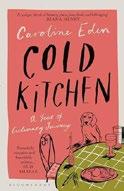
Delectable journeys.
Journalist Eden, an award-winning food writer, cooks on a little electric stove in a chilly basement kitchen in her Edinburgh flat, surrounded by hundreds of cookbooks and accompanied by her mellow beagle, Darwin. If cooking is for Eden “a mindful form of therapy,” it is also a spur to recounting her travels through Russia, Central Asia, Turkey,
Ukraine, the South Caucasus, the Baltics, and Poland. “One ingredient or dish,” she writes, “can conjure up a single moment, or an entire expedition; a whole city or just one unforgettable meal.” Her kitchen is filled with souvenirs of those travels—a silver sugar bowl from India, a honey jar from Tasmania—and with recipes that she collected or reconstructed. Organized according to the seasons, the book begins with Eden’s memory of Uzbekistan’s wintertime melons, “fruits of rare and strange beauty,” and a recipe for a watermelon, feta, and mint salad. A long adventure on the Trans-Siberian Railroad yields a recipe for pirozhki, small Russian hand pies: pastry stuffed with chopped eggs, sauerkraut, mushrooms, and caraway. Eden evokes the elegance of Riga, with its hundreds of Art Nouveau buildings and serene cafes, sharing a recipe for dark beer and rye bread pudding. Ghosts inevitably intrude, as in Poland, where she finds herself unsettled, haunted by the Holocaust. In Edinburgh, Eden is devoted to hikes and rambles in the hills, for which she carries “journey food.” Her favorite is hillside pasties, the perfect repast for a backpack. “Like cooking,” she writes, “hillwalking is both an activity and a way of life, and like cooking it is a way to enter other worlds.” Eden gently invites readers into those other worlds and, graciously, into the warmth of her fragrant kitchen.
A lyrical, captivating memoir.
English, T.J. | Morrow/HarperCollins (512 pp.) $32.50 | Dec. 3, 2024 | 9780063265530
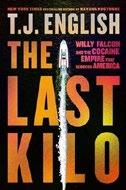
Raucous, sprawling account of Los Muchachos, the group credited with perfecting cocaine importation. English, a journalist and bestselling author, looks to offer an accurate take on what is an oft-exaggerated underground history, noting, “My goal with this book has been to provide an account
primarily from those who did not cooperate with the government.” He capably manages a complicated tale that ranges across numerous countries and a rogue’s gallery of cops and smugglers, some notorious like Pablo Escobar, others restrained and innovative. English writes, “The Narcosphere is not a physical place; it is a realm of operation, and a state of mind. It spans sovereign boundaries, physical space, borders, and political jurisdictions.” Based primarily on interviews with charismatic gang founder Willy Falcon, who recently finished a 27-year sentence, his epic narrative suggests that the refugees who fled Cuba for Florida following the Communist revolution proved crucial in the explosion of cocaine trafficking. At first, Falcon and his neighborhood friends were covertly encouraged as a means of raising money for anti-Castro efforts, but “what had started as an effort to assist those who hoped to kill the bearded dictator and liberate Cuba was about to become the white powder avalanche that changed America.”
Falcon’s circle created a rationalized system for transporting large loads of cocaine, by cultivating close personal relationships with cartels in Colombia and, later, Mexico. They relied on numerous innovations, including short-wave radio communication and building airstrips on ranches in rural Florida, and lived as fugitives for several years when in 1987 the DEA eventually pursued indictments.
English captures vividly the sleazy ambiance of the traffickers’ glory years and law enforcement’s efforts to comprehend an enterprise that, English argues, transformed Miami as a city, once narcos “began funneling money into Miami real estate.”
Engrossing true crime, with a rueful undertone of how perniciously the drug war affected the United States.
Feder, Rachel & Tiffany Tatreau
Quirk Books (256 pp.) | $19.99
Nov. 26, 2024 | 9781683694748

Searching for meaning in a pop star’s songs.
“Taylor Swift doesn’t just write bops, she writes intellectual bops,” write the authors of this lively and smart look at the pop star. “Her music is a master class in literary allusion and a survey course in some of the greatest works of English literature.” That’s a weighty declaration to live up to, but the authors— one of whom, Feder, is an English professor—gamely live up to the challenge. First, they describe the three “pens” or styles that Swift uses to write: a glitter gel pen for bubbly top 40 hits, a quill pen for songs that “read as poetry, rich with metaphor,” and a fountain pen for her confessional “peek inside my diary” songs. Then they dive into Swift’s oeuvre, album by album, dividing them into eight eras: Bildungsroman, Fairy Tale, Modernist, Decadent, Sentimentalist, Romantic, Gothic, and Postmodernist. The authors pore over Swift’s lyrics, connecting them to Sappho, Christina Rossetti, Shakespeare, and others. In Swift’s Midnights album (Gothic Era), for example, the authors look at the lyric “my town was a wasteland” from the song “Midnight Rain” and observe that it “calls to mind T.S. Eliot’s epic poem, ‘The Waste Land.’” They also share playlists of Swift songs based on motifs such as “Madwoman” and “Metatextuality” and brief bios of writers who may have influenced Swift, including Sylvia Plath and Dylan Thomas. The authors encourage further
A pop star’s lyrics as seen through a literary lens.
TAYLOR
THE BOOK
reading. If you love Swift’s album 1989, they recommend you read Lunch Poems by Frank O’Hara and Edith Warton’s The Age of Innocence. Charming pen-and-ink illustrations enhance the pleasure. For hardcore Swifties or neophytes, an accessible and incisive analysis of a star’s appeal.
Fitzpatrick, Sheila | Princeton Univ. (352 pp.) $35.00 | Nov. 12, 2024 | 9780691230023
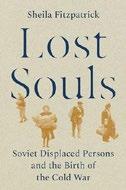
A historical survey of the plight of post–World War II refugees and their role in the formative years of the Cold War rivalry between East and West. At the end of World War II, writes Australian historian Fitzpatrick, the four powers occupying the former Third Reich faced an unprecedented problem: feeding, housing, and otherwise caring for millions of displaced persons. Among these were the Jews who survived the Holocaust, as well as 7 million German POWs and “millions of German refugees expelled from Eastern European states who were pouring into Germany.” The Soviets adopted stern measures: a Russian who had been taken prisoner unwillingly was sent to Siberia; a Russian who had willingly gone over to the enemy was executed; someone who was an “inconvenient” between-states individual (e.g., a Polish Jew) was sent packing to the West, “trucked over into the American or British zone for the Allies to deal with”; and so on. The Western powers tended toward clemency, with displaced persons sent to college, given jobs, and often sent as émigrés to nations needing to renew their labor forces, especially Australia and Canada. The two contending systems caused friction, especially the Allied willingness to incorporate former enemies into postwar military
forces: in the Soviets’ eyes, this “was sinister, an indication of the Western Allies’ intentions to use the DPs…as the nucleus of military forces that might be used against the Soviet Union in the future.” Contentions over how to treat displaced persons, and especially Jews being allowed to travel to Palestine, fed into larger disagreements between the Soviet bloc and the West, shaping the subsequent Cold War. Differences in how to treat refugees are at the forefront of much international conversation today, Fitzpatrick notes in closing, so that her study becomes an instructive lesson in practical politics as well as history.
A new look at a historical problem both logistical and humanitarian, with obvious implications today.
Fletcher, Catherine | Pegasus (400 pp.)
$32.00 | Dec. 3, 2024 | 9781639367603

Wide-ranging history of ancient Rome’s globespanning network of roads.
“What have the Romans ever done for us?” asks John Cleese’s freedom fighter in the Monty Python film Life of Brian. “The roads,” answers another rebel. The reply: “Well, yes, obviously the roads…the roads go without saying.” Observes British historian Fletcher, the roads that Rome built extended from Scotland to Iraq, and many still exist, whether for a kilometer or so as archaeological curiosities or charting the course for modern superhighways such as Italy’s Strada Statale or state road 7, which follows the straight-line layout of its predecessor, the Via Appia, which famously extends to Rome. “Barely a week goes by without a report on a newly discovered Roman road,” Fletcher notes. By her account that would seem especially true in Britain, where every new parking lot or building foundation seems to turn up imperial paving stones. The roads were more than conveniences for trade and the
movement of military forces, though they were certainly both: Fletcher reckons that a walker on a good Roman road might make 20 miles a day—a rhythm so regular that Roman court dates were set according to how far a litigant had to walk to get there—while a rider on horseback could make 50 to 80 miles a day. Beyond that, the roads were symbols and projections of imperial power, and a safeguard: any enemy attacking Rome would soon find legions arrayed against it. Later observers such as Leonardo da Vinci were fascinated by the remnants, and when Mussolini tried to launch an empire of his own, he set to work rebuilding Rome’s network of roads (though on the famed March to Rome, Fletcher chortles, “Mussolini himself… took the train to the outskirts”).
A lucid, readable work on a key aspect of ancient infrastructure and its survivals.
Forret, Jeff | The New Press (400 pp.) $28.99 | Nov. 19, 2024 | 9781620978863

A look at how four wrecks of U.S. slaving vessels affected international relations.
Forret, whose previous books examined various aspects of American slavery, here focuses on the emancipation by British authorities of enslaved people after the ships carrying them—the Comet, Encomium, Enterprise, and Hermosa —were wrecked off the Bahamas in the 1830s. The incidents occurred after the international slave trade was outlawed, but the ships were transporting their human cargo between two American states and thus in theory operating lawfully. British sentiment favored abolition, and the colonial governors gave the enslaved people the choice of returning to their masters or becoming free residents of the islands. Not surprisingly, almost all chose
freedom. The southern states’ reaction was predictable, leading to fiery debate in the halls of Congress and strenuous diplomatic efforts to get recompense for the enslavers’ lost human “property.” John C. Calhoun, Daniel Webster, Martin Van Buren, and Thomas Hart Benton were among the prominent figures caught up in the debate, which was not just about Britain’s willingness to pay for those who were freed, but also about the potential for extending slavery to still-unsettled western territory. Forret reproduces numerous official documents and transcripts of congressional speeches and explores the biography of some of the affected parties. Little is known of the lives of the formerly enslaved people after they were freed, so that potentially interesting perspective on the story remains undocumented. The author’s style is a bit dry, but this is a story that students of antebellum history will want to know—especially for the light it shines on some of the historical figures who figured in the debate.
A detailed and worthy study of the clash of abolitionist and pro slavery forces in early America.
Frank, Kim | Pegasus (288 pp.)
$29.95 | Jan. 7, 2025 | 9781639367955

An American woman’s encounters with Asian elephants in their native habitat. Picking her way out of a failed marriage, Frank takes inventory of “the woman I had once been—confident, curious, vivacious, a leader,” and determines that she was no more: “Dead or lost, I was not yet sure.” A chance conversation about the plight of Asian elephants, whose habitat is rapidly disappearing “in a war over diminishing resources of food and water,” leads Frank to team up with a photographer and pitch travel stories about the elephants and their
>>>

The former Vanity Fair editor’s When the Going Was Good will be published in March.
Graydon Carter will tell the story of his career as a magazine journalist in a new memoir, according to the Hollywood Reporter Penguin Press will publish Carter’s When the Going Was Good: An Editor’s Adventures During the Last Golden Age of Magazines next spring. The press says the book “revives the
glamorous heyday of print magazines when they were at the vanguard of American culture.”
Carter, a native of Canada, worked at Time and Life magazines before founding Spy magazine with Kurt Andersen in 1986. The satirical publication was known for its arch takedowns of celebrities and high-society figures, including Donald Trump, whom it memorably dubbed a “shortfingered vulgarian.”
After a stint at the New York Observer, Carter took over Vanity Fair, where he served as editor from 1992 to 2017. He currently co-edits the weekly newsletter Air Mail.
Penguin Press says that Carter’s book is his “lively recounting of how he made his mark as one of the most talented editors in the business.”
“Charming, candid, and brimming with stories, When the Going Was Good perfectly captures the last golden age of print magazines from the inside out,” the press says.

When the Going Was Good is slated for publication on March 25, 2025.—M.S.

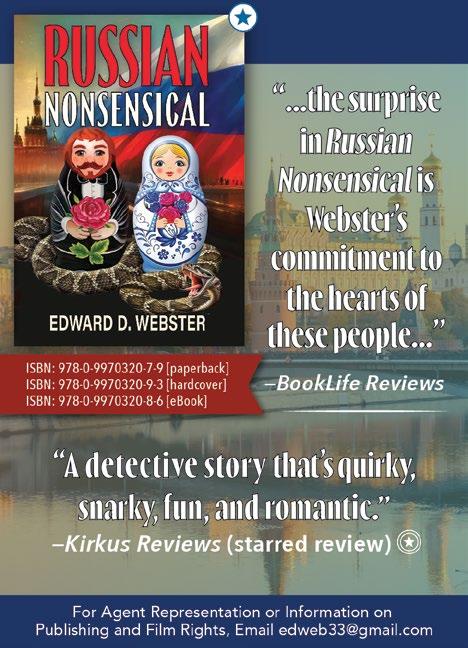
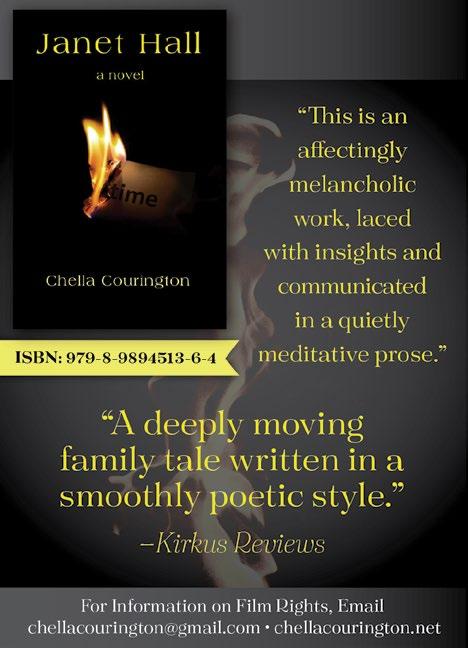



Trump’s publisher requested the fee in exchange for an interview about her memoir.
Melania Trump’s publisher requested a $250,000 payment from CNN in exchange for an interview about her new memoir, the network reports.
Skyhorse Publishing, which published the former first lady’s Melania, responded to CNN’s request for an interview with a document that it called a “Confidentiality and Nondisclosure Agreement.” It read, in part, “CNN shall pay a licensing fee of two hundred fifty thousand dollars ($250,000).”
The network declined to pay the publisher. Paying a source for an interview, or “checkbook journalism,” is widely considered unethical in the United States, although it is not uncommon in other parts of the world.
Skyhorse told CNN that it had sent the document to the network mistakenly. The


press’ publisher and president, Tony Lyons, said, “Neither Melania nor anyone from her team knew anything about the NDA and the document that was sent reflected an internal miscommunication.”
Trump’s memoir made headlines even before its release. The Guardian reported that in her book, she defends abortion rights, writing, “Restricting a woman’s right to choose whether to terminate an unwanted pregnancy is the same as denying her control over her own body. I have carried this belief with me throughout my entire adult life.”
Her position is not shared by her husband, former President Donald Trump, who has described himself as “pro-life” and appointed three U.S. Supreme Court justices who voted to overturn Roe v. Wade in 2022.—M.S.

protectors. The photographer, a well-published pro, is frequently impatient with Frank, who is clearly willing to do the work but is often a burden all the same: the photographer, at one point, says that she needs to be able to jump on the back of a motorcycle at a moment’s notice and head out for the story, while Frank is less spontaneous. Frank’s narrative has its moments, but too often her focus is not on the elephants but on herself: “I close my eyes on the drive, imagining myself as a war reporter, a woman who would put herself at risk to document important news to show the Western world all they do not know.” For much of the narrative she is not that woman, and the important news is merely self-important. As she learns to navigate the landscape and comes to know some of the elephants’ protectors, the narrative picks up a bit, but Frank is still inclined both to navel-gazing and to treacly New Age formulas (“I am being led by an unseen force. And all is interconnected, just as I felt one with the oxygen, oceans, and grains of sand in that moment by the sea”), and the elephants seem an afterthought.
Readers interested in Asian elephants will find more useful information elsewhere.
French, Paul | St. Martin’s (320 pp.)
$30.00 | Nov. 12, 2024 | 9781250287472
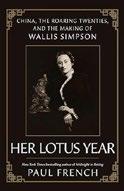
An account of the conditions and context of Wallis Simpson’s yearlong sojourn in China.
About a decade before Simpson became the Duchess of Windsor, she was Wallis Spencer, edging toward divorce from her drunk, abusive husband, Win. A lieutenant commander in the United States Navy, Win was stationed for a time in China with the South China
Patrol. Having first arrived in China in 1924 to mend her tumultuous marriage, Wallis remained in the emerging, embattled Chinese Republic for a year that she later referred to as transformative. French, author of the bestselling Midnight in Peking, traces Wallis’ movement between storied hotels and international enclaves in Hong Kong, Canton (Guangzhou), Tientsin (Tianjin), Shanghai, and, finally, Peking (Beijing), with his subject’s travels, friendships, and social frolicking forming the spine of his exposition. However, because of limitations on access to archives concerning both the British royal family and Chinese history, the author must rely on sources that sit adjacent to Wallis, including a series of British and American novelists and other expat socialites whose escapades may have been co-opted to fuel sordid rumors about Wallis during the abdication of King Edward VIII. Potential for intrigue and revelation—Was Wallis Spencer an intrepid documents courier for the U.S. Navy?—fizzles into lush and spicy but inconsequential details of the social milieu. In a text riddled with “might have”s, “could not have”s, and “it is possible”s, Wallis does not make for a transparent, substantial, or thoroughly compelling subject. Instead, she feels like a shadow with a hypothetical filling, the import to her trajectory of the year under study only partially convincing. French does, however, strikingly render an oft-fetishized time and place, countering the familiar mythologizing of both the Roaring Twenties, with its Eurocentric literary obsessions, and the path of China from dynastic to communist rule. An occasionally entertaining look at a little known bridge between American, British, and Chinese history.
Gabriele, Matthew & David M.
Perry | Harper/HarperCollins (336 pp.)
$32.00 | Dec. 10, 2024 | 9780063336674
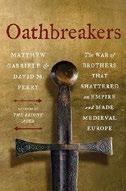
When brothers got medieval on each other.
Historians
Gabriele and Perry did so well with The Bright Ages: A New History of Medieval Europe that they have followed it with a narrower focus on the ninth century. Perhaps the best-known figure of that era is Charlemagne (reigned 768-814), who assembled much of Europe into the largest empire since Rome’s and had himself crowned by the pope in 800. Charlemagne ruled alone, mostly, because his brother died three years after the pair took the throne. This followed family tradition that gave every ruler’s son power even while he reigned and divided the kingdom after his death. Charlemagne’s successor, Louis the Pious (ruled 1814-1840), took the throne as the only surviving son, but he already had three adult sons, and a fourth was soon born. This guaranteed trouble. Louis gave his three sons kingly authority over three parts of the empire, but they complained, quarreled, and occasionally took up arms. Matters did not improve when his fourth son reached maturity and received a share of the empire deducted from the others. During much of Louis’ reign, the empire verged on civil war; at one point, he was deposed. Months after his death, the brothers fought the bloody battle of Fontenoy, which solved nothing, soon followed by the 843 Treaty of Verdun, laying out the bounds of each brother’s
How a fraternal feud tore apart an empire.
kingdom. A dead letter from the start, it led to more quarrels and treaties that carried on into following centuries, gradually resolving into what later historians maintain was France and Germany. Lively writers, the authors cast a critical eye on the surviving sources, delivering a painless education on how historians try to determine what actually happened from fragmentary and wildly biased accounts. A scholarly and entertaining history of warring brothers.
Gamerman, Amy | Simon & Schuster (464 pp.)
$29.99 | Jan. 7, 2025 | 9781982158163
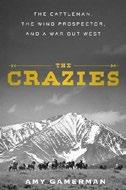
How a proposed wind farm set off epic struggles on one of America’s new frontiers. This account of a modern land battle in the American West, told dramatically in the form of narrative nonfiction, explores “a story centuries in the making, with millionaires and billionaires, cattle barons and Crow warriors, prospectors and politicians, meat-packers and medicine men.” A coveted region of Montana stands at the center of the complex disputes described here, with competing factions pursuing sometimes incompatible aims: developing wind power, securing ancestral tribal rights, or reserving the picturesque landscape for private and commercial interests. The various scenes that play out suggest a reiteration of the nation’s frontier history, with lax regulation of aggressive instincts and enormous disparities in power. The author’s brisk, consistently engaging storytelling vividly sets forth the financial stakes involved for those who control the land and its energy potential and the cultural and personal stakes for those who seek to prolong traditional ways of life. We gain a memorable sense, at last, of what this territory has meant to its Indigenous
inhabitants as well as waves of settlers in the Montana region. A major difference from the 19th century, as the book makes clear, is that this 21st-century Wild West faces an existential crisis as the climate warms and ecosystems threaten collapse. Old ideals about the inexhaustibility of the nation’s resources must yield to new understandings of sustainability. An enormous expansion of wind farms in places such as this, Gamerman notes, will be essential for a successful transition to a clean energy future and the mitigation of harms produced by exploitative practices. This Western narrative is, she convincingly concludes, crucially relevant to the entire nation’s fate.
A dynamic, informed, absorbing exploration of literal and figurative power struggles.
German, Mike & Beth Zasloff | The New Press (336 pp.) | $29.99 | Jan. 7, 2025 | 9781620977064

A former FBI agent examines what he says are the agency’s failures to monitor and thwart the radical right.
The FBI, German holds, “refuses to prioritize investigations of violence by white supremacists.” Instead, he adds, the bureau focuses on less dangerous groups such as Black Lives Matter, even though “far-right militants have committed over one hundred deadly acts just since the 2017 Unite the Right rally in Charlottesville, Virginia.” Notable among those acts was the storming of the Capitol, about which, just as with that rally, the agency had plenty of advance intelligence but did not act on it, German says—even as one Washington hotel, sensing trouble, chose to close its bar, popular among Proud Boys and their ilk, between Jan. 4 and 6. If a bar can do it, why can’t the feds? German suggests that intelligence failures have a willful component: In the Trump era, he holds, “law enforcement
bias became much more overt,” and that bias was all too often tilted against minorities and inclined to overlook violence perpetrated by white supremacists and the far right; indeed, German notes, he left the agency after whistleblowing on the FBI’s post-9/11 focus on “perceived threats from Muslim, Black, Native American, and immigrant activists, environmentalists, and progressive protest groups” instead of real threats from white supremacists. As a result, German holds, these groups have become emboldened. Serious systematic and institutional reforms are needed, says German, who, now a policy fellow at the Brennan Center for Justice, urges, “It is time for the FBI to reverse its shift toward broad intelligence collection about innocent Americans and to refocus investigations where facts establish reasonable indications of violence and criminality.”
An urgent call for a different approach to policing and containing radical right wing violence.
Gioia, Dana | Paul Dry Books (208 pp.) | $19.95 paper | Dec. 3, 2024 | 9781589881969

A vigorous case for the humble opera libretto as poetic drama. Gioia, a poet and former chairman of the National Endowment for the Arts, turns his attention to the “extravagant and alluring art of opera” and the power of words because the “libretto is not a shabby coat rack on which the magnificent vestments of music are hung.” The “text exists in a state of potentiality; music will transform its meaning and merit.”
Surprisingly, the 100 most frequently performed operas were written by only seven poets, including Richard Wagner, who wrote all his own libretti. Gioia notes that the only operatic partnership for which the writers get top billing are Gilbert and Sullivan. When Lorenzo Da
Ponte wrote for Mozart, his operas became much better, culminating in Don Giovanni. Gioia recollects coming to love opera as a young boy: “I wanted to surrender to an ecstasy beyond my control.” The collaborations of Hugo von Hofmannsthal and Richard Strauss “rank among the most surprising and successful experiments in modern opera.” He discusses how opera strives for emotional intensity, “explores the extremes of human experience, especially the outmost limits of suffering.” At the NEA, he helped fund dozens of operatic world premieres and revivals. Nevertheless, he worries about the shrinking numbers of Americans who attend operas—“America is no operatic superpower.” Gioia laments that many historically important American operas are rarely performed. As a young student, he went to Vienna as a composer and left as an opera-loving poet. After incisive chapters on Leonard Bernstein and Stephen Sondheim—“American opera has no better libretto” than Sweeney Todd —he wraps up this smart, lively book describing his rewarding experiences writing librettos. A poet shares his joyful exuberance for opera.
Goodby, John & Chris Wigginton Reaktion Books (240 pp.) | $22.00 paper Dec. 13, 2024 | 9781789149326

A new look at the preeminent Welsh poet. In the latest in the Critical Lives series, Goodby and Wigginton, Thomas scholars at Sheffield Hallam University, offer a brisk but comprehensive look at the life of Dylan Thomas (1914-1953), eschewing the popular image of a “rumpled, Dionysiac…summoner of elemental powers” in favor of a more nuanced portrait of a driven, focused writer who had penned a dozen “masterpieces” by the time he was 19-and-a-half. The book moves
Singing the praises of opera—in a country that doesn’t much value it.
WEEP, SHUDDER, DIE
confidently through Thomas’ upbringing in a “middling prosperous” suburb of Swansea, his grammar school education, and his complicated relationship with his father, D.J., who named his son after a character in a Welsh medieval tale. From there we progress to the poet’s early adulthood, and the authors make note of both Thomas’ periods of intense productivity and his ambition; after his first collection, 18 Poems, was published in 1934 to not insignificant acclaim, Thomas wanted to build on its success “as quickly as possible,” and Twenty-Five Poems was published less than two years later. In between the two collections, Thomas met Caitlin Macnamara, whom he would marry. Next, the authors address World War II and its effect on Thomas, as well as his work making wartime documentaries for Strand Films, concluding with the poet’s four tours of America in the early 1950s before his untimely death at the age of 39. This slim volume ably summarizes the events of the poet’s life, but where it “fill[s] a gap” is in the “critically informed attention” it pays to Thomas’ writing, offering close reads of many of the poems and the “puns, wordplay and rhetorical devices” he employed. “The life is read in the light of [Thomas’] work, rather than the other way around,” the authors write. An engaging biography that foregrounds critical analysis of Thomas’ writings.

For more
Gordon, Meryl | Grand Central Publishing (512 pp.) | $34.00 Jan. 7, 2025 | 9781538751244

Portrait of a celebrated hostess. Journalist and biographer Gordon recounts the eventful life of feminist, ardent Equal Rights Amendment supporter, and legendary party giver Perle Mesta (1882-1975), who served as the U.S. ambassador to Luxembourg from 1949 to 1953. The Michigan-born Pearl Skirvin gave her first party when she was 11, serving her friends sandwiches of nasturtium flowers and mayonnaise. In her early 20s, she chaperoned her sister, who was beginning her stage career, until, in 1915, Pearl moved to Manhattan on her own. There, she met George Mesta, a wealthy industrialist, 20 years older. They married in 1917 and soon moved to Washington, where Mesta served as a wartime advisor. “With an anthropologist’s intensity,” Gordon writes, “Pearl studied the rhythms of Washington social life.”
After George Mesta’s sudden death in 1924, the fabulously wealthy widow became “a style setter.” Although as a Christian Scientist she did not drink, her sumptuous extravaganzas overflowed with champagne, even during the Depression. Dressed in Paris couture, surrounded by A-list guests in Washington, New York, Newport, and London, Perle (she opted for a more sophisticated spelling) became the
darling of society columnists. “Every time someone asked Perle to lend her name to a charity or host an event,” Gordon observes, “it was a validation of her place in the universe.” Party giving, though, was not her only interest: calling herself “a politician first,” she was a tireless fundraiser and became close friends with the Trumans, the Eisenhowers, and LBJ. Spoofed in the musical Call Me Madam, with Ethel Merman playing the lead, Perle was more than a flighty socialite: As Gordon portrays her, she proved to be an able goodwill ambassador and savvy political operator. A lively, well researched account of a powerful woman.
Grossman, David | Trans. by Jessica Cohen | Vintage (128 pp.) | $16.00 paper Jan. 14, 2025 | 9798217007059

The noted Israeli novelist ponders the state of his corner of the world after Oct. 7, 2023. Make no mistake, urges Grossman, the author of To the End of the Land and other novels: Israel is in a state of war, and “If I may hazard a guess: Israel after the war will be much more right-wing, militant, and racist.” This, says Grossman, is an unfortunate but logical outcome of Benjamin Netanyahu’s intransigent view that Israel is alone in the world and that he’s the only one who can save the nation—unfortunate, Grossman notes, because, in his view, “we will probably not be able to win the next war on our own.” That next war may involve Hamas, Hezbollah, the Islamic State, and the Yemeni Houthis, who are already enemies singly but who may decide to act in concert. “Even the IDF [the Israel Defense Forces] will not be able to withstand a simultaneous attack by several states—including Iran—on several fronts.” Israelis sense this, Grossman suggests, to the extent that the national mood has gone from confidence to “fragility and anxiety,” at
least in part because the sense that the nation is fundamentally united is also gone: Leftists and rightists “view one another as an actual existential threat.” The fault for the conflict is not Israel’s alone, Grossman urges, but the opportunity to lead a movement for peace among neighbors lies there, in a state committed to some sort of national solution for Palestine rather than one willing to accommodate the present system of repression and “a total denial of reality.” This brief collection of occasional pieces never arrives at a fully developed thesis for solving the region’s present maladies, but it is both suggestive and provocative, especially in Grossman’s view that giving in to cynicism and apathy will lead to the obvious: “a short path to religious fanaticism, nationalism, fascism.” An urgent appeal for peace in a time of growing war.
Hasegawa, Tsuyoshi | Basic Books (544 pp.) $35.00 | Dec. 3, 2024 | 9781541606166
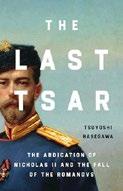
The fall of clueless Russian Czar Nicholas II. Although hobbled by an absolute monarchy and slow to industrialize, Russia was getting its act together by the end of the 19th century. Its czars, although often reactionary, took governing seriously. Hasegawa, professor emeritus in history at UC Santa Barbara and author of Racing the Enemy: Stalin, Truman, and the Surrender of Japan, emphasizes that Nicholas was an exception. He became czar at age 26, when his father died prematurely, though he had already shown little aptitude but much fascination with the trappings of power, if not the details. Scholars universally deplore his marriage to German princess Alexandra, who was far more strong-willed than her husband and became wildly unpopular. The book
delivers a compelling biography of the pair up to early 1917, when Russia’s wartime miseries erupted in widespread violence. In meticulous detail, Hasegawa recounts the czar’s imprisonment and the bloody end of his dynasty. It’s a scholarly tour de force in which the author has absorbed the participants’ massive documentation and familiarized himself with a huge cast of characters, most unfamiliar even to history buffs. This should not be anyone’s introduction to the Russian Revolution, but readers of Robert K. Massie’s classic 1967 Nicholas and Alexandra and its follow-up, The Romanovs: The Final Chapter, will appreciate the events revealed by Hasegawa’s fine-tooth comb.
An extraordinarily detailed account of the last czar’s last days.
Hui, Andrew | Princeton Univ. (336 pp.) $29.95 | Dec. 3, 2024 | 9780691243320
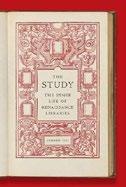
A historical account of the origins of the personal library as portrayed in the paintings, plays, drawings, and novels of the Renaissance. In the 15th and 16th centuries, an emerging group of scholars retired to their studios to converse with the texts of antiquity (as did Petrarch), embrace sanctity through biblical scholarship (as did St. Jerome), or explore their inner lives (as did the essayist Montaigne). The studio was a “living, breathing crucible of thought” that served as a sanctuary for self-contemplation. “Renaissance humanists [had] created an intimate place of the soul.” (Of course, these spaces were affordable only by those wealthy enough to have spacious homes, hire booksellers such as Vespasiano da Bicci, and purchase books.) Hui, humanities professor at Yale-NUS College, Singapore, and author of A Theory of the
Aphorism: From Confucius to Twitter, also notes that the bibliophilia that motivated these scholars could become bibliomania. Here he turns away from real people to fictional ones: Don Quixote in Cervantes’ novel of the same name, Prospero in Shakespeare’s The Tempest, and Doctor Faustus in Christopher Marlowe’s famous play. Reading books in the solitude of their studios detached these men from reality. The pivot between the love of books and their power to derange, Hui claims, was Rabelais’ exercise in “unruly excess.” Throughout, Hui offers close, interpretive readings of the many representations of personal libraries and the scholars portrayed there. Notably, he does not confine himself to the architectural space of the studio but points to how books were central to and came to symbolize humanism and modernity. Impressively erudite, Hui has produced a substantial piece of scholarship.
No avid and self respecting bibliophile should be without this book set snugly on one of their study’s many shelves.
Kissinger, Henry A., Eric Schmidt & Craig J. Mundie | Little, Brown (272 pp.)
$30.00 | Nov. 19, 2024 | 9780316581295

Unsettling thoughts on AI from some big-league thinkers. The book opens with a worshipful tribute to Kissinger, who died last year at age 100. He apparently thought deeply about this subject and “closely mentored” his two collaborators on the “diplomatic alignment of humans” in their relationship to AI. Kissinger was a prominent Secretary of State and Nobel Peace Prize winner, Eric Schmidt was the chairman and CEO of Google, and Mundie was a chief research and strategy officer for Microsoft. Recognized AI experts, the latter two work hard to avoid repeating
themselves. Within the past decade, specialists who have spent their lives warning against comparing a computer to a human brain have changed their minds. AI engineers now agree that they are trying to build something modeled on and superior to the brain without fully understanding it. Human brains are limited by the size of the human skull, but AI can grow without limit. The average AI supercomputer is already 120 million times faster than the human brain. Unlike ordinary computers, its mapping of the world is not programmed but learned. Perhaps in a nod to Kissinger, the book delves heavily into the role of AI in government. Its value lies in its potentially perfect knowledge, but that is a two-edged sword. Faced with a machine that always makes the correct choice, humans and their leaders may object to surrendering their free will, but autocrats may perk up. Readers may scratch their heads at the authors’ conviction that AI builders assume their creation will lead to a golden age of abundance, eliminati ng poverty, inequality, and the necessity of work. A long section devoted to problems of a life devoted exclusively to leisure contains ingenious solutions, but it’s not a subject that provokes great controversy. Astute if often oddball insights.
Kolinjivadi, Vijay & Aaron Vansintjan
The New Press (240 pp.) | $27.99 Dec. 10, 2024 | 9781620977439
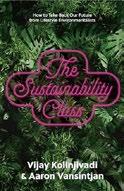
T he “greener than thou” class is more part of the problem than part of the solution, according to two environmental writers.
Kolinjivadi and Vansintjan are deeply committed to the issue of climate change. They are co-editors of the website Uneven Earth, and much of
the material in their book is drawn from it. They are particularly angry at the way that sustainability has been co-opted by an affluent elite, who believe that fighting climate change is about buying expensive “natural” foods and products and showing them off. As it turns out, the authors say, many of this elite’s favorite purchases actually have a large carbon footprint, although it is not immediately visible to them. Instead, the carbon costs are passed down the line to other people. These elites usually draw their wealth from the tech, finance, and real estate sectors, and they care little about the environmental impact of their occupations, say Kolinjivadi and Vansintjan. The authors highlight what they see as hypocrisy and selfishness, although they save their sharpest barbs for carbon offsets, which they see as financial chicanery designed to hide, rather than solve, problems. The authors explore a number of community projects that focus on grassroots solutions, and though they are admirable, it is hard to see how they can add up to a global answer. Moreover, Kolinjivadi and Vansintjan lose track of their argument when they cite the necessity of economic “degrowth.” This is a pity, because Kolinjivadi and Vansintjan otherwise have many interesting things to say, even if they are better at identifying villains than developing alternatives.
A powerful challenge to a way of thinking that has turned sustainability into a virtue signaling lifestyle.
Lilla, Mark | Farrar, Straus and Giroux (256 pp.) $27.00 | Dec. 3, 2024 | 9780374174354

Essays on the ill-advised retreat from “evident truths” and the false comforts of certainty. In this “intellectual travelogue,” Lilla, professor of humanities at Columbia University and author of
The Once and Future Liberal , muses on the unavoidable conflicts that arise between the will to knowledge and the will to ignorance. Ignorance, he asserts, is not a human flaw but essential to our “not-at-oneness” and to self-awareness in a world saturated with contradictory ideas and disturbing experiences. To react by embracing an unquestionable truth is to abandon the moral obligations we have to ourselves and others. This is a book about more than knowledge and ignorance, though. It is also about truth and delusion, certainty and uncertainty, authority and freedom, and dependence and autonomy. Today, when the turn “against reason” and “the resistance to knowledge” are particularly strong, navigating these tensions is even more necessary. Lilla draws his examples from classical myths, religious texts, and novels, as well as from Socrates, Plato, and Freud, and he groups his thoughts under the headings of evasions, taboos, emptiness, innocence, and nostalgia. He refers to nostalgia, for example, to point out how our aversion to knowledge is historical and social, as when national traditions distort history and function as strategic forms of ignorance, leading him to suggest that “innocence is central to the American political mythos.” Lilla is a fluid, perceptive, and engaging essayist, with ignorance both the book’s thematic motivation and the excuse for wandering onto adjacent intellectual terrain. Consequently, the will to not know, like a weak radio signal, fades in and out. The enjoyment of the book is in experiencing a supple mind and lucid writer. A welcome reminder that ignorance is not the antithesis of knowledge but essential to self knowledge.
Lopez Jr., Donald S. | Yale Univ. (536 pp.)
$40.00 | Jan. 7, 2025 | 9780300234268
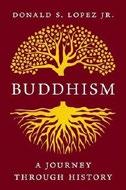
A Buddhist history tracing the line between academic rigor and inclusivity with a minimum of strain.
Lopez is an established figure of Buddhist academia both as a longtime professor of Buddhist and Tibetan studies at the University of Michigan and with his many books that bring the study of Buddhism into the public eye. As he acknowledges at the outset of his most recent work, an investigation of Buddhism in its transcontinental journey over 2.5-plus millennia is a problem of scale. Tomes might be dedicated to any one century or region of influence. For the reader brave enough to take on such a global religion, Lopez has arranged 30 stand-alone essays in which one can trace a path there and back in different parcels of space and time. Rather than chronologically or regionally, he organizes these alphabetically, addressing apocalypse, art, canon, council, disappearance, encounter, food, identity, immortality, incarnation, innovation, law, narrative, nation, ordination, orthodoxy, persecution, philosophy, pilgrimage, rule, schism, science, self, sex, society, war, women, wrath, and writing, with an opening essay on history pointing to his own endeavor. An extended introduction expands on a primer in Buddhism for anyone coming up to speed with the terms at play. Lopez also attempts to cover in a brief but meaningful way
Ignorance as essential to self-awareness in a world of contradictory ideas.
countries where Buddhism can be found over time. Even while brief, these explanations accumulate, suggesting the expansive if interconnected global scape Lopez is outlining. But even for these far-flung reaches of theoretical and academic inquiry, Lopez does tend to start and conclude each essay in territory that will be familiar to the reader, rooting his essays in tropes and experiences of the contemporary anglophone world. Aiming at a global view of Buddhism, Lopez keeps the reader circling back to the enormity of the scope, such that with one wary eye on the horizon, the other analyzes whatever academic soil in which Lopez is digging. Puzzle pieces of a global Buddhist scape to be assembled, scrambled, and reassembled.
May, Robert E. | Rowman & Littlefield (204 pp.) $27.00 | Dec. 3, 2024 | 9798881801786

Investigating the historical accuracy of a Southern legend. An enduring piece of antebellum folklore has claimed that enslavers allowed enslaved people a week or more of time off during Christmas to “do what they wished.” The actual length of time they were free from forced labor depended on how long it took for a water-soaked Yule log in their master’s fireplace to burn down. This story—which typically highlighted the tolerance of enslavers and the willingness of enslaved people doing whatever it took to keep logs burning for as long as possible—was so entrenched in Southern culture that the Southern tourist industry was still using it for Christmas travel publicity campaigns in 2012. To find the truth behind the story, May, a professor emeritus of history at Purdue University, examined a wide variety of sources, including newspapers, first-person accounts, novels, and
historical documents. What he discovered suggested conscious efforts, begun during Reconstruction, at a cultural makeover. The Christmas Yule log tradition was an import from England that was traceable to colonial Virginia. But by the 1870s, and just as “ex-Confederates regained their mastery over southern politics,” May observes, reconciliationist narratives that peddled sentimental visions of the antebellum South began appearing in popular magazines like the Atlantic Monthly. The dark side of such stories was that they rarely denounced slavery because to do so would have implied a renunciation not just of the Confederacy but—perhaps even more importantly—white Southern values.
A thoughtful antidote to white Southern propaganda.
Meiresonne, Bastian | Black Dog & Leventhal (352 pp.) | $40.00 Jan. 14, 2025 | 9780762489015

K-movies are riding the Korean wave, and this account shows how the peak was reached.
There was a great deal of surprise when the Korean film Parasite won Best Picture at the 2020 Oscars, but, says Meiresonne, there shouldn’t have been. He explains that the Korean film industry has a long history, with many successes and setbacks. An Asian cinema specialist, he is well placed to tell the story, and a large part of this book examines the development of the form in Korea. It has not been an easy ride, with the industry often caught up in the country’s turbulent politics. The long Japanese occupation of Korea (1910-1945) restricted the types of films that could be made. After the Korean War, the focus was on the domestic market, and many excellent productions emerged, with talented directors seeking to tell the national story. Some aspects of Korean culture did
Tracking the growth of Korean cinema—and how the world woke up to it.
HALLYUWOOD
not play well in foreign countries, and it was not until the 2000s and the rise of the hallyu (“Korean Wave”) that directors found the right formula. Movies like Oldboy, The Handmaiden, Train to Busan (and its sequel Peninsula), and the historical blockbuster The Admiral: Roaring Currents won a global audience. Meiresonne has a good time tracking all this, but there are some surprising gaps in the narrative. The section on sci-fi movies—a big part of the modern industry—is disappointingly small. Nevertheless, Meiresonne offers some interesting insights into the future, discussing collaborative projects and the growing role of streaming. The book includes plenty of movie stills, posters, and photographs that help make it an entertaining, informative read. A handsome compendium on the rise of Korean cinema.
Mester, Emily | Norton (240 pp.) | $17.99 paper | Nov. 26, 2024 | 9781324035237

The dysfunctional joy of America’s indulgences in excess. In her debut collection, New York transplant Mester, her Midwestern roots firmly intact, dissects America’s complex relationship with excess through nine loosely connected personal essays. Drawing from her own experiences and those of her family, specifically her father and grandmother, she examines the nation’s extreme consumerist psyche, revealing how Middle America’s habits mirror
broader national trends in overindulgence. From Amazon’s one-click convenience to Costco’s bulk-buy paradise, from endless Olive Garden breadsticks to the anxieties of overconsumption, Mester paints a vivid portrait of American consumerism. Her trio of “Storm Lake” essays subtly unravel her grandmother’s eccentricities, particularly a hoarding compulsion that begins with collecting freebies and ends with Mester confronting an abandoned, cluttered home in Iowa. In “Wholesale,” Mester fondly recounts her family’s weekly Costco trips. “Nobody ever went to church. Costco was our mass,” she writes. For those unfamiliar with the retail giant, she breaks down Costco’s business model, its place in the retail landscape, and its customer demographics, but it’s through her father’s compulsive shopping that she reveals the store’s broader appeal: “To people like my dad, Costco offers far more than a good deal. It offers the lulling comfort of permanent volume, the same bulwark against scarcity that draws us to the-all-you-can-eat, the BOGO, the unlimited refill, the family size. The endless, the bottomless, the lifetime guarantee—these promises are not to be underestimated, because their flipside is terrifying. To want a boundless supply means also to acknowledge a boundless need. We are inclined to hunger.” Throughout, Mester offers a balanced perspective, blending personal experience with objective analysis. Her cleareyed approach suits the subject matter, though her deadpan style occasionally limits warmth and humor. Despite this, she achieves considerable depth, exploring the complexities of American consumerism with insight and nuance.
A thought provoking view of our relationship with consumption and excess.
Mulley, Clare | Pegasus (352 pp.)
$29.95 | Dec. 3, 2024 | 9781639367627

Celebration of a hero of the Polish resistance during World War II— whose work, because she was a woman, was long obscured.
Elzbieta Zawacka, writes historian and BBC commentator Mulley, was the only woman ever to be enlisted in the elite special forces of the Polish army in exile, who was parachuted into her Nazi-occupied homeland to help organize resistance fighters. As Mulley notes, some 40,000 women became members of the Polish Home Army, but none had an official rank and usually fulfilled jobs thought suitable for women—typing, cooking, nursing, and the like. “Zo,” her code name, championed women’s rights as well as antifascism. Before the war, she had trained in mathematics, and, “unmarried at thirty and choosing to live alone, she was already raising eyebrows.” Yet, of more or less ordinary appearance, she was able to blend into the crowd, which helped as she crossed the borders between Poland, Germany, and other nations more than 100 times, carrying messages as a courier. “Serious, stern, tough and very matter of fact,” as a comrade described her, Zo helped organize the Warsaw uprising and, against all the odds, survived years of being hunted by the Gestapo. When the Soviets arrived, however, the Polish resistance was suppressed and its leaders arrested. Zo was arrested too, “each investigation leading to further interrogations,” and finally sentenced to seven years of imprisonment, during which time she taught math to inmates and guards alike. Freed, she mounted a campaign of noncompliance, saying, “There is nothing they can do to me.” Among her other accomplishments was public commemoration of the Home Army, part of “a chain of defiance
leading inexorably to Poland’s return to independence”—after which, in belated acknowledgment, she was honored with the rank of brigadier general.
A well told story from a little known corner of World War II history.
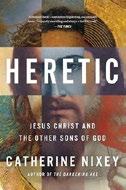
The early critics, and competitors, of Christianity. Journalist Nixey delves into the sometimes scant evidence of the religious losers of early-Christianera history. In doing so, the author clarifies the extent to which the Christian faith has evolved despite being, at one time, just one of a myriad of other similar belief systems in the Roman Empire and beyond. “The first century,” Nixey explains, “was in truth a century that was full of many lords, and saviours, and gods.” She brings to light the caustic criticisms of early anti-Christian authors, relying most heavily on second-century Greek philosopher Celsus as well as third-century philosopher Porphyry. Both authors are cited throughout the work and form a backdrop for the early Greco-Roman skepticism and hostility toward the burgeoning Christian faith. Nixey uses numerous examples to demonstrate that miracle healings, and even resurrection stories, were far from unique in the ancient world; in many cases, the tales of such miracle workers largely mirror the accounts of Jesus. She notes the widespread prevalence of the world of magic, arguing that early Christian stories and art borrow heavily from that aspect of ancient life. “Wherever Christianity travelled,” the author argues in her conclusion, “it changed, blending here with wizardry, there with sorcery; here with astronomy and astrology,” and so on. The lesser-told history of the faith
involves a concerted effort by many in power to sanitize these aspects of Christian legend.
A thought provoking look at a religiously tumultuous era.
Olofsson, Jonas | Mariner Books (224 pp.)
$28.00 | Jan. 7, 2025 | 9780063394674

Opening our eyes to our noses. Yes, the nose knows. In fact, it knows much more than we often give it credit for, and Olofsson aims to address the shortcoming. As a professor of psychology at Stockholm University, where he directs the Sensory Cognitive Interaction Lab, he has been studying our sense of smell for 20 years, and here he brings together a persuasive body of research, both his own and that of others. He notes that humans top many animals (but not dogs) in olfactory sensitivity and that scents have a direct connection to the brain, evoking complex memories and emotional responses. He examines how different cultures find certain aromas pleasing or disgusting, which gives him the chance to insert some wry humor, especially about the fermented herrings for which his country is famous (or infamous). He looks at why Covid-19 temporarily robbed certain people of their sense of smell, and in some cases changed it. A loss of a sense of smell may be a warning signal of illnesses such as Alzheimer’s, although more research is needed in this area. Smelling skills can be heightened through training and experience, and Olofsson speaks to several chefs and winemakers whose noses are a professional asset. After reading the book, one might well become more aware of the scents around them, whether usual or remarkable. Olofsson writes, “One aim of this book has been to make the reader nosewise: to realize that the sense
>>>


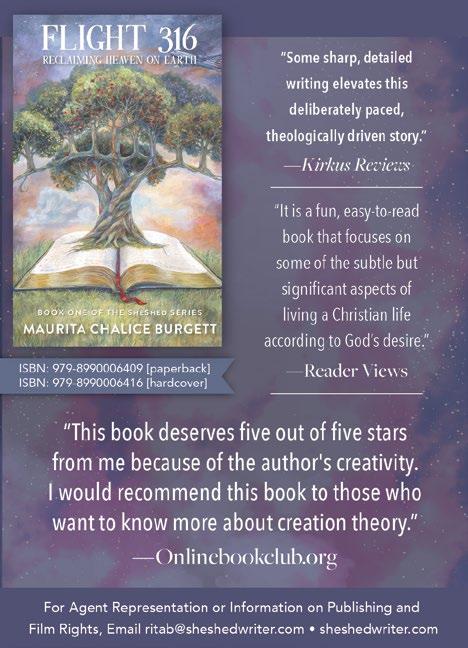

Chris La Tray


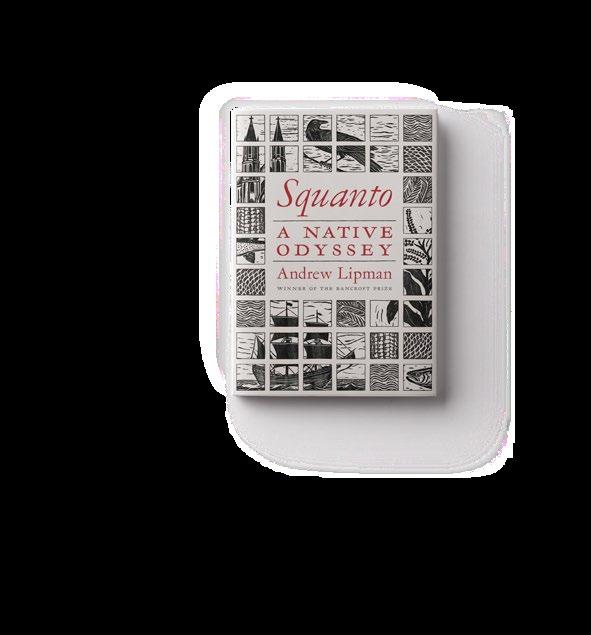





David Waldstreicher was awarded the prize for The Odyssey of Phillis Wheatley.
David Waldstreicher has won the George Washington Prize, given annually to an outstanding book about the United States’ founding
era, for The Odyssey of Phillis Wheatley: A Poet’s Journeys Through American Slavery and Independence.
Waldstreicher’s book, published last year by Farrar, Straus and Giroux, is a biography of Wheatley, the enslaved poet who was emancipated shortly after the publication of her collection Poems on Various Subjects, Religious and Moral
A critic for Kirkus wrote of Waldstreicher’s biography, a finalist for the Los Angeles Times Book Prize, “Wheatley’s poetry comes into sharper focus, but Wheatley herself remains elusive.”
James Basker, the president of the Gilder Lehrman Institute of American History, which

co-sponsors the prize, said in a statement, “David Waldstreicher’s biography of Wheatley will be the definitive biography for years to come. Deeply researched, rich with historical and literary detail, with subtle readings of her poems and their classical antecedents, Waldstreicher gives us a Wheatley who is not only ‘the mother of African American literature’ but a serious actor in the politics and religious life of the American founding.”
The George Washington Prize, sponsored by the Gilder


Lehrman Institute, Washington College, and Mount Vernon, was established in 2005. Previous winners include Ron Chernow for Alexander Hamilton, Annette Gordon-Reed for The Hemingses of Monticello: An American Family, and Mary Beth Norton for 1774: The Long Year of Revolution.—M.S.

of smell, often unnoticed, influences so many of the most important parts of our lives. Most of us have a world of smells to discover.”
With intelligence and wit, a researcher raises our sensitivity to smell.
The True Saga of a Frontier Family That Reshaped the Nation— and
Pappalardo, Joe | St. Martin’s (400 pp.) $30.00 | Nov. 26, 2024 | 9781250287540

Parallel lives of Roy Bean, the self-styled “law west of the Pecos,” and his three very different brothers. Born in Kentucky, the Bean brothers— James, Samuel, Joshua, and Roy—were living emblems of westward expansion. All possessed, to varying degrees, something of the rule-evading, even lawless ethos of the Anglo conquest, from outright murder to the mere gaming of the system. Trade brought some brothers west, war others; several thrived in an economy of contraband goods, stolen livestock, and enslaved people. Indeed, Roy, living in Confederate-inclined New Mexico, “dream[ed] aloud of importing slaves to create a lavish ranch,” writes Pappalardo. Roy, the youngest, is the brother best known by name today—but in almost every respect incorrectly, for the supposed lawman, while worse than most of the criminals in his corner of Texas, was a genius at self-invention. On that note, all the brothers were skilled at convincing their fellow westward-ho types that they were natural leaders of men, and indeed a couple of them were, elected to office in California and New Mexico. For his part, Roy, writes Pappalardo, paraphrasing a contemporary, was “a scoundrel capable of bravery and chicanery.” The author’s penchant for dramatizing proves wearing (“head flung backward at an impossible angle, the red crescent of his slit throat
stretched open and yawning”). Still, fans of the Wild West as viewed under the revisionist lens will applaud Pappalardo’s dismantling of Roy Bean’s mostly self-made myth, promoted uncritically and even embellished by John Huston’s 1972 film The Life and Times of Judge Roy Bean, with Paul Newman turning a very bad guy into a lovable eccentric. A bit overcooked, but of interest to readers of Western Americana.
Peifer, Douglas Carl | Oxford Univ. (320 pp.)
$34.99 | Jan. 7, 2025 | 9780197539668

Detailed history of the German soldiers who, for numerous reasons, left the ranks without leave.
In conservative West Germany, courts in the 1950s and ’60s ruled that the commanders of the Wehrmacht and the Nazi regime’s judiciary had ruled fairly when sentencing deserters to be executed, decreeing that “the Wehrmacht had not been any harsher in enforcing military law than had the Americans and British.” That’s not quite right, notes historian Peifer: Whereas an estimated 15,000 German soldiers were condemned to death for the crime, the U.S. “executed precisely one soldier for desertion in World War II.” Peifer begins with a few extended anecdotes on individual German soldiers and what prompted them to desert, even knowing the consequences: One officer who successfully fled to Switzerland enumerated several reasons, from the mass killing of Jews to watching his unit be chewed to bits on the Russian front. He did not, the author adds, “list fear and exhaustion as reasons for his flight… but surely they played a role.” Others had perhaps less noble reasons, simply preferring not to be killed; strangely, as Peifer notes, this proved a successful defense in at least a few cases, albeit in one a soldier was sentenced instead to 15 years of hard labor, enough to convince
him to volunteer for frontline service again simply so he could get a bit of food and rest. “He barely survived the war,” Peifer writes, but at least the soldier lived. Interestingly, the author observes, the East German regime was somewhat more forgiving of desertion than was its western counterpart, considering desertion an act of resistance. In all events, and not at all surprisingly, as Peifer records, desertion rates climbed steadily as World War II went on and the morale of German soldiers and their auxiliaries declined.
Students of military psychology as well as historians will find Peifer’s work of value.
Pepi, Mike | Melville House (224 pp.) $19.99 paper | Jan. 7, 2025 | 9781685891374
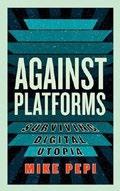
A critique of the neoliberal ideology that underpins digital platforms. Pepi, a critic writing at the intersection of art and technology, argues that digital platforms are designed to undermine collective institutions and foster an individualism insensitive to collective obligations. Technology, though, is just a tool, Pepi says, and our attention should focus instead on intellectual justifications and “the socio-political formations in which digital technology and software are deployed,” including the role of venture and finance capital in privileging growth and profit over social purpose. Pepi’s critique consists of nine counterclaims, three of which are that computers are not sentient and cannot think, the internet is not a “single, united entity” but rather a complex and layered ecosystem of human relations, and algorithms are made by class-positioned people with specific prejudices and hidden intents. What concerns him is the extent to which digital platforms diminish a public life, suppress judgments regarding the impacts of
In prison, Huggins founded a multiracial space that fostered a sense of empowerment.
BLACK PANTHER
digital platforms (e.g., Uber detracting from public transit), and turn us away from our shared responsibility for the hardships that many people face. Digital ideology, in short, embodies a wholly unrealistic techno-utopianism. Pepi specifically bemoans the way that proponents of artificial intelligence portray it as a replacement for the serendipity and emotional valence of artistic culture. He has little to offer as far as what needs to be done, except to assert that we need to “reform our institutions to become reliable stewards of skeptical techno-progressivism.” The value of this book is in debunking self-serving claims of digital technology. An unsparing exposé of how digital platforms stifle personal and collective efficacy.
Phillips, Mary Frances | New York Univ. (336 pp.) | $35.00 Jan. 7, 2025 | 9781479802937

Activism grounded in love. Phillips, a scholar of Africana studies, draws on oral history, extended conversations, and abundant archival sources—including FBI and prison files—to create an intimate portrait of Black Panther activist and spiritual leader Ericka Huggins (b. 1948). Huggins grew up under Jim Crow in Washington, D.C., where she encountered racism in the community and cruelty at home: her father was an abusive alcoholic whose
WOMAN
rages traumatized his three children. A sensitive girl, Huggins experienced a political awakening in high school that led her to attend the March on Washington when she was 15, and her political awareness became honed at the HBCUs she attended. With John Huggins, whom she married, she became involved in the Black Panther Party. Within two years of her joining the BPP, she was a new mother and the widow of her murdered husband. Implicated in the murder of another BPP member, she was incarcerated from 1969 to 1971, when she was acquitted. For the five BPP women convicted with her, and for other inmates as well, Huggins’ practice of spiritual wellness was a crucial survival tactic. While in prison she founded the feminist Sister Love Collective, a diverse, multiracial queer space where yoga and meditation, writing, and self-care fostered a sense of empowerment. Among the group’s projects was a hair salon, which “harnessed the power of beauty, intimacy, self-confidence, care, and communal health as potent tools to undermine the oppressive forces of white supremacist state violence.” The members even altered their baggy prison uniform to reflect their own sense of style. In recounting Huggins’ life, Phillips enlarges the history of the Black Panthers by showing women’s experiences as integral to the group’s work and arguing convincingly that “spirituality, love, and sisterhood are inherently political.”
A revealing, wellresearched biography.
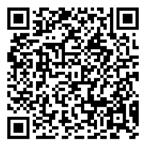
Reeder, Lydia | St. Martin’s (336 pp.)
$30.00 | Dec. 3, 2024 | 9781250284457
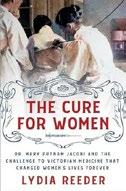
For
A pioneering American female doctor gets her due. Written with a somewhat novelistic flair, this is a fascinating, detailed biography of the gifted, impetuous social reformer and trailblazer for women’s medical education, Mary Putnam Jacobi (1842-1906), a doctor at a time when male doctors believed that women shouldn’t even study medicine. Reeder first discusses a few of the key women doctors in America. In 1860, Jacobi was 17 when she started working at the New York Infirmary for Women and Children, eventually graduating from the New York College of Pharmacy. At the Female Medical College of Pennsylvania, she wrote her thesis in Latin. Her first job was an exhausting internship at the New England Hospital for Women and Children, followed by work in a private lab. In 1866 she went to Paris, interned at hospitals, and conducted scientific research, which she excelled at. After numerous attempts, she was finally accepted at the prestigious École de Médecine. “Her research and education,” Reeder writes, “made her one of the best educated doctors in America.” Next Jacobi became a professor at the women-run Women’s Medical College of the New York Infirmary, updated its curriculum, and was accepted into many prestigious associations, all while finding time to do some private practice out of her home. In 1873 she married a doctor, Abraham Jacobi. On their honeymoon, she updated his book, Infant Diet , for women readers. Her writing on menstruation won the prestigious Boylston Medical Prize;
THE CHIEF RABBI’S FUNERAL
she later published it as a book. Reeder discusses Putnam’s “tremendous capacity for work,” her many articles and books, including fiction, and her relentless fight for suffrage and women’s rights in medicine and labor reform. Despite occasional lengthy digressions that slow down the narrative, this is an impressive, important biography.
A much needed biography of an extraordinary woman.
Robinson, Callum | Ecco/ HarperCollins (320 pp.) | $30.00 Dec. 3, 2024 | 9780063350830
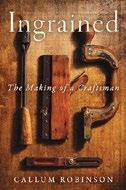
The story of how a personal financial crisis forced the author to get creative. Robinson is the eldest son of a Hebrides-bred furniture maker whose skills with people and wood he holds in awe. Alas, Robinson does not share his father’s talent for the craft of woodworking. Though bright and sensitive, he’s painfully shy. He skips university to take a job in a pub, and it’s only when his father asks him to help with his business that Robinson is forced—a position his passivity often puts him in—to reluctantly start paying attention to the skills required of a craftsman. He completes his apprenticeship at a large commercial concern in New Zealand before returning to Scotland to make a go of it on his own. Luckily, he meets his soulmate Marisa, an outgoing college
grad of Italian heritage with an entrepreneurial spirit and a knack for conceptualizing furniture design. The couple begin a business creating bespoke pieces for corporate and other well-to-do clients. But when their largest client cancels a contract, they make a quick decision to open a boutique on the high street of an Edinburgh suburb. Robinson is a painstaking writer, clearly inspired by authors like Anthony Bourdain, Bill Bryson, and A.A. Gill, but his talents can seem larger than his subject often calls for. The medium-stake drama of whether the business will open or survive can seem overwritten. And yet passages about walking in a highland forest among the ancient oaks and more recent “immigrants” like Douglas fir, or comparing the grains of wood for various purposes, reveal him to be a master of sensory prose. A woodworker shows he’s equally gifted with words.
The Chief Rabbi’s Funeral: The Untold Story of America’s Largest Antisemitic Riot
Seligman, Scott D. | Potomac Books (248 pp.)
$34.95 | Dec. 1, 2024 | 9781640126183

Revisiting the largest violent antisemitic incident in U.S. history.
Known as “Jacob the Sharp” for his wisdom, Jacob Joseph of Lithuania came to America in 1888 to serve as chief rabbi of New York City. He died in 1902, and his funeral cortege on July
30 of that year drew tens of thousands of mourners to the streets of Manhattan’s Lower East Side, home to many Jewish immigrants. As Seligman writes in his revealing history, when the procession passed the R. Hoe & Co. printing press factory, workers on the floors above pelted the mourners with “iron nuts and bolts, flat irons, screws, tools, bricks,” and more. Worse, arriving police officers “drew their billy clubs and started beating up Jews.” Hundreds suffered injuries. The resulting outrage compelled New York’s Jewish community to demand five investigations into police conduct, including the first citizens’ committee in the nation to investigate an ethnic riot. Seligman shows how popular revulsion to the horrific antisemitic violence unified New York City’s fractious Jewish community, the Russian and largely Orthodox newcomers downtown with the German and largely Reform Jews uptown. The author’s account portrays a Jewish community learning how and when to deploy its newfound political clout. He writes that the Anti-Defamation League reported that “2023 marked the high-water mark for antisemitic assaults, harassment, and vandalism” in the U.S.—there were 161 violent assaults in 2023. “Had the ADL been around and been counting, however, they would have exceeded that number on just one day in 1902.” Seligman’s retelling of this largely forgotten incident of anti-Jewish violence could hardly be more timely. In 2022, FBI Director Christopher Wray found that antisemitism fueled 63% of religious hate crimes in the U.S., though Jews make up only 2.4% of the population. The horrific 1902 riot does not seem so far in the past. A valuable history of violent assault finds newfound relevance.

Shade, Colette | Dey Street/ HarperCollins (256 pp.) | $29.99 Jan. 7, 2025 | 9780063333949

A cultural critic revives the kooky, tech-obsessed spirit of the Y2K era.
Journalist Shade scrutinizes and celebrates the new millennium with heart and a spicy sense of nostalgic humor. Drawing on inspired research interwoven with her own youthful coming-of-age memories of being obsessed with that digital, optimistic, futuristic aesthetic, the author recreates the spirited era when early personal technology was innocent fun—until it wasn’t. She laments that while those childhood days were personally carefree, things have become immeasurably worse in terms of climate change, inequality, and political instability. Shade’s new millennium time capsule, from one economic bubble in 1997 to another in 2008, includes the rise of websites, home personal computers, shimmery metallic-inspired MTV video pop and rap stars, and numerous milestones that all became tarnished by the atrocity of the 9/11 attacks, which collapsed the Y2K party with a sobering pause. The author employs the expertise of political scientists to remark on the rise of population diversity and queer visibility throughout the aughts and effectively integrates these social developments with her own maturing perception of the fast-emerging world around her as an adolescent. Countering the social justice movements was the “McBling” aesthetic, popularized by
celebs like Paris Hilton and Britney Spears, which became a “metonym for vacuity, excess, entitlement, and celebrity culture itself.” South Park, Starbucks’ “latte liberal” discourse, and many other influences would mark the decade with humor, hijinks, consumption, self-absorbed technology, and finally a sobering recession. Shade particularly excels with an in-depth discussion on how the techno-optimistic ascension of the internet revolutionized politics, social intercourse, and “our own individual self-perception.” With the advent of social media sites, search engines, subscription content, and “anonymous and frictionless” adult website content, she notes, modern life as we knew it would never be the same. If readers can overlook the book’s dizzying nonlinear timeline, Shade’s exploration of those indelible years creates a fun, fulfilling, and rewarding time capsule.
A reflective, nostalgic, backward glance at a bygone era some recall fondly and others regret.
Spence, Lyndsy | Pegasus (288 pp.) $29.95 | Jan. 7, 2025 | 9781639368051

The famous actress confronts her mental demons. Drawing on unpublished material, historian Spence aims to go deep into her subject’s life. She writes that her goal is authenticity and a “theatrical air with symbolism and subtext” in order to “give Vivien her power back.” Spence begins her biography of the two-time Academy Award winner in 1953, when Leigh
A Hollywood career cut short by mental illness.
WHERE
MADNESS LIES
(1913-1967) had a nervous breakdown and was diagnosed with manic depression. Leigh was in Ceylon making a film with Peter Finch. She really didn’t want to do the movie, was miserable, and missed her husband, Sir Laurence Olivier, resulting in an affair with Finch. Both Leigh and Olivier were married before they first met and had affairs going on. Spence’s storytelling technique is to go into detail—how people feel, what they say and even think—as she describes Leigh’s falling to pieces. After returning to Hollywood, Leigh’s condition worsened. She was hospitalized in London, receiving electroconvulsive therapy treatments. Throughout, Spence intermittently touches on Leigh’s earlier years, her family, and previous roles. This back and forth sometimes makes for a bumpy ride. In 1955, her “mental health was on a downward spiral” while she was trying to rekindle her relationship with Finch; she did, which Olivier accepted amid his own flings. After a miscarriage and filming Anna Karenina, she fell into a deep depression, and her tuberculosis was making her ill. In 1958, Olivier was now in love with Joan Plowright and wanted a divorce. Leigh was experiencing more manic episodes and endured more ECT. Two years later, she gave in to Olivier. Spence shows her final years as sad ones, fraught with psychosis and stage fright, dying at 53 in 1967 from chronic pulmonary tuberculosis. An unconventional biography some will love and others will shake their heads at.
Steele, Christopher | Mariner Books (336 pp.) $32.50 | Oct. 8, 2024 | 9780063373433

A defense of a sensational intelligence report linking the Republican nominee and Russia.
The author, a longtime British spy thrust into a political tempest
The story behind a
spy’s sensational intelligence report.
when his so-called Steele Dossier burst into public view, credits himself for helping secure “a significant win” against totalitarianism. Steele chides the congressional staffer who leaked the dossier, which was funded by Democrats and described Moscow’s attempts to gain leverage over Trump. But he’s pleased that after BuzzFeed published his report in January 2017, “suspicion and scrutiny” prevented Trump from getting too chummy with Russia. Though Steele unearthed claims about Trump’s purported illicit and sleazy doings in that country, he reminds us that intelligence gathering involves people with sometimes hazy motives. “Much of the sourcing used in this book,” he writes, is “inherently uncertain.”
Further, intelligence reports like the Steele dossier are considered useful if they’re “70 percent accurate.” This is an enlightening glimpse of the profession, but it stymies a reader trying to assess the relative credibility of the dossier’s claims. Steele is undeniably effective when recalling life in Moscow as a young British government intelligence officer, learning Russian and cultivating sources. He’s “convinced” that Russian counterintelligence thugs— not, as Putin claimed, Chechen rebels—killed more than 300 people in four 1999 apartment-building bombings. Steele and others subsequently warned British officials that Putin was “a generational threat,” he writes, but for too long Western leaders naively thought the Russian president could “be reasoned with.”
Citing Russia’s invasion of Ukraine and the murder, in England, of Russians Putin perceives as traitors, Steele forcefully argues that the
country, under Putin, is extraordinarily dangerous to global stability. But “the main threat to Western democracy” resides “within our own societies,” he adds, righteously upbraiding voters and leaders who’ve enabled populist demagogues. An ex spy who probed Donald Trump’s overseas entanglements meticulously explains his work, frankly conceding its limitations.
Stein, Eliot | St. Martin’s (336 pp.)
$29.00 | Dec. 10, 2024 | 9781250281098

The eccentric, the cryptic, and the heartwarming find a place in this collection of cultural marvels. In a world that at times seems to be plummeting into the future without much thought, it can be enlightening to take the occasional glance backward. This is the premise of Stein’s book, in which the BBC journalist embarks on a globetrotting journey to find cultural traditions both obscure and wonderful. In the mountains of Sardinia, he samples su filindeu, also known as “the threads of God,” a type of pasta so rare and delicate that only three women in the world know how to make it. In Peru, he meets the last man capable of weaving the grass bridges that tied together the Incan empire. In a
corner of Wales, he speaks to a beekeeper who maintains the custom of “telling the bees” the news of the day, which stretches from major events to local gossip. The bees seem to appreciate it. Just as touching is his visit to a tree, deep in a German forest, that has its own mailing address: necessary, as generations of people have written to it in an attempt to find love and happiness. Perhaps his strangest encounter is with a family in India that, for centuries, has been making mirrors from a secret metal alloy. The mirrors are reputed to reveal the true persona of anyone brave enough to look into one. These are remarkable narratives, and Stein explores them with due respect. “They remind us that culture is born slowly through a million tiny, personal moments,” he writes. “When one seemingly insignificant wonder fades, an irretrievable part of our humanity vanishes with it.”
Stein’s affectionate memoir mixes traditions, rituals, and good food, adding up to a thoroughly enjoyable read.
Strathern, Paul | Pegasus (400 pp.)
$35.00 | Jan. 7, 2025 | 9781639367979

First-rate accounts of events and geniuses from past centuries.
Prolific novelist and historian Strathern, author of Death in Florence: The Medici, Savonarola, and the Battle for the Soul of a Renaissance City, has written eight histories of Renaissance and Enlightenment Europe. Returning to that period, he eschews politics and war in favor of several dozen essays on events and great men and a few deserving women. All his greats lived between 1600 and 1800, an era often called the Age of Reason. A rule of publishing demands the author of a
collection of unrelated essays must claim that they are, somehow, related. Strathern points out that his subjects not only lived through a time when unreason thrived as well as it did but partook of it generously. Few will quarrel with this or object to a lively if conventional history of a period familiar to the educated reader but still containing pearls. Most readers are familiar with names like Newton, Rembrandt, Galileo, Louis XIV, Cromwell, and Voltaire, but Strathern provides a thoroughly satisfying experience and no shortage of insights. Less familiar names include Artemisia Gentileschi, a contemporary of Caravaggio and a master artist in her own right, and Sor Juana, the brilliant 17th-century Mexican polymath. Encountering the era’s great thinkers, Strathern avoids the easy road of biography and delivers good popular explanations of the thoughts of Spinoza, Locke, Descartes, and Hobbes, as well as the discoveries and even the mathematics of Newton, Leibniz, Fermat, and Pascal.
Less an organized history than an Age of Reason potpourri, but a good read.
Tuininga, Matthew J. | Oxford Univ. (440 pp.)
$34.99 | Jan. 7, 2025 | 9780197671764

History of the fraught encounters between Puritan colonists and Indigenous peoples in the first decades of the European settlement of New England. It’s instructive that, even as the Mayflower was riding at anchor in November 1620, the first Puritans to set foot in what would become Plymouth Colony immediately ransacked a Nauset store of corn and desecrated a graveyard. Tuininga, a professor of theology, writes that the Puritans
had no inborn prejudice against the Indigenous people on racial grounds, but they did think of them as heathens in need of salvation. That salvation, Tuininga suggests, was supposed to be one of friendly persuasion, even as the Puritans established policies that required settlers to purchase land from its Native owners. There wasn’t much emphasis on fair trade, sad to say, and in time, “as colonists occupied nearly all the best land,” the Indigenous peoples of the Massachusetts colonies rose up. It’s no small irony that many of those who revolted were “praying Indians,” living in 14 towns that were usually alongside or near Puritan settlements. Those praying Indians were theoretically extended the same rights as colonists, at least at first, but they “often lacked the resources to file appeals or pay fines” and so were at a constant disadvantage in their dealings with the Puritans. As Tuininga notes, the series of conflicts that ensued came at great cost: numerous English towns, among them Providence, Rhode Island, were put to the torch. They were even more ruinous for New England’s Algonquian population, whose numbers were estimated to have fallen from 11,000 to 5,000. He adds that this didn’t square with the Puritan line that they sought “benevolent spiritual conquest” rather than conversion and subjugation at gunpoint. Though stiffly written compared to Jill Lepore’s essential Name of War (1998), Tuininga’s book does a good job of sorting out the complexities of one of America’s bloodiest, if little-known, conflicts.
A capable study of cultures and ideologies in collision.

Tyler, Amanda | Broadleaf Books (244 pp.) $27.99 | Oct. 22, 2024 | 9781506498287

A lawyer and religious activist squares off against Christian nationalism and its farright-wing tenets.
For more about the Puritans, visit Kirkus online.
“A large and diverse community of people is eager to challenge the political ideology of Christian nationalism,” writes Tyler. This community comprises many faith traditions. In the case of her former Southern Baptist alignment, one argument against nationalism holds that “every person must have the freedom to respond to God and that no governmental authority should interfere with that relationship.” Speaking from that tradition, Tyler argues that the conflation of Christianity and government is idolatrous, and in its us-againstthem stances, with “us” being able to tell “them” how to live their lives, it violates what Tyler holds to be the most important tenet of Christianity: that one should love one’s neighbor as oneself. Tyler depicts Christian nationalism as an effort to impose state-backed theocratic authority on the entire nation; nationalists, she holds, believe a range of propositions from the sanctity of the Second Amendment to the relegation of women to subservient positions, to say nothing of suppressing religious minorities. Tyler holds that these views have come as part of a package that has dogged Americans from the earliest days but has gathered force in the past few decades, including white supremacist assumptions and the insistence that God favors the United States above all other nations—more idolatry, that. With each prose narrative chapter closing with biblical readings and workbooklike exercises, Tyler’s book offers both good news and bad. The
good news is that “large and diverse community.” The bad news, she allows, is that it will take generations to entirely root out Christian nationalism, beginning with one central task: “to directly confront a persistent myth: that the United States is a Christian nation.”
Progressive Christians and secular activists alike will find this a useful handbook in battling the religious right.
Visscher, Marco | Bloomsbury Sigma (320 pp.) $28.00 | Jan. 7, 2025 | 9781399419079

Nuclear power seems to be returning to favor. After a quick account of the Manhattan Project, journalist Visscher recounts the enthusiasm for peaceful uses of atomic energy, which peaked in the post–World War II decades before encountering challenges. At first, the possibility of nuclear war preoccupied everyone; activists denounced the bomb and radioactive nuclear fallout. Few attacked nuclear power, which advocates claimed would bring about a golden age of cheap electricity. By the 1970s, it produced electricity as cheaply as fossil fuels. Atmospheric testing stopped, but activist attention continued to focus on radiation— deadly, yet invisible. The result was an avalanche of safety regulations that made nuclear power more expensive than conventional power. Then came the 1979 accident at Three Mile Island and the 1986 Chernobyl disaster, and by 2000 nuclear power became—often literally—a cartoon epitome of evil technology. Now, in the 21st century, with a major contributor to global warming being greenhouse gases pouring from fossil fuel–burning power plants, the solution is clean energy—essentially solar and wind power, which are now practical and cheap. These fall silent, of course, in the absence of sun and
wind. Two major power sources can fill in the gaps: fossil fuel and nuclear. Convinced that atomic power spreads poison, most activists remain opposed. Polls show that people generally support nuclear power, but opponents, far more fierce, attract more media attention. Visscher argues that opposition to nuclear power is often as irrational as the logic of anti-vaxxers, that fossil fuel power plant emissions cause more disease and death than nuclear, and that today’s nuclear plants are pretty safe. It’s a cliché that facts rarely change a person’s firm beliefs, but Visscher is generous with facts, and nuclear power is undergoing a modest revival. A positive view that may change some minds.
Weathersby Jr., Irvin | Viking (256 pp.)
$30.00 | Jan. 7, 2025 | 9780593299159

A moving examination of controversial public monuments that confronts our nation’s troubled past. Weathersby, a professor of literature at Queensborough College in New York, begins with a gripping vignette in which he—a Black man—confronts a group of white supremacists defending the decommissioned monument of a Confederate military officer. It’s a strong start to an often-poetic if
occasionally meandering book. The title might suggest a conceptual, philosophical, or policy-driven treatment of controversial public monuments, but the book is closer to memoir, detailing the author’s encounters with and reactions to public monuments and the people who defend or condemn them. Weathersby writes with passion and clarity about the shameful history of chattel slavery, racial segregation, anti-Black violence, the brutal conquest of Native Americans, and the horrors of Hurricane Katrina, weaving this history of racial humiliation and oppression into his contemporary observations about the importance of monumentality and public art. The book recounts his visits to public monuments in his native New Orleans and many other locations across the nation, such as Mount Rushmore; the site of the Battle of Wounded Knee; Richmond, Virginia—the former seat of the Confederacy; and New York City. It includes anecdotes from his life that illustrate the toll taken by racial injustice and the potential of art to both hurt and heal. Weathersby brings a cultural critic’s eye to public art, explaining why monuments matter to individuals, communities, and societies. While the reader hoping for a more focused and comprehensive treatment of the controversies surrounding public monuments might be disappointed, fans of memoirs, as well as readers looking for insights into the passions that public monuments inspire, will find much of interest.
A spirited and often poetic treatment of an important and timely topic.
Encounters with and reactions to public monuments and the people who defend or condemn them.
How a group of women came together in the 1970s to open their own bank.
Williams, Grace L. | Little A (220 pp.)
$28.99 | Jan. 1, 2025 | 9781542025508

When a group of women took financial matters into their own hands. In the 1970s, American women had very little control over their financial lives. After marriage, they frequently needed their husbands to help them establish lines of credit, and before marriage and after divorce, they were often denied access to credit for things like mortgages and loans. Hoping to create a space “where everyone felt welcome,” a group of women came together to open the Women’s Bank of Denver. The members included Carol Green, who “had built a Weight Watchers empire” in the Denver region; Edna Mosley, a Black woman whose membership in the NAACP was informed by her own experiences with segregation; Wendy Davis, a councilmember who led a protest at the men’s-only restaurant at the Brown Palace Hotel; and Beverly Martinez, whose experience as a television show host gave her an inside look into Denver’s social issues. Together, the group faced ups and downs, including a delay on getting their charter approved and a rift that led to the resignation of some
of the original committee members, including Green. In 1978, the bank finally opened under the leadership of LaRae Orullian, a Mormon banking whiz who’d been denied promotions at her former company and was happy to helm this new venture. The author’s upbeat, conversational tone and clear affection for the focus of her work render this a fast-paced and riveting read, even if digressions into characters’ backstories can at times take confusing twists and turns. A fascinating history of a feminist triumph.
Wood, Alexander | Univ. of Chicago (496 pp.) $35.00 | Jan. 10, 2025 | 9780226836966

How New York City reached great heights. Between the late 19th and early 20th centuries, writes Wood, historian of American architecture and urbanism, New York City “grew into one of the world’s largest, most important, and dynamic cities.” Roughly 1 million buildings—an astonishing number—went up in the city during that period. In his deeply informed and informative account, Wood describes how population growth and a robust economy gave
rise to a large and sophisticated construction industry. He deftly describes the numerous and complex arrangements that provided much-needed office buildings, homes, factories, railway stations, bridges, streets, and subway lines. We read, often in detail, about large construction firms, building trade associations, the mechanics of tunnel construction, labor unions, architectural offices, and wrecking companies. Wood introduces us to government workers and officials such as Thomas F. Gilroy (head of the city’s Department of Public Works in the 1890s) and labor organizers such as Morris Rosen. After the city consolidated in 1898, Wood extends his gaze beyond Manhattan’s skyscrapers to the lower-density outer boroughs. Throughout, he attends to the many conflicts between business and labor over the length of the workday, safety, and wages; contractor competition for private commissions and lobbying for public works projects; and city government efforts to manage the corruption, labor unrest, noise and disruption, and the regulatory demands of building activity. For those fascinated by urban development (particularly construction and particularly in New York City), reading this substantial history is time well spent. What primarily matters to Wood, however, are facts. Consequently, he refrains from any attempt at a more general understanding of building construction. In the last chapter, after a brief summary, the story simply ends.
An impressive and absorbing account of the origins of New York’s modern cityscape.


IN 2020, a racist incident catapulted Christian Cooper into the public eye. While bird-watching in Central Park, he asked a white woman to leash her dog; she called the police, falsely claiming that a Black man was menacing her. Cooper was ultimately vindicated, and over the last few years, he’s used his newfound visibility to challenge notions of what a bird-watcher looks like. He began hosting the National Geographic TV show Extraordinary Birder, created a digital comic about his 2020 experience, and published an adult memoir, Better Living Through Birding (Random House, 2023). Throughout, he’s raised awareness of the prejudice that he and other Black birders face. As he says in his memoir, “We write our own sort of Green Book… keeping a mental map of where we do and don’t feel we can bird, camp, hike, or climb, safe from possible harassment and harm. There are areas, sometimes entire swaths, of the United States where we won’t venture—alone or at all.”
Though birding has historically been an
overwhelmingly white activity, Cooper shows that it doesn’t have to remain that way. Happily, he’ll soon be able to reach a younger audience; his debut picture book, The Urban Owls (Little, Brown), will be released in February 2025. And he isn’t alone. Numerous young readers’ titles this year center on Black and brown children developing a love of birding. Most of these tales don’t directly address race (and Cooper’s focuses solely on birds), but all send a much-needed message: Bird-watching is for everyone.
Two picture books follow youngsters at different stages of their birding journeys. In Murry Burgess’ Sparrow Loves Birds , illustrated by Tamisha Anthony (Christy Ottaviano Books, June 11), an aptly named child observes, with infectious joy, everything from cardinals to chickadees. Ornithologist Burgess reassures readers that they needn’t live in rural areas to appreciate nature; bustling suburbs are rife with wildlife, too.
By contrast, the protagonist of Sara Levine’s A
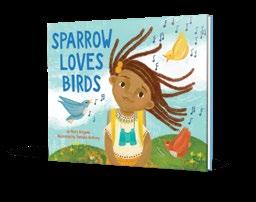


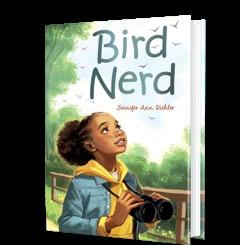
Terrible Place for a Nest, illustrated by Erika Meza (Roaring Brook Press, July 30), looks askance at everything in his new home, including a pair of mourning doves in the yard. But when the nest is accidentally destroyed, Juno helps them rebuild and begins to adjust to his family’s move. This quietly revelatory tale makes clear that a passion for birding can often catch us by surprise.
Brenda Woods’ spare yet moving novel With Just One Wing (Nancy Paulsen Books, May 14) also demonstrates the healing power of nature.
Eleven-year-old Cooper observes a family of mockingbirds in his grandparents’ backyard and helps raise one of the hatchlings, born with just a single wing. The intrepid little bird spurs him
to unpack complex emotions about having been adopted as a baby.
Fifth grader Nyla, the protagonist of Jennifer Ann Richter’s Bird Nerd (Holiday House, Oct. 22), is initially thrilled that her classmates will be competing against another school in a birding tournament, but her excitement fades when she realizes that the students at the wealthier, predominantly white, suburban Penn Elementary have far more resources than the kids at her school. Along with guidance for would-be birders, Richter gently but candidly explores privilege and friendship drama as Nyla comes into her own.
Mahnaz Dar is a young readers’ editor.
A journey through American music history as shaped by Black artists and traditions. Fittingly, given the U.S.’s long and complicated racial history, this work takes its title from the beloved hymn “Amazing Grace,” written by a slave trader turned abolitionist. The book begins on the African plains: “Listen to the fireside chorus / of the motherland / to the talking drums / dancing beneath the gold sun / that beat a bold tapestry / of yesterday’s stories / and tomorrow’s dreams.” Likewise, the author has created a beautiful tapestry, woven with song titles and musical
references. With each introduction to a different genre, he implores readers to “listen.” Laced with powerful imagery, alliteration, and onomatopoeia (“BUM-DUN! BUMDUN!”), his verse begs to be sung. Taking a comprehensive approach, Alexander explores regional styles such as go-go alongside internationally known genres, including gospel, jazz, and hip-hop. Palmer’s distinctive illustrations offer the perfect accompaniment. Bold colors set the mood, while his brush strokes evoke movement and convey strong emotion as he depicts everything from

Alexander, Kwame | Illus. by Charly Palmer | Little, Brown | 48 pp. | $18.99 Jan. 14, 2025 | 9780316442497
enslaved people joyfully dancing in New Orleans’ Congo Square to fists raised high for Black power to performances by Chuck Berry, Prince, Lauryn Hill, and other musicians. Detailed backmatter
defines terms and explains the significance of the music referenced.
A work whose lyrical and artistic genius only becomes more apparent upon rereads. (Informational picture book. 5-10)
of Zoey Turner By Erin Stewart
127 Mama Hug By Emma Straub; illus. by Stevie Lewis
A
tale of parental love that’s especially ideal for bedtime.
TO THE END OF THE WORLD, FAR, FAR AWAY
Kirkus Star
Abtahi, Olivia | Illus. by Monica Arnaldo | Kokila (40 pp.) | $18.99 Jan. 21, 2025 | 9780593620441

A pint-size interpreter reaches a boiling point. Life’s busy enough for young Cecilia, who has two full-time jobs: being a kid and interpreting for her Spanish-speaking parents. At any moment, they might request her services in “all kinds of grown-up places.” Donning a rather sharp green power suit, Cecilia translates during a doctor’s appointment, reshares instructions given by a disgruntled DMV employee, and ensures the perfect haircut at the salon. But all this work leaves her with no time to play soccer with her friends. So when a kind teacher inquires how she’s doing during a parent-teacher conference, Cecilia decides to unload and to ask her parents for support, depicted in a stunning double-page outburst in both Spanish and English (both languages are featured throughout the text). In her picturebook debut, Abtahi masterfully weaves an everyday tale that will be familiar to designated translators of all ages from immigrant families. Cecilia’s eventual cry for help speaks to the resilience that children in similar situations possess while also emphasizing the importance of self-care. Arnaldo’s bright watercolor and pencil-crayon artwork provides much-needed levity, with speech bubbles predominantly colored in
blue and orange to differentiate between the languages. While Cecilia and her family are cued Latine, secondary characters offer broad cultural diversity. Publishes simultaneously in Spanish. Sensationally true to life. (Picture book. 4-8)
Arena, Felice | Illus. by Beatrice Cerocchi
Sourcebooks Jabberwocky (32 pp.)
$14.99 | Oct. 1, 2024 | 9781464217920
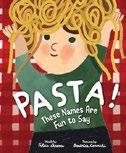
Passatelli, mostaccioli, and sagnarelli— oh my!
Since the musicality of these words is everything, readers should flip to the back for a guide to pronouncing the proper names of 35 selected varieties of Italian pasta. There they’ll find tagliatelle (tah-lyuh-TELL-lay), casoncelli (caz-un- CHEL -lee), and riccioli (ree-CHOH-lee). In the story itself, the names are arranged so that they rhyme—not an amazing feat in Italian, but amusing and propulsive nonetheless. It’s impossible, of course, to highlight anywhere near the 400-plus examples of pasta here, but some of the most fun shapes have been overlooked. Readers won’t find cavatappi (corkscrews), farfalle (butterflies), or linguine (little tongues). Arena explains that “orecchiette” means “little ears” but doesn’t provide the delightful meanings of the other pastas, such as ditalini (little thimbles) or campanelle (bellflowers). It isn’t always clear which names go with which pastas in the
illustrations; the endpapers do shed further light, though not for all the varieties. Portraying smiling, racially diverse kids and a tabby cat, the illustrations are bright, appealing, and inventive, and readers will enjoy shouting out the pasta names, but there’s not much to entice them for rereads. Attractive and catchy but less than satisfying. (Picture book. 4-7)
Armitage, Ronda | Illus. by Victoria Turnbull | Candlewick (32 pp.) | $18.99
Feb. 25, 2025 | 9781536235883
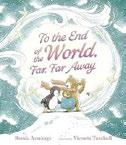
A mother bear reassures her baby that her love is unconditional. Louis spills his milk, to Mom’s dismay. Believing that his mother no longer loves him, he decides to run away “to the end of the world, far, far away.” But Louis wonders: Will Mom be sad? Resoundingly, yes, she tells him. Her many tears will form a deep, deep sea. She’ll be so upset that her “sobs will fill the sky” from way up high in the mountains and “rustle the leaves” of the great forest. Her grief will be so intense that even Louis’ toys will join her. As Mom details the depth of her love, Louis eagerly listens for more. Armitage deftly captures the playful, affectionate back-and-forth rapport between a parent and a young child. Turnbull’s colored pencil illustrations have an old-fashioned coziness, the gentle but whimsical imagery complementing the text and capturing the range of emotions that Mom and Louis experience as their conversation progresses and as the imagery flows from one fantastical situation to the next. Young readers will delight in discovering the recurring details in the artwork as the characters make their way back to their snug, lived-in home.
A charming tale of parental love that’s especially ideal for bedtime. (Picture book. 3-7)
Browne, Anthony | Candlewick (32 pp.)
$17.99 | Nov. 19, 2024 | 9781536235692

Kids are in for some monkey business. This U.K. import about opposites is illustrated in watercolors and gouache and given a simian twist in Browne’s inimitable, endearing style. Beautifully rendered primates present pairs of opposites as questions: “What’s the opposite of old?” “What’s the opposite of heavy?” The adjective pairs are understandable, relatable ones: sad/happy, big/small , alone/together (the last pair is depicted especially winningly, with a gathering of colorful primates, some in costume). Each question is presented on a separate page, paired with a different primate species; its one-word answer appears on the following page, usually demonstrated by a different animal. Illustrations and font type will aid in young children’s understanding of the concept; the old/ young pair features a demonstrably elderly gorilla contrasted with a tiny, thumb-sucking younger one. The appearance of adjectives in print also helps to clarify words’ meanings; heavy is set in bold black type; big is set in large black capitals. The final question’s a conundrum: “What’s the opposite of opposite?” A clearly puzzled chimp is shown scratching its head: That’s a toughie! Adults reading the book should pause to give young listeners time to think before venturing guesses. The answer: “The same!” Unsurprisingly, the illustration depicting that response is identical to the one demonstrating the question. The wonderful cover
features a smiling gorilla cradling an adorable toy monkey. What’s the opposite of a not-so-hot book? This utterly beguiling offering. (Picture book. 3-6)
Brown-Wood, JaNay | Illus. by Tamisha Anthony | Nancy Paulsen Books (32 pp.)
$18.99 | Jan. 7, 2025 | 9780593110751

On Gram’s birthday, six musical siblings scour the city to find the perfect gift. A bouncing, repeating rhyme follows the children like a wandering jazz solo as they search for a present for their grandmother on their way to her apartment. They find various rhythmic knickknacks on their path—a “scritchyscratchy pinecone,” “three jingly-jangly quarters,” “some tippy-tappy pencils,” and more—but nothing seems quite right. “Gram won’t want some pencils. / Some tippy-tappy pencils. Nah, Gram won’t want some pencils!” “Yeah, but I do!” Each child claims one of the rejected items and brings it along, recognizing potential treasure within an otherwise mundane object. A stream of musical notes trails the children as they tap, jangle, and swish all the way to their grandmother’s place. Gram is thrilled when they burst through her door singing Stevie Wonder’s “Happy Birthday.” Using the objects they’ve collected as makeshift instruments, the family celebrates raucously, proving that the best gift of all is love—and a catchy beat! Digital illustrations in vibrant bursts of color provide a stellar backdrop of detailed scenes that readers will pore over, with jazz posters on the walls of the family’s charming
A toe-tapping journey that will have readers begging for an encore.
Victorian house, swirling musical notes, and expressive cartoon faces unique to each child. The family is Black; they vary in skin tone and hairstyle.
A toe-tapping journey to Grandmother’s house that will have readers begging for an encore. (Picture book. 3-6)
Kirkus Star
Buckley, Patricia Morris | Illus. by E.B. Lewis | Heartdrum (40 pp.) | $19.99 Jan. 28, 2025 | 9780063046979
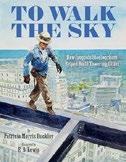
Buckley (Kahnawá:ke Mohawk) and Lewis (Lenni-Lenape) pay tribute to the courage and perseverance of Iroquois steelworkers.
Known as “skywalkers” for their ability to fearlessly balance on the beams of bridges under construction, the first of these laborers were Mohawks from the Caughnawaga reserve in eastern Canada. In the face of staggering economic oppression, skywalkers earned wages that enabled them to feed their families. Their achievements brought honor as well as heartbreak to their communities: first in 1907, when 33 Mohawk skywalkers were killed during the construction of a bridge across the St. Lawrence River in Quebec. Then, in 2001, skywalkers (whose ancestors famously built the Twin Towers in New York City) “volunteered to dismantle what their fathers and uncles built decades before” in the aftermath of 9/11. Today, Indigenous skywalkers—including women—continue this proud tradition of sky-high steel work. Lewis’ impressionist watercolors reverently depict skywalkers’ triumphs and tragedies; his dramatic, cinematic angles and perspectives will have readers gasping in wonder. By turns solemnly reverent and enthusiastic, Buckley’s elegant text will leave young people keenly aware of the historical and
present-day significance of these groundbreaking workers, as well as their strength and resilience. Extensive backmatter speaks to Buckley’s own skywalking family and further explores Mohawk history.
Awe-inspiring. (glossary, a sample of buildings constructed by skywalkers, note from Heartdrum author-curator Cynthia Leitich Smith) (Informational picture book. 6-9)
Calejo, Ryan | Illus. by Julia Iredale Amulet/Abrams (336 pp.) | $18.99 Jan. 21, 2025 | 9781419759901
Series: Rymworld Arcana, 2

A race to keep a device that destroys universes out of his ruthless mother’s clutches leads young time bender Antares de la Vega into narrow scrapes galore. Mysterious clues about the location of an ancient superweapon send the South Florida teen into more of the magical, mythical Rymworld’s exotic realms, from the deadly Wytch Isles to the aptly named Forbidden Tundrå. In Rymworld, certain slugs will grant wishes when licked (ew), and foes ranging from cunning trolls and crocodile warriors to robotic mystics await. Antares brings with him redoubtable allies—notably fierce chipmunk Cheepee and purplehaired girlfriend Magdavellía, Empress of Agartha—and some chancy ones, too, including Mags’ former (she claims) squeeze, the handsome, sneering Valthazaar leKruel, or “Prince Uncharming,” as Antares sourly dubs him. Weathering daunting challenges, they travel via a smart-mouthed aerojet, woolly mammoth, and teleporting crop circle, at last meeting betrayal and ambush at Stonehenge before a climactic face-off over the fate of all the worlds with the psychic supervillain known as the Mystic (or, by Antares, as Mom). Though not labeled a finale, the episode’s main and subsidiary plotlines are
sufficiently resolved by the end to make it one. As previously established, Antares comes from a multiethnic, multicultural background; most of the rest of the cast reads as nonhuman. Final art not seen. A rousing sequel, taking licks at romantic quandaries, family issues, and…other things. (Fantasy. 9-13)
Castrovilla, Selene | Illus. by Jenn Harney | Calkins Creek/Astra Books for Young Readers (32 pp.) | $18.99
Jan. 21, 2025 | 9781662680434

By donning his glasses, George Washington thwarts soldiers from committing treason.
Castrovilla, who’s written four other books about the Revolutionary War, describes Washington’s need for glasses as an embarrassment (“It was a secret”). She uses this fact to launch a storyline about the Newburgh Conspiracy (“It was a secret,” she repeats), a plan hatched by frustrated army officers to storm Congress and demand payment. Having defeated the British, Washington refuses to allow his new government to be toppled. His spectacles, illustrated by Harney in shimmering sepia, appear only when he slams his office door to read in private. During one of those sessions, he reads Congress’ answer to him about when his officers will be paid—soon, they say. Washington shares this response in a windy speech that doesn’t convince them to stand down. Putting on his spectacles to read them
the actual letter from Congress, he prefaces his remarks with an apology (“I have grown gray in your service and now find myself growing blind”); they are moved to tears by his sacrifice. The book uses a variety of fonts, from hand-lettered notes to onomatopoeic sound effects, alongside comical closeups of Washington’s bug eyes and emotive crowd scenes that lend the story a pleasing, old-timey feel. Allowing readers to experience this event through Washington’s lens, literally, makes for an original, thought-provoking framing, and it’s hard not to draw a connection with the January 6 insurrection— though with a vastly different outcome. An enlightening tale, enlivened by droll, retro illustrations. (author’s note, the Newburgh Conspiracy players, glasses in 1783 , about the research, bibliography) (Informational picture book. 7-10)
Cooper, Christian | Illus. by Kristen Adam | Little, Brown (40 pp.) | $18.99 Feb. 18, 2025 | 9780316583572
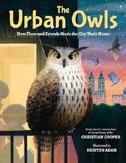
An acclaimed birder and science writer offers informal introductions to some of the Big Apple’s less common feathered visitors and residents.
Cooper begins with Flaco, a Eurasian eagle owl who escaped from the Central Park Zoo and went on to work the “night shift, like most owls do (and like some people do too).” He goes on to profile other owls who became New
A rousing sequel, taking licks at romantic quandaries, family issues, and…other things.
THE SECRET OF MATTER
Yorkers. Some were just temporary residents, like Rocky, a northern saw-whet owl inadvertently transported to the city while concealed within the branches of the Rockefeller Center holiday tree, or a snowy owl who didn’t even stay long enough to acquire a name. Others, such as Geraldine, a great horned owl who successfully hunted despite an injured foot that never healed correctly, stuck around for longer. “A body that’s different doesn’t mean you’re not able to do great things,” he writes. “Just ask Geraldine!” Lavishing attention on details of distinctive patterns and feathers, Adam portrays the birds in magnificent close-ups, in flight with skyscrapers and bright lights in the background, swooping down silently on oblivious mice, and perched on a branch while staring up at viewers with urbane “Can you believe this?” expressions; meanwhile, racially diverse observers point and gesticulate in the background. Though the author steers clear of specific dates and details in the main narrative, he does close with further facts about each species, as well as providing general pointers for spotting and living with these elegant wild guests.
A breezy, appealing whoo’s whoo. (print and web resources, selected sources) (Informational picture book. 6-9)
Feggo, Felipe Galindo | Illus. by Tait Howard | First Second (128 pp.) $13.99 paper | Jan. 21, 2025 9781250768780 | Series: History Comics

A n overview in graphic format of the facility through which so many immigrants to America passed. A frame story involving a modern couple born in Mexico (their daughter says, “I was born here, a Mexicanewyorker!”) expands Feggo’s focus to include glances at the entire contentious history of voluntary or forced immigration to the U.S., past and
present. In tribute to what he dubs “a modern-day Plymouth Rock,” he mostly traces the development of an uninhabited mound in waters near the Lenape island of Manahatta to the sprawling complex that opened in 1892, shuttered in 1954 after processing some 12 million new arrivals, and eventually became a museum. While the author compresses a huge story into relatively few pages, it’s an effectively told, moving history. Big steamships and the Statue of Liberty put in appearances, but most of the scenes in Howard’s neatly squared-off panels are people-centric. He first depicts Indigenous residents and European settlers in historical dress; later, anxious-looking figures or families make the arduous ocean crossing, step down gangplanks, and submit themselves to inspections. Crowds of headshots illustrate the ethnic diversity of all the new arrivals. For a finale, the modern museum’s restored, expansive main hall serves as a reminder of “where we all came from and the future we are all building…and rebuilding…TOGETHER!”
Coherent, provocative, and more cogent than ever. (afterword, photos) (Graphic history. 10-13)
Fenske, Jonathan | Simon Spotlight (32 pp.) | $17.99 | Aug. 27, 2024 9781665932691 | Series: Ready-To-Read

The protagonist of Nothing Fits a Dinosaur (2021) returns—as full of confidence and pizzazz as ever. It’s bedtime, and the young narrator—who’s brown-skinned with curly dark hair—adheres to a reassuring routine that involves a bath, a story, and being tucked in by Momma. But once the child is alone in the dark, sounds and shadows begin to seem ominous. As a mechanical toy casts a terrifying silhouette, the protagonist repeats the titular mantra and boasts, “I can make one twice as tall!” The narrator
then transforms into a large, orange dino resembling a T. rex and bravely confronts other threats—a monster, a “closet beast with fuzzy paws,” a spider, stormy weather—and even menaces the family cat. Alert readers will enjoy spotting the sassy feline sticking out a tongue when comeuppance arrives for its pursuer. But—spoiler alert—our hero backs down when, offstage, “Mommasaurus” finally roars, “GET IN BED! TURN OFF THE LIGHT!” and the narrator sensibly complies. Rhyming text (with a few dissimilar word pairs such as yawn/on) in an irresistible four-beat rhythm makes the pages fly by. The artwork is suffused in bright, saturated colors, and frequent shifts from close-up to mid-distance perspective help keep readers’ attention. A humorous and relatable tale that will motivate readers to battle on to the end. (Early reader. 4-6)
Fusco, Kimberly Newton | Knopf (368 pp.) $17.99 | Jan. 21, 2025 | 9780593121771

Eleven-year-old Hurricane has endured too many losses in her young life. Quiet and frequently unable to speak, she’s desperately unhappy at school.
Her father died in the Great War. Her mother died of tuberculosis. Her 19-year-old sister, Bronte, is her loving guardian, speaking for her when needed. Hurricane loves running with her dog near her cliffside home on the Maine coast and writing her thoughts in her journal. But Bronte has just been diagnosed with tuberculosis and must go to a sanitorium. Great-aunt Claire swoops in and carries Hurricane off to the city, minus her dog. Aunt Claire is rigid, making pronouncements and judgments about those she considers lesser. But there’s also chauffeur Mr. Keats, who can do almost anything,
including splendid cooking and baking. He is able to soften Aunt Claire’s nature and encourages the despondent Hurricane in every way. Her brilliant and kind new friend, Theo, and a needy feral cat bring about changes in all of them; Aunt Claire rethinks her attitudes and remembers joy, while Hurricane discovers her aunt’s generosity and innate kindness. Hurricane employs stunningly beautiful, highly descriptive language to narrate her own tale with a depth of feeling and growing awareness of her attributes and true strength of character while including delightful references to Depression-era Hoovers and Frigidaires, as well as the mysterious honeycake. Everything comes together in a lovely, hopeful new beginning, honeycake included. Main characters read white. Powerful, emotional, and wondrous. (author’s note) (Historical fiction. 9-12)
Kamala Harris
Gifford, Clive | Illus. by Nathan Daniels Harper/HarperCollins (96 pp.) | $6.99 paper Oct. 29, 2024 | 9780063440944

A quick flurry of family stories, anecdotes, and career milestones from the life of 2024 presidential candidate Kamala Harris. Fluffing up the content with four entries about George Washington, seven about the White House, and further “amazing facts” ranging from the tangential to the banal (“Kamala often needed Band-Aids on her knees when she fell over!” “The Capitol Building’s dome is HUGE”), Gifford dishes up a quick-turnaround buffet of facts about his subject’s background, personal interests, and career, selected to offer humanizing glimpses of Harris’ public and private persona. Along with references to her two college degrees, her favorite brand of sneakers, and what she had for lunch during an official 2021 visit to Singapore, readers will learn that her parents divorced when she was 7,
The basics of narrative structure, imparted through a humorous fantasy plot.
BITSY & BOOZLE TELL A STORY!
that she struggled to learn French in school in Montreal, and that she had to take the bar exam twice to pass. Coverage of her 2024 presidential campaign ends with her August selection of running mate Tim Walz (who gets three facts). The author closes with a spritz of motivational Kamalisms, from “eat no for breakfast” to “double up your efforts and go for your dream!” An early view of her in a stroller shouting “Fweedom!” captures the saccharine character of the monochrome illustrations, but there is plenty of racial and cultural diversity in the crowd scenes. Topical, if ephemeral. (Nonfiction. 7-9)
Goetter, Sara & Natalie Riess HarperAlley (160 pp.) | $19.99 Sept. 17, 2024 | 9780063326620

T he basics of narrative structure, imparted through a humorous fantasy plot.
Bitsy, a pinkhued cyclops in medieval-style garb, is a storyteller by family profession. The youngest member of the Point-of-View sisters, she tells stories about others in the third person. The other person at the center of this particular tale is Boozle, a lightskinned, diminutive wizard tasked with ascending Story Mountain. Along the way, he encounters Mayor Dilemma, who begs him to save her town from the dastardly Gruffin of Clawmax Peak. She instructs Boozle to employ her grandchildren, Tension and Suspense, to locate the creature; he also makes use of montages, time-skips, and other tricks of the trade. Once Boozle’s quest is
through, he must meet up with Mayor Denouement in the town of Falling Action. You get the picture—the text is relentlessly, unapologetically educative. But there’s a soupçon of mystery as to the Gruffin’s motives, and Mayor Dilemma’s intentions seem slightly suspicious. Readers will be eager to unravel the plot’s true nature. Bitsy explicates Boozle’s odyssey with zest, and Boozle’s speech bubbles, filled with snarky nonverbal pictograms, perfectly telegraph his irritation at being Bitsy’s puppet player. The tabletop role-playing game vibe, coupled with the narrative concepts being put into practice, together make this a great fit for young writers, gamers, and creators. The bright, bouncy, expressive cartoons give the story even broader appeal. Characters vary in skin tone.
Delightful, deliberate, and engaging. (glossary, pictogram guide) (Graphic fantasy. 7-12)
Golden, Molly | Illus. by Paola Escobar Clarion/HarperCollins (48 pp.) | $19.99
Jan. 21, 2025 | 9780358681540

On the heels of The Velveteen Rabbit ’s centenary comes a beautiful picture book about its author, Margery Williams. Golden’s sensitive text traces Williams’ life from her childhood in London, where her father encouraged her creativity, to her years in New York after his death and into her adulthood, when she wrote The Velveteen Rabbit in the aftermath of World War I.
These milestones are underscored by thematic throughlines about the value of imagination and the power of love.
Escobar’s accompanying illustrations are reminiscent of those of Barbara Cooney or the Provensens, though embellished with collages by her own daughter to evoke Williams’ girlhood creativity and that of her children. Brief excerpts from her famous work appear in italicized text on several pages, reinforcing key emotions and events to suggest ways that Williams’ experiences may have influenced that now-classic story. The scene about Williams’ father’s death, for instance, is accompanied by a brief conversation between two characters from the book: “‘Does it hurt?’ asked the Rabbit. ‘Sometimes,’ said the Skin Horse, for he was always truthful.” As accomplished as words and pictures are, it’s a shame to see no reference to The Velveteen Rabbit ’s art—neither the first images in a magazine by Williams’ own young daughter, Pamela Bianco, nor William Nicholson’s in the 1922 book. Despite this omission, however, there’s much to love here.
Poignant and warm, just like the book that inspired it. (Picture-book biography. 5-8)
Gorman, Amanda | Illus. by Loveis Wise | Viking (32 pp.) | $19.99 | Jan. 7, 2025 | 9780593624180

Former National Youth Poet Laureate Gorman invites girls to raise their voices and make a difference.
“Today, we finally have a say,” proclaims the first-person plural narration as three girls (one presents Black, another is brownskinned, and the third is light-skinned) pass one another marshmallows on a stick around a campfire. In Wise’s textured, almost three-dimensional illustrations, the trio traverse fantastical, often abstract landscapes, playing, demonstrating, eating, and even flying, while confident rhymes sing their praises and celebrate collective female victories.
The phrase “LIBERATION. FREEDOM. RESPECT” appears on a protest sign that bookends their journey. Simple and accessible, the rhythmic visual storytelling presents an optimistic vision of young people working toward a better world. Sometimes family members or other diverse comrades surround the girls, emphasizing that power comes from community. Gorman is careful to specify that “some of us go by she / And some of us go by they.” She affirms, too, that each person is “a different shape and size,” though the art doesn’t show much variation in body type. Characters also vary in ability. Real-life figures emerge as the girls dream of past luminaries such as author Octavia Butler and activist Marsha P. Johnson, along with present-day role models including poet and journalist Plestia Alaqad and athlete Sha’carri Richardson; silhouettes stand in for heroines as yet unknown. Imagining that “we are where change is going” is hopeful indeed. Enthusiastic and direct, this paean has a lovely ring to it. (Picture book. 4-8)
Graham, Joan Bransfield | Illus. by Tania Garcia | Clarion/HarperCollins (40 pp.) $19.99 | Feb. 18, 2025 | 9780358396048

Concrete poetry on geological themes, shaped to fit inside digital collage images of their subjects.
“The Earth is / an artist, at work every / day, with powerful tools that / come into play,” writes Graham in a round-bodied excerpt that caps a world-spanning tour of landform types from “Continents” to “Stalactites,” “Stalagmites,” and sandstone “Arches.” Though limited to a little over 20 examples, the author does find room for “Glacier” and “Hoodoos,” while “Cave” is more concerned with starry bioluminescent glowworms than the rocky chambers they light up. Still, her simply written observations often
mix sonorous language (“Shape-shifter, / dune-drifter, sand-sifter, / hot desert winds build billowy dunes”) with descriptions of process; while appreciating the poems as lyrics, readers will also effortlessly absorb information about continental drift, erosion, how the three kinds of rock are formed, and other geological basics. Except for a crosssectional slice of our planet showing layers from surface to core, most of the forms Garcia portrays in her strongly modeled land- and seascapes are at least loosely based on specific locales that are identified in the author’s photo-strewn closing notes on each feature. Highly selective, but as a first introduction to landforms, this rocks. (glossary, additional resources) (Informational picture-book poetry. 6-8)
Greene, Kerisa | Feiwel & Friends (40 pp.) $18.99 | Jan. 7, 2025 | 9781250325891
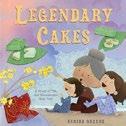
Siblings learn about the story behind a beloved Vietnamese Lunar New Year dish. With Tết approaching, two youngsters visit their Bà (Grandmother) for an extra-special sleepover. Tonight, they’ll learn how to make delicious bánh chưng, “chewy, salty, and sweet” celebration cakes. Together they carefully layer mung beans, pork, and rice on top of banana leaves and wrap them up “tight like a great big hug.” To entertain the children as they wait for the cakes to steam all night, Bà tells them the exciting legend of how bánh chưng became a new year tradition: Years ago, an emperor tasked his sons with creating a Tết dish that would best honored their ancestors; Prince Lang Liêu succeeded with his humble but delectable concoction. The children fall asleep, dreaming of the festivities to come. Using gentle, soft hues, Greene beautifully captures a moment of intergenerational connection through food and storytelling—key components
of Tết. The illustrations incorporate familiar Vietnamese textures from banana leaves to rice paper wrappers, a subtle cultural nod that adds visual interest. Greene also uses expressive typography throughout, emphasizing the meaning of the words to keep readers engaged. The book provides some much-needed Vietnamese representation to a growing collection of Lunar New Year titles on the market. The family is multiracial: While one of the children’s parents is of Vietnamese heritage, the other presents white. A warm and inviting introduction to a culturally significant holiday staple and all that it represents. (glossary, bánh chư ng recipe, about Tế t, author’s note) (Picture book. 4-8)
Kirkus Star
Harris, Quartez | Illus. by Gordon C. James | Little, Brown (40 pp.) | $18.99 Jan. 7, 2025 | 9780316483933

A brilliant Black boy in Harlem falls in love with words and becomes one of America’s most important literary voices.
Young James Baldwin had to clear many obstacles to become the famous writer whose words would help a nation look itself in the mirror. While his mother cleaned other people’s homes, James took care of his siblings and read voraciously. His stepfather, a preacher consumed with anger at the world, discouraged James’ love of books other than the Bible, but his mother nurtured his passion. As a teenager, James preached at his stepfather’s church and later worked several service jobs before escaping the confines of Harlem. In France, James made a new home in the mountains and shook loose the stories he held inside. This dynamic portrait of one of America’s most celebrated literary heroes ends with the publication of his book Go Tell It on the Mountain;
backmatter touches on his novel Giovanni’s Room and his identity as a queer man. With his lyrical prose, Harris shows off a writer’s delight in words, trusting his young readers to make sense of even seemingly complex turns of phrase. Caldecott Honor–winning illustrator James’ painterly art is a brilliant ode to Baldwin, to Harlem, and to books, featuring expressive strokes, composition, and perspective to create unique sensations in each immersive scene.
A superb introduction to a master of the craft and a work of art in and of itself. (more about James Baldwin, author’s and illustrator’s notes, select sources) (Picture-book biography. 5-9)
Hess, Mary Rand | Illus. by Dow Phumiruk
Rocky Pond Books/Penguin (32 pp.)
$18.99 | Feb. 11, 2025 | 9780593619100

Ponder the importance of stillness. A diverse group of people pursue activities in a large, well-maintained park filled with flowers, trees, a lake, and a playground, all with lovely monarch butterflies flying throughout. Children examine the butterflies, whisper, make music, or draw in chalk on the sidewalk as Hess offers thoughtful musings on silence: “Quiet is stunning…The hush right when a song ends. The breath you take before the race begins. It is who you are, the way you are—with and without words spoken.” As the day moves on to twilight and then night, fireflies appear and children hold hands, then wave to each other as they depart with the final pronouncement: “Quiet is powerful LIKE YOU.” Though the sentiments are heartfelt, some of the figures in the lovely, soft illustrations are unnecessarily indistinct, and their actions can be difficult to make out at times. In one scene, readers are told that quiet is “as mighty as a wave before it hits the shore…confident in the space between the silence and the roar,” but the
accompanying image depicts a peaceful lake, with no waves in sight. Youngsters will need a loving grown-up to help them draw connections.
Visually appealing but may leave readers a bit lost. (Picture book. 4-8)
Holliday, Kit | Illus. by Dizzy Devil Designs | Harper/HarperCollins (96 pp.) | $7.99 paper | Feb. 4, 2025
9780063323384 | Series: Sparkle Pigs, 1

Two guinea pigs embark on an adventure. Muffin loves her new hutch and her owners, twins Sophia and Jackson (who make only a brief appearance and aren’t physically described), but her stable world is rocked when she gets a roommate. Excitable, harebrained (“What came after four again?”) Ziggy chews the cage’s decorative carrot and, eager to play a game of pretend, jumps into the food dish—behavior that the straitlaced Muffin deems “unacceptable.” Soon they discover that the carrot opens onto the magical land of Piggie-Town. All the guinea pigs (referred to as Sparkle Pigs) here— Muffin and Ziggy included—are clad in different carrot costumes; Ziggy’s a disco carrot, while Muffin’s a detective carrot. Ziggy’s in hog heaven; the residents are as zany and fun-loving as she is. Muffin’s ready to go home, but when she discovers that one of the pigs is missing, she decides to solve the mystery. Eventually, she realizes that though she and Ziggy might have little in common, they can do anything with teamwork. The plot moves smartly along to an upbeat conclusion with a familiar but sweet message. The many tonal black-and-white illustrations play up the differences between the main characters. Lively, humorous writing, short chapters broken up by the art, and words of encouragement at each chapter’s end (“You’ve read TWELVE
chapters! You are a super sparkly star!”) will spur readers on. Funny and relatable, with two adorable protagonists whose joint quest shows the value of embracing differences. (Chapter book. 6-10)
Holliday, Kit | Illus. by Dizzy Devil Designs
Harper/HarperCollins (96 pp.) | $7.99 paper | Feb. 4, 2025 | 9780063323407
Series: Sparkle Pigs, 2

Guinea pig pals return for more wacky escapades. In the first series installment, orderly Muffin and hyperactive Ziggy discovered that their hutch held a secret portal to Piggie-Town, a dazzling world where the Sparkle Pigs enjoy living it up. This tale opens with the pair receiving an invitation to the Grand Sparkle Parade. Though Muffin’s usually averse to chaos, mess, and noise, she’s tempted: PiggieTown is a fabulous, glittery extravaganza, after all. But she didn’t realize that she and Ziggy would be leading the parade! The pigs take dress-up to the next level (“It was like a flock of parrots had rolled around in a bag of glitter”). Distractible Ziggy plays the trumpet in a band, while Muffin tries hopelessly to organize the marchers in straight lines; a trip through a field of dandelions has everyone sneezing. When they find Big Pig blocking the route, Muffin becomes frustrated, and even Ziggy has a moment of self-doubt. But everything comes to a suitably cheery conclusion, with both Ziggy and Muffin learning
that sometimes unexpected detours make for the most delightful journeys. The writing is snappy, with the occasional challenging vocabulary word. Abundant black-and-white illustrations convey Ziggy’s frantic level of rodent activity, though when she’s revved up, eyes popping and fur flying, she barely resembles a guinea pig. Another effervescent reminder that a pair of opposites can make a perfect working team. (Chapter book. 6-10)
Holliday, Kit | Illus. by Dizzy Devil Designs Harper/HarperCollins (96 pp.) | $7.99 paper | Feb. 4, 2025 | 9780063323421
Series: Sparkle Pigs, 3

Muffin the guinea pig and her frenetic, unfocused hutch-mate, Ziggy, return to the magical world of Piggie-Town to take part in a talent show.
The Sparkle Pigs send the pair tickets to the event through the carrot portal in their cage. Ziggy’s thrilled and wonders how she’ll choose which talent to showcase, but Muffin, believing she possesses no skills, is reluctant. Ziggy believes in her friend, though, and the two travel to PiggieTown. As usual, both arrive automatically costumed: Muffin in a glamorous evening gown, Ziggy in top hat and tails—sparkling, of course. They head to the theater, made from a giant gourd and decorated with kale. Then Wiz Pig’s magic trick goes awry, transforming the audience into bunnies; turns out his magic wand is missing its
A superb introduction to a master of the craft and a work of art in and of itself.
sparkle. Teaming up to find it, Muffin, Ziggy, and Wiz Pig visit a magic castle constructed from vegetables. After answering a riddle, they’re let inside, where they find rooms of hats, capes, and popcorn. The opportunity to sing karaoke tempts Ziggy, the piggies finally put things right, and eventually, Muffin rises to the challenge of performing. Of course, “Everyone gets a ribbon!” The well-paced narrative is driven by inventive incidents, and the plot barrels happily to its conclusion. Some words and phrases may be unfamiliar. Frequent tonal vignettes and encouragement after every chapter (“You’ve read TWELVE chapters! You get a ribbon, too!”) make for a fun experience.
These piggies bring the sparkle once more. (Chapter book. 6-10)
Honoré, Leslé | Illus. by Cozbi A. Cabrera | Little, Brown (40 pp.) $18.99 | Nov. 19, 2024 | 9780316314039

Honoré’s verse highlighting the strength and heart of Black and brown girls comes alive in this picture-book collaboration with Cabrera.
The poem, which was written in 2016 for the author’s own daughters but went viral after Kamala Harris was elected vice president, leads readers in a dance of spoken word and brilliant art. “Brown girl, brown girl / what did you see? // A world that sees my skin / before it sees me,” peals a frank and somber first note that gives way to the chorus of resistance behind it. The artwork follows suit, moving fluidly from a muted image of an isolated, ungrounded figure curled small to a group of girls confidently standing together. The call-and-response style continues, gaining not so much momentum as lift. “Brown girl, Brown girl / what did you do?…what do you feel?…who will you be?” The text soars higher and higher, moving from past to
present to future tense. The illustrations intertwine softness and boldness with page after page of brown girls belonging, a visual togetherness that both honors and bridges individual and generational differences. With the gentle crescendo found in familiar reads such as Brown Bear, Brown Bear, What Do You See? the book invites readers in with its rhythm and luminous full-page spreads, reminding them that call and response is more than just communal storytelling—it is the community. Warmly, brilliantly welcoming—and not to be missed. (author’s note) (Picture book. 3-8)
Horner, Doogie | Putnam (192 pp.)
$23.99 | Jan. 28, 2025 | 9780593532690

When a strange foe comes to town, two youngsters put their newly discovered superpowers to the test.
Erstwhile rivals Stanley and Gene, having become friends in the first installment of this graphic novel series, have finally figured out how to control their powers of invisibility—sort of. And how better to use those skills than by fighting crime in their community? Unfortunately, even with Stanley’s robot scanning the streets for bad guys, there’s not much action brewing; accidentally purloined pens and fashion crimes are the best they can do. Suspiciously soon, a towering, shadowy nemesis appears, assisted by a goofy pair of carnival workers turned henchmen. Next, Stanley’s dad’s hardware store, the family’s livelihood, is ransacked. Stanley opens a pancake smoothie stand to raise funds for the shop; later, he and Gene engage in high-energy battles against the henchmen. The cartoon action is frenzied and fun, right till the last absurd, clever turn; the choice to set the fights at a minigolf venue is particularly inspired, with the combatants looking like giants
Stitches sparsely known details into a tender tapestry of a creative life.
DREAM A DRESS, DREAM A POEM
towering over a trembling town. A clever video game–inspired sequence sees the boys going up against the henchmen in the abandoned carnival grounds. Stanley and Gene are light-skinned; there’s some diversity in their community. Hilarious, hectic, and gleefully unpredictable. (Graphic fantasy. 7-10)
Iwai, Melissa | Christy Ottaviano Books (352 pp.) $23.99 | $19.99 paper | Jan. 21, 2025 9780316297707 | 9780316297912 paper
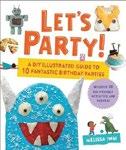
An illustrated guide to planning delicious, craft-filled parties. Featuring 10 popular party themes, from dinosaurs to superheroes, fairies to pirates, each section of the book includes a cake, a main, side dishes, party crafts and favors, and decor for a festive atmosphere. Party planners are encouraged to mix and match, adding and adapting material from different sections to best fit their needs, and to design their own unique experiences. Modifications help meet the varied ages and skill levels of the party guests. Many recipes are made more accessible by using readily available, pre-made ingredients. Some recipes can be prepped and then finished by party guests. Most activities and recipes are simple, with just a few items and instructions, although a handful have longer lists of materials and more intricate steps. The whimsical illustrations and color photographs appear visually enticing and refreshingly realistic rather than Pinterest-perfect. Illustrated
characters match each section’s theme, and the humans appear racially diverse. Iwai provides further guidance in the form of tips, techniques, common tools and equipment, and workarounds to save time or help avoid the need to buy specialized items. Templates and additional content are available for download on the author’s website. A friendly guide to inspire kids and help adults craft memorable parties. (additional activities, index) (Nonfiction. 5-adult)
James, Nancy Johnson | Illus. by Diana Ejaita | Abrams (32 pp.) | $18.99 Jan. 14, 2025 | 9781951836535

Myra Viola Wilds turned to poetry after years of fine dressmaking ruined her eyesight. Two of Wilds’ poems, “Thoughts” and “Dewdrops,” bookend the text. In spare verse laced with unforced rhymes, James stitches sparsely known details into a tender tapestry of a creative life. Like other Black Americans taking part in the Great Migration, Wilds left rural Kentucky for a city where she could learn to read and ply a trade. Though Wilds made dresses for those much wealthier than her, James describes her dressmaking as a creatively gratifying art form: “Sitting sewing gorgeous gowns / and fashionable frocks to wear to town. // …Formal for important places, / big ideas, and serious faces.” Extending James’ captivating verse,
Ejaita depicts Wilds as heroic, a silhouetted figure towering over the landscape as she migrates from countryside to city. In one double-page spread, a gritty, charcoal-like texture blurs a dress’s colorful details, representing Wilds’ failing vision. In others, herringbone tweeds, bright colors, and hatched and contoured lines lovingly present Wilds’ dresses. As she shifts from dressmaking to poetry, her needle becomes a pen, and thread flows into letterforms. A brown child is portrayed and addressed at beginning and end— another set of bookends. James’ cogent historical note sets Wilds’ story within the fraught period between Reconstruction and the rise of Jim Crow laws. Beautifully crafted and compellingly celebratory. (photograph) (Picture-book biography. 4-8)
Jonker, Travis | Illus. by Ruth Chan Abrams (40 pp.) | $18.99 Feb. 4, 2025 | 9781419765032

A class of anthropomorphic animals is thrown into disarray. As this snazzily clad classroom menagerie is lining up, the book’s narrator—an energetic hippo—is at the front, leading the way as always. The other students become irritated at the hippo’s over-the-top hijinks (“I can make everyone go fast. I can make everyone go slow. I can suddenly stop and make everyone crash”), amusingly showcased across various double-page spreads, as well as at our hero’s smug sense of power. When the hippo’s attempts to get to the front go too far one day, the teacher banishes the protagonist to the titular back of the line. The hippo takes to the new place in line very quickly. While “caboosin’ it up,” the protagonist barely avoids a serious accident and is relegated to the middle of the line. Now a part of the group, the hippo eventually acclimates to the new spot and connects with the others, while still embracing a sense of
mischief and whimsy. Jonker and Chan have created a chaotic yet hilarious story grounded in real childhood emotions. Jonker’s first-person text is full of repetition and short sentences, making this an ideal choice for a read-aloud. Chan’s action-filled signature ink and digital color illustrations further ramp up the zaniness. Many young readers (and their exasperated parents and teachers) will recognize the protagonist and relate to the emotional journey outlined here. Don’t bring up the rear! Be the first in line to read this laugh-out-loud story.
(Picture book. 5-8)
Jumbe, Katherine | Illus. by Shana Dixon | Levine Querido (40 pp.) $18.99 | Jan. 14, 2025 | 9781646144631

Jumbe draws from her childhood in Malawi for this fable about the importance of night and day. Throughout the savanna, people and animals rejoice in the day: Turtle sits on a log warmed by the sunlight, monkeys pick ripe mangoes from trees to throw at Grandpa Rhino, and elephants play in the cool waters of the river. Young Alekachawo and her baby sister also enjoy the sun from their small mud hut, but as night falls, the animals complain of the cold and the lack of sunlight, which frustrates the Dark. Bright and colorful artwork anthropomorphizes the Dark as a woman dressed in a long, flowing, shimmering cloak of nighttime. Disappointed at being taken for granted, she calls it a day, literally taking away all darkness and leaving only the light. At first the animals cheer; the simple, cartoonish illustrations convey their glee. But eventually, they grow tired of constant day. Savvy readers will recognize how easily an ecosystem can be disturbed by a lack of nighttime; so do Chawo and her little sister, who take it upon themselves to journey to convince the Dark to return. While the rather sparse Photoshop art sometimes leaves much to the imagination, the
story itself unravels with the thoughtful wisdom and familiarity of an African proverb. Human characters are Black. An easy bedtime tale with a special affection for nighttime. (glossary of words in Chichewa) (Picture book. 4-8)
Karr, Kathleen | Illus. by Léonie Bischoff | Trans. by Michelle Bailat-Jones Helvetiq (144 pp.) | $29.95 Oct. 8, 2024 | 9783039640638

In 1860 Missouri, an enterprising teenager gathers a motley crew and 1,000 large birds for a very long walk. First published in France, this graphic version of Karr’s 1998 novel retains both the plot and the big, openhearted spirit of the original. The cleanly drawn art adds evocative glimpses of wide prairies and close-up views of vividly expressive faces. After learning that turkeys on sale for 25 cents in Missouri go for five dollars 800 miles away in Denver, Simon Green borrows the money for a substantial flock from his wise and encouraging schoolteacher and boldly sets out. Memorable as the premise is, the cast is even more so, led by a lad who never did well in school but nonetheless proves resourceful enough to cope with rustlers (including his own ne’er-do-well father!) on top of daunting natural hazards. Simon’s joined by two strong, resilient young women—Lizzie Hardwick, who’s just buried her entire family, and Jo Ballou, who’s escaping slavery—both of whom make active contributions to the enterprise’s eventual success. Most characters present white, though Jo is Black; they encounter a group of Pottawattomie who offer them guidance, along with a squad of bored, trigger-happy soldiers.
A terrific adaptation of a terrific Old West yarn. (Graphic historical fiction. 10-13)
Kierzenblat, Haviva | Illus. by Rebeca Luciani | Kar-Ben (32 pp.) | $18.99
Jan. 7, 2025 | 9798765619896

A young girl’s compassion proves more precious than gold or rubies. Drawing from her mother’s childhood in Burma (now Myanmar), where a vibrant Jewish community flourished for years, Kierzenblat tells a story centered on the Jewish value of treating animals with kindness. Rachel is on her way to a Purim celebration when her cousin points out a man offering elephant rides. She’s disturbed to find that underneath its elaborate costume, the animal is old and tired. Later, at the Purim festival, Rachel wins a valuable golden crown. She decides to trade her prize for the elephant, allowing it to retire. The elephant handler is so moved by her selflessness that he lets her keep the crown and the elephant. Rachel donates both to a sanctuary, demonstrating that animals are the real treasure. Though wearing costume crowns is a common way to honor Purim hero Queen Esther, readers may find it implausible that a child is inexplicably gifted a towering, bejeweled creation worth more than an elephant. Still, with richly colored illustrations and alliterative text, the story portrays a variety of Burmese Jewish foods, clothing, and traditions. Characters are depicted with medium to dark brown skin tones. An author’s note addresses both Kierzenblat’s connection to the historic Jewish community in Myanmar and the status of its elephants, accompanied by photographs.
A welcome glimpse of a culture too rarely depicted in American children’s literature. (glossary) (Picture book. 3-8)
Kim Hyo-eun | Trans. by Deborah Smith | Scribble (52 pp.) | $19.95 Oct. 8, 2024 | 9781957363851

The art and science of sharing is put to the ultimate test.
As the second sister in this Korean family explains to readers, when you have four siblings, sharing takes on serious importance. Some things are easy to divvy up, like apples or liquids, but the world doesn’t always separate neatly. How do you portion out cotton candy… or your only uncle? Kim Hyo-eun uses mathematical concepts to explore the children’s commitment to fairness. To make sure everyone has equal access to a fan on a hot night, they each position themselves at 30-degree angles to it, and when their beloved uncle gives them a scooter, the siblings create a pie chart to figure out how much time everyone gets with it, but what happens when our protagonist falls off and injures her arm? How does that fit into the equations? The kids may squabble over their fair share, but when the narrator’s parents allow her to pick out a birthday cake on the way home from the hospital, she selects one that that’s easily divided among the five. With art that renders the kids as little more than heads, hair, and dots for facial features, Kim Hyo-eun pulls great emotion and pathos
Affection and scheming go hand in hand in this sweetly hilarious tale.
from seemingly simple designs. Originally published in South Korea, the book offers a tantalizing glimpse into everyday life that might contain some elements unfamiliar to American readers, while the universality of the family remains the true focus. Sharing isn’t always caring, but affection and scheming go hand in hand in this sweetly hilarious tale. (Picture book. 4-6)
Kirkfield, Vivian | Illus. by Rebecca Gibbon | Calkins Creek/Astra Books for Young Readers (40 pp.) | $18.99 Feb. 11, 2025 | 9781662680458

In 1830s Massachusetts, girls’ and women’s voices were considered inconsequential. Lucy Stone excelled in school, but when her father decided that she’d had enough education for a girl, she paid her own way through Ohio’s Oberlin Collegiate Institute, known for its integrated and co-ed student body. But even at progressive Oberlin, young women weren’t treated fairly. When Lucy found out that she was earning half the work study wages that the male students made, she wrote a letter to the administration and refused to work. The school changed its policy, inspiring a determined Lucy to keep speaking up. After graduation, Lucy was hired by the New England Anti-Slavery Society; she toured and spoke at rallies, sometimes facing angry protestors. Lucy’s unwavering voice contributed to many important changes, including the ratification of the Thirteenth Amendment and a law granting property rights to married women. Gibbon’s acrylic and colored pencil illustrations are kinetic and angular, depicting a spirited Lucy and her peers in energetic pops of color. Lucy’s direct quotations are peppered throughout the illustrations, potentially engaging older readers, though some
advanced language may deter the younger, intended audience. All quotes are written in scrawled, difficult-todecipher cursive hand-lettering. Overall, though, readers should come away inspired by her bold action—and stirred to make change themselves. A passionate ode to a suffragist and abolitionist who should surely be a household name. (author’s note, photos, timeline, fun facts, bibliography, picture credits) (Picture-book biography. 6-8)
Kopy, Jordan | Illus. by Chris Jevons & Lisa Hunt | Simon & Schuster (272 pp.)
$18.99 | Jan. 21, 2025 | 9781665906890
Series: Theodora Hendrix, 3

What can one child do when a wicked witch attempts to overcome all the law-abiding monsters in the world?
An exciting trip to New York City turns terrifying when megalomaniac Hilda the witch attacks with an overwhelming army of elusive Shadowmongers, who can suck the magic from monsters and, as 10-year-old Theodora discovers, give ordinary humans nightmares for life. As the good monsters, who raised her in cozy Appleton village, gather under the leadership of her fierce (and wellwrapped) Mummy for a desperate last stand, an enigmatic ally slithers in to help Theodora. Though this work is eminently readable as a brisk, uncomplicated, good-vs.-evil dust-up with a notably diverse cast of creepy and not-so-creepy creatures and a happy (if rather fortuitous) ending, Kopy slips in a few wrinkles. Pale, redheaded Theodora’s long-absent birth mother reappears, so she must adjust to having both a Mum and a Mummy in the picture. And though most nonmagical people can’t see through the monsters’ concealing glamours, some do, an ability that leads to a deeply uncomfortable social
situation as well as a newfound appreciation for true friends. Otherwise, all comes round right at the close, and though the story has moments of real terror, closing celebrations and Hunt’s interior illustrations help to defuse them. A third series entry filled with magical exploits aplenty and leavened with cogent real-life issues. (Light horror. 8-12)
Korman, Gordon | Harper/ HarperCollins (288 pp.) | $19.99
Jan. 14, 2025 | 9780063238145
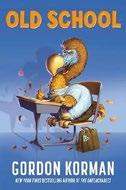
A 12-year-old raised by senior citizens finds middle school a strange new world. Korman’s cleverly chosen title plays on several themes explored in this outing. Left by his parents in the care of his grandmother and other residents of a retirement community, Dexter has acquired anachronistic manners, speech, and dress—and a broad education that sets him apart when social services force him into seventh grade. He must adjust—and so must his teachers and classmates at the run-down small-town school. They initially regard him as a weird outsider but eventually accept and even value his quirks and abilities. When Dexter uses a Swiss Army knife to repair a money-eating snack machine and falls afoul of the school’s zero-tolerance policy, his suspension touches off a wave of student protests that spill over into a school board meeting to debate the ongoing neglect of necessary school maintenance. Meanwhile, Dexter wrestles with conflicting feelings about whether he wants to be reinstated. The author stocks his cast of seniors with smart, capable elders and presents a picture of retirement-village life as practically paradisical. Conversely, though he does take a few swipes at the curriculum, he provides Dexter (and readers) with enough good reasons to go to school to make his protagonist’s
eventual decision genuinely tough. Although names cue some ethnic diversity in the student body, the cast largely reads white, and race as a factor in draconian school disciplinary action goes unexplored.
Wry, provocative, and shot through with cogent issues. (Fiction. 9-13)
Krensky, Stephen | Illus. by Adriana Predoi | Apples & Honey Press (32 pp.) $19.95 | Feb. 4, 2025 | 9781681156576

A remarkable woman, a remarkable achievement. You might call Annie Kopchovsky (nee Annie Cohen, 1870-1947) freewheeling. This young Jewish immigrant became the first woman to circumnavigate the globe by bike—in only 15 months. When Annie arrived in the United States from Latvia, life seemed auspicious, but women’s lives were restricted. She wanted excitement, and the bicycle—innovative in the late 19th century—seemed ideal. Setting out from Boston in June 1894, she traveled no more than 10 miles daily; since her skirt got entangled in the wheels, she eventually eschewed “ladylike” skirts in favor of pants. When Annie couldn’t find accommodations, she slept rough—in barns, under bridges, out in the open. In November 1894, Annie sailed from New York to France and discovered her knack for spinning thrilling tales about her exploits that captivated paying audiences. (They were mostly fabrications.) Visiting Jerusalem was especially emotional; she then proceeded deeper into Asia, still inventing escapades. She sailed from Japan to the United States, arriving in March 1895, but she still had to return to Boston, her starting point, by September. She did, to the huzzahs of her proud family, nation, and laudatory newspaper articles. Krensky has crafted an exciting read that deservedly



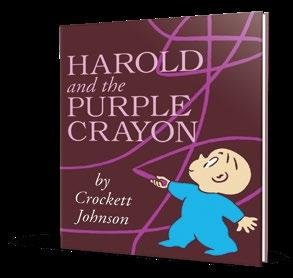



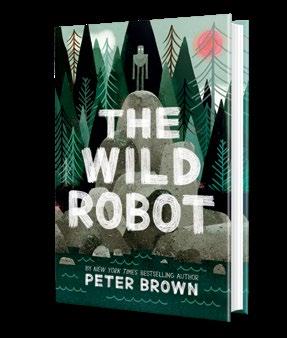

highlights a little-known explorer; Annie’s wild tales enliven the narrative. The charming color illustrations expertly bring period and background details to life and capture Annie’s fierce determination.
An adventurer receives her due and should inspire readers to reach for their dreams. (author’s note) (Informational picture book. 5-8)
Krishan, Punam | Illus. by Sol Linero Nosy Crow (32 pp.) | $17.99 | Feb. 11, 2025 9798887771144 | Series: How To Be A…

Whether readers are aspiring physicians or just curious about the mysteries of medicine, they’ll find answers here. Each spread addresses a key question. What do doctors do? Why do we need them? What character traits are essential for health care, and how can kids try to develop those skills? How are doctors trained? What happens if you get sick? For this last, physician/author Krishan explains that readers might need to visit a medical practice; here, she explores the roles of office managers, phlebotomists, and other ancillary workers. She also discusses medical emergencies and specialties, from obstetrician/gynecologists to geriatricians and mental health providers. Medical scientists and some unusual physician specialties (such as media, military, and sports doctors and public-health specialists) round out this very wide-ranging coverage. A timeline, starting in 2600 BC China and ending in 2019 with the outbreak of Covid-19, offers historical context. Attractive, color-blocked illustrations give the work a streamlined feel, breaking up the text. The illustrations portray health care professionals who are diverse in skin tone, ability, and hair color and texture; some are depicted wearing hijab. Women such as physician Elizabeth Blackwell, nurse
A joyful ode to soy sauce that’s delicious to the last drop.
SOY SAUCE!
Florence Nightingale, and scientist Marie Curie are covered in the timeline. Both eye-opening and eye-catching. (relevant organizations’ websites) (Nonfiction. 7-10)
Kruck, Carrie | Illus. by Erika Meza Disney-Hyperion (40 pp.) | $17.99
Oct. 8, 2024 | 9781368094979

A fire-breathing little girl learns how to express herself. Incandescent Iggy was “born with a spark.” Instead of blowing out her candles on her 6th birthday, she emits flames. At the science fair, her volcano spurts an authentic blaze; on Halloween, her dragon costume makes a stir. She revels in her gift, though it frightens her family and neighbors. Her parents enlist the help of the town librarian, fire chief, and doctor, to no avail. Then Professor Knight arrives. His repressive six-step plan is a total nonstarter with Iggy, who refuses to sacrifice spicy food and toasted marshmallows. Attempts to suppress her flames just lead to a bigger explosion. When Iggy asserts herself at last, her parents say the magic words: “We trust you.” Seeking help from the fire chief, doctor, and librarian, she learns how to control her talents. The professor returns and tries to shut her down, but the newly self-assured Iggy stands her ground. She doesn’t stick around to gloat, though, because “little girls who breathe fire? They are very, very busy.” Featuring characters clad in a Day-Glo rainbow of colors, Meza’s warm illustrations pit Iggy’s fiery exhalations against flat backgrounds. The layouts are dynamic, while the language is clear and direct; children
will easily grasp the metaphor and embrace the message of self-acceptance. Iggy and her family are brown-skinned, while Professor Knight is light-skinned; the supporting cast is diverse. A blazing paean to self-love.
(Picture book. 4-6)
Lai, Remy | Henry Holt (240 pp.)
$22.99 | $14.99 paper | Jan. 14, 2025
9781250863300 | 9781250863294 paper

In this story loosely based on the author’s childhood, a tween stuck at home with her younger siblings while they all recover from chickenpox must summon patience while struggling with anxiety from shifting friendships.
It’s 1994 in Indonesia, and 12-year-old Abby Lai is irritated that her younger brothers and sisters—Amy, 11, Remy, 8, Andy, 6, and Tommy, 3—make her house feel like “a wild zoo.” They take (and sometimes ruin) her things, and there’s never a moment’s peace amid the bickering and fart jokes. After a disastrous visit with best friends Monica Chandra and Julia Hartono, during which Abby spectacularly lost her temper at her siblings, she’s embarrassed to overhear Julia telling someone at school that she was “acting like such a fourth grader.” But then Julia succumbs to chickenpox—and it emerges that when she was over, she infected the Lai kids as well. Abby, who’s already feeling isolated, now faces quarantining at home with her pesky siblings. The expressive art and clear sequencing in this humor-filled, emotionally intelligent story highlight
Abby’s journey as she finds her footing as a better big sister and friend who can give and receive grace for human missteps.
Iconic aspects of ’90s life (like eavesdropping on someone’s conversation on a landline phone extension) and facets of life in Indonesia (jaywalking when there are no crosswalks) add to the strong sense of time and place.
Honest, atmospheric, and full of heart. (author’s note) (Graphic fiction. 8-12)
Lee, Laura G. | Little, Brown (40 pp.) $18.99 | Jan. 7, 2025 | 9781523528387

Dip into the savory world of a beloved condiment. “What does it take to make life…delicious?”
The rich umami flavors of soy sauce, of course! In effervescent verse, three East Asian–presenting children share different ways of making the delectable condiment. Luan pops open soybeans to make a traditional Chinese soy sauce. Haru combines soy with toasty wheat for a Japanese variety. For spicy and sweet Korean flavors, Yoo-mi “mixes in jujubes and chilis.” Lee’s lively watercolor illustrations of the children gleefully celebrating each stage of the long process pair beautifully with the upbeat text for an informative, engaging story. Skillfully weaving together three different styles of making soy sauce, the author highlights the power of the ingredient to unite people and cultures. Mouthwatering depictions of Chinese, Japanese, and Korean dishes showcase the sauce’s contributions to Asian cuisine. Some of the rhymes are a bit tenuous, but the infectious enthusiasm that permeates the pages makes for a fun read-aloud. Some of the text is rendered in glossy, flowing soy sauce, which, along with the use of onomatopoeia, adds a whimsical touch and a sensory dimension to the reading experience. The book concludes with a
history of the condiment, information on varieties from different East Asian and Southeast Asian countries, and a visual glossary.
A joyful ode to soy sauce that’s delicious to the last drop. (Picture book. 4-8)
Leiknes, Mark | Union Square Kids (368 pp.) | $16.99 | Jan. 7, 2025
9781454946311 | Series: Quest Kids, 3

The Quest Kids square off against megalomaniacal arena rocker Doug in a climactic battle of the bands. The creative sparks that animated the previous episodes are thin on the ground in this trilogy closer. Ned suddenly wakes up after spending a year in a coma, just as Doug is about to assault the last unconquered kingdom on his Dark Prophecy World Domination Tour with a shape-shifting subdemon and a legion of undead-head music fans. After bringing Ned (and readers) up to speed with a prologue that’s part prose and part comics plus a review chapter, Leiknes sends his motley quintet on their way. They’re in search of a weapon, a counterprophecy, or maybe an Elvish spell, hidden behind a wall of ensorcelled slime in Dunglemire, a land of laidback Humavians, or chicken people. Several gooey misadventures and much hand-wringing later, Ned and friends at last disarm the dastardly guitar shredder with major help from a wizard and two friendly monsters who appeared in previous episodes (though even careful readers may overlook the crucial but inconspicuous trio of wordless panels that record the actual deed). The plotlines then resolve like items on a checklist, neatly wrapping up loose ends, reintroducing absent characters for glad reunions, and splitting up the diversely hued (and speciated) Quest Kids in a tearful adieu.
A frisky frolic that closes out running on fumes. (Fantasy. 8-12)
Lerner, Jarrett | Aladdin (128 pp.)
$17.99 | Nov. 5, 2024 | 9781665922128
Series: Scare School Diaries, 2
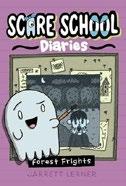
Bash is back for another session of Scare School. This second series installment sees the young ghost tasked with completing a group project that requires him to learn about a terrifying place in or around the school. Bash is assigned to work with Wes, a shy but gentle and artistic werewolf, and Vicky and Vlad, two prickly vampires. The group decides to research the spooky forest. Bash is nervous about exploring the forest; plus, he must contend with teammates who don’t pull their own weight (Vicky and Vlad goof off in the gym while Bash and Wes wait for them in the library). But Bash eventually finds a way to confront his fears as he and the others complete their project. Despite the premise, this tale’s more sweet than spooky. Endearing Bash frets about new experiences but proves eager to jump in. He has a delightful, supportive friend in his roommate, Itsy the spider; her tiny knitted socks are an especially charming detail. The characters’ realization that fear can sometimes hold us back will resonate with readers. The plot moves at a steady clip, while stick figure illustrations and comic panels break up the text, giving the tale an appealing, Wimpy Kid–esque vibe. A warmly reassuring tale for those who prefer their scares on the lighter side. (Fiction. 6-8)

Levy, Debbie | Bloomsbury (256 pp.)
$19.99 | Jan. 14, 2025 | 9781547612215

A mple details and a well-researched backstory paint a picture of a pivotal court case that’s both surprising and familiar.
A century before social concepts like the frequently misunderstood critical race theory made their way into mainstream discourse—before an unprecedented rise in hostile takeovers of library and school boards aimed at book censorship—Charles Darwin’s scientifically sound theory of evolution was a hot-button issue. Using extensive research and primary source material to great effect, Levy takes readers on a deep dive into the Scopes trial of 1925, a lawsuit designed to push back against the recently enacted House Bill 185, aka the Butler Act, prohibiting “any instruction ‘that man has descended from a lower order of animals’” in Tennessee public schools. This account jumps through time, from the trial itself to the origins of Darwin’s work and the background and history of the trial’s major players, providing insight into their principles and motivations. The author calls out historical racism and atrocities, including white supremacy and eugenics embedded in concepts such as “survival of the fittest” (which she emphasizes is a phrase that Darwin didn’t coin), juxtaposing them against the moral outrage over the concept of evolution. Though occasionally overly dense with detail and background information, this meticulous work is
generally well written and accessible. Moments of clarity around the weight and importance of this trial bring home its implications for the modern U.S. educational system.
A compelling, well-researched account. (timeline, source notes, selected bibliography, photo credits, index) (Nonfiction. 10-14)
Marino, Gianna | Philomel (40 pp.)
$18.99 | Jan. 14, 2025 | 9780593528808

A sweet message of love from a horse to its child. Dawn is breaking as this book begins, with translucent yellows, pinks, and oranges saturating the full-bleed gouache and ink illustrations. By contrast, the white horse and gray foal stand out in the foreground. “Tell me, Little Horse,” says the parent, “how will you celebrate this beautiful day?” Horses with darker coats are visible in the background; a page turn shifts the palette to cooler colors as the herd enjoys a sunny morning. Throughout, the white horse offers the gray one soothing, playful encouragement to engage with the natural world and take pleasure in the sensory delights of the meadow: “Will you listen to the song of the morning birds…and feel the soft earth under your hooves? Smell every blossom, little horse, and dream of all you can do.” Marino’s style is somewhat reminiscent of Susan Jeffers’ horse illustrations, and the shifting perspectives enhance the book’s visual interest. Many caregivers and children reading together will see themselves in the equine pair’s loving bond, especially if the book is shared at bedtime.
Another hilarious romp with this undeniably charismatic pair.
SQUASH,
THE CAT
Eventually, the warm palette returns to show a sunset “at day’s end, when the shadows grow long.”
Lots to love. (Picture book. 0-4)
Mayer, Sasha | Random House Studio (40 pp.) $18.99 | Feb. 4, 2025 | 9780593566565

Maggie’s cat, Squash, has difficulty adjusting to the child’s new pillow. The dynamic duo—consisting of energetic, flame-haired, lightskinned Maggie and her nap-loving orange feline—have returned. As in the first book, the text playfully and cleverly strings words together to spotlight the differences between the best friends. Squash is a “sleeping-inthe-sunshine, celebrating-from-thesidelines, and then a nap-in-a-lap kind of cat,” while Maggie is a “playing-pirates, sparkling-in-thesunlight, and producing-powerfulpotions kind of” girl. When the two cuddle up at bedtime, they form a “cozy Squash-Maggosh circle—just the two of them.” Trouble arises when Maggie excitedly receives an eye-patched, squarish pillow shaped like a pirate. Squash’s uneasy jealousy turns to desperation when Maggie cuddles up with Pirate Lou Pillow at bedtime. While the text slyly uses understatement to great effect, the scribbly cartoon art becomes laugh-out-loud funny as Squash unsuccessfully tries to get rid of Lou while Maggie sleeps. Readers will identify with the cat’s feelings but also understand Maggie’s reactions as she repairs a scratched-up Lou and banishes Squash from her bed. Next, the plump feline gets stuck in the cat door as he tries to drag Lou outside for morning trash pickup. When Maggie rescues him and gently puts him to bed, he realizes that he misses the soft pillow pirate. Once again, Mayer explores friendship and the often-complex emotions it gives rise
to, using a light touch and bringing her tale to a warm ending. Another hilarious romp with this undeniably charismatic pair. (Picture book. 4-8)
Mazique, Brittany | Illus. by Ebony Glenn Putnam (128 pp.) | $16.99 | Dec. 17, 2024 9780593618776 | Series: Millie Magnus Chapter Books, 1

Voluble third grader Millicent Magnus Miller makes her series debut. Dubbed “quirky” by her mother (an assessment readers will likely agree with), Millie narrates her own well-paced story in a flow of verbiage she often has trouble stemming. She is “the boss” but defers to her mom, who happens to be the mayor of Washington, D.C. Mayor Maude’s a single parent (Millie’s father is dead), but her assistant, Josephine Draper, adds more rules, like insisting that Millie’s pet chick, Extra Spicy, live in the coop outside. Millie and her “bestest friends,” Lunchbox, Poppy Anne, and Atticus, also face a sneaky, name-calling bully, Buckley. (Mazique drops an early clue: Only recently has Buckley “become so mean.”) Other conflicts involve Millie learning she can’t take Extra Spicy to the school’s Family Field Day and competing against Buckley in the three-legged race. It strains credulity somewhat that both teacher and principal fail to get Millie’s side of the bullying story, but Mazique gives Millie a relatable awareness of her struggles with impulse control, like “not being quiet and not sitting in my seat.” Eventually things improve in a teachable turnaround that’s a bit abrupt but still moving. Glenn’s realistic cartoon-style drawings portray Mille, her family, the principal, and Atticus as Black;
the teacher, Poppy Anne, and Buckley as white; and Lunchbox as East Asian. A new series starring a whimsical protagonist certain to endear herself to readers. (Chapter book. 6-9)
Mensah, Bernard | Illus. by Annalise Barber-Opp | Dial Books (40 pp.)
$19.99 | Jan. 28, 2025 | 9780593406441
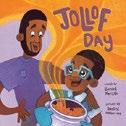
“Jollof Day is my day…and IT starts early.”
On August 22—World Jollof Day—a father and child (who narrates) rise early to prepare a pot of the much-loved West African riceand tomato-based dish. Together they scrub, chop, blitz, and stir their way through the ingredients for gravy. Finally, they add the contents of the Jar, which contains “a secret and special mix, bits of leaves, peppers, and powders.” As Daddy notes, “It’s our family’s magic.” Though the young narrator has trouble balancing the pots and pans, Daddy lets the little one help out every step of the way, and the child’s pride is apparent. The blue and purple illustrations are overtaken by a rich golden orange that swirls throughout the house, beckoning Mummy and baby brother to wake and prepare for the feast. Watching the family eating small puffs of jollof with their hands, the child marvels at everyone eating “JUST… / Like / Me.” The characters present Black, though their nationality isn’t mentioned. Mensah’s bouncy text makes lovely use of alliteration and vocabulary; though bold and readable, the type is fairly small and often feels lost against the vibrant, billowing illustrations and illustrated text that dances across the page. Still, it’s a minor point; this one will make an ideal read-aloud any day of the year. The backmatter includes a description of information on Jollof rice, Jollof Day, and a recipe. Downright delicious. (Picture book. 4-7)
Meyer, Susan Lynn & Jaya Mehta | Illus. by Parvati Pillai | Beaming Books (32 pp.) $18.99 | Sept. 24, 2024 | 9781506496467

A child and her father pick out the perfect Christmas tree.
Nisha wants a huge tree (“As tall as a camel! As wide as an elephant!”), but Baba wants a small one that he can easily carry up the stairs to their Brooklyn apartment. Still, the tree will need to hold the many decorations the family has inherited: red elephants and blue camels from India, Baba’s country of origin; icicles from Maine, where Mommy’s parents live. Nisha and Baba reach a compromise: They find a relatively small tree that fits Nisha’s requirements. Holding up two of her favorite ornaments, she confirms that the tree is indeed as wide as an elephant and as tall as a camel. Back at home, Baba, Mommy, and Nisha decorate the tree; Nisha’s thrilled that she’s tall enough to reach the upper branches this year. The tale ends with Nisha and her parents celebrating: Baba plays a Christmas carol on the sitar, while Mommy serves cookies and burfi. The story is lyrical, full of humor and heart. With her exaggerated facial expressions and posture, Nisha cuts an endearing figure in Pillai’s bustling art. In their authors’ note, Meyer and Mehta discuss the importance of blending cultural traditions (Baba is Hindu; white-presenting Mommy is Christian)—though this theme feels underexplored in the narrative. Still, it’s a delightful, festive tale overall. A welcome reminder that there are myriad ways to celebrate the holidays we love. (Picture book. 3-7)

A good choice for reluctant sleepers—though if it backfires, don’t blame the creators.
I DON’T WANNA HIBERNATE!
Myklusch, Matt | Illus. by Onofrio Orlando
Colors by Antonino Ulizzi | Aladdin (312 pp.)
$21.99 | Jan. 7, 2025 | 9781665928182
Series: Imagine Nation, 1

A young warrior battles inner ghosts and a rival to the throne in this series kickoff.
Switching to a graphic format, Myklusch returns to the elusive island of Imagine Nation, the setting of his Jack Blank novel series, where belief is the ruling principle. Dreaming of measuring up to his dead parents, Skerren takes center stage in a battle for the crown of Varagog, where it’s always 1404. He faces Zorn, the son of a displaced ruler who fled years ago following the cybernetic Rüstov’s invasion attempt. Orlando’s art effectively showcases Imagine Nation’s racially and culturally distinctive residents and settings as the high-action plot shifts scenes beyond Varagog to Faerie and futuristic Hightown—until an evil alliance in the Night Lands that threatens everyone on the island is revealed. In combat scenes, the artist also substitutes sprays of black Night Lander goop for red blood, rendering swordfights somewhat less gory. To the pleasure of returning fans (and comics readers in general), Jack and his fantastically rubbery-blue friend Allegra step in to help, and in a Marvel Universe–style twist, a conflicted older retainer nursing a devastating secret later plays a crucial role. Happily, for those readers who aren’t fans of never-ending plotlines, this volume offers enough of a resolution to work as a stand-alone.
Briskly paced, expertly crafted, and stocked with surprising twists and nuanced characters. (Graphic fantasy. 10-13)
Osman, Majdi | Illus. by Teresa Martínez
MIT Kids Press/Candlewick (40 pp.)
$18.99 | Feb. 25, 2025 | 9781536227598
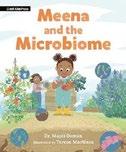
A child learns about the roles microbes play everywhere, from garden soil to guts. Sometimes it’s good to have a scientist in the family. Young Meena’s mother—serving as a mouthpiece for the author, a physician/scientist studying the effects of fecal transplants—gives her (and readers) an earful about microscopic organisms as the two enjoy a day working in a garden. Mom explains that microbes produce that pleasant earthy smell after a rain, break down organic waste to compost, and can make a wet dog smell funky. These “hidden helpers” are found everywhere on Earth and live in large micro-communities, where they share nutrients and chemical signals. But where can you find the largest concentration of microbes? “Inside your belly!” Mom informs Meena. “We are as much microbe as we are human.” They influence our growth and even moods, she goes on, and though most are “our friends,” some can make us sick, so it’s important to wash up regularly. The author delivers all of this in a reassuring tone underscored by Martínez’s cozy scenes of a brownskinned parent and child rooting around in garden beds, alternating with
images of fancifully suburban microbial neighborhoods complete with cars, buildings, and smiling blobby residents. Informative and aglow with positive messaging. (author’s note, websites) (Informational picture book. 6-8)
Ouchchy, Anna | Illus. by Raahat Kaduji | Henry Holt (32 pp.) | $18.99 Jan. 7, 2025 | 9781250903228

Ouchchy takes a common parental issue—children who don’t want to go to sleep—and situates it in a groundhog burrow on the eve of winter.
Little Tess may not want to hibernate, but her yawning parents surely do. Before they can rest, though, they need to get Tess to bed. The usual get-kids-to-sleep methods are prominently featured—tucking the little one in, reading stories, offering warm beverages, singing lullabies. Tess uses familiar excuses—she’s not tired, her toys need her, there’s too much to do to sleep. In the end, her parents’ reverse psychology seems to do the trick: You stay up, Tess. We’re going to bed. Tess thoughtfully tucks Mommy and Daddy in before the inevitable yawns and heavy eyelids make an appearance, and she finally succumbs. But will Tess’ hibernation procrastination mean she’ll miss Groundhog Day? Parents and children alike will find their book counterparts thoroughly relatable. Cleverly, the rhyming verses can serve to either excite or soothe little listeners, depending on how they’re read aloud (and how much oomph adults put into the sound effects).
Kaduji’s groundhogs are wonderfully expressive, with the O of a mouth, characters’ downturned eyebrows, and (premature) parental high-fives speaking volumes. The relative lack of background details keeps the focus on the family. A good choice for reluctant sleepers and their tired parents—though if it backfires, don’t blame the creators. (Picture book. 4-7)
Paul, Ann Whitford | Illus. by David Walker Farrar, Straus and Giroux (32 pp.) | $18.99
Jan. 7, 2025 | 9780374390587
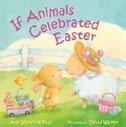
Young farmyard friends busily prepare for a springtime celebration. After collaborating on tales devoted to animals observing Halloween and Christmas, Paul and Walker turn their attention to Easter. The farm families gather, weaving baskets and dyeing eggs. Kitten and Cat interlace fabric strips for their basket (Kitten paws energetically at the dangling ribbons), while Goat and Kid fittingly make theirs out of paper and cans that they have munched into shape. Hen, of course, provides the eggs, which are intricately decorated by Lamb, using a feather. Mouse Pup uses its tail to dip an egg into a jar filled with dye, while spotted Calf prefers to splatter his eggs with paint, creating a splotchy pattern that matches his coat. The farm hums with the awakening of spring, set against pastel green hills and soft golden hay. Who hides the eggs after everyone’s gone to sleep? Rabbit, naturally, on “hippity-hop-hopping legs.” Onomatopoetic action words are bolded throughout, while the text placement curves in waves, matching the plump roundness of the animal tots. The rhymes bounce softly along, just like Rabbit cautiously bounding with her wagonful of eggs to hide. Jelly beans and chocolate treats (which Piglet loves to “snuff-snuffle-snort”) are also included in this barnyard portrayal of holiday traditions.
A sweet Easter primer for the youngest of snuggle bunnies. (Picture book. 3-6)
Paul, Ruth | Candlewick (32 pp.)
$17.99 | Feb. 11, 2025 | 9781536235920

Seeking an eggs-cellent attention grabber? Look no further!
Narrated in rollicking verse, this exuberant Australian import offers multiple learning opportunities for the very young: color recognition, practice honing visual-literacy skills, vocabulary enrichment, rhyme appreciation, and development of early math skills, including counting, matching, and sorting. All this while early learners are having a grand time helping hens find the eggs that match their own colors and vivid designs. An unseen narrator invites kids to get in on the hens’ high-spirited search. Will they want to? You bet. This jolly offering will have kids eagerly engaged, right up to the satisfying conclusion. Onomatopoeic sound effects are well incorporated into the text and visuals and are rendered in large, boldfaced capitals (“CLUCK, CLUCK, SQUAWK!”). The textured, brilliantly colored digital illustrations are a major draw: They look as if they were created on a grained background and have an embroidered appearance. The opening scene—“Chickens roosting in the tree”—resembles a piece of Eastern European folkloric art. The final message of the story is perhaps the best part: Chickens are “same but different…Just the same as you and me.” Background characters are racially diverse.
A terrific way for kids to count chickens before they hatch—and practice other skills besides. (Picture book. 3-6)
A sweet Easter primer for the youngest of snuggle bunnies.
Kirkus Star
Percival, Kari | Chronicle Books (48 pp.) $18.99 | Jan. 7, 2025 | 9781797214566
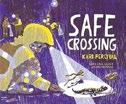
A community helps amphibians cross nighttime roads.
In spring, when frost thaws and rain arrives, amphibians such as spring peepers and salamanders begin their journey from woods to the vernal pools where they’ll spawn. That perilous journey involves crossing roads as vehicles whoosh past. Enter the Amphibian Migration Team—volunteers who stand at these crossings at night to monitor traffic and help “our tiny friends” to safely cross “a wet road on a wet night in spring.” As citizen scientists, the volunteers also count survivors and casualties. Percival chronicles this process in unadorned prose through the eyes of one multiracial family, who not only volunteer, but also advocate for the creation of a wildlife tunnel to allow the creatures safe passage beneath the road. The Black-presenting child who narrates emerges as a hero, asking questions packed with answers. “Do they hear the other frogs singing and think, Tonight is the night! It’s time to go down to the pool to lay our jelly eggs safely in the water! ” The explanatory part of the story—the making of a toad tunnel, from design to budget to town council approval— offers readers a road map. At times the narration slips into more telling than showing, but the illustrations, rendered digitally but in the style of woodcut prints, are spectacular. Spreads saturated with nighttime purples, browns, and yellows riven with beams from headlamps fill the page, while charming, illustrated bubbles pop up alongside the child’s head. Informative and beautiful. (more information on amphibians and wildlife-crossing structures, safety guidelines, guidance on being a community scientist, glossary, “can you find” visual search game) (Informational picture book. 5-8)
Kirkus Star
Pinkney, Andrea Davis | Illus. by Daniel Minter | Little, Brown (48 pp.) | $18.99 Jan. 7, 2025 | 9780316182362
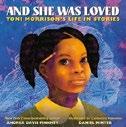
An acclaimed writer pays homage to a literary icon.
Toni Morrison was born Chloe Ardelia Wofford to a loving family in Lorain, Ohio. Their home teemed with stories and spirituals, fueling her passion for words. Chloe was the only Black girl in her class and the first to read. When she grew up and went away to Howard University, she changed her first name to Toni; an avid student, she was at last surrounded by other Black scholars. Her post-college career saw her connect with Black writers; as an editor, she helped them usher their work into the world. She worked on her own stories, eventually publishing her groundbreaking first novel, The Bluest Eye. Throughout her career, Morrison’s love for her people placed their lived experiences within the tapestry of the human narrative. This free verse ode is more than a biography; it’s a tribute to the power of the literary life and community. Pinkney’s choice to echo the phrase “and she was loved” is a dramatic way of highlighting the encouragement and support Morrison received—which she gave back through her stories. In a moving essay in the backmatter, Pinkney discusses in more detail why Morrison’s legacy matters. Minter’s evocative illustrations pair perfectly with the lyrical text; saturated depictions of his subject contrast with silhouettes and outlined images of young
people dancing and playing—a reminder of that rich community in which Morrison blossomed.
A potent example of the reach of artistic genius. (artist’s note, timeline, selected works of Toni Morrison, sources consulted) (Picture-book biography. 4-8)
Pomper, Megan | Illus. by Maia
Hoekstra | Owlkids Books (32 pp.)
$18.95 | Feb. 18, 2025 | 9781771476133

A curious child sets out to answer the titular question. Spread by spread, the young narrator considers different features: feathers, beaks, wings, eggs, the ability to fly, and more. Elementary school teacher and author Pomper demonstrates an understanding of children’s thinking through the questions her protagonist poses and the connections the little one makes. The child considers a variety of beaks, then adds, “I’ve never seen an octopus, but I know it has a beak.” Birds hatch from eggs—but so do snakes and turtles. And some birds can’t fly. Each hypothesis is carefully rejected in turn. The child’s imagination begins to run wild: “Maybe a bird is what comes to mind when you close your eyes and think of a bird.” The youngster’s final conclusion contains a larger lesson: “They can be similar, different, ordinary, unique…and they can all be birds.” The realization that “the bird in your head might not be the same as the bird in mine” will surely be thought-provoking for youngsters. Hoekstra relies on swirling swoops of color in a mostly sand-toned palette,
A somewhat grisly but fascinating look at what preserved bodies can reveal.
though she also seems to have taken inspiration from the hue of the bluejay, seen in the brown-skinned child’s earrings, scarf, bracelet, sandals, and hair. The birds and other creatures shown are clearly identifiable. The creators add interest by challenging readers to find and name the 34 different species shown, using a key on the last spread. A cleverly open-ended answer to a big question. (Informational picture book. 4-8)
Punset,
Ana | Illus. by Diana
Vicedo
Trans. by Rosie Eyre | Candlewick (128 pp.) | $6.99 paper | Dec. 3, 2024 9781536241013 | Series: Unicornia, 1
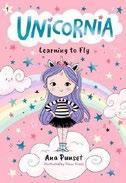
Welcome to Unicornia, a hidden city founded to protect unicorns, once on the brink of extinction. Here, cars run on cotton candy syrup, traffic lights “play music and spray fireworks,” and the local theme park boasts a roller coaster made of strawberry chewing gum. Translated from Spanish, the book follows Claudia, a young girl who’s just moved to town, as she excitedly describes everything that makes Unicornia special. But the city isn’t perfect; Claudia still has to go to school—carrying her magic weightless cloud backpack. After a few bumps along the road at the Unicornia Academy of Magic, Claudia quickly befriends Pippa, Sara, and a pink crow named Nibbles. The conflicts she encounters are fairly minor; she experiences another letdown when she fails to leap onto a unicorn’s back during a flying lesson, but chocolate croissants quickly improve her mood. “Believe in yourself,” “give it a try,” “friends make everything better,” “maybe we’re more alike than I thought”: Readers who need to hear any of these truisms, or who just want a tale that’s full of smiles and sugary desserts, will gobble this one up. Vicedo’s line art, blushing with pale pink, bedecks every scene with bows,
beads, blooms, stars, curlicues, and hearts. It’s a full-length valentine; some may find it cloying, but others will salivate for sequels. Characters have skin the white of the page. A fantasia to please Candy Land fans. (Early chapter book. 6-8)
Punset, Ana | Illus. by Diana Vicedo Trans. by Rosie Eyre | Candlewick (128 pp.) | $6.99 paper | Jan. 7, 2025 9781536240993 | Series: Unicornia, 2

More adventures in Unicornia. Claudia loves everything about her new home, a magical city created to safeguard unicorns. She and her pal Sara are excited to celebrate their BFF Pippa’s birthday. Pippa’s parents travel the globe, looking for lost unicorns, and Pippa barely sees them. When their plans to return home for her birthday fall through due to a snowstorm, a disappointed Pippa cancels her party. But at her friends’ urging, she agrees to accompany them to the amusement park. When the girls get stuck at the top of a flying Ferris wheel, the Emergency Unicorns—Unicornia’s version of first responders—come to the rescue. Translated from Spanish, the tale wraps up with an all-sweets picnic, including a magical cake that gives eaters the ability to perform handstands, somersaults, and flying pirouettes. Unicornia isn’t all cotton candy and glittery drinks—vegetable soup appears once, slurped down quickly to get to dessert—but magicinfused concoctions are the order of the day. Though Claudia expresses some uncertainty, she narrates in a chipper tone; conflicts are easily resolved, and frowns swiftly turn to smiles. The turquoise-tinged cartoon illustrations differentiate the girls by hairstyle and color; characters have skin the white of the page. If readers’ appetite for heart-shaped cupcakes and
quadruple-chocolate cookies isn’t sated, more sequels follow. The events of the first installment aren’t recapped, so newcomers may want to start there. Frothy unicorn fun. (Chapter book. 6-8)
Ralphs, Matt | Illus. by Gordy Wright Nosy Crow (64 pp.) | $19.99 | Jan. 14, 2025
9798887770819 |
Series: British Museum

A forensic and archaeological introduction to some amazing remains, published in collaboration with the British Museum. Throughout history and around the world, human remains attest to ancient (and not-so-distant) cultures and communities. Skulls and bones are everywhere, but well-preserved bodies, such as Ötzi the Iceman, are especially rich in information. Ralphs offers in-depth looks at mummification and discusses beliefs in gods and the afterlife; he takes readers to elaborate tombs, like the Great Pyramid, as well as bogs, catacombs, and underground chambers. The author sensitively handles difficult topics such as child sacrifice. He covers well-known cultural sites such as ancient Egypt and Pompei, as well as potentially unfamiliar and eye-opening ones. Readers will meet the oldest mummifiers, the Chinchorro, who lived on the west coast of South America and took an egalitarian approach, preserving everyone who died, regardless of age or status. Ralphs also spotlights the salt mines of Iran, the Taklamakan Desert in China, the Siberian steppe, and the Arctic. The writing is clear and engaging, and the many unknowns remain tantalizing mysteries. Wright’s precise and colorful gouache, acrylic, and ink illustrations bring the cultural settings, preserved remains, and compelling (and impressive) artifacts, including tools, food, clothes, weapons, and crafts, to vivid life.
A somewhat grisly but fascinating look at what preserved bodies can reveal of their lives and cultural origins. (maps, glossary, index) (Nonfiction. 9-12)
Rayner, Catherine | Candlewick (32 pp.)
$17.99 | Jan. 28, 2025 | 9781536235586
Series: Molly, Olive, and Dexter

The intrepid trio, last seen in Molly, Olive, and Dexter: The Guessing Game (2024), return for a new activity, with potentially emotional results.
Molly the hare, Olive the owl, and Dexter the fox have a new game in mind: tag. Dexter slips behind Olive and informs her that she’s “It.” Deft of wing, Olive quickly tags Molly, who sets her sights on Dexter. When the two run a dizzying number of times around a tree trunk, he finds himself off balance and, worse still, slow. Dexter flags and finds he can’t best either Molly or Olive—Molly’s far too speedy, and Ollie’s an amazing flier. “What are FOXES good at?” Clever cunning is the answer there, and Dexter puts his brain to use to find a solution to his problem. Though everyone’s initially focused on winning, it’s Dexter in the end who assures his friends with a hug that “We ALL won, didn’t we?” The feeling of being left behind or less fast than others shines through and will strike a chord with young readers. Rayner’s idyllic watercolorlike illustrations supply a backdrop of pastoral scenes of fields and old stone walls. Tensions may rise, but these friends are always there for one another in the end. The comfort of this gentle world happily outlasts every minor problem. (Picture book. 3-6)

Rayner, Catherine | Boxer Books (32 pp.)
$18.99 | Jan. 7, 2025 | 9781915801838

A young wolf learns how to manage his anxieties with the help of a friend. Victor frets about lots of things—for starters, he worries that he isn’t wolfish enough. His fellow pack members are big, brave, fierce, and confident—wolfish indeed! Victor pretends to be like his packmates, but what if they expect him to do brave things that he’s not capable of? Or what if he scares the others by being too ferocious? His anxiety grows. Victor’s best friend, Pablo, encourages him to open up, but Victor is reluctant. “If you share your worry, it will feel smaller to you,” Pablo reassures him. One by one, Victor shares his concerns, and not only does he feel better, but he realizes that Pablo had the same worries, too! Pablo’s strategies—talking about feelings, mentally putting worries in imaginary bubbles to float away, and engaging in play to reduce anxiety—aren’t just for fearful wolf pups; Rayner’s coping strategies and clear message will be perfect for children who are hesitant to share their feelings. Her watercolor illustrations are artfully drawn. The visually appealing earth tones perfectly reflect the outdoors while accurately capturing Victor’s emotional journey from being anxiously uneasy to feeling confident, knowing he’s learned how to navigate his wolfish worries. A lovable character and a gentle lesson make this tale a great conversation starter for kids with their own worries. (Picture book. 4-8)
Rhuday-Perkovich, Olugbemisola
Crown (272 pp.) | $17.99
Jan. 14, 2025 | 9780593643488

This second series entry reintroduces readers to the “double-decker” family of two sets of children and parents sharing one household, this time through the eyes of
11-year-old Sunday Saunders, who’s one of four sisters. Sunday feels like each sister shines at something, except for her. While she excels at writing and comes up with grand ideas, she struggles to execute them and often falls short in planning. Tired of feeling overshadowed, she comes up with her biggest idea yet: hosting a community musical extravaganza where everyone can showcase their talents. Trying to balance everything, Sunday quickly realizes that she may have overpromised; now, she must find a way to achieve the feeling of being special that she desires. Rhuday-Perkovich presents the family structure and their “freeschooling” philosophy in ways that show the benefits and drawbacks, with the girls learning to manage both the things they can control about themselves and the opinions and actions of others, which they can’t. The initial pacing is slow, and the introduction of all the parents, girls, and pets may feel overwhelming to readers who are new to the series. As the characters’ personalities develop, however, differentiating among them becomes easier. Readers see Sunday grow and gain in self-confidence in a Bronx setting that comes to life through vivid imagery. The main characters are Black.
A superlative volume that combines strong characterization with thrilling action.
PERCY JACKSON AND THE OLYMPIANS
A heartfelt story of family life and learning how to shine. (song lyrics, tips for keeping an idea notebook) (Fiction. 8-12)
Riordan, Rick | Disney-Hyperion (336 pp.)
$19.99 | Sept. 24, 2024 | 9781368107631
Series: The Senior Year Adventures, 2

With graduation on the horizon, Percy faces new challenges in this second series entry. It’s October, a month for relishing the crisp air, changing leaves, and “pumpkin-spice burritos,” when high school senior Percy is summoned to the principal’s office to meet his aunt—a mysterious request for someone who doesn’t have an aunt (at least, “not on the human side” of his family). The visitor turns out to be Hecate, the triple goddess of magic, crossroads, and necromancy. She insists that Percy petsit her hellhound and polecat while she’s off enjoying Halloween festivities. Still needing two letters of recommendation if he’s to join girlfriend Annabeth at New Rome University, Percy can’t refuse. As always, Annabeth and Grover are happy to assist, and thus begins an autumnal adventure for the ages. Monstrous mayhem abounds, and characters from past adventures resurface. The localized focus of the action within New York City offers readers an insider’s tour of locales such as Gramercy Park and the historically Greek enclave of Astoria. Reducing the geographical scale of the quests also allows Riordan to focus on Percy’s maturation and introspection. This is arguably the most feminist novel of this universe: Percy reckons with several prominent women from ancient myth whose lives were ruined by men. One of the novel’s most poignant vignettes involves Percy vicariously experiencing the anguish of
the destruction of Troy through the psyche of one of its few female survivors. A superlative volume that combines strong characterization with thrilling action. (Fantasy. 9-14)
Ruzzier, Sergio | Harper/ HarperCollins (48 pp.) | $19.99 Jan. 14, 2025 | 9780063295889

A polar bear cub learns a valuable life lesson. Bianca loves her routine and her habitat: the calming colors, the sound of the ice cracking as she walks on it, and the constant cold. Noticing a bright butterfly one day, she leaps onto a nearby ice floe to take a closer look. The ice floe drifts for several days and nights, eventually stopping at the shores of a land filled with fascinating flora, depicted in vibrant hues of red, yellow, purple, and orange. Initially intrigued by her surroundings, Bianca quickly becomes scared and homesick. Using a broken-off tree branch, she floats home to her mother’s loving arms, with a renewed sense of affection for her life yet with an inquisitiveness about “the things she doesn’t know…yet.” Ruzzier’s straightforward, delicate text pairs well with the warm tones of his signature pen, ink, and watercolor illustrations. Featuring short sentences that are nevertheless imbued with emotion, this tale would make a lovely read-aloud. Young readers will relate both to Bianca’s feelings of comfort in the familiar and her curiosity about the rest of the world. A simple yet effective tale of fostering appreciation for the mundane and the unknown. (Picture book. 4-7)

Senzai, N.H. | Illus. by Anna Rich Nancy Paulsen Books (48 pp.) | $19.99 Jan. 14, 2025 | 9781984816986

The bittersweet story of Abdulrahman Ibrahima Sori’s early life, enslavement, and eventual freedom.
Kirkus Star
Skrypuch, Marsha Forchuk
Scholastic (320 pp.) | $25.99
Jan. 7, 2025 | 9781546104537
Series: Kidnapped From Ukraine, 1
For more by Sergio Ruzzier, visit Kirkus online.
Warrior, scholar, devout Muslim: Abdulrahman (1762-1829), son of the king of West Africa’s Fouta Djallon, is everything a prince should be. But when he’s captured by an enemy tribe and sold to English traders who traffic enslaved African people, his royal title cannot shield him from the brutal reality of the Middle Passage and the nearly 40 years of enslavement by a Mississippi planter that will follow. Abdulrahman gains a reputation for integrity, wisdom, and expertise. Having never forgotten his home, his faith, or himself, he leverages the influence of several white men— from an acquaintance he first met in Fouta Djallon to a newspaper printer to President John Quincy Adams—and finally secures his freedom. Drawing directly from Terry Alford’s biography as well as from the work of various African studies scholars, Senzai retells an incredible story of devastation and resilience, emphasizing the historical presence and impact of Muslim identity in America and beyond. The text is heavy with weighty truths of racial violence and enslavement, and although Abdulrahman dies in Liberia without seeing his home again, the author balances tragedy with themes of hope and togetherness. The narrative ends with Abdulrahman’s dream realized as his African and American descendants gather nearly 200 years later. Rich’s illustrations strike a similarly nuanced balance, offering visual counterweights of gentleness and community alongside powerful emotional spreads.
A captivating biography and history made accessible for younger readers. (author’s note) (Picture-book biography. 7-10)
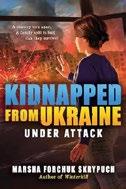
War through the eyes of a 12-year-old Ukrainian girl.
Early one morning in February 2022, Russia begins bombing Mariupol, Ukraine, separating Dariia and her mother, who are away from their apartment, where Dariia’s father and twin sister Rada are. They find an overcrowded basement without adequate food, water, or sanitation and hunker down with others who are in need of shelter. As the city continues to be bombed week after week, survival becomes a daily struggle, but Dariia finds comfort in the company of other children, including classmate Natalia, who’s a close friend of Rada’s, and two boys named Rustem and Asan. When a direct hit kills most of the people in the basement, Dariia, her mother, and Rustem are among those who manage to escape—only to be captured at gunpoint by Russian soldiers. The children are separated and transported to a Russian camp to be cleaned up and adopted out to Russian families. Skrypuch presents the Russian propaganda that they are “rescuing” the kidnapped children from the “Nazi regime of Zelensky” in all its absurdity. Writing in searing detail from Dariia’s point of view, the author is explicit in her portrayal of the horrors of war, depicting scenes of violence, murder, racism, and destruction. This story of innocent civilians—especially children—finding the resilience to survive in a war that, at the time of this review, is still ongoing will be eye-opening for readers. Gut-punching: This is essential reading. (author’s note, additional context) (Fiction. 10-14)
Kirkus Star
Stewart, Erin | Aladdin (320 pp.) $17.99 | Jan. 14, 2025 | 9781665952255

Terrifying statistics run through Zoey’s mind day and night, controlling her decisions
After her father dies in a bus accident, anxietyridden 12-year-old Zoey Turner, who presents white, spends her summer escaping into the familiar world of her favorite fantasy series, the Magic of Ever After by Raven M. Wells. When a book signing ends in a panic attack, Zoey receives a pencil allegedly belonging to Wells herself. Zoey writes a story with the pencil, which seems innocent enough until the next day, when the events of her story happen in real life. Always the type to practice extreme caution, the nervous seventh grader asks Derek Beal, the redheaded president of a fantasy club with his own anxieties and fears, for help in how best to use her new magic. She keeps the pencil a secret from everyone else in her life, even her Lebanese American best friend, Lena. Zoey fears losing Lena when secrets and fears begin to separate them. As Zoey sharpens the pencil with each new story, her chances of writing the perfect ending dwindle away. She’ll need to find her own magic before it’s too late. This emotional narrative skillfully informs readers about anxiety and post-traumatic stress disorder and will comfort anyone facing challenges similar to the main characters’, reminding them to look for the pockets of joy in every day and inspiring them to discover their own forgotten magic.
Hope prevails in this story, filled with a resounding authenticity. (Fantasy. 10-13)

Stewart, Martin | Illus. by David Habben Penguin Workshop (304 pp.) | $9.99 paper | Jan. 28, 2025 | 9780593754085 Series: Bridget Vanderpuff, 1
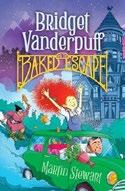
An inventive and self-confident 9-year-old jumps at the chance to trade her miserable orphan’s life for a home with a baker who’s lost his ability to see magic.
Bridget Baxter can pick a lock, escape a dungeon, and deploy her paraskirt to drift safely groundward, and she’s done all this and more during her nine years at Miss Acrid’s Orphanage for Errant Childs. Bridget is heartbroken when Miss Acrid engineers matters so that every other orphan—including her best friend, Tom—is adopted, leaving her all alone. A vivid dream propels Ernest Vanderpuff to Miss Acrid’s door to inquire about Bridget. When the vile Miss Acrid sends him away, Bridget sails intrepidly from the roof and departs in Mr. Vanderpuff’s car. Once ensconced at Vanderpuff’s Bake Shop, Bridget finds a soft bed, a friendly resident elf, and a mysterious Locked and Secret Door. Bridget’s madcap baking adventures result in lessons in trying your best and being a good friend. Miss Acrid’s somewhat cartoonish awfulness fits the story’s tone, as do Bridget’s many clever escapes and contraptions. This bighearted series opener works delightfully sophisticated vocabulary into every page, supplemented with humorous footnotes and punctuated with energetic line drawings. The ending promises a reunion with Tom and more adventures to come.
Bridget and Miss Acrid read white; Mr. Vanderpuff and Tom are brown-skinned.
An indomitable hero whips up whimsical bakery concoctions, with life lessons sprinkled throughout. (baking game, cookie recipe) (Mystery. 8-12)
Stewart, Martin | Illus. by David Habben Penguin Workshop (352 pp.) | $9.99 paper | Jan. 28, 2025 | 9780593754108
Series: Bridget Vanderpuff, 2
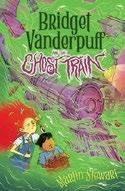
A girl’s madcap, bakery-themed adventures continue in this second series entry. Having found a father and a home in the bake shop in Belle-on-Sea, Bridget, along with best friend Tom and Pascal the bakery elf, must contend with news of a frightful ghost train that’s threatening their charming village. Though she’s no longer an orphan, Bridget hasn’t lost her confident attitude, inventing skills, or distinctive orange hair. Reunited with Tom, whose fondness for sweets is only slightly hampered by his adoptive parents being dentists, Bridget is determined to root out the truth behind rumors of a ghost train, working with Tom and Pascal to allow Belle-on-Sea’s traditional Parade of the Hungry Ghosts to continue without incident. Bridget’s baking skills haven’t improved, but her “failures,” like Molten Baklava, continue to prove highly useful. Wordplay, creative inventions, ample footnotes, and boisterous illustrations continue the playful, energetic, and occasionally overthe-top vibe of Bridget’s first adventure. The scares are on the mild side, but amateur sleuths will enjoy watching Bridget on the case as she adheres to Mr. Vanderpuff’s motto: “Baking is best when it’s shared .” Tom, Mr. V, and Kingsley Dare, the town’s resident earl and a hide-and-seek champion, have brown skin; other characters are drawn as white.
A delectable concoction that contains a dash of Sherlock Holmes and a sprinkling of the supernatural. (map, tart recipe, riddle) (Mystery. 8-12)
Kirkus Star
Mama Hug
Straub, Emma | Illus. by Stevie Lewis Rocky Pond Books/Penguin (40 pp.)
$18.99 | Jan. 7, 2025 | 9780593618592

Mama and baby—best friends.
A brownskinned mother with greenrimmed glasses gazes lovingly at a tan-skinned little one lying in a crib and reaching up to her. So begins a quietly joyful celebration of a day in the life of this pair, narrated in rhyming couplets: “Mama cuddle / Mama swing // Mama dance / Mama sing.” From bedroom to living room and out to a grassy yard, their day involves gentle play, Mama’s comforting of her child after a fall, plenty of tickles, routines such as mealtime and bathtime, and so much more. These two are never far apart, and their rounded figures bend tenderly toward one another; a particularly sweet spread depicts the baby lying on Mama’s chest (“Mama pillow on a Mama bed”). Lewis’ cheery, earth-toned palette of pinks, oranges, browns, and greens radiates the warmth exuded by the contented pair, subtly transitioning to the deep blues and purples of sunset when it’s time for bed. Straub’s spare yet meticulously written text effectively captures each loving moment and leaves room for the illustrations to tell their own, complementary story through details such as a patch of bright sunflowers and a special constellation on the last page. Readers will savor smaller background details as well: a picture of a banana hanging on the wall, stacks of alphabet blocks, and a green toy dinosaur. Simply, gracefully perfect. (Picture book. 1-4)
Tabor, Corey R. | Greenwillow Books (32 pp.) | $17.99 | Oct. 15, 2024
9780063370920 | Series: My First I Can Read
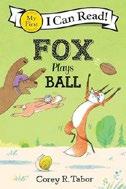
New readers win when they play football with Fox and company.
Fox’s spiky ears emerge from an old-school helmet, Bear wears purple vintage headgear, Elephant has donned a baseball cap, and Rabbit sports an upside-down sieve. Wearing only the standard shell, Snail wants to play, too—cheered on by a ladybug fan (alas, not Tabor’s Sir Ladybug character). Everyone wants to win! Steadying the ball with a trunk, Elephant expertly lofts it “far…very far”—toward a nearby snowcapped mountain. The chase is on: The animals speed after the ball on a skateboard, a scooter, and a bike, while unflappably smiling Snail moves at a snail’s pace. As the ball ricochets dramatically (depicted with rapidly careening dotted lines), Fox, Rabbit, Bear, and Elephant all miss the catch—as does Snail. When the animals all dive for the ball, Snail sensibly seeks the shell’s security. Because they all pile on Fox, the ball pops out…right to Snail! As the ladybug wildly applauds, Snail wins! And Fox sportingly congratulates the winner with “Good game!” Tabor’s perennially clever, stylish art offers unexpected perspectives and angles, and the action scenes will keep readers in suspense. In the more sedate scenes, the understated illustrations will allow youngsters to concentrate on the few and well-chosen words and to appreciate Tabor’s subtle scene-setting, buildup, and humor.
Another victory from a master of the early reader. (Early reader. 4-7)
Another victory from a master of the early reader.
FOX PLAYS BALL
Teague, Mark | Beach Lane/ Simon & Schuster (40 pp.) | $18.99 Oct. 15, 2024 | 9781665940740

A pig struggles to take a nap. When storytime ends, the pig (referred to as “you” in this tale told in second person) tries to settle in but can’t. “The room is too bright!” So the pig pulls down the shades. Uh-oh. “Now the room is too dark.” Every time the pig finds a solution to one of the problems causing sleeplessness, another arises. The pig turns on a flashlight to banish the darkness, but moths are instantly attracted to the light. Opening a window gets rid of the moths, but now birdsong keeps the pig awake. As our protagonist dons a pair of headphones to muffle the noise, nap time turns into a dance party. Though the often dull palette and arrhythmic text may not seem like the ingredients for an engaging read, the comical predicaments the pig encounters make for an endearing story (though it’s debatable whether this tale will get young readers in the mood for sleep or rile them up all the more). The delightful conclusion, which puts the pig in charge of storytime and sees our protagonist falling asleep at last, may empower little ones to take charge of their reading and become a little more willing to embrace bedtime themselves.
A slow-building but satisfying story.
(Picture book. 3-5)
Tillotson, Carrie | Illus. by Elisa Chavarri Beach Lane/Simon & Schuster (48 pp.)
$19.99 | Feb. 11, 2025 | 9781665942027

An introduction to the shaggy, big-eyed, impossibly appealing alpaca. As Tillotson points out,
alpacas are raised for their warm fleeces in both their native South America and in North America. To reinforce that connection, the paired illustrations show them being raised, tended, and shorn in similar ways side by side on hilly Andean meadows and in flatter, grassier, fenced-in fields. In both settings, long-necked adults and their little crias fetchingly flock, nuzzle, or gambol springily as the author barrages readers and listeners with basic facts, presented in appropriately bouncy rhymes and parallel blocks of smaller-type prose, all capped by further historical and husbandry notes at the end. It’s a heavy info-load, though delivered with infectious enthusiasm. Readers learn that alpacas were domesticated thousands of years ago in the Andes from their camelid cousin vicuñas and that they bear coats of 16 official colors in North America and 22 in South America, which are regularly removed without harm to the animals. Unlike sheep’s wool, alpaca fleece requires no chemical processing before being spun. The smiling human figures that Peru-born Chavarri slips into her outdoorsy scenes alternate between racially diverse ranchers in the north and, in the south, brown-skinned herders dressed in a mix of modern and traditionally designed and patterned fabrics in a variety of bright colors and earth tones.
Cute, cozy, and rather relentlessly informative. (author’s and illustrator’s notes, glossary, selected sources) (Informational picture book. 6-9)
This Is NOT a Polar Bear!
Timms, Barry | Illus. by Ged Adamson Nosy Crow (32 pp.) | $16.99 | Jan. 7, 2025 9798887771366 | Series: This Is NOT a…

pale-skinned with an orange bob. The unseen narrator emphatically sets the record straight right away: “It’s NOT a polar bear.” Then what is it? Well, it could be “a roller bear” (in the accompanying illustration, the tot and the bear skate down the sidewalk together) or “a stroller bear” (the two amble along, complete with top hats and canes) or even “a playing-theviola bear.” Timms ramps up the goofiness, offering even more silly scenarios. Perhaps our friend is “a jiggle bear” (seated atop a mound of shaking Jell-O, the protagonists gobble up huge spoonfuls of the dessert) or “a wriggle bear” (they each squirm into a sweater) or maybe even “a trying-not-to-giggle bear.” The goggle-eyed bear and youngster traipse through many adventures on paneled pages, with a curious seagull friend popping in to different scenes to watch the folly unfold. This playful and imaginative tale encourages readers to open their minds to offbeat possibilities. If they do, they just might meet a “never-let-you-golar bear” (who gives the best hugs). Amusing and lively cold-weather fun. (Picture book. 4-8)
Tran, Phuc | Illus. by Pete Oswald Harper/HarperCollins (32 pp.) | $19.99 Feb. 4, 2025 | 9780063256309 Series: Cranky and Friends

What could the title character be?
This latest in the series introduces a snow-white bear who walks upright and a young human friend,
In this sequel to Cranky (2023), the grouchy crane returns, with a new character in tow.
The book opens on an optimistic note. Seated at the breakfast table, Cranky cracks a true smile alongside a younger brother; both sport matching yellow and orange paint. The mood shifts swiftly at the Sandbox Hills construction yard when a smaller green crane bursts onto the scene. With his constant stream of chatter and jokes, Lefty is equal
parts annoying and earnest as he proclaims, “I’M FOLLOWING CRANKY TODAY SO I CAN LEARN HOW TO BE THE BEST CRANE I CAN BE.” To Cranky’s horror, the newcomer quickly endears himself to the other crew members. Cranky’s insecurity is deeply relatable; feeling left out, the crane attempts to crack fake smiles and tell jokes, to the others’ consternation. (“What’s wrong with your face, Cranky?”) At last, Cranky literally blows a gasket, depicted effectively on a page with a dramatically red backdrop. Friends offer Cranky words of reassurance: “We like you because you’re Cranky. Nobody is like you.” Tran and Oswald plainly demonstrate useful strategies for coping with big feelings, like sitting quietly alone and expressing oneself. Oswald’s chunky illustrations, rooted in primary colors, will engage younger children, while speech bubbles offer older kids that cool comic book feel. Construction puns abound; Cranky frequently resorts to the pseudo-swear “Oh clang it” when frustrated. An affirming friendship tale and a reminder to embrace oneself. (Picture book. 4-7)
Wheeler, Thomas | Simon & Schuster (304 pp.) | $18.99 | Jan. 28, 2025
9781534488458 | Series: Everwhen School of Time Travel (and Other Odd Sciences), 1

Can 12-year-olds from different eras save their Time Machine school from destruction when a Time Bomb threatens the universe’s Time Stream? Everwhen School recruits history’s brightest students, including Herbert George “Bertie” Wells, an English boy who has a black hole in his bedroom in 1878; Amelia “Millie” da Vinci, an Italian girl who builds a flying machine in 1471;
UNSTOPPABLE JOHN
and the socially inept Zoe Fuentes, a Latine-presenting girl from Queens who creates sentient slime in 2025. While adapting to their excitingly bizarre school, the hapless Bertie struggles with imposter syndrome, Millie loathes comparisons to brother Leonardo, and genius Zoe forsakes friends to fulfill promises to her deceased mother. But when Everwhen’s leader vanishes and the enigmatic Rose Gold demands access to the Doomsday Vault, the Time Stream is in danger—unless Bertie, Millie, and Zoe can overcome their fears, rebuild their broken friendships, and save the world. Earnest messages underpin this exuberant adventure, including valuing dreamers and inspiration and the necessity of making and learning from mistakes in science and friendships. The main characters are sympathetic and flawed, though the secondary characters remain more one-note. Though swiftly paced, the storyline occasionally pauses for comical interludes, including school memos, smoothie bar menus, and articles in the school paper. While the intricate plot may confuse some readers, they’ll still gleefully hang on for the wild ride. This hilarious time-travel romp bursts with creativity and heartfelt messages. (Science fiction. 9-12)
Yee, Lisa | Illus. by Dan Santat | Random House (288 pp.) | $14.99 | Jan. 7, 2025 9780593564226 | Series: The Misfits, 2
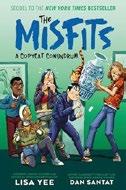
A squad of young crime fighters sniff out art thieves and hidden treasure in this second round of high-tech, pastry-fueled sleuthing.
Challenges practically drop into the laps of Olive Cobin Zang and her four companion Misfits, even as a string of ominous messages a worried classmate receives lead to a tangle of mysteries. They involve old tales of a lost ship filled with gold and valuable Chinese artifacts, oddly localized earthquakes linked to bank and other heists, and hints that treasures in a San Francisco art museum are being surreptitiously switched out for fakes. In an urgently paced plot delivered with tongue-in-cheek twists aplenty, Yee sends her eager investigators scurrying into crime scenes and hidden rooms, with occasional quick breaks to plan or compare notes over treats from the Butter Bakery. A climactic Mission: Impossible–style museum break-in requires all of Olive’s unusual acrobatics skills. The classic denouement she delivers dressed (appropriately) as Miss Marple leads to a brief high-speed chase as a culprit tries to escape in an Oscar Mayer Wienermobile. Readers are treated to a whirl of revelations and golden discoveries, and throughout they’ll be swept along, both by the breathlessly paced developments and by the individually awkward but collectively unstoppable team leading the racially diverse cast. Final art not seen. Nonstop action, delivered with a wink. (agent profiles, gadget profiles) (Adventure. 8-12)

Miller, Pat | Illus. by Jerry Jordan | Viking (32 pp.) | $18.99 Jan. 7, 2025 | 9780593524909

For more by Lisa Yee, visit Kirkus online.
A young reader grows to be a fearless activist and changemaking politician. As a child in Alabama, John Lewis wasn’t permitted to have a library card: “Most libraries were for white people. And he was Black.” Recognizing injustice, he wrote the library a letter, which went unanswered. That didn’t stop John from spending the rest of his life fighting for racial equity. Years later, John and his friends sat at lunch counters and in bus seats reserved for white customers and stood in the sun for hours in voter registration lines. Again and again, they were denied access. Even when faced with anger and violence, they marched for their rights until the laws began to slowly change. John never stopped reading, learning, and fighting, long after he had finally received his library card. Framed by its subject’s love of books and libraries, this biography celebrates Lewis’ determination and situates him within the Civil Rights Movement in language accessible to the picture-book set. Detailed backmatter (including an author’s note) touches on the March on Washington and Bloody Sunday, adding necessary historical depth for older readers, caregivers, and teachers. Rough-edged oil paintings lend a folk-art feel to the story and bring certain striking details into focus, such as the purposeful expressions of the marchers and the ire of the bystanders.
A captivating, bookish tribute to an unstoppable upstander that will empower the youngest activists. (timeline, further reading) (Picture-book biography. 4-7)

FOR TOO LONG, the Indigenous presence in school curricula has largely been relegated to units on history, with reading assignments that prioritize awardwinning historical fiction by white authors. The books often contain unexamined biases and outright errors. But we’re now witnessing a significant shift in publishing that has real momentum and is evident in these 2024 titles, all of them out in time for Native American Heritage Month.
Sheine Lende: A Prequel to Elatsoe by Darcie Little Badger, illustrated by Rovina Cai (Levine Querido, April 16): In this genre-blending, standalone companion novel, Little Badger (Lipan

Apache) immerses readers in the world of award-winning bestseller Elatsoe Seventeen-year-old Shane is a wilderness tracker who’s able to summon the spirits of dead creatures; ghost dogs help Shane and her mother with their work. This wildly imaginative celebration of resilience is steeped in Lipan tales and features evocative art.
Looking for Smoke by K.A. Cobell (Heartdrum, June 4): Debut author Cobell, an enrolled member of the Blackfeet Nation, weaves the horrifying topic of Missing and Murdered Indigenous Women, Girls, and TwoSpirit Relatives into a twisty, page-turning thriller that emphasizes the tremendous emotional toll of these

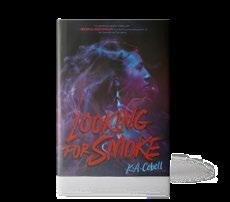
crimes. As classmates go missing from the reservation, the four teens at the heart of the story must clear their names of suspicion.
Indiginerds: Tales From Modern Indigenous Life edited by Alina Pete (Iron Circus Comics, Aug. 27): This colorful, inviting graphic memoir anthology shatters narrow ideas about what a nerd (or a Native person) looks like. The diverse Indigenous contributors celebrate the ways that nerd culture builds community. As editor Pete (Cree) says in their introduction, “We’re still here. We’re big nerds. And it’s time for the world to learn about how awesome we are!”
Little Moons by Jen Storm, illustrated by Ryan Howe, colors by Alice RL (HighWater Press, Sept. 3): In her author’s note, which describes a personal connection to the gut-wrenching events in this graphic novel, Storm (Ojibwe) writes, “Grief is messy and complex; it’s love with nowhere to go.”


Howe’s expressive line art and the jewel-toned palette of colorist RL (Ojibwe) perfectly complement Storm’s affecting exploration of a family’s trauma when a teen girl goes missing.
The Rez Doctor by Gitz Crazyboy, illustrated by Veronika Barinova, colors by Azby Whitecalf (HighWater Press, Sept. 3): In this accessible, uplifting graphic novel, Crazyboy, who is Siksikaitsitapi (Blackfoot) and Dene, tells the story of a young man whose journey exemplifies the importance of having role models and a grounding in one’s identity. Ryan, who grew up on the rez, is acutely aware of the community’s medical care needs, but his path to becoming a doctor is filled with obstacles.
The Unfinished by Cheryl Isaacs (Levine Querido, Sept. 3): Kanyen’kehá:ka author Isaacs’ debut is a riveting and atmospheric horror novel about cultural dislocation. Avery, a small-town teen, is haunted by nightmares after encountering the eerie black water of a pond in a nearby forest. Speaking with Mohawk Elders and learning more about the story of the Ragged Man helps Avery figure out what’s going on when her crush goes missing.

Laura Simeon is a young readers’ editor.
TWO TEENS ARE swept into a shared dream amid the ups and downs of first love. Under the glow of the lights from an arcade game, Amber confesses to her best friend, Nico, that she wants to be more than friends. He admits that he returns her feelings, and they spend the summer before 9th grade basking in the bliss of puppy love, much to the consternation of Nico’s Filipino mother (Amber reads white). When school starts, their relationship becomes a welcome escape from the social and academic pressures of high school, especially for Amber. But as the pair
become more caught up in each other, they begin to alienate their once tightknit friend group. One night, Amber and Nico fall asleep on the sofa while watching TV and find themselves sharing a strange but beautiful dream. Their journey across fantastical landscapes feels like the perfect place to hide away forever. The longer it goes on, however, the more it becomes clear that even a dream doesn’t offer a safe escape from the problems they’ve been dealing with in the outside world. How will things change for Amber and Nico when—and if—they wake up? The story
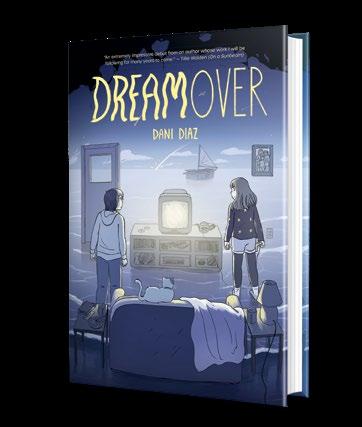
takes place in 2008, but the cheekily portrayed, geographically ambiguous suburban setting lends a sense of timelessness. Expressive full-color illustrations in soft tones
make for an uncommonly immersive read.
A breathtakingly drawn debut weaving together humor, sweetness, angst, and a bit of magic. (Graphic fantasy. 12-18)
By Maria van Lieshout

MYSTERY ROYALE
Calella, Christine | Page Street (384 pp.)
$18.99 | Jan. 14, 2025 | 9798890039675

Cinderella is a liar. In this fairy-tale retelling, Prince Bayard D’Harcourt of Holbein arrives at the door of Ellain DeBrun, places the glass slipper on her foot, and whisks her away from her cruel stepfamily. Ell doesn’t confess that she didn’t attend the ball and has never met the prince. Their engagement is announced—she’s to wed Bayard in just three days. At court, lonely Ell makes friends for the first time since her father’s death, but she faces new dangers. Duke Maxim D’Arcy, Bayard’s best friend, knows about Ell’s lie, but he can’t expose her without risking his own secrets. The ill-tempered King Alaric is waging war on Fairyland, burdening the peasants with its costs. He also despises his son, regarding him as cowardly and spineless and speaking scornfully about Bayard’s inability to recognize people’s faces (his prosopagnosia isn’t named as such in the book). Meanwhile, Ell’s stepfamily still seeks to destroy her, and Maxim quietly plots to prevent the marriage. With war threatening Holbein and her position precarious, Ell must save herself and the kingdom. In this version of the story, Ell is spirited and has a strong sense of self-preservation. Her abusive past makes her deeply empathetic toward the commoners. Quick-thinking, kind, and resilient, she will earn readers’ affection as she carves out her own path for survival, offering “Cinderella” a much-needed 21st-century update. Main characters present white.
A clever and spirited twist on a classic tale. (note to readers) (Fiction. 13-18)
Cavalancia, Kaitlyn | Disney-Hyperion (400 pp.)
$18.99 | Jan. 7, 2025 | 9781368099080

A contentious group enters a high-stakes competition for a magical inheritance in Cavalancia’s debut. Before 16-yearold Mullory Prudence’s mother burned their house down, leaving Mullory and Gran alone and destitute in Punxsutawney, Pennsylvania, she gave her daughter a warning: “Run if the strange finds you.” Mullory has tried to do just that, but she’s unable to ignore a barrage of letters from mysterious recluse Xavier Stoutmire. She agrees to compete for a sizable inheritance of $2.5 billion—and “the entirety of his magic.” The other young competitors include five of Xavier’s great-nieces and great-nephews, and Mateo Maldonado, who, like Mullory, isn’t a family member. They’re all brought together at Stoutmire Estate in the Hamptons, where the will and conditions are read. Having already been warned of his own murder by Cousin Cecilia, Xavier has decreed that his lucky heir will be determined through a game of Mystery Royale, in which participants must solve the crime. Over the course of nine days, the contestants attend five parties during which they seek the clues that will help them win before the time is up. The most delicious intrigue, however, is uncovering the deep-seated emotional baggage that lies behind the individual competitors’
drive to succeed. A surprising and somewhat open-ended conclusion sets the story up nicely for a potential sequel. Main characters are cued white. An intriguing, surprise-filled journey of family conflict, competition, and secrets. (family tree) (Mystery. 13-18)
Chima, Cinda Williams | Harper/ HarperCollins (544 pp.) | $19.99
Oct. 22, 2024 | 9780063018730
Series: The Runestone Saga, 2
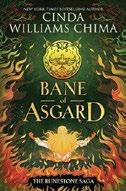
The second book in the Runestone Saga further explores the forces of greed and ambition. Blond, blue-eyed Eiric, imprisoned in magical New Jotunheim for killing its council of elders, finds an ally in copper-skinned Reginn, who has “hair like spun gold and copper.” She’s now counselor to ambitious, powerful spinner Tyra, the mother of Liv, Eiric’s half sister. Tyra wants to wage war on Asgard, the land that Eiric comes from, and she convinces Liv (who as Heidin has been elevated to the status of a god) to build an army. With Reginn’s help, Eiric escapes and sails back to Asgard, both to warn Rikhard, the jarl, and to keep a bargain he made with him. In Asgard, he finds that he’s actually been gone for about a decade, although he only spent six months in New Jotunheim. While he was away, Rikhard has become king, and Asgard seems more prosperous under his rule. Meanwhile, as Reginn calls up an army of the dead to fight against Asgard, she’s forced to choose between Eiric and her queen. The chapters in this densely plotted story, which contains betrayal, violence, Norse mythology, and magical beings galore, as well as a healthy dose of romance, largely alternate between Eiric’s and Reginn’s points of view. As the plot lines unspool, nothing is as it appears, and readers will be kept guessing until the very end. Suspenseful, deeply drawn, and action-packed. (map) (Fantasy. 13-18)
Coccia, Paul | Zando Young Readers (320 pp.)
$19.99 | Jan. 28, 2025 | 9781638931492
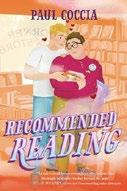
Bobby Ashton has a plan for the “perfect summer before college.” Too bad it’s already ended up in the drink—literally.
Bobby’s grand gesture—to profess his undying love to an older co-worker— results in a shattered bookstore window and his ending up soaked in the campus fountain. He loses his summer job, and his crush rejects him! So that he can at least keep his scholarship, his semifamous and kind-of-retired sculptor mom gets roped into repurposing the broken glass into a statue that will be donated to the college. Meanwhile, Bobby finds another job at his Uncle Andy’s downtown used bookstore, which is in serious need of a facelift. Bobby thrives on planning and designing; he can take on the challenge of sprucing up the shop, especially as more customers come in for an always spot-on recommendation from the new bookseller—like new pansexual guy in town Luke, who peruses the romance section even though he claims “true love” is a flawed concept. Maybe Bobby’s summer can be salvaged, just like the broken glass? This fun read is ideal for romantics, pragmatists, book lovers, and underdogs alike. The appealing characters’ clever, sometimes snarky dialogue supplies readers with plenty of laughs. Bobby describes himself as “extra,” but he just wants to be appreciated for who he is: plus-size and gay. Bobby and Luke present white. 10/10 would recommend! (Romance. 14-18)
Corson, Carli J. | Harper/ HarperCollins (320 pp.) | $19.99 Jan. 28, 2025 | 9780063370869

A hockey player falls for a figure skater when they unexpectedly become skating partners.
Charlie Porter is a high school junior and star player on her
school’s coed hockey team in Winthrop, Vermont. After starting a fight with a misogynistic bully from a rival team, Charlie loses her athletic scholarship and is suspended from her private school for six months, putting her chances of impressing college scouts in jeopardy. She finds herself not only a public school student, but also the stand-in partner for prissy pairs figure skater Alexa Goldstein, whose partner was injured in the melee Charlie caused. This lighthearted teen romance hits in all the right ways; it’s well plotted and well written, is easy and fun to read, and will make readers squeal over Charlie and Alexa’s budding relationship right up to the triumphant ending. Genre fans may appreciate how the two— who start off at odds with one another—are thrown together in improbable yet amorous situations. Some suspension of disbelief is required (Charlie executes a flawless triple lutz only a few months after taking up figure skating), and a significant obstacle (a ban on samesex skating pairs) is hand-waved away in a single paragraph. These elements are balanced by an unusual and refreshing willingness for characters to—mostly—address issues head-on.
Ideal for romantics, pragmatists, book lovers, and underdogs.
Charlie is white, and Alexa is white and Jewish.
A treat for lovers of fluffy lesbian romance. (Romance. 13-17)
Duga, Lindsey | Christy Ottaviano Books (384 pp.) | $12.99 paper Jan. 7, 2025 | 9780316578660

After being separated from their families and each other in infancy, three heirs of Ashland—and a spare—are summoned out of isolation for a chance to claim a throne.
Emmeline, Titus, and Alaric grew up in vastly different ways, Emmeline as a wealthy Manhattanite, Titus as a posh Londoner attending Eton, and Alaric as a member of a Dublin street gang. Their similarities? Loneliness. Oh, and royal blood, which they discover when they’re summoned to Almus Terra Academy, the world’s most prestigious school, and meet the King of Ashland, who reveals their birthright. They are his grandchildren, the rightful princes and princess of Ashland, whom he sent away for their own safety. Now, he’s welcoming them back and is ready to name an heir. The catch? There’s another candidate: scholarship student Sadie Aurelia, a top scholar from Ashland whose presence helps “challenge unbridled nepotism.” Rivalry ensues as the four heirs are all driven by their own reasons to claim the crown and prove their worth. This fast-paced novel is filled with antiheroes, romance, and secrets. Each character is believable and likable, while being deeply flawed at times. Readers will swoon and ache at points, only to rage and cry at others. The blending of these emotions will ultimately keep them turning pages. The main characters read white, while the supporting cast is diverse in race and nationality. Fast, engaging, and addictive. (content note) (Fiction. 13-18)
Faizal, Hafsah | Disney Press (336 pp.)
$18.99 | Jan. 7, 2025 | 9781368078610
Series: Dark Ascension, 3

An exploration of the origins of Jafar, the iconic villain from Disney’s Aladdin , that offers readers a backstory of tragedy and moral conflict.
The story unfolds through alternating chapters from the third-person perspectives of Jafar and his younger brother, Rohan. Growing up in poverty, Jafar takes on the burden of providing for his family, often turning to theft. Despite his efforts, he bears the brunt of his father’s disdain, which only worsens after the boys’ mother’s death. Although Baba’s business eventually grows, and he and his boys enjoy a rich abundance, his abuse of Jafar continues. Jafar has an escape plan: He hopes to win a scholarship to study at the prestigious House of Wisdom in the kingdom of Maghriz. Baba’s parrot, Iago, reveals to Jafar that his father had sabotaged this ambition, leading Jafar to make a fateful decision that sets him on a dark path. As the brothers journey to Maghriz, a devastating rift develops between them. The novel’s strength lies in its portrayal of Arab culture, which avoids cliches, but it falters due to inconsistent character development and a disjointed tone that oscillates in maturity level. While the fresh perspective on Jafar’s descent into darkness is intriguing, the examination of what makes a villain remains shallow, never fully delving into the complexities of the issues of familial duty and the nature of evil that the story raises.
A tale with cultural depth that ultimately falls short in characterization. (Fantasy. 12-18)
Fears, Mina | Flatiron Books (320 pp.)
$21.99 | Jan. 28, 2025 | 9781250852946

In imperial Mali in 1359, a 16-year-old girl finds magic, danger, and love while working for a princess.
Aminata Aqit cannot wait to escape the royal palace. Ever since her older sister, Haddy, told a lie that ended Amie’s engagement, Amie has been stuck working as a chambermaid for Princess Mariama Keita, the only daughter of Emperor Suleyman. The pampered daughter of a successful Songhai salt merchant, Amie finds it difficult to adjust to the dawn-todusk work in Timbuktu. Sweet-natured Penda and outspoken Jeneba, her fellow chambermaids, provide advice and comfort as she learns the ways of the Malinke court. However, she can’t adjust to the emperor’s Trials: Any man seeking Mariama’s hand in marriage faces a challenge in the desert. Those who fail are placed in a pot of boiling water.
Disgusted and depressed, Mariama seeks to end the Trials before the 100th suitor dies. When Amie finds a magical map leading to the home of Hausakoy, god of metalworking, Mariama believes it offers a solution to her father’s brutality. Amie’s faith in family and friends is tested as she, Penda, Jeneba, and the final suitor venture into the Sahara. The oppressive imperial regime affects the lives of both Mariama and Amie, forming the foundation of their bond. Over time, Amie questions her sexuality and feelings
Will appeal to those interested in the intricacies of teen friendships.
THE DEN
for Mariama in a beautifully organic way. Strongly developed themes of betrayal and trust add depth to the vivid worldbuilding. Unfortunately, unresolved plotlines in this stand-alone work ultimately leave readers hanging. Masterful storytelling let down by a lackluster ending. (Fantasy. 13-18)
Gray, Keith | Union Square & Co. (120 pp.)
$9.99 paper | Jan. 14, 2025 | 9781454958499
Series: Everyone Can Be a Reader
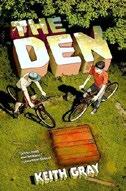
An exciting discovery exposes a friendship’s fault lines. Since his mother left and his sister moved out, 13-year-old Marshall has lived with his emotionally volatile father, who has been addicted to painkillers ever since an injury when he worked as a roadie. To avoid him, Marshall spends as much time with his best friend, Rory, as possible. While out riding bikes on the first day of summer vacation, the boys find an underground bunker in the woods beyond their village, and Marshall decides to make it into a hideaway— his very own den where he can avoid his father. But when Rory wants to invite Sam and Trev, from whom Marshall has been estranged following a fight, Marshall turns on Rory, eventually enlisting another boy, Greg, to help him drive the other three away from the den. A fight ensues—Greg’s father owns a doggie day care, giving Greg access to large quantities of fresh dog poop to use as weapons—and the boys will have to decide whether to abandon their friendship or figure out how to reconcile. Designed to be dyslexia-friendly and appealing to reluctant readers, this short novel will appeal to those interested in the challenges and intricacies of teen friendships. Readers will likely understand Marshall’s anger and desire to act
out, potentially developing empathy that will carry over to the real world. The main characters present white. A compelling antihero for reluctant readers. (Fiction. 13-18)
Kantor, Melissa | Feiwel & Friends (272 pp.) $19.99 | Jan. 14, 2025 | 9781250334046

A teenager from Texas must figure out how to get an abortion. When high school senior Grace Williams starts tutoring Jack Nelson so he can keep his grades up and stay on the baseball team, she doesn’t expect their sessions to go from helping with his biology class to kissing to having sex. But then Grace learns the unimaginable: She’s six weeks pregnant—in Texas, a state with harsh abortion restrictions. Texas legislation could prevent her from getting an abortion or result in legal consequences for herself and anyone who helps her if she travels to another state to get one. Determined not to let her unplanned pregnancy ruin her dreams of moving to New York City and attending Barnard in the fall, Grace and her closest friends, Addie and Sebastian, devise a way to get her the healthcare she needs. Grace faces multiple roadblocks, including a judgmental doctor at a pregnancy crisis center and her family, who would never agree to her choosing to get an abortion. Grace’s anger at the position she finds herself in sometimes comes across as surface level but largely feels very realistic. Her story makes for a compelling read that frankly acknowledges how and why a person might choose abortion and examines the ways that strict abortion laws can harm pregnant people. Grace and her friends are white.
A quick, readable, and relevant novel. (author’s note, interview with reproductive justice advocate Irma
Garcia and reproductive law scholar Kimberly Mutcherson) (Fiction. 14-18)
Star
Carving Shadows Into Gold
Kemmerer, Brigid | Bloomsbury (496 pp.)
$20.99 | Jan. 28, 2025 | 9781547610105
Series: Forging Silver Into Stars, 2
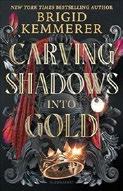
Following a royal kidnapping and amid widespread fear of magic, the tenuous alliance between Emberfall and Syhl Shallow is tested by violent attacks on both sides of the border.
In this sequel to 2022’s Forging Silver Into Stars, the three narrators are separated, and the stakes are even higher. Callyn, now a lady-in-waiting at the Crystal Palace, gradually embraces her own newly discovered abilities in secret. She reluctantly becomes the queen’s liaison to the arrogant Lord Alek, her one-time lover whose loyalty to the queen is matched only by his hatred of magic. Jax, a skilled archer and blacksmith, hoped his new job at Ironrose Castle would deepen his discreet romance with King’s Courier Tycho, but he finds himself alone and dependent on the few Emberish speakers after Tycho’s duties force his return to Syhl Shallow. Tycho, whose magic has been flaring due to past traumas, struggles to regulate his emotions—and his power—under the guidance of the scraver Nakiis, a magical winged being whose harrowing past helps explain why scravers are leaving the ice forests of Iishellasa to attack humans. Kemmerer thoughtfully structures each protagonist’s narrative arc, balancing plot-driving action with the exploration of resonant questions of loyalty, trust, and forgiveness that deftly model the often-uncomfortable process of reevaluating core beliefs when presented with new perspectives. Main characters read white; Jax walks with
crutches before he’s fitted for a prosthetic foot.
Action-packed yet intimate; sets the stage for a truly epic next installment. (maps, character list) (Fantasy. 14-18)
Lord, Emma | Wednesday Books (320 pp.)
$20.00 | Jan. 21, 2025 | 9781250904027

Two intertwined “mortal enemies” vie for a coveted college zine position. Sadie is determined to become a staff writer for the zine of her dream school, Virginia’s Maple Ride University. After working tirelessly for years, Sadie was accepted to the university, and now she’s on her way to the Newsbag interest meeting in pursuit of a staff position. But she collides with Sebastian Adams, her longtime school competitor, and the smoothie he’s holding spills all over her. This encounter also reveals unfortunate news: Seb, the Instagram star whose channel, “Adams’ Apples,” is hugely popular, has been taken off Maple Ride’s waitlist. Seb and Sadie have a long, involved history, having practically been raised together since birth by parents who are best friends. Newsbag is highly selective with a national reputation, and the co-editors inform meeting attendees that only one staff writer position is available, setting off a fierce rivalry while simultaneously showing Sadie that her feelings for Seb might be something other than competitive disdain. The college—with its quirky and hilarious student organizations, such as the Sad Bitch Book Club and the Random Acts of Chaos Club—is the perfect setting for the witty snark and blooming rivals-to-lovers romance. Readers will be drawn into the competition while rooting for a happy ending between these nemeses. Sadie and Seb (who’s bisexual) are cued white. A clever and entertaining college campus romance. (Romance. 14-18)
Lyle, Jennifer D. | Sourcebooks Fire (304 pp.) $11.99 paper | Nov. 5, 2024 | 9781728270944

On Fall Island, there’s a saying: “The snow will getcha.”
Sixteen-year-old Gracie Hutchinson doesn’t want to be stuck on Fall Island for the impending snowstorm, which is expected to be of historic proportions. Snow almost always brings the threat of danger; many have disappeared under mysterious circumstances in snowy weather. The small community in the North Atlantic, off the coast of New England, was founded by English religious pilgrim Fitzwilliam Wescott. While dutifully taking flowers to her grandmother’s grave before the snow starts to fall, Gracie encounters an acquaintance from school, Joseph Wescott. The pair stumble upon a gruesome scene in the Wescott family mausoleum: a man and three sheep, all recently murdered and bearing symbols carved into their bodies. Strange rituals are afoot on Fall Island, and the snowstorm is closing in. Can Gracie escape, or will the snow swallow her up, too? In this tense, atmospheric read, it’s never clear who can be trusted. Family secrets intertwine on the remote island, creating a web of mysteries that readers unravel alongside Gracie. Fitzwilliam looms over the happenings like a bad dream, a figure of religious fervor who remains shrouded in legend. The worldbuilding is solid, and the magical elements are darkly whimsical. The dialogue is sometimes stilted, but even the awkward lines keep the story moving. Characters are cued white. A stormy tale of blood and snow. (Horror. 14-18)

of its traumatized protagonist.
THIS IS THE YEAR
Muñoz, Gloria | Holiday House (304 pp.)
$18.99 | Jan. 7, 2025 | 9780823458363

A rising senior struggles with her life path and her twin sister’s recent death. Julieta Villarreal, 17, can’t imagine working toward building her future while the world falls apart around her. Set in a near future where the climate crisis has turned her Florida home into a dangerous and increasingly uninhabitable hellscape, the story follows Colombian American Juli as she weathers her grief, depression, and feelings of hopelessness alone. She refuses to open up to her friends or therapist and avoids answering questions from caring AP English teacher Ms. Hawthorne and from her Mami (who’s also struggling to avoid “falling into the darkness again”). Eventually, Juli considers leaving the world behind and launching herself into the once-in-a-lifetime opportunity to join the corporation StarCrest’s inaugural Cometa Mission, which will send 15 U.S. seniors into space for five years to establish a base camp on the moon. Alternating between prose and poetry, this innovative story explores the conflicted inner life of its traumatized protagonist and her journey to selfacceptance, vulnerability, and purpose. Adding to its appeal, the story also touches on many everyday aspects of young adult life, such as school, friendship, romance, preparing for life after graduation, and following your dreams. It also deftly explores complex topics such as the climate crisis, single motherhood, grief, poverty, and
predatory business practices that target vulnerable populations.
An original storytelling style and post-apocalyptic setting make this coming-of-age novel a worthy and special read. (letter to readers) (Climate fiction. 13-18)
Reed, Mackenzie | Harper/ HarperCollins (384 pp.) | $19.99 Jan. 21, 2025 | 9780063287648

A wilderness challenge with a big prize brings out bad behavior. Wilde Academy’s so elite that a dozen students compete for the title of Champion rather than mere valedictorian. Partial scholarship student Chloe Gatti needs the $600,000 prize to help her family; her younger sister has cancer and mounting medical bills. Chloe is selected along with Hayes Stratford, her ex-boyfriend, some friends she lost in the breakup, and a few cartoonishly snobbish classmates. Someone is blackmailing and undermining Chloe from the start. The trials aren’t terribly thrilling—think riddles and trivia—until the blackmailer moves on to dangerous levels of sabotage. Chloe also ends up back in the orbit of handsome, privileged Hayes, seeking the truth of the trials three years prior, when his beloved older brother died in what Hayes believes wasn’t an accident. The duo, who are cued white, end up in a tentative alliance that’s ripe with unresolved romantic feelings. Chloe is economically disadvantaged and described as being taller, curvier, and heavier than the other girls (although her size goes
unremarked upon by the characters). The vagueness of the portrayal of her identity undermines the effectiveness of the representation. Other forms of diversity in the cast also lack complexity, and the characters’ motivations are generally weak. The plot relies on heavy suspension of disbelief, head-scratching logical leaps, and lapses of common sense that are sure to frustrate readers. The predictable ending leans into theatrical indulgence. An interesting premise marred by plausibility issues. (Thriller. 13-18)
Rochon, Farrah | Disney Press (352 pp.)
$18.99 | Jan. 7, 2025 | 9781368098700

Five sisters learn they have hidden powers that might help them save their mother from danger.
Mnemosyne is the Goddess of Memory, a Titan who was granted asylum on Mount Olympus by Zeus after the Titan war. But Mnemosyne, who has bronze skin and black hair, eventually fled Olympus, wiping the gods’ memories so she could start her own family in safety. She created five daughters: gifted storyteller and leader Calliope, inquisitive history buff Clio, volatile empath Melpomene, magical dancer Terpsichore, and gifted comedian Thalia. Mnemosyne successfully keeps their existence hidden from the gods until the girls stage a public birthday performance for her. As Mnemosyne hurriedly explains the danger the girls are in, she’s kidnapped by Pain and Panic, two minions of Hades, God of the Underworld. The sisters must now put aside their differences to use their unique strengths and their mother’s special journal to ask the very gods their mother fears for help. A nice exploration of lesser-known female figures from Greek mythology, this tale features a fine balance of self-actualization and connections among the central characters, each of whom has a distinct temperament and narrative. The
dramatis personae and pronunciation key will also make it easier for readers to distinguish the different cast members. A thrilling quest through real and metaphorical mazes, obstacles, and trials. (Fantasy. 13-17)
Scheel, David | Illus. by Laurel “Yoyo”
Scheel | Norton Young Readers (224 pp.)
$18.99 | Jan. 14, 2025 | 9781324019992
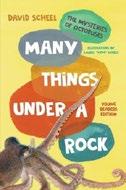
Follow an octopus scientist around the world to learn about the fascinating lives of these enigmatic cephalopods. Drawing on 25 years’ experience as a marine biologist, David Scheel explores the natural history and behavior of octopuses to better understand their motivations and priorities. This work delves into his efforts to locate, track, and study octopuses, offering plenty of firsthand observations and information about approximately 20 species. This densely packed text will be most inviting to readers with a solid science background and an interest in marine science. Despite being slimmer than the original adult edition, this volume is still jampacked with detailed anecdotes, references to relevant research, and thoughtful insights. Many chapters conclude by posing questions that scientists have yet to answer. The narrative also includes discussion of the detrimental effects of the climate crisis on octopus species. Much of Scheel’s work has been concentrated in Alaska, and throughout the book he credits and expresses thanks to the Indigenous people who shared knowledge and experience that aided his work as a researcher and writer. Detailed black-and-white line drawings by the author’s daughter include a few anatomically specific illustrations and convey the beauty of octopuses as well as their behavior. Additional visual aids—charts and photos of species and
habitats—would have provided a richer reading experience for readers. A deep dive with appeal for those who are passionate about science and marine animals. (map, glossary, source notes, index) (Nonfiction. 12-18)
Sedgwick, Marcus | Union Square & Co. (120 pp.) | $8.99 paper | Jan. 14, 2025 9781454958574 | Series: Everyone Can Be a Reader

An atmospheric, supernatural story of family ties and familial trials set in the north of England. Though his family’s visit to the Yorkshire Dales revolves around spreading his recently deceased grandmother’s ashes, James finds himself caught up in the mysteries of Crackpot, his father’s ancestral village, whose name in Norse means “cave of the ravens.” Tired of lagging behind his parents and engaging in unending conflict with his older brother, Robbie, James sets off on his own, chasing a ghostly wild child along the paths. Although his mother has seen ghosts, the experience is new for James. Later, James is haunted by the strange girl; he dreams of her and obsesses over the question she asked him: “Do you know who you are?” He feels ever more curious to discover who she is and what she knows about the place that’s crucial to his father’s ancestry. As James’ father deals with angry outbursts, his mother strains to find the inspiration to write again, a calling that once defined her. Centered on a family that reads white, this exploration of family history and financial challenges connects past and present socio-economic matters in an intriguing tale of class struggle that’s interwoven with what lies beyond the grave. A strong sense of place anchors the imagery, unraveling a timeless ghost story that will appeal to budding fans of otherworldly tales.
Gently spooky suspense grounded in social themes that will engage reluctant readers. (Paranormal. 12-18)
Sedgwick, Marcus | Union Square & Co. (136 pp.) | $9.99 paper | Jan. 14, 2025
9781454958628 | Series: Everyone Can Be a Reader

A friend’s disappearance impels a teen to contemplate the state of the world.
It’s the beginning of the summer holiday in Scotland, the pandemic lockdown has just lifted, and 15-year-old Cassie Cotton has disappeared. As Fitz tries to recall any information that might be helpful to the police in their search, he thinks back over the conversations and events that led up to Cassie’s disappearance. She and Fitz have been bandmates for just over a year and have taken to talking or texting about the state of the world. Over the past six weeks, Cassie has been aware of a humming that nobody else can hear, and she’s convinced that the Earth is breathing. Classmates ridicule her. Meanwhile, Cassie’s father, a climate change activist, worries that humans have passed the point of no return. Fitz is an introspective narrator, sprinkling in observations about atmospheric phenomena that mirror the unrest and anger of the world. As his stream-ofconsciousness narration jumps between past and present, readers get a fuller picture of the events leading to Cassie’s disappearance—and Fitz realizes that he may hold the key to finding her. The main characters in this evocative story are cued white. The dyslexia-friendly layout, writing style, and short page count ensure broad appeal. An accessible and compelling story about isolation, climate anxiety, anger—and hope. (Fiction. 12-18)
Torres, Vanessa L. | Knopf (352 pp.)
$19.99 | Jan. 28, 2025 | 9780593426173

A young woman with a mythic duty struggles to let go in the wake of her girlfriend’s death.
Estrella
“Noche” Villanueva is a Lechuza: She’s a 17-yearold girl by day and a legendary black owl at night, responsible for escorting the souls of the dead to their next destination. Her girlfriend has been dead for two months, but Noche can’t bring herself to say goodbye, and instead cherishes the stolen hours she spends with Dante’s spirit on the icy banks of Lake Superior. As the rest of her Duluth, Minnesota, community mourns Dante’s loss, Noche’s extraordinary double life puts distance between her and her best friend, Julien. Meanwhile, a handsome new lab partner, Jax, brings confusion and warmth in equal measure as Noche finds herself drawn to a new flame despite her lingering grief. Torres tells the story with finesse, granting Noche both fragile youth and sturdy wisdom as she learns to navigate death. Noche’s Mexican heritage and her sometimes isolating experiences as the granddaughter of immigrants are depicted with love and nuance. The story never underestimates the tenuousness of life and love but rather celebrates and honors these aspects of Noche’s path to self-discovery. Julien is Sioux, Dante is Latine, and Jax is cued as Asian.
A lyrical, tender, and insightful exploration of death, love, and the Mexican American experience. (Fantasy. 14-18)
Kirkus Star
Trevaldwyn, Harry | Wednesday Books (336 pp.) | $14.00 paper Jan. 28, 2025 | 9781250366788

A gay, British 16-year-old decides that this school year, it’s time to get a boyfriend. Patrick Simmons has rebranded himself as Patch (“more characterful and mysterious”), taken wisdom from his single mum’s self-help books, and is determined to have a boyfriend before Prom (which is really just an after-party for the Drama Club), all with his incredibly supportive best friend, Jean, by his side. Drama Club is the perfect place to find potential prospects, and although Patch’s mood is soured at first by the arrival of his former-friendturned-nemesis, Tessa, it perks back up when two new boys, Sam and Peter, join as well. Both seem like good options to Patch at first, but as the club’s production of Sweeney Todd gets underway, Patch’s usual exuberant confidence is shaken by shifting friendships and crushes. Patch’s first-person narration is laugh-out-loud funny, and although he can be self-involved, his big heart shines through, making him an endearing and engaging lead as he learns and grows. The story succeeds as a sweet romance while also subverting expectations and giving equal weight to the importance of friendships in a thoughtful and moving way. This tale is distinctly and charmingly British, yet it’s an ode to queer theater kids everywhere— particularly those with big personalities. Main characters present white.
A winning debut: the perfect blend of hilarious and heartfelt. (Romance. 12-18)

Valentine, Stefany | Penguin Workshop (304 pp.) | $19.99
Jan. 14, 2025 | 9780593750964

A 17-year-old juggles a search for her origins with an unexpected role as a dating coach.
Biracial (white and Taiwanese American) Catie Carlson yearns to find her biological mother, Ya-Fang. They lost touch after her parents divorced when she was 5; Catie’s late father brought her to America from Taiwan, and now she lives with her white adoptive mom, Andrea, and stepsister, Mavis, also 17. Since Andrea’s lost her job, they’re leaving San Diego for Salt Lake City to stay with Joanna, Andrea’s sister who’s a devout member of the Church of Jesus Christ of Latter-day Saints. Their more progressive family, especially pansexual Mavis, dreads the change. Catie finds a summer job at a salon and meets co-worker Toby Yoon-Hanson, 19, who’s Korean and Blackanese. They strike a deal: Toby, who just spent a year abroad at the University of Taipei, will teach Catie Mandarin if she’ll teach him how to talk to his intimidatingly perfect longtime crush, Nichole Yung. But Catie doesn’t tell him she’s never even had a boyfriend—a deception that comes to haunt her as their feelings for one another grow. Meanwhile, genealogical records at Aunt Joanna’s church provide Catie with hope of finding the answers she seeks. Valentine deftly interweaves themes about identity, trust, tolerance, trauma, and forgiveness throughout the story. An engaging plot and details of daily life provide glimpses into the diversity within LDS and adoptive family cultures. A sweet, thoughtfully developed romance with some unusual twists and layers. (author’s note) (Romance. 12-18)
van Lieshout, Maria | First Second (256 pp.) $25.99 | $17.99 paper | Jan. 21, 2025 9781250869814 | 9781250869821 paper

A Dutch girl must unravel a complicated family history to save her beloved grandmother. In Dutch author and illustrator van Lieshout’s debut graphic novel, Oma, Annick’s grandmother, has leukemia, and doctors have said that her best chance of survival is a bone marrow transplant. Family members usually offer the likeliest match, but the search for a donor leads Oma to learn that she’s not biologically related to her siblings. Hoping to discover the identities of Oma’s biological parents—and a viable donor— Annick studies the only surviving clues from Oma’s World War II childhood: a set of prints of Amsterdam buildings. Along her life-changing journey, Annick meets Koenji, a handsome street artist and poet whose mother is from Japan, and the pair piece together the significance of the buildings in the prints, following a trail that leads them through Amsterdam and on to the U.S. Told from the perspective of an omniscient blackbird through dual timelines that shift between 2011 and the mid-1940s, this skillfully researched tale is historically and emotionally resonant, reinforcing the importance of art as “a radical act of freedom and resistance.”
Van Lieshout juxtaposes her clean, striking two-toned illustrations against stark black-and-white photographs, adding dramatic splashes of color. The backmatter cites the real people and places that served as inspiration.
Accessible, haunting, and immaculately researched, this work will claim its place beside graphic novel classics such as Art
Spiegelman’s Maus and Marjane Satrapi’s Persepolis. Powerful, moving, and utterly unforgettable. (photo credits, bibliography) (Graphic fiction. 12-adult)
Witherspoon, Sujin | Union Square & Co. (360 pp.) | $19.99
Jan. 14, 2025 | 9781454954026

A Seattle teen fake dates his way into saving a family business. Seventeen-yearold River Langston-Lee opens by informing readers that he’s sure he’s about to embark on the “Worst Day of My Life So Far”…but as he later ruefully reflects, it in fact turns out to be the “Worst Day of My Life Ever.” After suddenly dumping his girlfriend, Cecelia, the night before, he walks out of his SATs and heads to his part-time job at Cafe Gong, his family’s coffee shop “turned corporate caffeine hell.” Making things even more awkward, he and Cecelia are co-managers at the newest location, where most of River’s co-workers already hate him (it’s mutual). The day becomes even more disastrous when River pours a bag of coffee beans down the shirt of a rude customer, a green-haired goth girl, then impulsively quits. His best friend helps him find a new job at Bingsu for Two, a struggling Korean cafe where he meets a new co-worker, owner’s daughter Sarang Cho, aka Coffee Bean Girl. After River accidentally catapults Bingsu for Two into viral video fame, he and Sarang realize that fake dating for social media could save her family’s business—if they don’t strangle each other first. Unsurprisingly, River’s family and Cecelia aren’t happy about these developments. The strong narrative voice and amusing banter shine in this deeply heartwarming, laugh-out-loud rom-com that’s equal parts coming-of-age story. River is Korean American and white; Sarang is Korean American. Entertaining and thoroughly enjoyable. (Romance. 14-18)




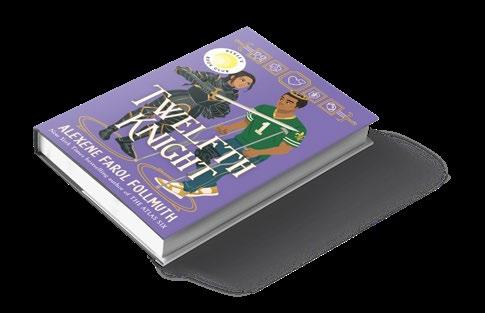
Alexene Farol
Kristopher Mielke


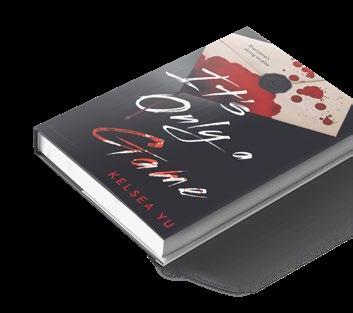



HORSES ARE awe-inspiring animals in real life, so it’s no surprise that they’ve inspired plenty of fiction. They’re a mainstay of children’s literature (Anna Sewell’s Black Beauty, Walter Farley’s The Black Stallion) and westerns, of course, but they also appear in a great many fantasy novels; J.R.R. Tolkien’s classic Lord of the Rings trilogy, for instance, notably introduces the “very great” steed Shadowfax: “Does he not shine like silver,” asks the wizard Gandalf, “and run as smoothly as a swift stream?” Horses aren’t uncommon in mysteries, either—thanks, in part, to the popularity of the late Dick Francis’ bestselling racetrack whodunits. Here are some equestrian editions from the past few

years, all recommended by Kirkus Indie:
Sarah V. Barnes’ 2022 historical series starter, She Who Rides Horses , is set in 4000 BCE in what’s now southwestern Europe. It focuses on rebellious 14-year-old Naya, who wants to ride a wild, chestnut-colored horse she encounters near a stream; this is unusual, because in her culture, the animals are mainly used for food. She and the filly even seem to be able to read each other’s thoughts. But Naya’s father, Potis, the chief of her clan, strongly disapproves of the idea: “What would happen if hunters went after the herd and you got caught up in a stampede? Or if a wolf pack went after one of the foals and got you instead?” Later, Naya is accidentally

injured by a young nomad; the rest of the novel, our reviewer notes, “centers on Naya’s recovery and reconnection with the filly” in an “often enjoyable story of a brave girl’s journey.”
In the 2022 SF/fantasy novel Princess of Horses by Warren Gill, horses are the primary method of transportation on rural Plethlonney Island on the planet Diox, where security enforcer Jon Sevanthian is assigned by his tradingcompany employer to “Protect Trade.” However, he can’t bring along any weaponry to do so, and his horse-riding experience is limited to a long-ago ride on a merry-go-round. Nonetheless, he’s soon embedded with the Sheep People, whose wool- centered livelihood is threatened by “FightingMan Machines” from a neighbowring island; other local cultures include the


warlike Mountain People, and, yes, the Horse People. Kirkus’ review calls the book “richly detailed,” adding that the author “deftly offers fantasy readers a detailed look into animal husbandry against a backdrop of political intrigue.”
Robin Somers’ 2024 mystery-series launcher
Eleven Stolen Horses follows California crime reporter Eleanor Wooley of the Gold Strike Tribune as she investigates three different stories: the murder of thief and blackmailer Ruben Beaumont; the disappearance of her own best friend, Rette Kenny, who may be lost in the Sierra Nevada mountains; and the theft of 11 horses: “Devastated doesn’t begin to describe” how the horses’ owner feels. As the journalist digs into the three cases, it becomes apparent that they may all be intertwined, and that the animals may be victims of an illicit moneymaking scheme. Kirkus’ reviewer calls Eleanor a worthy hero for this twisty tale, due to her “dedication to justice—not just for her friend, but for anyone who has been wronged (including the majestic horses that have been stolen).”
David Rapp is the senior Indie editor.
A cast of scrappy characters indulges in criminal, political, and romantic antics in Webster’s mystery novel.
From the sardonic opening line (“Clem Dudas learned the hard way that any of God’s glorious days can explode into a shit storm”) to the heartwarming conclusion, the pace of this irreverent novel never slows down. Clem is about to lead his snake-handling fundamentalist Christian group’s revival meeting, but his wife Arlene has disappeared, along with a male parishioner and— worst of all—his two favorite rattlers, Maynard and Dobie. Meanwhile, Bud Randolph is returning from his sister’s wedding to Los Angeles, where he works with his best friend, Stan, and Stan’s fiance, Mel, in a small private
investigation firm. (Bud and Stan’s detecting prowess and conflicting political views were first depicted in Webster’s 2022 novel, American Nonsensical .) Elsewhere, in a small town in Russia, a woman named Sveta hates Putin and yearns for a better life, and somewhere in the United States, an unnamed man is trapped in the trunk of a car with a couple of poisonous snakes. Between his sister’s joy, his partners’ lovey-dovey routine, and the 2020 presidential election, Bud feels angry and lonely. These seemingly unrelated threads begin to come together when Bud responds to a magazine ad headlined “BEAUTIFUL RUSSIAN WOMEN
WANT TO MEET YOU,” Clem hires the firm to locate his beloved Maynard and Dobie, and a seemingly
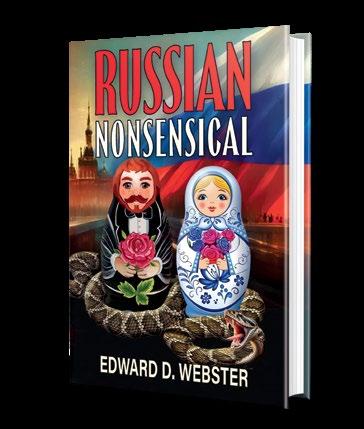
Webster, Edward D. | Casa de Los Suenos Publishing | 340 pp. | $24.95
$16.95 paper | Aug. 15, 2024
9780997032093 | 9780997032079 paper
simple surveillance job unexpectedly lands Stan in hot water with the feds. Toss in a generous helping of domestic and international political shenanigans and the suspense ratchets up even more. Webster keeps the story lively by bouncing around the distinct points of view of Clem, Bud, Stan, Mel, and Sveta (plus, in a couple of chapters, the man in the
trunk). Seeing each of the characters chase their dreams from both their own and each other’s perspectives rounds out their warm, humorous, and plucky personalities. The intertwining threads of their wild personal and professional adventures add up to madcap fun.
A detective story that’s quirky, snarky, romantic, and entertaining.
Barker, Ellen | She Writes Press (256 pp.)
$18.99 paper | Feb. 18, 2025 | 9781647428402
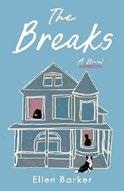
In Barker’s novel, a woman supports a recently released prisoner as the latter transitions back into the free world after five years behind bars. Marianne lives alone in the Kansas City house where she grew up. She returned to her old neighborhood two years ago and found her old neighborhood downtrodden and crime-ridden. Overall, it seems like she’s living a life that’s full of misfortune. She goes on a date with a nice-guy local cop, Carl, but accidentally breaks her arm when she’s inadvertently knocked off her barstool. She spends most of her time alone, or with her dog, Boris, until she meets Sister Colette. The nun convinces her to help a young woman in her early 20s named Stephanie, first by picking her up upon her release from incarceration for a crime she didn’t commit. “Just live”—that’s what Sister Colette says they should do together, and as they do, they form an unexpected bond. The novel’s pacing is a bit strange, at first; for the first few chapters, readers learn a bit about Marianne, her neighborhood, and her work, but it takes quite a bit of time for the main plot to become apparent. Soon, though, readers learn an abundance of detail about Marianne, Stephanie, and the world in which they live. Marianne, as the narrator, effectively reveals her own quirks and how she becomes skilled at interpreting Stephanie’s habits. For example, in one scene, Marianne comes home from her office job to find Stephanie with an unfamiliar person; through nonverbal communication, she’s able to keep Stephanie safe in a situation
in which the young woman felt unable to advocate for herself. Marianne’s intense reflections make it easy for readers to understand these characters’ inner lives and speculate about what exists beyond the protagonist’s point of view. A story of growth, trust, and friendship between independent women who find strength with one another.
Barnes, Scott T. | New Myths Publishing (394 pp.) | $18.99 paper Sept. 17, 2024 | 9781939354266
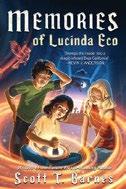
In Barnes’ debut YA novel, a Mexican teenager takes up witchcraft in an attempt to lift a curse placed on her grandmother. Lucinda Eco, 15, lives in modern-day Punta Colonet, a small town with dirt roads and no streetlights in Baja California Norte, Mexico. The people of Punta Colonet live in fear of local gang boss El Jaguar, a self-styled brujo, or witch, who practices dark magic. During an altercation between Lucinda and her grandmother and El Jaguar, the boss’s Rottweiler attacks Lucinda. Abuelita, a bruja herself, transforms into a puma and kills El Jaguar. She then falls under a magic curse that takes away her memories and starts draining her of life. The doctors assume she’s suffered a stroke, but Lucinda knows better. Teaming up with her fashion-conscious best friend, Eva Navarro, and their classmate Mateo Morales (El Jaguar’s abused son), the teenager gains access to another realm from which they can enter Abuelita’s fading memories. Back in 1967, Abuelita
was a teen herself—17-year-old Herminia—working as a maid in Santa Rosalía, Baja California Sur. Bored with her regular job, she takes a one-off commission guiding American tourists to see Cochimí cave paintings in the nearby mountains. Here she encounters Don Esteban Ríos, an unpleasant shaman who instructs her on the three types of “allies” (animal spiritual guardians) would-be brujos may bond with to regain power stripped from humanity ages ago. Herminia also meets, and begins a tumultuous courtship with, Don Esteban’s moody apprentice, Faustino Arce, a revolutionary. When this relationship sours, Herminia puts her powers to good use in a clinic for abused women and abandoned children, one of whom is the young El Jaguar. Can Herminia find the witch who’s been experimenting on local children? Can Lucinda uncover who cursed her Abuelita?
Barnes alternates chapters between Lucinda’s present-day perspective and Abuelita Herminia’s POV in the 1960s. The plot threads wind through an overarching mystery, which itself is artfully revealed. These dual narratives deliver plenty of revelations, not only in terms of plot twists or character development, but also through unexpected slants of perspective—such as when a chapter about Abuelita is interrupted by the sudden arrival of Lucinda, Eva, and Mateo. Barnes’ polished prose engages throughout, shading its minor characters and capably portraying Lucinda’s and Herminia’s two distinct teen personalities, as well as the familial culture of Mexico and the disquieting spiritual magic of brujería. Lucinda’s home life feels very natural (at odds with her relatives, though always respectful of them), as does Herminia’s coming-ofage in a Mexico influenced by both U.S. hippie culture and exploitative business interests. From the moment Herminia encounters lizards with their mouths and eyes sewn shut, the Latin American–flavored magic makes its presence felt. The result is an ominous, dreamy tale that grabs readers and pulls them into the multidecade story. The denouement, perhaps inevitably, does a slight injustice to the buildup, but
readers will nonetheless happily immerse themselves in the journey. A resonant and unsettling fantasy steeped in small-town Mexican culture.
Bochiccio, Paul L. | Self (298 pp.)
$28.00 | $20.00 paper | Nov. 14, 2022 9781958518748 | 9798473288100 paper

Bochicchio’s memoir chronicles the life of an American priest. The author was born in New York City in 1945. From an early age, he knew that he wanted to become a Catholic priest. Nearly 50 years after his ordainment, he reflects here on his life in the church. The majority of his career has been spent fulfilling different roles in northern New Jersey towns like Hoboken, Newark, and Montclair. Each place came with its own challenges and rewards. From guiding wayward city youth to working with immigrant communities (particularly Italian ones), over the years he taught, ministered, and listened to parishioners. This work addresses times of personal doubt: As he explains of one period early in his career, “I would stand at the altar with the host in my hands, saying, ‘This is My Body,’ and think the unthinkable—‘Is it?’” The book features personal photographs as well as vignettes and essays. (A piece entitled Scootch & Dulciniea offers a consideration of what the author has learned from his pets about our relationship with God.) The reminiscence also includes memories of people the author has come across over the years—this material could prove dull for the average reader. Scores of obscure individuals receive mention; for instance, Andrew Kaczynski, the “prime mover” behind an annual Christmas concert, or Patty Little, “who has such a wonderful gift in terms of decorating.” For anyone who does not know these people, these are not particularly thrilling statements. Nevertheless, the memoir has much to offer—Bochicchio
provides a look into the real life of a priest and details specific situations the author has encountered in that role. One compelling moment concerns tensions in 1960s Newark; the author helped to defuse a potential riot and wound up with an unexpected invitation to dinner. Such moments shed light on troubles of the past while holding out hope for the future. While not everything here will thrill the masses, the book provides candid insights into a holy calling.
Bridges, Sean | The Wild Rose Press (262 pp.) $18.99 paper | Nov. 20, 2024 | 9781509258444

A bad morning turns fatal when a car crash kills a congressional candidate’s wife in Bridges’ thriller. Daniel Morrison is a man at rock bottom dealing with a terrible job, divorce, and drug addiction. He’s late for work after another fight with his soonto-be ex-wife Judy when he gets a call from his bully of a boss. The pressure is too much—he takes a pill while speeding down the road and crashes into a car driven by Claudia Grant. She is also speeding, talking on the phone with her lover; her marriage to congressional candidate Hayden Grant has hit a dead end. When the car crash results in her death, Hayden offers a million-dollar bounty to anyone who can find the responsible party. Daniel first makes his way to his sister Jessica and brother-in-law Ron’s house, where Ron hears of the bounty and tries to turn Daniel in. A violent and chaotic turn of events sends Daniel on the move again. Tracking him down is Detective Roya Navarro, who lives in the shadow of a scandal in which she agreed to a televised interview that ended in her slapping the reporter after he asked about her abusive ex. Now that same reporter, Gary Grey, is also on the case, dedicated to getting the story on Daniel before anyone else. Bridges uses brevity in his prose to emphasize the exhilarating events: “The passenger door is ripped
open. Daniel holds onto the frame and his foot drags in the road. Panic sticks in his throat. He blurts out one word. ‘Drive.’” Bridges’ thriller is a fast-paced, actionpacked story with a cast of memorable characters. Daniel is a complex protagonist, not entirely likable but always relatable. Detective Navarro drives the narrative forward with her intelligent decisions and grounded persona. Both characters pick up an additional person who helps them along their journeys, adding parallel narratives to the cat-andmouse chase. The ending surprises while tying up all the threads of the story in a satisfying manner.
An absorbing thriller that will keep readers guessing.
Buley, Leah & Joe Natoli | Rosenfeld Media (320 pp.) | $52.24 paper Aug. 27, 2024 | 9781959029953

Buley and Natoli offer guidelines for better design in this nonfiction book. The authors here detail the world of user experience and design and break down the methods and practices that can be tightened or tweaked to improve UX for everybody involved, even if the actual UX team is very small. They present their insights in a visually varied way: The book is full of illustrations, insets, color-coded sections, and lists of bullet points. Buley and Natoli acknowledge how significantly the UX field has changed in the last two decades, from the software-design emphasis of years past to the mobile and app orientation of the present moment. “Today, we understand that a digital product is almost always a full, multichannel experience,” they write, “and that our job is to give people a seamless product experience, even as they jump from desktop to laptop to mobile to tablet and back again.” Good products,
they posit, have the ultimate UX goal of being so smoothly integrated into the users’ lives that they become invisible. It’s not about “tapping the Like icon” but simply expressing support; it’s also not about “formatting a Google document” but simply writing. “If you’re a product maker,” the authors assert, “this is nirvana.” Buley and Natoli write with this tone of bright enthusiasm throughout their text, which often broadens out to address overall customer service (they refer to customers as “the core of user experience”) or even general personal interactions, as when they break down ways to improve the meetings that even the most focused UX specialists can’t avoid. The authors suggest saying “we” instead of “I,” for instance, and sharing the “why” behind questions (“this defuses defensiveness by communicating that your curiosity is not a challenge or contradiction; it’s an honest desire to know more”). UX experts—and virtually everybody else—will find all of this invigorating food for thought.
A lively and readable overview of the philosophy behind making things for people.
Compton, Kasey | BenBella Books (272 pp.) | $14.61 paper March 12, 2024 | 9781637744444

Compton encourages readers to seek joy in this nonfiction work that is part guide, part autobiography. In July 2021, the author found
herself celebrating the attainment of a goal she had always wanted to reach: becoming a published author. Yet, instead of pride, Compton felt completely numb and was overcome by “the most terrifying realization I’ve ever had”: Nothing external would ever satisfy her. What follows is the author’s attempt to piece together why she struggles to find fulfillment and how to truly feel self-love. In five sections of the book, Compton charts this process, interspersing her own story and anecdotes with letters to the reader, whom she addresses as “Seeker.” The author, who runs her own mental health practice, is refreshingly honest about her own reluctance to attend therapy and how finally succumbing helped her to understand herself better. The reader follows Compton through two divorces and the blossoming of a new relationship with her partner Kelsey. Particularly endearing passages see the author sifting through memories, like her father teaching the 9-year-old Compton to drive, or describing times spent with her grandparents, who were strong figures in her childhood. The book shines brightest in Compton’s relatable voice and belief in the reader she envisions herself speaking to. Compared to similar books, the author does not ask too much of her fellow seekers, dedicating only a few chapters to actively asking the reader to self-reflect. In some ways, this makes the self-love work the author advocates feel more approachable and attainable: Compton positions herself as a friend, and her counsel feels authentic and helpful, a soft approach to what can be challenging mental work for many people in similar situations. A heartfelt and encouraging guide for readers looking to recover their true selves.
A heartfelt and encouraging guide for readers looking to recover their true selves.
Copp, Melinda | Tiny Piano Press (280 pp.)
$16.99 paper | Oct. 1, 2024 | 9781964546001
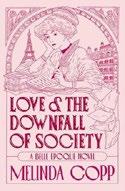
The class system impedes love in Copp’s historical romance, set in Paris during the Belle Époque era.
Charlotte Devereaux, the daughter of bookshop owners, leaves the small French town of Vernon for Paris. Her goal is to become a writer, but after she finds initial success, publishers reject her subsequent stories. The city is exciting, but she’s unsure how she’ll pay the rent for her boardinghouse room. By contrast, Antoine de Larminet leads a life of ease; he has a valet and rides in a carriage, and his days include visits to nightclubs and parties. Copp’s descriptions of her characters’ hands illustrate their class difference: Antoine’s are “clean and neatly manicured,” while Charlotte’s are stained with ink. The two fall in love soon after they meet at a cabaret in Montmartre. Antoine doesn’t believe in old-fashioned ideas about the superiority of the aristocracy, but ever since his brothers’ untimely deaths, his parents expect him to honor and uphold their traditions by marrying within his class. Antoine thinks he’s found the perfect solution: He can wed an open-minded aristocrat and ask Charlotte to be his mistress. To his surprise, Charlotte isn’t amenable to this arrangement; she wants “the fairy tale or nothing.” Copp competently captures the trappings of this turn-of-the-century time period; Charlotte drinks champagne at a cabaret in Montmartre that features marionette shows, and she visits the Moulin Rouge, with its clowns and can-can dancers. The author’s two main characters write letters to each other that are convincingly flowery (“It seems Paris and my life achieve full color only in your company”). However, some of the story’s language and ideas feel anachronistic, as when Antoine wonders why his parents are in a hurry to marry
him off (“It wasn’t as if his biological clock was ticking”) and Charlotte’s roommate asks her, “Thinking of getting into mistressing?” Members of the aristocracy also take surprising positions, including supporting public transit and sharing profits with farmers working their land. Still, everything’s a backdrop to the romance, which does generate some real steam.
A fine tale for readers who enjoy love stories with modern sensibilities in old-fashioned settings.
Crafts, Trevor & Aaron Burakoff | Illus. by Mister Hope | Genius Cat Books (32 pp.) $18.99 | Sept. 3, 2024 | 9781962447164

An unusual apple seeks his true home in Crafts and Burakoff’s picture book. It’s easy to feel lost in a 247person family. The unnamed bespectacled narrator doesn’t fit in; he doesn’t like getting wet when its family goes swimming, and he gets motion sickness when rolling down hills. This apple’s imagination seems to stretch further than those of his cousins, so he decides to strike out on his own. The journey is not without bumps and bruises, but eventually the narrator lands in the Big Apple. He meets others with whom he has interests and dreams in common (despite having different shapes). Though the apple isn’t entirely sure of himself, he learns how to make art, guided by pear, pineapple, and even blueberry friends. At his art show in the city, the apple is surprised to see not only his new friends, but his relatives as well. This inspires the apple to return home and re-imagine his relationship to the place. This narrative cleverly turns a classic idiom on its head: “Even though I didn’t fit in, I always belonged.” Burakoff and Crafts delight in wordplay, sneaking in phrases like “reconnect with my roots.” Hope’s bright illustrations in natural tones are cute and warm, engaging in their own
visual jokes, like the “One in a Melon” sticker on the bandwagon.
A funny and thoughtful picture book for kids who are a little bit different.
Currier, Jameson | Illus. by Sean Burke Chelsea Station | Editions (148 pp.) | $16.00 paper | June 3, 2024 | 9780984470761
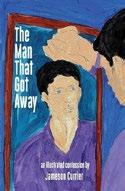
A young man comes of age in the 1970s amid the camp and glamor of Atlanta’s underground drag scene in Currier’s novella.
“This is not a story about coming out,” asserts Billy Goodman, the narrator of this story, but it is a tale of a kind of close-knit community that one doesn’t often see in fiction. It begins with the small-town, blue-collar college student protagonist transferring to Atlanta during his sophomore year to pursue the literary arts and find a sense of community. A chance experience as a chorus member in a production of the musical Hello, Dolly! introduces him to David, the show’s choreographer and lead dancer. Through him, Billy becomes part of the local musical theater and drag scenes, where he discovers a passion for performance and comes to terms with his long-buried attraction to men. Billy spends a year frequenting drag clubs, gay bars, and bathhouses, falling in love with a few select men and gaining considerable sexual experience. He befriends the Spectacular Sisters, a group of drag performers who become his chosen family and act as mentors for Billy; they bring an engaging amount of drama and conflict to the novel. As Billy basks in the glitz, glamor, and camp of his new existence, he works through his sexual awakening. However, the accidental murder of a drug dealer and mercurial lover to many in the community changes everything. Currier’s novel is framed as the posthumously published memoir of a famed playwright, and it effectively evokes aspects of ’70s literature while painting each character with complexity and care. The end of the
story goes a bit astray, as it labors under an oversize epilogue of fictional archival materials. However, readers will enjoy the tale’s vivid imagery as they immerse themselves in a refreshing take on a queer coming-of-age story. Burke’s full-color impressionistic portraits of the characters provide extra sweetness to an already decadent work.
A beautifully written, character-driven coming-of-age story that subverts cliches of queer literature.
D’artagnan | Greenleaf Book Group Press (64 pp.) | $24.99 Sept. 24, 2024 | 9798886452327

A child’s cardboard box transforms into a spaceship in this picture book by D’artagnan. Sam is an unassuming boy with brown skin, black curls, and brown eyes. He wears a red T-shirt, gray jeans, and white sneakers: that is, until he closes his eyes and magically transforms into his white space racer suit. Sam speaks directly to readers (“Hi! / How are you? / Howdy do too! / Just making sure— / you know I’m talking to you!”) and tells them the secret about his cardboard box: It’s really a spaceship. Sam’s dad sometimes asks if he can join in, but Sam thinks his dad lacks the imagination to make the spaceship fly. So, Sam takes off in the spaceship on his own and joins an alien space race, but then things go wrong. He gets a late start and ends up floating in space, unsure of how to find his way back. Sam then does the only thing he can think of: He calls out for his dad’s help. The book’s illustrations are watercolors in vibrant shades of deep blue smattered with rainbow colors alternating with muted shades, all of which help readers differentiate between depictions of Sam’s imaginary world and the real world. The presentation of the text is bold and clear against the full-page pictures, with only one or two lines of
text on each page, while the energetic rhyming narration perfectly suits Sam’s sprightly character.
A fun interstellar journey for children that promotes cooperation between adults and little ones.
Davis, Megan | Manhattan Book Group (192 pp.) | $29.99 | $17.24 paper | June 1, 2024 9781962987141 | 9781963844078 paper

Davis probes failed relationships, homophobia, and sexism in these searing poems. The 129 poems collected here explore the hells that we can endure with other people. Many deal with the author’s affairs with other women, which entail pleasurable pain (“I like bruises on my arms / And hands around my neck”), ravaging mental abuse (“I’ve run out of words to tell you, / The pain I feel from the things that you do”), and postbreakup contempt (“I felt so depleted, so worn down, / I was in a garden with a parasite”). Several pieces address antagonistic family dynamics, including a father’s domineering behavior (“You’re Daddy’s little girl, /…Make sure to smile and giggle / At all his unfunny jokes. / Make sure not to complain / When you feel his pokes”). Relatives’ refusals to accept the poet’s sexuality provoke a broadside of almost biblical fury (“As you take your six pieces of silver all the way to hell with you / You Judas, may God bless your mediocre soul”). Other poems take aim at patriarchy, seething at “This cold and gentry life / As a carcéral officer’s wife / The life of every woman in America,” and at pandemic measures as a marker of alienation (“Socially distance— / Six feet apart— / But how far apart are we spiritually”). Davis’ confessional verse is unashamedly self-revealing, even self-lacerating, as it plumbs the depths of pain and rejection. Her poems depict powerful, sometimes harsh feelings conveyed in arresting language and apt
A deft and enjoyable satire of the near future.
metaphors; they are often bleak and plangent (“Where were you when you realized that no one truly cares about anyone else? / This world is so much colder than it ever feels— / I can’t tell where my cigarette smoke ends and my frosted breath begins”), and at other times lyrical in hymning the union of hearts (“Like the ocean and the sand— / They meet briefly, / Moment after moment”). The result is a resonant journey through anguish and healing.
An intense exploration of love, betrayal, and self-acceptance that packs a Plathian emotional wallop.
Denholm, K. Meldrum | Lake Overlook Press $16.99 paper | Sept. 30, 2024 | 9798990730700

An aspiring musician is abandoned by his girlfriend as the Vietnam War looms in Denholm’s novel.
The 1970s have just begun, and Cal Leonardowski, a classic rock fan who wants nothing more than to be a musician, attends the Atlanta International Pop Festival, also known as the “Woodstock of the South.” There, he meets Nainsi, a girl from Dublin who is in Atlanta working as a nanny. She wants a career in the music industry, too, ideally as a promoter. In Nainsi’s Irish upbringing, contemporary pop culture wasn’t valued (“saying John Lennon’s name in the same sentence as Jesus Christ was punishable by hellfire”). The two hit it off and soon enough, Nainsi gets pregnant, after which they decide to move in together. This puts her dreams of college and a music industry career in jeopardy; when the baby is born, the couple is overwhelmed, and
Cal drinks a lot. Feeling isolated and without help (Cal’s parents are dead, and Nainsi’s family is in Ireland), the young mother eventually decides she cannot bear the burden and abandons Cal and their daughter, Rhiannon. A devastated Cal is drafted soon after and figures he must give up the baby. As Cal goes off to war, he doesn’t know if his family can be reunited—or if he will even have a future at all. Denholm’s sweeping novel, steeped in references to the rock music of the era, goes deep inside the minds of the characters to capture the hopes, dreams, and fears of a generation. The ups and downs they face are realistic, and sometimes tragic, but each holds on to a degree of optimism despite their struggles. Nainsi isn’t always sympathetic, but her common-sense realism and charming personality are refreshing, and Cal’s steadfast desire for a reunited family is affecting. Portions of the novel are overwritten, especially in the third act, but the focus is clear and the story is well told.
A heartfelt story of a separated family and a love letter to the classic rock era.
Domingos, Pedro | BookBaby (226 pp.)
$14.99 paper | Aug. 20, 2024 | 9798350963342

Domingos offers a speculative novel that looks at the future of American politics driven by artificial intelligence and culture wars.
A presidential debate in the year 2040 features two candidates: Republican PresiBot, an AI created by KumbAI, a startup tech company; and Democrat John Raging Bull, a Lakota chief. The Democrat expresses disdain for “the
colonizers’ machine”; the Republican accuses Raging Bull of not being Native American. After a mechanical malfunction causes chaos, Ethan Burnswagger and Arvind Subramanian (KumbAI’s CEO and CTO, respectively) brainstorm strategy and recount how they came to be in this situation. Soon, they’re whisked away to Washington, D.C., to meet with Dave Newald, the successful CEO of Happinet, which uses technology to control people’s emotions; he offers them $350 million for their company. As Raging Bull discusses political strategy with his campaign manager, Naomi Jackson, Arvin pitches PresiBot’s AI system to Mike Granite, another potential investor. Along the way, the KumbAI duo navigates various threats to PresiBot while aiming to keep him running properly. Externally, they face the public’s skepticism, media scrutiny, and the unpredictable actions of a political opponent; internally, they face the technological limitations and flaws of PresiBot itself, as well as tensions within their own team about how to manage them. The novel reaches its climax during a follow-up debate; afterward, as one character puts it, “the real roller coaster ride begins.” Domingos’ novel is a fast-paced adventure that satirizes politics and the tech world. He not only succeeds at illustrating the dangers of advanced AI, but also finds just the right element in each scene to keep readers engaged and laughing (while keeping the preachiness to a minimum). The book is full of great lines that highlight technology’s modern influence on humanity, as when Newald comments, “Emotions are just numbers. They can be measured and tweaked like anything else.” Nonetheless, the story is rife with tension, and it never lets readers forget how dangerously close fiction can be to reality.
A deft and enjoyable satire of the near future.

Flanding, Jens P. & Genevieve M. Grabman | Emerald Publishing (276 pp.) $21.75 | Sept. 15, 2022 | 9781803821443
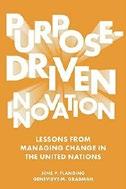
In this management treatise, economist Flanding and attorney Grabman argue that digital technology and shifting social norms are imposing changes that organizations must accommodate with clear goals.
The authors, both United Nations employees, offer that organization as a model of change oriented toward 17 guiding Sustainable Development Goals—from ending poverty and hunger to fostering clean energy. They recommend the seven steps of a change management framework developed by the UN Lab for Organizational Change and Knowledge, which include crafting a change strategy, building capacity, and achieving quick wins; all of this is illustrated with case studies drawn from UN agencies. These include the UN Department of Safety and Security’s drive to achieve gender parity in its ranks, UN Cares’ initiative to foster LGBTQ+ inclusion using surveys that have led to employee learning modules, efforts by several agencies to make administrative services more cost-effective by consolidating them in lower-cost cities, and a UN-wide move to recruit lower-level employees as change agents who advocate for climate measures or Covid-19 adaptations. From these examples, Flanding and Grabman distill principles for designing initiatives, highlighting the importance of sponsorship by powerful leaders, adapting past breakthroughs to new contexts, and communicating persuasively (noting, for instance, the value of videos that celebrate early successes). Overall, this is a book of granular management theory, steeped in academic prose and often focused on administrative minutiae: “[UNDSS] established an
intra-departmental gender coordination team, a senior management gender steering group, and the inclusion of gender-related objectives in manager performance and development goals.”
At their best, however, the authors write vividly of the human side of vast collective changes: “UN Cares’ reliance on [LGBTQ+] experts who had been discriminated against…gave voice to the previously voiceless and allowed them to tell their own stories….People and their stories are memorable, much more so than dry hypotheticals unmoored from real experience.”
Managers in the midst of organizational upheavals will find plenty of intriguing food for thought here.
A dense but informative primer on navigating large-scale organizational transformations.
Fleming, Ryan | Wellspring Books (189 pp.) $8.99 paper | May 21, 2024 | 9780971567641

Fleming’s historical novel traces Egyptian Pharaoh Akhenaten’s tumultuous reign as it coincides with the biblical exodus and the subsequent birth of Judaism.
The year is 1371 BCE, and Amenhotep IV is 10 years old. Even though he’s the youngest son of the pharaoh, children from the labor village bully him and tease him about the fact that his family worships Amen, “the hidden one who has no form.”
From there, the narrative jumps forward, largely centering on the long, turbulent history of Amenhotep IV’s reign, which only comes about due to the death of his pharaoh father and the tragic drowning of his older brother, Thutmoses, during a military campaign. A thoughtful man, Amenhotep IV often struggles with issues of spirituality: “Only my thoughts of awareness have meaning. It is as if the gods are looking at the world through my eyes. Is it one god, or several gods, or is it Aten—or something else beyond my
understanding, or simply a distorted illusion of my incidental soul?” He eventually concludes that Aten is the one true god—a radical departure from Egyptian polytheism. He changes his name to Akhenaten and rules Upper and Lower Egypt with his beloved wife, Nefertiti, at his side. Years later, their grown daughter, Meritaten, finds an abandoned baby, whom she takes in as her own and names Moses. Multiple storylines document the turmoil of Akhenaten’s unusual rule as political rivals plot schemes and assassinations. The events ultimately culminate in Moses’ leading the famous exodus from Egypt, resulting in a religious movement that will change the world forever.
Fleming does an admirable job of weaving together a multitude of happenings over the novel’s timespan. Readers who are unfamiliar with Egyptian history will see some familiar names pop up, such as Nefertiti and Tutankhamen. However, character names become increasingly hard to keep track of after they start to change in the middle of the narrative (Amenhotep to Akhenaten, Nebetah to Beketaten, Tutankhaten to Tutankhamen, and so on). It’s inconvenient, but Fleming does his best to make it as painless as possible by providing an extremely helpful family tree at the beginning of the novel, and by grounding the narrative in concrete historical touchstones. The dialogue flows naturally, with no attempt at oldfashioned dialect, and the author manages to keep up a brisk pace, despite dedicating a large amount of text to the ins and outs of Egyptian politics. The book even manages to branch out into thriller territory with the shocking murder of a key player. One of its most interesting aspects is Fleming’s personalization of historical events; Moses’ reluctance to accept his exile, for example, feels distinctly relatable: “‘We cannot leave
Egypt. It is our home. We were born and raised here for many generations.’ Moses stood up and put his hand on his chest. ‘I was raised in the royal family of Pharaoh Tutankhamen.’” It’s this sense of humanity that carries the novel and effectively provides context to a dramatic time in history.
An intricate tale that presents an intriguing blend of politics, romance, and betrayal.
Frerick, Austin | Island Press (248 pp.) $25.97 | March 26, 2024 | 9781642832693

A report on the dangerous and disgraceful state of the American food industry. In his nonfiction debut, Frerick provides in-depth profiles of seven American food companies and the families who own and run them. The author charts how the growth of these companies has exploded in the last century: Politicians have been bought, regulatory laws have been gutted or completely repealed, and “seven food industry barons” have each “built an empire by taking advantage of deregulation to amass extreme wealth at the expense of everyone else.” Frerick writes about the meatpacking giant JBS, noting that in 2017, investigators from the Brazilian government accused some of the company’s employees of bribing meat inspectors to allow tainted meats to be served in public schools. He also
A genuinely revelatory look at mass food production in the United States.
BARONS
discusses the Cargill-MacMillan family, owners of Cargill, Inc. (the largest private company in America), identifying their business as one of the “huge, regional-scale corporations owned by just one or a few families who use their political connections to overpower both local democracy and local businesses.” His overview of the tiny handful of companies that provide the vast majority of all kinds of food for Americans naturally includes an analysis of Walmart, the mega-company that, per Frerick, “has triggered a race to the bottom in every imaginable way” by playing a central role in shifting food-shopping to a “private, for-profit space.” Frerick’s prose throughout is both direct and masterfully controlled, with every point supported by extensive references and notes. This is no alarmist screed but rather a careful, systematic, and utterly damning demolition job—an exquisitely informed exposé. In these pages, the author unflinchingly explores the graft involved in suborning politicians, the guile used in circumventing the few regulations that do exist, the staggering cruelty of livestock farming, and sobering societal ramifications (“one’s income will increasingly be reflected in one’s waistline”); the result is quietly devastating.
A genuinely revelatory look at mass food production in the United States.
García Saúl, Carlos | St. Petersburg Press (346 pp.) | $32.95 | $17.90 paper | April 24, 2024
9781940300962 | 9781940300979 paper

García Saúl’s historical novel dramatizes real-life figure Lt. Bailey Ashford’s discovery of a successful treatment for anemia caused by hookworm infestation, the leading cause of death in Puerto Rico at the turn of the 19th century.
In 1898, Southerner Ashford, 25, is a bit disappointed to be sent to Puerto
Rico instead of Cuba as his first assignment as a U.S. Army Medical Corps doctor during the SpanishAmerican War. His deployment in Puerto Rico, however, turns out to have important consequences. Ashford provides critical medical support as the U.S. gains Puerto Rico from the Spanish at the wind-down of the war. Further, he meets his soon-to-be wife, and, most significantly, observes and then seeks to address the deadly anemia plaguing rural coffee plantation workers and their families. A hurricane, temporarily halting plantation operations, brings sufferers, notable for their pallor, as a “caravan of specters” into Ashford’s base city. The influx allows Ashford to ramp up his studies, aided by his interpreter, an aspiring microbiologist and son of a rich American based in Puerto Rico; the now city-based son of a rural family devastated by this disease; and an American nun working in a city clinic. Through analysis via microscope of patients’ blood and examination of their feces, Ashford establishes that hookworms are entering through the skin of tropical climate inhabitants who walk barefoot and don’t have access to proper latrines. He identifies and tests a low-cost drug treatment to expel these parasites, eventually getting support to bring the treatment to clinics in rural areas. Resistance is rampant, however, but then the “legendary White Eagle” bandit breaks the impasse, with a commission launched to stamp out this disease in Puerto Rico and elsewhere. In this highly engaging diagnosishunting / clinical trial–focused fictional account, Florida-based medical doctor García Saúl, a Puerto Rico native educated at Harvard and Yale who practiced medicine for 28 years in Massachusetts and Kansas, effectively makes his case that the achievements of Ashford, “not the subject of common discussions or island holidays,” deserve more attention and recognition. As with most such narratives, one sometimes wonders just how much artistic license is being exercised, such as in García Saúl’s rather melodramatic portrayal of
the White Eagle bandit, also a historical figure. Occasionally, medical terms (specifying the white blood cell type of eosinophils, for example) may baffle lay readers, although García Saúl is quick to explain these terms in the context of his plot. Readers will be transfixed by Ashford’s journey—and the magnitude of what he accomplished. García Saúl skillfully showcases the critical human factors involved in advancing science, detailing not only Ashford’s dogged persistence, but also the heroic decision by a rural family to take the drug treatment (even though one of their own died during Ashford’s early testing of it) and local hospital nuns’ bravery in administering the drug despite their superiors’ ban regarding it. “Imagine an often-fatal disease that affects 60 percent of our current population... imagine a rookie medical graduate stating that by simply taking a few pills, thousands upon thousands (millions, if we extrapolate to today) of people can be restored fully to health in a matter of days,” marvels García Saúl in his author’s note. Readers of this book are greatly aided in this imagining thanks to this consummate, lively fleshing out of Ashford’s landmark work.
A gripping, multilayered depiction of a transformative medical investigation.
Jim Crow New Orleans Became a Civil Rights Leader in Texas
Graves, Curtis M. | Bartleby Press (304 pp.) | $23.50 paper | Sept. 25, 2024 9780935437614

A Black civil rights icon and politician offers an account of his eventful life.
Graves, who was born in the late 1930s in New Orleans, recalls that his first clear memory was learning about the attack on Pearl Harbor in 1941. Although his parents were distraught that the surprise
assault meant that the country was going to war, he remembers his father sprang into action, serving as a neighborhood air raid warden: He knew that the port city he called home could be a potential target. This opening anecdote sets the tone in a book that not only honors the author’s family legacy (“As a child you learn so much sitting at the knees of your parents”), but also emphasizes that service to country begins at the community level and runs deeper than superficial displays of patriotism. While attending Texas Southern University in the early 1960s, Graves co-founded the Progressive Youth Association, a grassroots organization that was instrumental in organizing sit-ins, marches, and other civil rights demonstrations in Houston. In 1966, he joined Barbara Jordan and Joe Lockridge as the first Black people elected to the Texas House of Representatives; Graves would remain a representative until 1973. Overall, his conversational, down-toearth prose contrasts with the grandeur of his life as a trailblazing figure in Texas. It’s an engaging narrative in which deeply important figures of the 1960s, including the Rev. Martin Luther King Jr. and Andrew Young, make appearances. His remembrances are accompanied by a wealth of visual elements, including family snapshots, historical photos of Graves from the civil rights era, and images of campaign buttons and other ephemera. Graves’ life certainly makes for a compelling account, and it takes some fascinating turns (e.g., he would later work for NASA as the deputy director of civil affairs). What makes his book even more special is his skill at putting his family’s story in the context of a larger narrative, while offering insightful analysis of Black history in America.
A powerful and inspiring memoir of an activist.

Impellizzeri, Amy | WyattMacKenzie Publishing | $17.95 paper Oct. 29, 2024 | 9781954332492
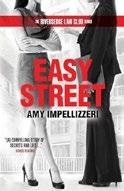
Six lawyers hide secrets…and so does the industrial building they team up to buy in Impellizzeri’s twisty thriller, one in a series.
The only thing more surprising than hotshot lawyer Archie picking up the check for an exorbitant dinner for six is his invitation to his lover, Felicity, and their four friends and colleagues to take a look at an old industrial building. “I’m about to change all of your lives,” he states. The plan is to purchase the building, which the financially strapped developer wants to sell at a loss and then renovate. “We can do something really creative here,” Archie tells his friends. “We can create something beautiful and special in that space.” For each member of the group, the opportunity seems golden. Ava announces she is taking a sabbatical from their law firm. “I’m going to live,” she says, “so this whole proposal comes at the perfect time.” For Holly, “suddenly a building we were all planning to buy together for barely a million dollars started to look like a nest egg. Our retirement fund.” But personal secrets and the building’s dark past threaten to shake the members of the group to their very foundations. This third installment in Impellizzeri’s Riversedge Law Club series is a standalone narrative that eschews courtroom drama for a compelling story of secrets and lies. (The Riversedge Law Club, an old boys’ network, is more a state of mind here than a driver of the story.) Chapters are told from the perspectives of the individual characters, fleshing out the players while deftly advancing the plot and planting little seeds of foreshadowing. As Holly, one of the six, asks in hindsight, “you might ask—if we had all known about that, would we have bought the damn building anyway?” Membership in the Law Club should get a boost from this well-told, character-driven story.
A historically astute tale with deep emotional impact.
Lagodzki, Karol | Milford House Press (228 pp.) $19.95 paper | Aug. 20, 2024 | 9798888192061
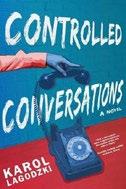
A n engineer working for an illicit labor union risks his life to secure their funds in Lagodzki’s novel.
In 1982, Antoni Adamczyk (he prefers to go by Antek) is an engineer in Frombork, Poland, living under martial law imposed by the Soviet Union. He worksforthelocalunionchapterofSolidarity— a group that opposes the Soviet occupation—as its treasurer, in charge of the $20,000 he’s securely hidden in Zygmuntowo. When he runs afoul of the authorities, he is imprisoned, though the money remains safe. Antek is given a fraught chance at freedom— he declares that this is all he really wants for himself and his future children—by Roman Stelmach, a major in the Bezpieka, the secret police. Roman allows Antek to escape so he will lead him to the money, a sum that will allow Roman to begin his life afresh in Rio de Janeiro. In this riveting tale, sleepy Zygmuntowo is the stage for an anxious, gathering intrigue—there, a telephone operator, Emilia Sokołowska, finds herself entrusted with the money and suddenly becomes a potential target of Roman and his henchmen as well. Emilia is an extraordinary character, an artfully drawn symbol of Poland’s humiliation under Soviet despotism— she is reduced to spying on the phone calls of others, cataloging their “sin, love, and banality” and reporting them to the police. She falls in love with her best friend, Kalina, who is being repeatedly raped by her father, Pan
Zalewski. Emilia hatches a plan to exact revenge upon Pan called Operation Pig, which is to be executed with another of her closest friends, Agata, also the victim of his sexual abuse. Emilia’s mother is a Communist Party functionary, and as a result she enjoys a certain measure of protection from the authorities, but Emilia is finally drawn into a predicament that her mother will not be able to extricate her from.
Lagodzki’s depiction of Poland’s plight is both subtle and luridly vivid; every significant character, including Roman (ostensibly an enforcer of tyranny), longs to be delivered into liberty. Roman might be the novel’s most complex character. In his youth, he planned on becoming an architect, but once his girlfriend, Bernadeta, became pregnant, he was compelled to drop out of school and find work with the Bezpieka; he’s an ordinary man endowed with an opportunistic nihilism. Emilia is a tantalizingly rich character as well, a moving example of the ways in which totalitarianism makes a private life distinct from political reality simply impossible. While the novel is politically savvy, the two main plots are essentially affecting love stories—the love of Emilia for Kalina and of Antek for his wife, Dorota. Here, the author captures the tender shock of electricity Kalina catalyzes in Emilia’s heart, setting off a conflagration of ungovernable emotion: “Did the desire to kiss Kalina make her a freak? As if the missed masses and holy communions had accumulated to mount a set of devil’s horns on her forehead. Horns or not, if she had any money, she would have given all of it to Kalina just to see her smile.” Lagodzki’s prose is as powerful as his plot is gripping. A historically astute tale with deep emotional impact.
Massey, Cal | JEF Books (228 pp.) | $17.00 paper | March 27, 2022 | 9781884097928
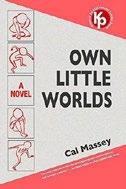
A pair of rogue journalists investigate an explosive terrorist attack in Massey’s political satire.
A bomb goes off in a Japanese container ship in the port of Jacksonville, Florida, killing four American port employees. The suspected bomber is Harold Dumas, a member of TRIBE, a politically influential organization with a right-wing populist agenda. The bombing comes at a particularly fraught time: In just four days, the incumbent Democratic president, Oscar-winning actress Cassandra Holland, will square off against the Republican challenger, a professional wrestler and would-be despot named Daniel “the Hammer” Hammerschmidt. A former newspaper editor turned swiftly deteriorating widower named Trammell stumbles upon a possible cover-up via his neighbor, a TRIBE member who was instructed to disavow any knowledge of Dumas shortly before the bomb went off. A story like this is just the thing to bring Trammell—whose days are primarily spent standing naked on his back patio and talking to his cat—out of retirement. Working at his side is Lucy Neale, a recently laid off investigative reporter with something to prove. Can the two of them uncover the truth behind this false-flag operation, which has the potential to upend not only the presidential race, but also America’s future? Told in brief, dense chapters, the narrative evokes the heightened postmodernism of Pynchon and Vonnegut. Massey has fun with the way truth and meaning have become squishy in modern life, as here, when he parodies a right-wing talking head: “We have learned to disregard the deranged narrative pushed by enviro-fascists, delusional Democrats, abortion aficionados, gender-bender offenders, supercilious celebrity hypocrites, and
fact-flexing liar-for-hire propagandists.” The targets of his satire are perhaps a bit obvious at this point—robotic call menus, car dealership commercials, digital media—and some of the humor is slightly stale. (There is a “covfefe” joke.) Even if Massey’s book lacks originality, his talent for language makes the reading experience worthwhile.
A sharp and cynical novel about how the death of old media has led to nightmarish politics.
Nayak, Hemant | Self (312 pp.) | $9.99 paper | Nov. 15, 2022 | 9798363880254

In Nayak’s urban fantasy series starter, a federal agent aligns herself with a powerful entity to combat an unspeakable evil. FBI Special Agent Kiran Patel is a rookie working a kidnapping case in Seattle. Her skills lead authorities to an abandoned church where a cult is holding 11 abducted children. However, a formidable supernatural being foils the rescue attempt, and Kiran’s veteran partner Anatol Zagorski is gravely injured. On the verge of death, Anatol gives Kiran an incredible responsibility—the binding of a different entity called “the Ghost.” Specifically, he gives her a new, tattoolike mark on her arm, created by the combined effort of angels and forces of Hell, which gives the younger agent certain powers, including the ability to exert some control over the lanky, silver-skinned, and hard-to-kill Ghost. As the ritualistic binding requires a “trinity,” Kiran gets help from local detectives Greg Reese and Enrique Gonzales. If they lose control, the Ghost could incite more terror than the villain who’s spearheading the abductions. Much of Nayak’s tale involves getting to know the enigmatic Ghost. He’s surprisingly charming, with a gleefully bizarre preoccupation with pie and cake and the ability to grant wishes, such as fixing Gonzales’ trick knee (“Do you wish it healed? Wish the speed of the wind and
lost youth?” asks the Ghost). Still, it’s Kiran’s tenacity that drives the investigation (and the narrative), as she makes ensuring the kidnapped kids’ safety her primary objective. She, the Ghost, and the detectives fall into a string of diverting action scenes, battling nefarious humans and paranormal beings. All the while, various details gradually come to light, including about what happened when Anatol bore the mark, the villains’ unsettling motive, and the Ghost himself. This story, which launches a series, builds to a blistering final act with a fury of powers on display and a distinct Lovecraftian flavor.
A vibrant cast and a tangled mystery fuel this kinetic supernatural tale.
Newland, Julianna | Fulton Books (50 pp.) $9.97 paper | Aug. 3, 2023 | 9798887313641

An offbeat guide to dealing with other people—at work and in life. In irreverent tones reminiscent of Irma Bombeck and Dave Barry, Newland writes about the spoken and unspoken etiquettes of the workplace, usually but not exclusively aimed at readers who are just entering that world. She advises such readers to become friendly with the boss’s secretary, for instance (“Don’t delude yourself into thinking you are more important than this executive assistant no matter what your title is,” she writes), and to avoid using company equipment for personal use, which includes “watching sitcoms on the business computer, trolling, or playing electronic poker.” She stresses developing a friendly but comprehensive professionalism on subjects from prepping for an interview to assessing the company’s pecking order. All of this advice is conveyed with a gentle, wry tone: “You do not come to work with your underwear worn on the outside of your clothes, your drawers on your head, or have certain anatomy on display,” she
writes about how to dress at work, “I don’t care what Madonna does.” The booklet’s short chapters use bulleted points and cartoons to make an already light book feel even lighter, but Newland is often serious and refreshingly candid under the humorous surface. She advises her readers, for instance, to take the exit interview process seriously: “This is not the time for whining, remember, you are heading out the door.” Likewise, she warns readers to be cautious at holiday office parties since “the office snitches also will be there, ready with their phone cameras.” Newland can be winningly self-deprecating. She confesses, “I can’t tell you where my muse is from, primarily because she rolls her eyes and tells me to ‘shut the hell up’ whenever I ask,” and this blend of goofy humor and real-world savvy is very effective. A smart, funny, and useful overview of how to behave at work.
Parker, Shannon M. | Riveter (336 pp.) $24.99 paper | Oct. 1, 2024 | 9798991306904

Parker offers a charming romance about a woman living and working in a lobster-fishing town on the New England coast.
The remote village of Christmas Cove, Maine, is home to the endearingly awkward Charlie Pinkham, who describes herself as a “female lobsterman.” (“Most people get it wrong,” she explains at one point.) Her life is one of comfort and familiarity, with long days hauling shellfish and pleasant times with grandmother Mem and best friend, Maia. She believes herself to be unsuited to romance, and she allows very few people past her emotional defenses. Then several changes
happen to her and those around her: Mem finds love; Maia asks Charlie to post on her blog, and her lobster-themed posts are a surprise hit; a handsome (but married) new tenant moves in next door; and Charlie connects with a stranger online and inadvertently sets in motion a local Christmas festival. Charlie navigates all these events with unease, struggling to accept the notion that her world could possibly expand beyond her usual boundaries. This cozy, feel-good romance explores the power of a small supportive community, the many kinds of love that lift us up and how fear can weigh us down, and whether it’s possible to find that rarest of loves—much like the one-in-100million “cotton candy” lobsters that Charlie describes in her posts. Parker brings the December Maine coast to vivid life with captivating, intelligent prose that highlights the Maine resident’s clear love of the region, as when she describes the village’s lights (“water can effortlessly transform beads of light into a fitful sea of stars”) and a new dawn: “Strands of silver float up from the twilight sea, churning pink as they reach for the sun.” Just as lovingly illuminated are her descriptions of the rhythms and tasks of lobstering. A heart-skipping small-town love story with tight pacing, captivating prose, and memorable characters.
Patrice, Rose & Jenn Kacmar | Current Words Publishing (226 pp.) | $15.95 paper Sept. 12, 2024 | 9781957224374

In Patrice and Kacmar’s political satire, Southern women fight for their community’s health and sanity. For 20 years, good old boy Terrence “Terry”
Benedict Monroe III has served on the Weaver County, North Carolina, Commission, most recently as its charismatic chairman. Terry is quick to dismiss the warnings of the state’s liberal governor when it comes to a mysterious illness affecting the county’s children. He prefers to stoke conservative fervor about gun rights and immigrant invasions and sleep with his disaffected mistress, Babs Marshall. As Babs grows fed up with Terry’s childish attitude, a group of more progressive women come together following one of Terry’s more incendiary rants. There’s longtime Weaver County resident Birdie Jefferson, pediatrician Deepa Kaur (who has come under Terry’s scrutiny for her Sikh faith), New York transplant Nina Gold, attorney Avery Lee, and Terry’s own assistant, Lucille Preston. Desperate to protect the town from racist attitudes and the growing health crisis, the women found Project Snowflake and strategize to get Lucille elected as Terry’s replacement. Terry quickly sees that he will have to up the ante to win, and the gun-toting loudmouth is ready to pull out all the stops. But with each woman bringing her own expertise and tenacity to the mix, Terry just may have met his match. Patrice and Kacmar are certainly enjoying themselves here: Dripping in Southern style, their send-up of bipartisan politics feels like a politically engaged update to Steel Magnolias. The misogynistic Terry is truly despicable, thanks to the authors’ smart depictions of his gun obsession and mommy issues. While each of the female characters is given her moment to shine, Birdie and Nina stand out most for their sharp one-liners (the Jewish Nina doesn’t shy away from expressing her distaste for “neighbors that think [I] killed Jesus!”). The narrative is certainly playing with stereotypes and oversimplifications and can feel a bit cheesy at times, but it’s all in good fun. Readers willing to get on board will find themselves satisfied by several poignant moments of female empowerment.
Larger-than-life characters keep this take on Southern politics entertaining from start to finish.
Philbrick, Margaret Ann | Emerald House Group (340 pp.) | $23.99 | $16.99 paper June 11, 2024 | 9781649606921 9781649604231 paper

An art student is drawn into a dark world of crime in Philbrick’s thriller. At the heart of this narrative is the great artist Caravaggio—the novel concerns the breadth of his work, in particular 1609’s The Adoration of Shepherds With Saint Lawrence and Saint Francis, which was stolen from the Oratorio della Compagnia di San Lorenzo in Palermo in 1969. Philbrick sets her novel in the 1960s and introduces readers to Orazio Bordoni, an art aficionado who moves to Rome and (at first) dismisses his new landlady’s warnings about the criminal element hanging out in the public square. In Rome, he meets Lena Condotti and quickly falls in love with her; he also encounters Don Giotto, a charismatic scion of the Sicilian Mafia who also excites a strong emotional reaction (“Something about him challenged me,” Orazio confesses) as he introduces Orazio to a world of crime and violence. The persistent surprise of this novel is its explicit depiction of evil—not only Caravaggio’s deeds, as chronicled in the story’s frequent Renaissance flashbacks, but also the hard, violent demimonde to which Orazio is introduced by Don Giotto. The author’s skill at drawing her characters is impressive; even the supporting players (especially Vincenzo, a curator of the Vatican’s Secret Archives, who believes his document work brings glory to God) feel entirely fleshed out. The main narrative is organized around an allegory of the New Testament parable of the Prodigal Son, but the story Philbrick tells is much more nuanced and moving than any simple moral lesson, and the characters she creates here are all
memorable. By the time a heartbroken Orazio wonders if he can graft himself back to the Bordoni vine, readers will be eagerly asking the same question. A gripping novel about the intersection of art and crime.
Poston Jr., McCracken | Citadel (320 pp.) $20.79 | Feb. 20, 2024 | 9780806542799
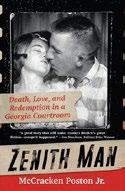
A firsthand, true-life account of an attorney and a client both down on their luck and facing long odds for success.
In the early autumn of 1996, former Georgia state representative McCracken Poston Jr. was putting the finishing touches on a losing congressional election bid. Nearly a year later, Ringgold, a small town in the same county, was upended by a strange murder case. Alvin Ridley, a reclusive and odd-seeming TV repairman, placed a call to local police from a payphone, telling authorities he thought his wife Virginia had “passed out.” When they asked if she was breathing, Alvin said no, and it wasn’t long before the law began to suspect foul play. In the period between his wife’s death and his eventual arrest, Alvin ran into and then began badgering Poston, so much so that the failed politician—who had restarted his law practice upon leaving the state legislature for civilian life—agreed to represent Alvin, should it come to that, if Alvin promised to stop calling in the middle of the night and waking up Poston and his new wife, Alison. Once Alvin was arrested, the pair set about proving his innocence—not only of her murder, but also of the charge that, prior to Virginia’s death, Alvin had imprisoned her for years. Defending Alvin was an uphill battle from the start for Poston, who had to routinely deal with outbursts and confusing behavior from his client, who once
claimed—truthfully, it turns out— that he missed a court date because of a “giant spider bite.” Poston remained a loyal advocate for Ridley, but even he sometimes could not help but lose patience and lash out; it is in these moments between attorney and client that readers connect with the humanity of each man. At one point, Poston lost his cool and berated Ridley for his nonexistent hygiene and dirty clothes, insisting that he shower and change. Ridley arrived the next day “literally, wearing the same clothes again from yesterday. I was almost happy that he’d ignored my outburst about his hygiene. I still felt bad about it.” As the trial began to take shape after a critical continuance, Poston was finally allowed into Ridley’s home, where he began to realize that he—and the town writ large—may have misunderstood the person they called the “Zenith Man.”
Readers will sympathize with Poston’s eroding patience and feel endeared to him for regretting his harsh treatment of his client; they will likely develop a begrudging respect for Ridley for not conforming to someone else’s conventions. By turns a humorous character study and a searing examination of the blind spots in the U.S. justice system, Poston’s work is an emotionally affecting page-turner sure to be loved by fans of true crime and courtroom procedurals. While many works centered on trials run the risk of becoming either too forensic and emotionless or too riddled with bias and attachment, Poston’s book manages to maintain an effective balance. Readers will both identify with and trust this narrator and are sure to enjoy riding alongside him through what must have been the strangest case of his career.
A propulsive legal drama with a unique case, an unforgettable client, and a flawed but hardworking attorney.

Rahder, Barbara Sanford | FriesenPress (342 pp.) | $39.99 | $25.99 paper Aug. 2, 2024 | 9781039198838 9781039198821 paper

A girl comes of age at the center of the 1960s counterculture in Rahder’s debut memoir. In 1966, at the age of 16, Rahder moved out of her family’s East Bay home and into her sister’s apartment in San Francisco. She was thrilled, given that the family home wasn’t exactly a place of love—her father once yelled at her for crying too much over her mother’s death—and her sister’s neighborhood of Haight-Ashbury was quickly becoming the center of America’s countercultural movement. “My life began that summer,” Rahder remembers. Her first morning in the neighborhood, Jefferson Airplane played a concert in the middle of Haight Street. A few months later, tanks rolled through the blocks following a riot. With her radical older sister, Susan, as her guide, Rahder was in for a crash course on drugs, race, and politics. Her father sold the family house and moved to the neighborhood, allowing Rahder to remain past her high school years as the Haight barreled through the late 1960s, and she became more involved in the era’s protest movements. Chronicling her time vagabonding in Europe and stints on communes, houseboats, and in jail, Rahder’s memoir touches on nearly every aspect of the hippie experience. The author’s simple prose captures the idealistic disposition of the era, as when Rahder recalls one mind-opening day at the park: “Jim told us they were ‘peace pills.’ I didn’t
know what he meant, but he had three pills. After he and Janet each took one, I decided I might as well take one, too. Then we all lay in the grass in Buena Vista Park and watched the clouds high overhead. We didn’t talk much, each absorbed in thought, until the fog rolled in.” This era and its concerns have been well covered, particularly in the memoir genre, but Rahder has a better claim to it than most. Always within a few blocks of the beating heart of the scene, she eschews self-mythologizing in favor of thoughtful vignettes and succeeds in turning many hippie cliches back into fresh moments of truth. A revitalizing look back at the Haight’s hippie era.
Riley, T.S. | Self (252 pp.) | $17.14 paper June 21, 2024 | 9798218406721

In this family drama, a fifth grader finds his life turned upside down following the death of his mother.
As a child in Georgia, Imari loves to spend time at a small pond near his home with his devoted mother, Imani. They spend their time there strengthening a deep bond based on imaginative stories and escaping Imari’s distant, angry father, George. Riley brings readers into their world by alternating between their two perspectives. Imani reflects on watching George slowly change from a sweet man to the cold and controlling figure she now tries to placate. (“Imari was my world now, but I was careful not to let George feel that.”) We watch Imari, who’s Black, slowly befriend Andrea, a white girl who has just moved
A highly useful, invigoratingly people-centered approach to digital marketing.
DIGITAL THREADS
into the neighborhood. (Riley describes the two of them as “at lunch and sitting alone together” in one of the many tender portrayals of their budding camaraderie.) Imani’s pregnancy leads to the discovery of spreading ovarian cancer. In one of her last acts of motherly love, she convinces Andrea’s mother, Mary, to promise that she will help save Imari from George after she is gone. But no one could have anticipated the way several bullies would viciously attack Imari—or his drastic attempt to fight back. Grief floats all throughout Riley’s novel, which makes for a heavy read, but the beautiful, delicate prose helps bring balance. Riley uses Imani’s total devotion to her son, Mary’s willingness to help him, and even exploration of George’s troubled perspective to provide some profound moments of hope. The subplot of vicious bullying punctuates the novel with surprising action and suspense, but it almost feels like too much—too much devastation for poor Imari and too much violence for a story that otherwise deals in subtler, softer tones. But those wanting a profound emotional journey will find one here.
A somber, affecting story full of emotional upheaval.
Schaffer, Neal | PDCA Social (306 pp.)
$19.95 paper | Oct. 1, 2024 | 9798990612747

A comprehensive guide to managing digital marketing. In these pages, digital marketing consultant Schaffer, whose last book was The Age of Influence (2020), describes the altered nature of the consumer world, particularly in the wake of the Covid-19 pandemic. He notes what many have cited as the pandemic’s effects: “the acceleration of the digital consumer,” the primacy of digital outreach, and the overwhelming importance of handling online marketing effectively. To this end,
with the goal of establishing a Digital First strategy, he proposes a “new playbook.” In this playbook, Schaffer recommends that businesses and entrepreneurs concentrate on forming and strengthening “Digital Threads,” a system of online outreach: If this system is implemented correctly, it will greatly strengthen a business; if ignored, it could lead to “the risk of being left behind in what worked yesterday.” He breaks down all the various Digital Threads that new marketers must keep in focus, such as search engine optimization, which has advanced enormously from the old “keyword stuffing” state of pre-Covid-19 days. He touches on the use of artificial intelligence but warns his readers that Digital Threads is an intensely personoriented plan: “You should not lose the soul of how you appear to your customers and prospects,” he cautions. His chapters are distilled into key takeaways that help the reader to clarify the large amount of advice and information they’re getting here (for example, “Building relationships with algorithms is about trustworthiness and authority,” and “Backlinks create validity that your content is useful and trusted”). Absolutely everything is analyzed in terms of enhancing business.
Schaffer’s approach is a winning mixture of the personal and the professional. He opens his book by reflecting on how the pandemic affected his own business as an author suddenly deprived of book tours, book signings, readings, and so on. And throughout the book, he convincingly stresses the strongest, most important aspect of his Digital Threads strategy: people, actual personal connections (hence, his cautions about AI). When discussing the uses of social media (the book’s strongest narrative component), for instance, he advises readers, “There is no better way of becoming friends with the [social media] algorithm and exposing your business to more social media users than by feeding the algorithm what it wants: Platform Authentic Content.” He convincingly urges his readers to “embrace” social media algorithms as a means of connecting with actual human beings. “You’re telling your brand’s story,” he writes, “and you’re telling the story of the consumer within the frame of your brand” (“show, don’t sell,” as he puts it). Even on such
quotidian subjects as building an email list, he stresses that mere accumulation of data is not enough; companies and entrepreneurs must “turn these connections into conversations.” Throughout his guide, Schaffer directs readers to the downloadable electronic “workbook” that accompanies his main text, which not only distracts from, but also undermines, the sufficiency of the main text itself. But even so, that text abounds with practical tips and insights born of experience. Schaffer is entirely right that many small businesses only hesitantly and incompletely dabble in the digital side of their marketing—a Facebook post here, an email blast there —and his book provides a bracing corrective to this negligence. A highly useful, invigoratingly people-centered approach to digital marketing.
Seward, Elmer | Self (219 pp.) | $19.95 $9.95 paper | Feb. 22, 2024 9798880316663 | 9780692234495 paper

Two people tormented by their pasts meet in the Outer Banks on the anniversary of a devastating storm in this psychological romance.
Trista plans to vacation on North Carolina’s Outer Banks. She is haunted by the end of her marriage and death of her daughter, Angie, and this trip is part of her grieving process. She’s picked a good place to be vulnerable; even the waitstaff at a seafood restaurant sense her fragility and respond kindly (“The waitress lingered a second longer than she might normally. ‘It’s a man, isn’t it?’”). Trista gets to know some of the locals, especially her neighbors— Sissy and her brother, ex–Coast Guard officer Duck. He’s a handsome former swimmer, but, alas, he’s immature and often drunk, a “frat boy trapped in a grown man’s body.” Other people despise him. One man calls Duck a “murderer,” and many blame him for the death of his high school best friend. As the plot
unfolds, the mysteries of what happened to Duck and to Trista’s daughter unravel, and the two become linked when Trista hires Duck to sail her out to sea on the fifth anniversary of her daughter’s death. Meanwhile, a deadly hurricane looms on the horizon. Seward’s novel works well as a thrilling tale of survival and love. Duck and Trista have good chemistry and bond over their shared traumas. The prose, however, while readable and page-turning, often strays into predictable territory (e.g., “he still carried the weight of the world on his shoulders”). Still, Seward builds tension as the characters fall for each other and face the brunt of the storm, which gathers force throughout the novel. This tension buoys a novel that otherwise hits some expected story beats. A compelling romance and high stakes help elevate this novel.
Starling, Drew | Eerie River Publishing (164 pp.) | Nov. 13, 2024
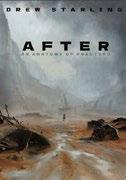
In Starling’s post-apocalyptic novel with SF elements, a nameless messenger carries communications between survivor settlements in a dangerous American West. It’s been 11 years since clawed, flesh-eating, giant aliens attacked Earth, and their ever-present flying disks continue to patrol the planet. Electronic technology and communications were wiped out by electromagnetic pulses, and billions died. Now the air and water are tainted, and humans in “converter” breathing masks subsist in scattered fortifications or exist independently as bandits and loners. The nameless hero (who, readers eventually learn, is ex-military) traverses ruins of the western United States as a self-appointed messenger, carrying notes from desperate holdovers from one redoubt to another. In self-imposed exile, she’s tortured by grief over the loss of her fighter-pilot husband and their children; she also faces survivors
who embrace lawlessness, nihilism, or cannibalistic cultism. Starling’s compact work reads like a splatterpunk version of Cormac McCarthy’s grim novel The Road (2006), combined with the second half of H.G. Wells’ The War of the Worlds (1898); like the Martians in the latter work, the extraterrestrials in this one howl continuously, and like Wells’ narrator, Starling’s protagonist is nameless and navigates a psychological and physical landscape of devastation. Scattered supporting characters have disturbing, unhelpful ways of dealing with humankind’s fall. A sickening cyborg called “the Crone” even manages to raise a barbaric army that’s as inhumane as the alien invaders: “What seemed like hundreds of them followed over every angle of the rim, crazed and swarming warriors carving through the darkness and staining the black night red. Some wore exotic military uniforms, gaudy jackets flared with ribbons of superfluous rank and trophies of the slain.” The details of the invasion itself are left for readers to supply, which effectively puts the emphasis squarely on the immediate mood. Along the way, the author gets across a sense of fear of what lies around every corner, and reveals the visible and invisible scars of the traumatized. Somewhat familiar but unsentimental speculative fiction that’s wire-taut and emotionally rich.
Sunshine, Wendy Lyons | Health Communications (352 pp.) | $13.94 paper | May 28, 2024 | 9780757324956

A guide for compassionately helping puppies, rescue dogs, and older traumatized canines live their best lives, based upon neuroscience and strategies developed for aiding at-risk children.
At the time the highly respected parenting guide The Connected Child: Bring Hope and Healing to Your Adoptive Family (2007), coauthored by Sunshine, was about to be published, the author adopted a fragile puppy. The tiny brown pup, part of a litter born behind a gas station, was but several weeks old; the puppy had been separated from her mother and siblings too early to learn any rules of the jungle and was painfully frightened, dehydrated, and loaded with worms. After dealing with the medical issues, it was time to teach Hazel, as the increasingly wild brown ball of fluff came to be called, how to become a good canine citizen. But, as Sunshine writes, “Puppy training guides failed me. Nothing in their pages explained what to do with a scrambling, out-ofcontrol bundle of teeth and claws.” And then she was struck by a thought that has resulted in this lucid and informative volume: Perhaps the pages of The Connected Child held valuable insights for raising a puppy. (Like pre- and non-verbal children, dogs communicate their needs to anyone who pays close attention.) Taking a calm, nonjudgmental approach to understanding Hazel’s behavior in terms of her underlying neurological and emotional needs— much as she would with at-risk children—the author began rewarding the pup for “good” behavior and giving her “do-overs” for her mistakes. Sunshine’s guide adopts the approach of “therapeutic parenting,” in which the pup is given the benefit of the doubt. Despite copious neurological and biological discussions, the text is easily understandable—it’s an approachable compendium of scientific research and fascinating “reflections from the field” case studies from like-minded experts. A bonus is the inclusion of surprising and intriguing behavioral tidbits, such as the small-scale study conducted in a rescue facility showing that dogs who raised their inner eyebrows were adopted more quickly. The techniques advocated here are designed to offer puppies (and difficult older dogs) patient, compassionate instruction that relieves their anxiety and leads to close bonding between canine and human. An articulate, highly informative, and enjoyable puppy-parenting primer.
Terrick, Brendan | FriesenPress (222 pp.)
$32.99 | $13.99 paper | July 5, 2024 9781038321954 | 9781038321947 paper
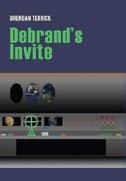
An office worker enjoys a surprisingly laid-back alien abduction in Terrick’s SF comedy. It’s a typical day for DeBrand
O’Donnell of Fort Wayne, Indiana, before his girlfriend unceremoniously dumps him via email. Things immediately go from bad to worse when a strange British woman knocks him out with a Diazepam-laced cup of coffee, and he regains consciousness on a medical examination table. He’s aboard a spaceship that’s orbiting Earth and that belongs to Bruno—an alien being who’s essentially a giant praying mantis. This playful, amiable extraterrestrial, who hails from a species of “chroniclers,” invites DeBrand to be his new emissary to Earth. DeBrand would replace Liza, the British expatriate who drugged him; she’s been Bruno’s emissary for centuries, courtesy of the “Rejuvenator,” which has allowed her to live multiple lives over 700 years or so. Although DeBrand is reluctant to take over this job, Bruno asks him to be a witness at his wedding. Currently, the alien’s betrothed is on another ship and unexpectedly delayed, which allows DeBrand to revel in the perks of Bruno’s spacecraft. They include an A/V lounge with an endless supply of music, and whatever foods or alcoholic beverages the Earthling can imagine. In the meantime, the abductee bonds with Bruno, as the two enjoy the same movies and TV shows—including, most notably, SpongeBob SquarePants. DeBrand is thrown for a loop, however, when Bruno’s future spouse isn’t the only being arriving for the ceremony; there’s also someone whom DeBrand knows quite well and doesn’t necessarily want to see again.
Terrick’s easygoing tale focuses on humor above all else. Accordingly, there’s minimal conflict, as DeBrand, who narrates, excessively details his time on the spaceship’s toilet, for instance, or details mundane scenes of the ship’s passengers
playing cards. The SF elements, however, are entertaining throughout; along with the Rejuvenator, Bruno checks out something called a “materializer,” while the communicator on his arm inconveniently transmits his thoughts and dreams. Pop-culture references are abundant, as DeBrand namedrops albums and songs and quotes films and TV shows. There are serene moments, too, as when DeBrand, Bruno, and Bruno’s betrothed talk about their pasts (although Liza sadly provides next to nothing about the many countries in which she spent lifetimes). Much of the comedy comes through characters’ banter, which features copious riffs on DeBrand’s name; some are clever (as when he’s called “Mr. Brand Flakes” during breakfast), and a few aren’t (such as “Brandkenstein”). Although the narrative is generally quite simple, some parts are confusing or otherwise lacking. Bruno, for instance, states that he’s been orbiting Earth for 20 cycles, with each roughly equivalent to 38 Earth years; that’s about 760 years total, and a far cry from Bruno’s later estimate of 1,500 years. Similarly, readers learn disappointingly little about the protagonist’s workplace or the Fellowship of Interstellar Worlds for which the alien gathers information. Still, DeBrand’s relatively quiet adventure takes some fun turns, leading to a fine ending that befits the overall tone.
An uneven but colorful and whimsical outer-space tale.
A Woman of Marked Character: The Imagined Portrait of Sarah Ridge Paschal Pix, Book One: 1812–1848
Webb, Nancy Stanfield | Crimson Peony Press (408 pp.) | $35.99 Nov. 19, 2024 | 9798989609802

T he first book in a two-part historical fiction series about Sarah Ridge Paschal Pix, a woman from a prominent Cherokee family in the 19th century.
Ridge Paschal Pix was born in what is now west Georgia to Major Ridge, a prominent leader of the Cherokee Nation, and his wife Susanna. When the U.S. Congress passed the Indian Removal Bill of 1830, Ridge and his family became convinced that removal west was the only way to protect their people from the violent incursions of Georgian settlers. Sarah’s father, Major Ridge, and her brother, John Ridge, were among the Cherokee people who signed the Treaty of New Echota of 1835, which Cherokee leaders, such as John Ross, deemed a betrayal. Sarah and her new husband, George Paschal, joined her family on their journey to Arkansas along the route that would later be called the Trail of Tears. When John Ross’ party arrived, they blamed the Ridges and the Treaty Party for their losses and assassinated Sarah’s father, brother, and cousin. Well educated and decisive, Sarah took on the role of family matriarch, intent on avenging her fallen kin, while managing her own household amid a frequently fractious marriage. This novel covers her life up to 1848; an upcoming sequel will cover the second half. In her historical novel, Webb blurs fact and fiction, animating the subject and era. The first half of Sarah’s life, which this book depicts, occurs during the most tumultuous and tragic chapter of Cherokee history. The author thoroughly limns the years of politics and strife to better contextualize Sarah’s narrative, and she includes many passages of Sarah speaking in first person: “When John Ross gained the doorway I stepped forward as if to shake his hand. Did I see fear in his eyes? I pulled from my sleeve a thorny rose. I looked straight into his face and softly said as I had on his rose-covered porch, ‘Your arrogance killed my family and our people!’” For the most part, this approach is done well, but the result often reads like nonfiction, without the intimacy of a fully realized protagonist. Still, for such an important period of history often overlooked in historical fiction, this is a welcome addition. A portrait of a remarkable woman who played an outsize role in Cherokee and early American history.
Wehle, Kim | Woodhall Press (322 pp.) $22.95 paper | Sept. 2, 2024 | 9781954907508

Wehle delivers a critique of the unchecked presidential power to pardon. The author astutely observes that when the presidential power to pardon was ratified in 1788 (enshrined in Article II of the United States Constitution), it granted more power to the executive branch than was currently wielded by King George III. While generally unchallenged, the power is a peculiar one when understood within the context of a constitutional republic characterized by governmental limitations and checks and balances—Wehle describes it as “a gaping level of unconstrained power.” Of course, there were reasons for this remarkable endowment of prerogative; it allows for the expression of mercy and the granting of amnesty, and the ability to “to address fragile political situations that traditional diplomacy or the rule of law cannot outpace” can be politically expedient. However, Wehle convincingly argues that the “enormous risks of abuse” outweigh the potential benefits, asserting that such a mandate naively assumes a “fairness and integrity” with respect to the one who exercises it. In this intellectually challenging study, the author traces the complex history of the pardon power—as exercised by kings, parliaments, and clergy—and diligently charts its excesses. She recognizes the great hurdles to reforming it, chiefly the need for a constitutional amendment. There are ways to curb its abuse, she avers, including making pardon power subject to increased transparency and constraining the lobbying for pardons from presidents. Wehle’s prose is impressively lucid and accessible, particularly welcome virtues given the technical nature of the subject matter; none of her arguments presuppose that readers have specialized backgrounds in
either law or American history, though either would be helpful. At the very least, she poses a provocative challenge to what is often seen as an “unlimited and sacrosanct” convention and manages to “reveal that the pardon power deserves attention and cannot be whisked atop a pedestal on the blithe assumption that the Constitution (for presidents, at least) unequivocally says this power is acceptable.”
A thoughtful and painstaking work of legal scholarship.
Woeppel, S. L. | River Grove Books (314 pp.)
$16.95 paper | Sept. 10, 2024 | 9781632998774
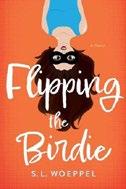
A salty wonder woman learns to open up in Woeppel’s unconventional superhero romance.
Birdie Bowden is tired of the sexism and public scrutiny that comes with being the “Chicago Bird,” her city’s official superhero. She is losing patience with “the weight of responsibility” and “always being careful who is watching.” After a public relations disaster during an attempted rescue of a drunken baseball fan, Birdie is put on leave. She retreats to the lakeside suburb of Grove, where she reluctantly attends her mandated therapy sessions with the soft-but-tough Dr. Marly Evans. She begins to reckon with the traumatic relationships from her past (neither her mother nor her ex-fiance could handle her superhuman abilities). Another of Dr. Evans’ patients, the spunky Evie, takes Birdie under her wing and gives her a place to stay. Evie, a recovering cancer patient trying to repair her marriage, pushes Birdie to open up and enjoy herself. Their friendship deepens, as does Birdie’s prickly relationship with Evie’s brother, the annoyingly grumpy but devastatingly attractive Aiden. As Birdie grows closer to them both, she starts to challenge her assumption that her abilities prevent her from forming attachments to ordinary humans. As her
leave comes to an end, Birdie must decide if she can return to a job that requires her to tame her fiery character and if her fledgling romance with Aiden can survive once he knows her true strength. Woeppel cleverly uses a superhero protagonist to explore the constraining expectations for working women and the ways in which society discourages unchecked displays of female strength. Birdie’s grit and foul language make her an unusual but very appealing romantic hero. Likewise, Aiden has an openness and ease that make him more engaging than the average gruff, prickly love interest; the chemistry between these two tough cookies is satisfyingly steamy. Extroverted and zany Evie makes for a great best friend—her struggles in the aftermath of her illness lend her a depth that adds to the emotional complexity of the story. Cozy cottages, quirky summer festivals, and comfy Adirondack chairs provide a picturesque backdrop for Birdie’s new beginning. A tough-as-nails hero and a clever take on female empowerment add layers to a fun, sexy story of self-discovery.
Star
The Lafitte Affair: A Bruneau Abellard Novel
Woolworth, Norman | Level Best Books (326 pp.) | $17.95 paper Aug. 20, 2024 | 9781685126988
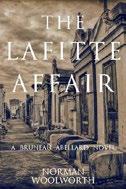
Woolworth’s crime novel serves up a 200-year-old mystery alongside one from the present. As this debut novel—the first in a planned series about New Orleans antique dealer Bruneau “Bru” Abellard— begins, Bru gets a call from Detective
Thibodaux “Bo” Duplessis of the New Orleans Police Department. Bo is Bru’s childhood pal and a “friendly antagonist.” A lifelong bachelor and history lover, Bru helps Bo, who’s married to “saucy eyeful” Angeline, investigate the thefts of valuable items. This time, it’s a grave that’s been robbed, and it’s unclear what was taken. The grave belongs to actress Jane Placide, who died at age 31 of Yellow Fever in 1835. Bo asks his friend to research Jane, hoping to determine what could have been buried with her that was worth breaking into her tomb to steal two centuries later. A leading actress of her time, Jane had won the admiration of theatergoers and the hearts of potential suiters. There are indications that one such admirer could have been Jean Lafitte—pirate, smuggler, slave trader, and a hero of the Battle of New Orleans. Bru, aided by his former good friend, one-night lover, and historian Sallie Mae Maguire, tries to tie Lafitte to Jane. Running parallel to these efforts is the search for the thieves and whatever was stolen. In this mystery, modern-day grave robbers and long-ago star-crossed lovers are skillfully intertwined. The historical backdrop is fascinating, and the descriptions of contemporary New Orleans are on the mark (Woolworth namechecks famous NOLA restaurants such as Manale’s and Commander’s Palace). Evocative descriptions of the city and its surroundings, including the “vast network of sinuous waterways carving their way through swaying oyster grass,” weave throughout the book. There is humor (“she long ago mastered the art of speaking authoritatively on topics about which she knows little”) as well as sweetness (Bo’s kids get a kick out of Bru using “his highly trained nose” to guess what’s for dinner). Woolworth’s novel is a well-crafted mystery that is beautifully written, educational, and all-around entertaining.
Ça c’est bon!



Devshree Golecha & Kiara Golecha
Leah Buley & Joe Natoli




“A
lush, beautifully written novel about trying to be a person in our strange world . . . Pick this one up for its exquisite characterization, decaying settings, and a dash of Southern gothic horror.” — e New York Times Book Review on sale now
“Are you ready to embrace bogcore? . . . The perfect way to kick off the spooky season.”
—AV Club

“A hauntingly compelling gothic.”
—People
“A terrifically creepy Appalachian fairy taleturned-horror story.”
—Shelf Awareness







